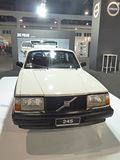Billed as the largest Classic Car Show in Italy, the Auto e Moto d’Epoca which is held in Padova (Padua) has been a fixture on the events calendar since 1983. I believe the first of these events, nearly 40 years ago were much smaller than the show that you experience now, which encompasses more than 4500 display vehicles from a mixture of Car Clubs, Manufacturer’s Heritage collections and dealers, as well as a vast autojumble. It’s enough to fill all 15 halls at the vast Fiera site, taking advantage of the large areas of outdoor display space between the buildings. The event is held over four days around the end of October. Dealers tend to be the first to attend, to snap up anything that catches their eye, though I’ve always noticed that prices are not often in what you would call the bargain end of the market, which is perhaps just as well, otherwise I could easily have found temptations to buy all sorts of automotive delights. Over the course of the event around 100,000 people pass through the entrance gates, but thanks to the layout of the site, it rarely feels anything like as busy as that. Whilst this Show does not quite have the glamour and glitz of world-renowned events such as Retromobile or the biggest of the German events, it more than makes up for this with the variety of cars that you rarely, if ever, see anywhere else. There’s a strong Italian bias to the displays, as you might expect, with vast numbers of historic Fiat, Alfa Romeo and Lancia, and every year there are also any number of much rarer coachbuilt models, several of which are cars I’ve never even heard of let alone see before. It is one of my favourite events of the year. Here then is what I found at the 2018 edition of the show.
AT THE AIRPORT
As in previous years, I chose to fly into Bologna airport, and to make my base for the weekend a hotel just a few km away. This does mean that there is a slightly longer journey to Padova the following morning than I would have were I to fly into Venice, but it is that much nearer to other attractions in nearby Modena for the Sunday. As you head out of the airport, by the door which takes you to the car rental garage, and indeed the taxi rank, you pass a display area used by the Lamborghini factory. An awful lot of people pause, stare at the cars, and take a couple of photos before heading on their way, and I confess that I did exactly the same. On this occasion, the two cars on show were a Huracan Performante and the new Urus.
EN ROUTE
Parking for the event is in a facility about a 10 minute walk from the Fiera itself, and it is not uncommon to see something of interest whilst making that walk. This year it was a rather nice Citroen Visa that caught my eye, and of which I was able to get a few photos. It was the only Visa I would see during the day.
ABARTH
There were far more classic Abarths here than usual, with not just the more common models offered for sale, but a special dealer display with all manner of different models boosting the numbers, as well as some rarities scattered around the rest of the show.
The first Abarth 750 GT appeared in early 1956, and was the first Abarth product to use standard Fiat bodywork, that of the little 600 saloon. Fiat delivered these cars incomplete, to make it easier and more cost effective for Abarth to carry out their performance modifications. Rather than the 633 cc original or Abarth’s own 710 cc model, the engine now displaced 747 cc thanks to a one millimetre wider bore and a stroke increased by four millimetres. Sharper cams, lighter flywheel, a bigger carburettor, and a myriad other traditional tuning tricks were employed; as a result power nearly doubled, up from 21.5 to 40 bhp. Claimed top speed was 80 mph. As well as the “standard” car, a special model was then built with a Zagato body, known as the Fiat Abarth 750 GT Zagato. It was launched at the 1955 Salon di Torino. The original model was also offered in a more luxurious variant for export (called “America”, as it was almost strictly meant for the United States) and a stripped down model with lower, uncovered headlamps and smaller taillights for the domestic Italian market. The “America” also has a different layout around the rear license plate. The all-aluminium bodywork has Zagato’s famous “double-bubble” design and Abarth’s tuned derivazione engine with 43 bhp. Aside from the floorpan, not much of the Fiat 600 remains in use for these cars. It had a top speed of around 90 mph and proved popular. Around 600 were sold. By the time of the appearance of the Abarth Zagato Record Monza 750 Bialbero, the bodywork had been unified into a separate model with a rather large hump on the engine lid, made necessary by the taller twin-cam motor. There were then three distinct models 750 “Double Bubble”, 750 Record Monza and 750 “Sestrieie”, this last having a single cam pushrod engine and the majority built with a steel body and a very small number of Alloy cars, just one of which is known to exist today. he 750 GT Bialbero model appeared at the 1958 Turin Show; along with various alterations to the bodywork, it had the new twin-cam engine with 57 bhp at 7000 rpm. The first series constituted 100 cars, enough to homologate the car for the Gran Turismo competition category. The “Record Monza” was the most successful racing Abarth in the USA under the Franklin D. Roosevelt Jr Racing team, (Abarth cars winning over 700 races worldwide), including both Sebring with the 750cc Bialbero engine and Daytona under 1000cc races in 1959 widely believed to have had the first 982cc Bialbero engine. The Sestriere had upright headlights and two very large air intakes on the engine lid much wider than a double bubble. The Sestriere was believed to be the last model produced for Abarth by Zagato, due to disagreements between Abarth and Zagato, so Abarth developed the 750 GTZ with a twin cam engine and the body evolved by Sibona and Basono into the Bialbero 700 and 1000 models. which were first seen in 1960. They are equally rare these days.
Displayed alongside it was this recreation of the original 1959 Abarth Porsche Carrera GTL.
A little older is this 207A. Near the close of 1954, Abarth began designing a Fiat 1100-based two-seater roadster. A new steel platform chassis was designed and attached to a Fiat 1100 suspension, comprised of independent front trailing arms and a live rear axle. The engine received modifications including an increase in the compression ratio, new intake and exhaust manifolds, and dual Weber carburettors. Power improved from 36 to 66 horsepower. The roadster kept the Abarth naming policy, and carried the name 207A. It was unveiled to much applause at the 1955 Turin motorshow where it was presented in coachwork provided by the legendary Carozzeria Boano and finished in a two-tone colour scheme. The body was a rolling advertisement for the Abarth Company, with two distinctive stainless steel exhaust pipes on the right-hand side of the car. A total of ten orders were secured. In 1955, chassis number 001 made its racing debut at the 12 Hours of Sebring. After an illegal refueling, the car was disqualified. This was unfortunate, since the car had been leading its class. Though the 207A had most of the ingredients needed to succeed, it failed on a few criteria, mainly its heavy frame and high sticker price. Carlo Abarth reluctantly returned to tuning cars; the total number of racers cars constructed is unknown, but believed to be ten.
Most of the support vans were based on contemporary Fiat models and here were a couple of examples.
This 850 has an Allemano body. The car was first shown in the spring of 1960, with an open-topped body. The engine is a Fiat-based 850 single-cam unit which develops 51 bhp at 6,000 rpm. Overall length is 3,600 mm (140 in), overall width is 1,420 mm (56 in), height is 1,200 mm (47 in), and the weight is 610 kg (1,345 lb). The claimed top speed is 154 km/h (96 mph). A coupé model was also later developed, more elegant and comfortable than Zagato’s version but heavier and less sporting. Allemano’s bodywork was later also made available with the larger 1000 engine. This bodywork was also used by Cisitalia’s Argentinian daughter company, who built the car in a variety of models with 760, 800, or 850 cc engines.
Although his competition cars had been immensely successful, what Carlo Abarth lacked was a practical road-going GT car suitable for daily use. The model that filled this gap in the range was the Monomille (single cam, 1,000cc), introduced in 1961. This new pocket-sized Gran Turismo would be offered in two versions: the Monomille Scorpione (1961-1962) bodied by Beccaris, and the ‘duck tail’ Monomille GT (1963-1965) with bodies by Sibona & Basano. Based on the FIAT 600D platform and featured hand-made aluminium coachwork, these eye-catching little coupés were capable of a top speed of 170-180km/h (105-112mph) depending on gearing, despite having only 60bhp on tap. Three types of Monomille GT were offered: two street versions with bumpers – one with exposed headlights, the other with headlights under Plexiglas cowls; and a lightened competition version with cowled headlights and no bumpers. Hand built and necessarily expensive, the Monomille cost some 30% more than the contemporary Porsche 356 and sold in limited numbers. Expert opinion differs with regard to the number produced, some sources stating that as many as 100 were made, others as few as 25. Whatever the case, only four street Monomille GTs with bumpers and exposed headlights are known to survive: ‘110-0386’ and ‘110-0390’ in the USA; ‘110-0380’ in Japan; and ‘110-0381’ (the car offered here) in Austria. Today these exclusive and exquisite little sports cars are highly sought after by Abarth collectors.
Most Abarths of the 1960s were based on regular Fiat models, and there were some of these on show as well. Smallest of these were those based on the Nuova 500, and there were a couple of them here. For the 595 SS, Abarth increased the engine capacity to 594 cc, just under the limit for the European 600cc racing sedan class. High compression 10:1 pistons were used together with a special camshaft, a specific alloy sump, Abarth valve covers and air filter, propped up engine lid and wheels were fitted and of course the exhaust system was a special in house model. This package together with lowered suspension, flared arches and 10 inch rims amounted to what was known as the Assetto Corsa SS model. These cars have become very rare as many were crashed in competition or simply rotted away due to bad rust protection in the 70s A number of recreations have been built, and these are likely such. So, not original, but still nice and still a lot of fun.
Steyr Puch was an Austrian brand that built a mildly modified version of the Fiat 500, and there was an Abarth version of that – a car I have never seen before – among the cars for sale.
The larger 850TC actually predates the 595/695 cars. Officially known as the Fiat-Abarth 850TC Berlina (Turismo Competizione, or “touring competition”), it was introduced towards the end of 1960, using Fiat 600 bodywork with some modifications, most notably a boxlike structure ahead of the front bumper which held the engine’s oil cooler. The rear wings were usually blistered, to accommodate larger wheels. The engine is a four-cylinder model based on a Fiat unit, with 847 cc capacity and 51 hp. Overall length is 3,090 mm (122 in), overall width is 1,400 mm (55 in), height is 1,380 mm (54 in), wheelbase is 2,000 mm (80 in), and its front and rear track are 1,160 mm (46 in). The fuel tank holds 5.9 imperial gallons, and its empty weight was 793 kg (1,748 lb). The 850TC remained in the price lists until 1966. In 1962 the 850TC Nürburgring was introduced, with 55 PS at 6500 rpm. The name was intended to celebrate the class victory of an Abarth 850TC at the 1961 Nürburgring 500 km race. There followed the 850TC/SS with two more horsepower; this was renamed the 850TC Nürburgring Corsa towards the end of the year. Between 1962 and 1971 the 850cc and 1000cc class cars won hundreds of races all over the World and were commonly called “Giant Killers” due to their superior performance over much larger cars, culminating in a famous dispute with SCCA authorities in the USA when Alfred Cosentino (FAZA) was banned from running his 1970 Fiat Abarth Berlina Corsa 1000 TCR “Radiale” engine because his car was faster (mainly in wet conditions) to many V8 Mustangs, AMC AMX’s and Chev Camaro’s etc. The SCCA authorities dictated FAZA and Cosentino be forced to use an early design engine a non “Radiale” engine from 1962 model in his cars but still achieved 51 Victories from 53 races. The most victories in SCCA racing history, thereby cementing the superiority of the Fiat Abarth Berlina Corsa over larger and more powerful cars.
There’s an even more complex history associated with this car, which bore a number of badges during its production life. Among the badges are the Abarth Scorpione 1000, as well as the Lombardi Grand Prix,. This was a small, rear-engined sports car, based on Fiat 850 underpinnings, developed by the Carrozzeria Francis Lombardi with an in-house design by Giuseppe Rinaldi. It was first shown in March 1968, at the Geneva Motor Show. The design had a Kammback rear and a very low nose with flip-up headlights, and a large single windshield wiper. The headlights were electrically powered. The bodywork was all steel, except the rear panel. The design was originally shown as a prototype based on the front-wheel drive Autobianchi A112, and was adapted by Lombardi for the 850 sedan’s floorpan. At the 1969 Turin Show, a targa version was also shown; called the “Monza”, this open model has a rollover bar. At least two were built but it is unknown whether any were sold. The original Lombardi Grand Prix had the regular 843 cc Fiat 850 engine with 37 PS at 5000 rpm, coupled to a four-speed gearbox. Low drag resistance and weight (630 kg or 1,390 lb) meant that this was supposedly enough for a top speed of 99 mph. Later production models had the 850 Special engine, with 47 PS at 6400 rpm – in a period German test the maximum speed of the more powerful variant was 95.6 mph. Luggage space is limited, with very little space next to the spare wheel up front and with a tiny area behind the seats. In case the electric wind-up mechanism for the headlights should fail, there is also a mechanical lever underneath the bonnet. The single round tail lights are Fiat 850 Coupé units. The front suspension consists of a transverse leaf spring on the bottom and A-arms on top, while the rear received coil sprung semi-trailing arms. The Lombardi Grand Prix was built in two series: early models used the regular, metal engine cover from the Fiat 850 while the Series II has a louvred unit in black metal. The door windows are also different, being of a three-piece design (one on top, two lower pieces of which one could be slid open) while later cars have a more conventional layout with a vent window up front and a single piece which, however, could only be rolled halfway down. A Cypriot casino owner and millionaire had also shown interest in the Lombardi Grand Prix around the time of its introduction. Frixos Demetriou intended to market the car in the United Kingdom and began planning for an order of 1000 cars. After his death in a British Army tank accident in Cyprus, this project came to a sudden halt. Only ten cars were imported into the UK, with the remaining parts languishing in storage in Turin. A few unsold cars were re-exported to Cyprus in 1969 to avoid pending customs bills. The story gets more complex than that. The tiny OTAS company (Officina Trasformazioni Automobili Sportive, or “Sports car conversion shop”) was founded in 1969 and was a collaboration between Francis Lombardi and Franco Giannini – the son of Domenico Giannini of Giannini Automobili – allowing for a more powerful, Giannini-engined Grand Prix model to be marketed abroad. The resulting OTAS Grand Prix has a tuned, 982 cc twin-cam “Tigre” engine. In Italy, this model was sold as the “Giannini 1000 Grand Prix” (beginning in 1969). In a very convoluted operation, Francis Lombardi sold engineless cars to Giannini, while Giannini sold their engines to OTAS for sale outside of Italy. Responding to interest in the important North American market, OTAS also sold the Grand Prix in the United States and in Canada as the “OTAS Grand Prix 820cc”, to give the tiny car its full name. Going on sale in 1970 it was fitted with the same down-sleeved 817 cc version of the inline-four engine as used in federalised Fiat 850s – all to sneak under 50 cubic inches, thereby avoiding the need to carry emissions controls equipment. Sixty-five of these cars were brought to North America, or perhaps as many as a hundred. Fiat 850 chassis numbers were retained for the OTAS 820. Importer John Rich of Glendale, California, also offered tune-up kits directly and Siata International in New Jersey imported nine of the bigger Tigre-engined cars before the strictures of the EPA put a halt to such activities. This was the first car to have US sales curtailed by the EPA. The OTAS was sold until 1971, when the company shut its doors following homologation troubles. The car never sold particularly well, being expensive considering its performance and with a tendency to overheat. Along with other tuners (such as Giannini), Carlo Abarth also had a look at the Grand Prix. Abarth’s version, first seen at the 1968 Paris Motor Show, received a tuned version of the larger 903 cc engine from the recently introduced Fiat 850 Sport Coupé/Sport Spider. The resulting variant has a claimed 52 PS, providing performance more suitable to the sporting bodystyle and name. For better cooling than the original Lombardi and OTAS, Abarth mounted the cooler up front, in the air stream. In 1970 Abarth showed the considerably more powerful “Abarth 1300 Scorpione”, which was to be Abarth’s last independently developed car. Equipped with a version of the Fiat 124s 1.2 litre engine, bored out by 2.5 mm for a total of 1280 cc, this model has 75 PS and only moderately more weight, ranging from 680 to 750 kg (1,500 to 1,650 lb) depending on the source. In a 1970 road test by Auto, Motor und Sport, the Scorpione reached 109.1 mph, close to the claimed 112 mph. There is also mention of a 982 cc Abarth 1000 OT-engined version of the Scorpione. The Scorpione had a special Abarth-made bell housing, to allow matching the 124 engine to the four-speed 850 gearbox. After Abarth was taken over by Fiat in 1971, the Scorpione was quickly cancelled.
This race car is an Abarth 1000.
In 1971 the Fiat 124 Spider was prepared for the World Rally Championship when Abarth became involved with its production and development. Abarth designer Ing. Colucci was responsible for getting the 124 Spider into Group 4 rally trim. Over this period the Abarth Spider was relatively successful with wins at the 1972 Hessen Rally, Acropolis Rally, 1973 Polish Rally, 19th on the 1973 RAC rally and seventh to mostly the Alpine Renaults on the 1973 Monte Carlo Rally. The Spider continued to perform with first, second and third in the 1974 eighth Portuguese TAP Rally, sixth in the 1974 1000 Lakes, fourth in the 1975 Monte Carlo Rally and also with Markku Alén driving the spider to third place. By 1976 the days of 124 rallying were numbered due to the appearance of the Fiat-Abarth 131. The Fiat Abarth 124 Rally is a street legal rally version of the 124 Sport Spider sold to the masses, known also as “124 Abarth Stradale”, introduced in November 1972. Its main purpose was to receive FIA homologation in the special grand touring cars (group 4) racing class, and replace the 1.6-litre Fiat Sport Spider rally cars which were presently being campaigned. At the time 124 had already won the 1972 European Rally Championship at the hands of Raffaele Pinto and Gino Macaluso. The 124 Rally was added to the Sport Spider range, which included the 1600 and 1800 models; the first 500 examples produced were earmarked for the domestic Italian market. Amongst the most notable modifications over the standard spider there were independent rear suspension, engine upgrades, lightweight body panels, and a rigid hard top. In place of the usual rear solid axle, there is independent suspension from lower wishbones, the original trailing arms, an upper strut and an anti-roll bar. At the front a radius rod on each side was added to the standard double wishbones. The Abarth-tuned type 132 AC 4.000 1.8-litre, twin-cam engine was brought from the standard 118 to 128 PS DIN (126 hp) by replacing the standard twin-choke carburettor with double vertical twin-choke Weber 44 IDFs, and by fitting an Abarth exhaust with a dual exit exhaust. The 9.8:1 compression ratio was left unchanged. The transmission is the all-synchronised five-speed optional on the other Sport Spider models, and brakes are discs on all four corners. Despite the 20 kg (44 lb) four-point roll bar fitted, kerb weight is 938 kg (2,068 lb), roughly 25 kg (55 lb) less than the regular 1.8-litre Sport Spider. Engine bonnet, boot lid and the fixed hard top are fibreglass, painted matt black, the rear window is perspex and the doors aluminium. Front and rear bumpers were deleted and replaced by simple rubber bumperettes. A single matte black wing mirror was fitted. Matte black wheel arch extensions house 185/70 VR 13 Pirelli CN 36 tyres on 5.5 J × 13″ four-spoke alloy wheels. Inside centre console, rear occasional seats, and glovebox lid were eliminated; while new features were anodised aluminium dashboard trim, a small three-spoke leather-covered Abarth steering wheel, and Recaro corduroy-and-leather bucket seats as an extra-cost option. The car carries Fiat badging front and rear, Abarth badges and “Fiat Abarth” scripts on the front wings, and Abarth wheel centre caps. Only three paint colours were available: Corsa red, white, and light blue.
Based on the two-door body of the 131 first series, the Fiat 131 Abarth Rally was equipped with a four-cylinder twin camshaft engine derived from the Fiat two-litre and developed by Abarth. The road version had a 1995 cm3 displacement and delivered a power of 140 HP beefed up to 235 on the racing version. It was the “golden age” of the so-called Group 4: technical rules allowed teams to convert everyday family sedans into authentic race cars. The brand won the constructors’ world championship for the first time after its debut in 1977 with the Fiat 131 Abarth Rally. The title was successfully defended the following year and won once again in 1980 thanks to the many victories of the duo Markku Alén – Walter Röhrl: the German won the drivers’ championship title in 1980. Had there been an official drivers ranking in 1977 and 1978, Alén would have been world champion already back then.
ALFA ROMEO
As you might expect from an event in Italy, there were literally dozens of Alfa models here, scattered among all the halls and parked up outside. Some were on Club stands, and the rest were singletons. Collating them all for this report is a pretty good history lesson in the marque with lots of lovely models to delight the enthusiast.
There were several examples of the fabulous 6C Alfa Romeo here, thanks to an impressive display on Alfa Romeo’s stand. In the mid-1920s, Alfa’s RL was considered too large and heavy, so a new development began. The 2-litre formula that had led to Alfa Romeo winning the Automobile World Championship in 1925, changed to 1.5-litre for the 1926 season. The 6C 1500 was introduced in 1925 at the Milan Motor Show and production started in 1927, with the P2 Grand Prix car as starting point. Engine capacity was now 1487 cc, against the P2’s 1987 cc, while supercharging was dropped. The first versions were bodied by James Young and Touring. In 1928, a 6C Sport was released, with a dual overhead camshafts engine. Its sport version won many races, including the 1928 Mille Miglia. Total production was 3000 (200 with DOHC engine). Ten copies of a supercharged (compressore) Super Sport variant were also made. The more powerful 6C 1750 was introduced in 1929 in Rome. The car had a top speed of 95 mph, a chassis designed to flex and undulate over wavy surfaces, as well as sensitive geared-up steering. It was produced in six series between 1929 and 1933. The base model had a single overhead cam; Super Sport and Gran Sport versions had double overhead cam engines. Again, a supercharger was available. Most of the cars were sold as rolling chassis and bodied by coachbuilders such as Zagato, and Touring. Additionally, there were 3 examples built with James Young bodywork. In 1929, the 6C 1750 won every major racing event it was entered, including the Grands Prix of Belgium, Spain, Tunis and Monza, as well as the Mille Miglia was won with Giuseppe Campari and Giulio Ramponi, the Brooklands Double Twelve and the Ulster TT was won also, in 1930 it won again the Mille Miglia and Spa 24 Hours. Total production was 2635.
Looking somewhat like a 6C 1750 was this version, which bore the name Leontina on the front grille. Based in the unlikely location of the hilltop village of San Leo in the Italian administrative district of Pesaro and Urbino (Marche), Carrozzeria Pettenella built a handful of replicas of the vintage Alfa Romeo 6 C 1750 in 1975-76 using Alfa Giulia/GTV mechanics. Great care was taken in the construction of the Leontina Sport, which had hand-made aluminium bodywork and a specially-built ladder chassis with a ribbed aluminium floorpan in the same style as the original Zagato bodywork. Authentic leather interior trim was used, while the tubular front axle with Italian-made Hartford-type friction shock absorbers and an original pattern steering box were further evidence of the care taken to produce a convincing replica. The power unit was a four-cylinder twin-cam Alfa Romeo engine mated to a five-speed gearbox. Front disc brakes were carefully concealed by air scoops and only the left-hand drive, wheel size and modern dashboard instruments were external giveaways as to the car’s origins. Total production was said to be 20 units, making the car offered here a great rarity.
Final evolution of the Alfa Romeo 6C was the 2500 which was announced in 1938. The 2500 had an enlarged engine compared to the predecessor models, with this Vittorio Jano designed double overhead cam engine available with either one or three Weber carburettors. The triple carburettor version was used in the top of line SS (Super Sport) version. The 2443 cc engine was mounted in a steel ladder frame chassis, which was offered with three wheelbase lengths: 3,250 mm (128.0 in) on the Turismo, 3,000 mm (118.1 in) on the Sport and 2,700 mm (106.3 in) on the Super Sport. Although it was clear that World War II was coming and car development would be stopped, Alfa did continue to produce a few hundred 6C 2500s were built from 1940 to 1945 before resuming production, Postwar. The first new Alfa in his period was the 1946 6C 2500 Freccia d’Oro (Golden Arrow), of which 680 were built through 1951, with bodies by Alfa. Various coachbuilders made their own versions of the 2500, with most of the bodies made by Touring of Milan, though this one has a Rigoli Robini Cabriolet style which is rather attractive. The car was sold to wealthy customers like King Farouk, Alì Khan, Rita Hayworth, Tyrone Power, and Prince Rainier. One was also featured in The Godfather in 1972. The 6C 2500 was one of the most expensive cars available at the time. The last 6C was produced in 1952, when it was replaced by the 1900. As well as a Touring and a rare Berlina model here, there were a number of the Freccia d’Oro version here.
Designed by Orazio Satta, the 1900 was Alfa Romeo’s first car built entirely on a production line. It was also Alfa’s first production car without a separate chassis and the first Alfa offered with left-hand drive. Launched at the 1950 Paris Motor Show, the 1900 was offered in two-door or four-door models, with a new 1,884 cc 90 bhp 4-cylinder twin cam engine. It was spacious and simple, yet quick and sporty. The slogan Alfa used when selling it was “The family car that wins races”, not-so-subtly alluding to the marque’s success in the Targa Florio, Stella Alpina, and other competitions. In 1951 the short wheelbase 1900C (C for Corto, the Italian for short) version was introduced. It had a wheelbase of 2,500 mm In the same year the 1900TI with a more powerful 100 bhp engine was introduced, it had bigger valves, a higher compression ratio and it was equipped with a double carburetor. Two years later the 1900 Super and 1900 TI Super (also 1900 Super Sprint) with 1975 cc engine were introduced. The TI Super had two double carburettors and 115 bhp. The transmission was a 4-speed manual on basic versions and 5-speed manual in Super Sprint version, the brakes were drums. The 1900 had independent front suspension (double wishbones, coil springs and hydraulic telescopic shock absorbers) and live rear axle. Production at the company’s Milan plant continued until 1959: a total of 21,304 were built, including 17,390 of the saloons.
The 1900C was introduced in 1951 as the coupe version of the four-door Alfa Romeo 1900. The addition of the C in the name wasn’t for coupe as many assume, but for corto – the Italian word for short. Although the 1900 model series was the first with a unibody chassis, and the the first to be fitted with the new 1884cc DOHC inline-4, the then general manager of Alfa Romeo, Iginio Alessio, chose to develop the unibody chassis in such a way that the iconic Italian carrozzerie, or coachbuilders, could build custom bodies for it. He had become concerned with the difficulty posed by creating custom bodies for these newly engineered cars – and as a result of this decision the Alfa Romeo 1900 and 1900C were both bodied by some of the greatest names in Italian coachbuilding – including Zagato, Touring, Pinin Farina, Bertone, Boneschi, Boano, Colli, Stabilimenti Farina, Vignale, and of course, Ghia. Alfa Romeo gave official contracts to Touring to build the sporty 1900 Sprint coupé and to Pinin Farina to build an elegant four seat Cabriolet and Coupé. Carrozzeria Zagato built a small series of coupés with the unofficial designation of 1900 SSZ, designed for racing with an aerodynamic lightweight aluminium body and Zagato’s trademark double bubble roof. One-off specials were numerous, from the famous Bertone BAT series of aerodynamic studies, to an infamous sci-fi like Astral spider designed by Carrozzeria Boneschi for Rafael Trujillo the dictator of the Dominican Republic. There was a Barchetta or “Boat Car” made by Ghia-Aigle in Lugano Switzerland designed by Giovanni Michelotti at the request of a wealthy Italian who had two passions: the ‘Riva’ boats and a woman, his mistress, the car has no doors or windscreen wipers. A number of them were to be seen here including the 1900C and an SS Touring.
Following the 1900 family, Alfa’s next new model range would be cheaper and aimed at capturing some of the market from middle class buyers. Known as Giulietta, the 750 and later 101 Series were a series of family-sized cars made from 1954 to 1965, and Alfa Romeo’s first, successful, foray into the 1.3-litre class. The first to be introduced was the Giulietta Sprint 2+2 coupé which was premiered at the 1954 Turin Motor Show. Designed by Franco Scaglione at Bertone, it was produced at the coachbuilder’s Grugliasco plant, near Turin. A year later, at the Turin Motor Show in April 1955, the Sprint was joined by the 4-door saloon Berlina. In mid 1955, the open two-seat Giulietta Spider, featuring convertible bodywork by Pininfarina arrived. The Giulietta used unibody construction and a front-engine, rear-wheel-drive layout. Front suspension was by control arms, with coaxial coil springs and hydraulic dampers. At the rear there was a solid axle on coil springs and hydraulic dampers. The axle was located by a longitudinal link on each side, and by a wishbone-shaped arm linking the top of the aluminium differential housing to the chassis. All Giuliettas (save for the last SZ examples) had hydraulic drum brakes on all four corners. The Giulietta used an Alfa Romeo Twin Cam straight-four of 1290 cc, with an aluminium alloy engine block and cast iron inserted sleeves. Bore and stroke measured 74.0 mm and 75.0 mm. The aluminium alloy cylinder head was of a crossflow design and featured hemispherical combustion chambers. The double overhead camshafts were driven by two timing chains, and acted on two valves per cylinder, angled 80°. In 1957 a more powerful Berlina version, called Giulietta T.I. (Turismo Internazionale) was presented with minor cosmetic changes to the bonnet, the dial lights and rear lamps. Carrozzeria Colli also made the Giulietta station wagon variant called Giulietta Promiscua. Ninety-one examples of this version were built. Carrozzeria Boneschi also made a few station wagon examples called Weekendina. A new version of the Giulietta Berlina debuted at the Frankfurt Motor Show in 1959. Mechanical changes were limited to shifting the fuel pump from the cylinder head to a lower position below the distributor, and moving the previously exposed fuel filler cap from the tail to the right rear wing, under a flap. The bodywork showed a revised front end, with more rounded wings, recessed head lights, and new grilles with chrome frames and two horizontal bars. The rear also showed changes, with new larger tail lights on vestigial fins, which replaced the earlier rounded rear wings. The interior was much more organised and upholstered in new cloth material; the redesigned dashboard included a strip speedometer flanked by two round bezels, that on the T.I. housed a tachometer and oil and water temperature gauges. The T.I. also received a front side repeater mounted in a small spear, unlike the Normale which kept the earlier small round lamp with no decorations. During 1959 the type designation for all models was changed from 750 and 753 to 101. In February 1961 the 100,001st Giulietta rolled out of the Portello factory, with a celebration sponsored by Italian actress Giulietta Masina. In Autumn 1961 the Giulietta was updated a second time. Both Normale and T.I. had revised engines and new exhaust systems; output rose to 61 bhp and 73 bhp. With this new engine the car could reach a speed of almost 100mph. At the front of the car square mesh side grilles were now pieced together with the centre shield, and at the rear there were larger tail lights. Inside the T.I. had individual instead of bench seats, with storage nets on the seatbacks. June 1962 saw the introduction of the Alfa Romeo Giulia, which would eventually replace the Giulietta. As until 1964 the Giulia only had a larger 1.6-litre engine, production of the standard Berlina ended with 1963, whilst the T.I. continued for a full year more. A last T.I. was completed in 1965. The Giulietta sport models had a different fate: Sprint, Sprint Speciale and Spider were fitted with the new 1.6-litre engine, received some updates and continued to be sold under the Giulia name until they were replaced by all-new Giulia-based models during 1965. These days, the Berlina is the model you see the least often. A few of the model are used in historic racing where the car takes on the might of those with far larger engines. A total of 177,690 Giuliettas were made, the great majority in Berlina saloon, Sprint coupé or Spider roadster body styles, all three of which were much in evidence here.
Alfa replaced the Giulietta with the Giulia in 1962, but as the Coupe and Spider were not ready, the Giulietta based models were kept in production, and renamed as Giulia. They gained a larger 1600cc engine, and this meant that the bonnet need to be raised a little to accommodate the new unit, so the easy recognition beyond Giulietta and Giulia Spiders is whether there is a flat bonnet or one with a slight hump and a vent in it.
There were also examples of one of the rarer Giulietta models here. This was the Giulietta Sprint Speciale, the earlier version of a car which was produced between 1957 and 1965, latterly with Giulia badging. Just 1,366 examples were made. The first cars were fitted with the 1,290cc Giulietta engine and then in 1963 this was replaced by the more powerful 1,570cc Giulia unit. The SS, or Sprint Speciale series was never intended to be a volume car and it was considerably more expensive than the other models in the Giulietta and Giulia ranges. It certainly looked special, with streamlined bodywork which bore a marked resemblance to some of the marque’s earlier competition designs, particularly the famous Disco Volante sports-racer, not to mention the BAT 9 show car. With an all-up weight of under 950kgs, a five-speed gearbox and an output of 112bhp (in Giulia form) these were excellent road cars and were equally used in competition. They don’t come up for sale very often, and needless to say, the price tag is not small when they do.
The original TZ, currently sometimes referenced as TZ1 to differ from later TZ2 was presented at the 1962 Turin Auto Show as a replacement for the SZ It featured a 1,570 cc twin cam engine and other mechanical components shared with the Alfa Romeo Giulia and carried a 105 series chassis number, but was a purpose built sports racing car, with a tubular spaceframe chassis built in the province of Perugia by SAI Ambrosini and the light all-aluminium bodywork was made by Zagato, final assembly was made Delta of Udine, with Carlo Chiti initially on board as a consultant before becoming the project leader. The firm soon changed its name to Auto-Delta and relocated to its current site in Settimo Milanese, on the outskirts of Milan, not far from the Alfa Romeo Portello Plant. It has disc brakes and independent suspension. The result was a lightweight coupé of only 650 kilograms (1,430 lb) and top speed of 134 mph (216 km/h). The TZ was built both for street and racing trim, with the latest racing versions producing up to 160 bhp. Alfa’s twin-spark cylinder head, as also used in their GTA, contributed to the speed of the TZ; the standard Giulia alloy block with wet steel liners was installed at an angle under the hood of the TZ to improve airflow. Aiding the TZ in its quest for performance was the treatment of the rear bodywork. Incorporating the research of Dr. Wunibald Kamm, the TZ used a style called coda tronca in Italian, meaning “short tail.”, otherwise known as the Kamm tail. The principle is that unless an aircraft-like extended tail is incorporated, which is not practical for an automobile, there is little, if any, increase in drag and a marked decrease in lift or even some downforce by simply chopping off a portion of the tail. Zagato had previously proved the success of this tail treatment in their coda tronca Sprint Zagato sports-racing cars, and it was a natural evolution to adapt this to the Giulia TZ. The car debuted at the 1963 FISA Monza Cup, where TZs took the first four places in the prototype category. At the beginning of 1964 the TZ was homologated (100 units were needed for homologation) to the Gran Turismo category. After homologation it started to take more class wins in Europe and North-America. Of the first TZ, 112 units were built between 1963 and 1965. Only built as limited amount these TZ models are quite collectibles nowadays, listed price around 150,000-200,000 US dollars. A new version of TZ was introduced at the Turin Auto Show in 1964 in the Zagato stand.
Looking for a smaller and cheaper car to add to the range, Alfa Romeo entered into a deal with Renault to build the Dauphine under licence in Italy, which they did between 1959 and 1964 in Portello, Milan. Differences with the French model are: a 12 Volt battery, special lights, and the logo “Dauphine Alfa Romeo” or “Ondine Alfa Romeo”. They are very rare now.
The 2600, or 106 Series, were an evolution of the model first seen in 1958 as a replacement for the 1900, and called the 2000 and known internally as the 102 Series. This was the time when Alfa was still in transition from being a maker of exclusive coachbuilt and racing cars to one that offered volume production models. The 102 Series were never likely to be big sellers, in a world that was still recovering economically from the ravages of the Second World War, but the range was an important flagship, nonetheless. The 2000 models ran for 4 years, from 1958 to 1962, at which point they were updated, taking on the name of 106 Series, with minor styling changes being accompanied by a larger 2600cc engine under the bonnet. As with the 2000 models, the new 2600 cars were sold in Berlina (Saloon), Sprint (Coupe) and Spider (Convertible) versions, along with a dramatically styled SZ Coupe from Italian styling house Zagato and a rebodied Berlina from OSI, all of them with an inline twin overhead cam six cylinder engine of 2.6 litres, the last Alfas to offer this configuration. Just 6999 of the Sprint models were made and 2255 Spiders, very few of which were sold new in the UK where they were exceedingly expensive thanks to the dreaded Import Duty which made them much more costly than an E Type. Many of the parts were unique to these cars, so owning one now is far harder than the more plentiful 4 cylinder Alfas of the era. Whilst the rather square styling of the Berlina, which won it relatively few friends when new and not a lot more in recent times means that there are few of these versions to be seen, the Sprint and Spider models do appear from time to time, and market interest in the cars is now starting to accelerate, with values rise accordingly. Seen here were the regular Coupe, the Spider and the 2600 Zagato.
It was with the 105 Series of cars that Alfa really found the sort of sales volume that they would need to be able to survive throughout the 1960s. The first car in this range, known as the Giulia, because it was larger than the Giulietta, was the Berlina model launched in 1962. The Giulia was produced from 1962 to 1978 in a bewildering array of similar models, which even the marque enthusiast can find hard to untangle. The styling was quite straight forward, but great attention was paid to detail. The engine bay, cabin and boot were all square shaped. But the grille, the rooflines and details on the bonnet and boot made for an integrated design from bumper to bumper. Thanks to Alfa Romeo using a wind tunnel during its development, the Giulia was very aerodynamic with a drag coefficient of Cd=0.34, which was particularly low for a saloon of the era and not a bad figure even for cars of today. Couple that with the fact that Alfa Romeo was one of the first manufacturers to put a powerful engine in a light-weight car (it weighed about 1,000 kilograms) and thanks to an array of light alloy twin overhead camshaft four-cylinder engine, similar to that of the earlier Giulietta models range, the car had a lively performance which bettered that of many sports cars of the day. The Tipo 105.14 was the first model introduced in 1962. with a 1,570 cc Twin Cam engine with single down-draft carburettor generating 91 hp at 6500 rpm. The “TI” nomenclature referred to a class of Italian saloon car racing known as “Turismo Internazionale”, and had previously been applied to higher-performance versions of the 1900 and Giulietta saloons in the 1950s. However, for the Giulia saloon, the Ti was at first the only version available, and later, with the introduction of the TI Super and Super, the TI became the base version for the 1,600 cc engine class. The steering column gearchange (the only one in the Giulia range) was replaced with a floor change for 1964 (Tipo 105.08). Right hand drive cars, available from 1964, only ever had a floor change (Tipo 105.09). Brakes were by drums all around at first. Discs were introduced later, first at the front, and later all around. A brake servo was not fitted at first, but was introduced in later cars. The steering wheel featured the only horn ring ever in the Giulia range. The dashboard with a strip speedo is a notable feature, as is the steering wheel with a horn ring. The Giulia TI was phased out in 1968 and re-introduced as the austerity model 1600 S. Tipo 105.16 was a special racing model introduced in 1963. Quadrifoglio Verde stickers on the front wings were a distinguishing feature. Only 501 were made for homologation and today it is very rare and desirable. The 1,570 cc engine was fitted with two double-choke horizontal Weber 45DCOE carburettors for 110 hp at 6500 rpm. The body was lightened and a floor gearchange was fitted as standard, as were alloy wheels of very similar appearance to the standard steel ones of the TI. The TI’s instrument cluster with its strip speedometer was replaced with a three-instrument binnacle comprising speedometer, tachometer and a multi-gauge instrument (fuel, water temperature, oil temperature and pressure) – these instruments were similar to those fitted to the contemporary Giulia Sprint and Sprint Speciale coupes and Spider convertibles. The steering wheel was a three-spoke item with centre hornpush, also similar to that of the more sporting models. Braking was by discs all around, although the first cars used drums and early disc models lacked a servo which was introduced later. The police cars seen in The Italian Job were of this type. Tipo 105.06 was an austerity model made from 1964 to 1970 with a 1,290 cc single-carburettor engine for 77 hp at 6000 rpm. Four-speed gearbox with floor change fitted as standard (the 1300 was the only Giulia model not fitted with a five-speed gearbox). Though the engine was given a 105 series type number, it was basically the engine from the 101 series Giulietta Ti. This model appears not to have been exported to many markets outside Italy, if at all. Braking was by discs all around, without a servo at first, later with a servo. Tipo 105.26 was introduced in 1965. It transferred the technology from the racing TI Super to a road car, to make the most successful Giulia saloon. 1,570 cc engine with two double-choke Weber 40DCOE carburettors for a milder, but torquier tune than the TI Super – 97 hp at 5500 rpm. There was a new dashboard with two large round instruments (speedo and tacho) and clock, a sportier steering wheel with three aluminium spokes and centre horn push, similar to that of the Ti Super, later changed for one with the horn pushes in the spokes. All-around disc brakes with servo were fitted as standard from the outset. The serpent crest of the Sforza family appears in a badge on the C-pillar and is a distinguishing feature of the Super. For 1968, there was a suspension update, including revised geometry and a rear anti-roll bar. The wheels were changed in size from 5J x 15 to 5J x 14, and tyres from 155/15 to 165/14. For 1970, updates included dual-circuit brakes, centre-mounted handbrake lever to replace under-dash “umbrella handle”, larger external doorhandles, and top-hinged pedals (the latter in left hand drive models only; right hand drive continued with bottom-hinged pedals to the end of production). In 1972, Tipo 105.26 was rationalised into the Giulia 1.3 – Giulia 1.6 range. Tipo 105.39 built from 1965 to 1972. Right hand drive model replaced in 1970 by the 1300 Super. 1,290 cc engine with single down-draft carburettor for 81 hp at 6000 rpm. Unlike the re-deployed 101-series Giulietta engine of the austerity-model 1300, the 1300 ti motor was a 105 series engine, basically that of the sportier GT1300 Junior coupe with different camshaft timing (but the same camshafts) and induction system. Five-speed gearbox. Three-spoke bakelite steering wheel with plastic horn push covering the centre and spokes. Dashboard initially with strip speedo like that of the TI. For 1968, updates included a dashboard based on that of the Super, but with a simpler instrument binnacle, still featuring two large round instruments (speedo and tacho) and a separate fuel gauge, and the same suspension, wheel and tire updates applied to the Giulia Super in the same year. For 1970, updates included dual-circuit brakes, centre handbrake, larger external doorhandles and top-hinged pedals (on left hand drive cars only), again as applied to the Super for that year. Tipo 105.85 was basically a Giulia TI re-introduced in 1968 as a lower-level model to come between the 1300 and 1300 ti on one hand, and the Super on the other. It had a re-interpretation of the 1,570 cc single-carburettor engine for 94 hp at 5500 rpm and similar trim to the 1300 ti. Replaced in 1970 by the 1300 Super which offered similar performance in a lower tax bracket. The last cars from 1970 featured the top-hinged pedals, centre handbrake and dual-circuit brakes as for the Super and 1300 ti. Tipo 115.09 was introduced in 1970. It was basically a 1300 ti fitted with the engine from the GT 1300 Junior coupe that featured two double-choke horizontal carburettors; the engine actually had the GT 1300 Junior type number. This model was rationalised into the Giulia Super 1.3 – Giulia Super 1.6 range in 1972. In 1972 a rationalisation of the Giulia range saw the Super 1300 (Tipo 115.09) and the Super (Tipo 105.26) re-released as the Super 1.3 and Super 1.6. The two models featured the same equipment, interior and exterior trim, differing only in engine size (1,290 cc and 1,570 cc) and final drive ratio. The 1300 ti was dropped. A small Alfa Romeo badge on the C-pillar is a distinguishing feature, as are hubcaps with exposed wheel nuts. In December 1972 Alfa-Romeo South Africa released the 1600 Rallye. This locally developed more powerful 1600 cc version of the 1300 Super, using the 1300’s single-headlight body shell. The car was largely ready for competition and was only planned to be built in limited numbers, and was fitted with racing-style rear-view mirrors, rally lamps, fully adjustable seats, an
d a limited-slip differential. Claimed power was 125 hp. The Giulia Super range was re-released in 1974 as the Nuova Super range, including the Giulia Nuova Super 1300 and 1600 This and featured a new black plastic front grille and a flat boot lid without the characteristic centre spine. Otherwise the cars differed little from their Giulia Super predecessors and bore the same Tipo numbers with an S suffix. A Nuova Super fitted with a Perkins 1,760 cc diesel with 54 hp at 4000 rpm, the firm’s first attempt at diesel power. The same Perkins diesel was used also in Alfa Romeo F12 van. The diesel version was slow, 138 km/h (86 mph), and the engine somehow unsuitable for a sport sedan so it was not big seller, only around 6500 examples were made in 1976 and the car was not sold in the UK. Production of the Giulia ceased in 1977.
By 1963, Alfa were ready to add a Coupe version to their new 105 Series Giulia range. It evolved over a 14 year production life, with plenty of different models, though the basic design changed little. The first car was called the Alfa Romeo Giulia Sprint GT, and was revealed at a press event held at the then newly opened Arese plant on 9 September 1963, and displayed later the same month at the Frankfurt Motor Show. In its original form the Bertone body is known as scalino (step) or “step front”, because of the leading edge of the engine compartment lid which sat 1/4 an inch above the nose of the car. The Giulia Sprint GT can be distinguished from the later models by a number of features including: Exterior badging: Alfa Romeo logo on the front grille, a chrome script reading “Giulia Sprint GT” on the boot lid, and rectangular “Disegno di Bertone” badges aft of the front wheel arches; flat, chrome grille in plain, wide rectangular mesh without additional chrome bars; single-piece chrome bumpers; no overriders. Inside the cabin the padded vinyl dashboard was characterised by a concave horizontal fascia, finished in grey anti-glare crackle-effect paint. Four round instruments were inset in the fascia in front of the driver. The steering wheel was non-dished, with three aluminium spokes, a thin bakelite rim and a centre horn button. Vinyl-covered seats with cloth centres and a fully carpeted floor were standard, while leather upholstery was an extra-cost option. After initially marketing it as a four-seater, Alfa Romeo soon changed its definition of the car to a more realistic 2+2. The Giulia Sprint GT was fitted with the 1,570 cc version of Alfa Romeo’s all-aluminium twin cam inline four (78 mm bore × 82 mm stroke), which had first debuted on the 1962 Giulia Berlina. Breathing through two twin-choke Weber 40 DCOE 4 carburettors, on the Sprint GT this engine produced 105 hp at 6,000 rpm. Like all subsequent models, the Sprint GT was equipped with an all-synchromesh 5-speed manual transmission. The braking system comprised four Dunlop disc brakes and a vacuum servo. The rear brakes featured an unusual arrangement with the slave cylinders mounted on the axle tubes, operating the calipers by a system of levers and cranks. According to Alfa Romeo the car could reach a top speed of “over 180 km/h (112 mph)”. In total 21,902 Giulia Sprint GT were produced from 1963 to 1965, when the model was superseded by the Giulia Sprint GT Veloce. Of these 2,274 were right hand drive: 1,354 cars fully finished in Arese, and 920 shipped in complete knock-down kit form for foreign assembly. For 1966, the Giulia Sprint GT was replaced by the Alfa Romeo Giulia Sprint GT Veloce, which was very similar but featuring a number of improvements: a revised engine—slightly more powerful and with more torque—better interior fittings and changes to the exterior trim. Alongside the brand new 1750 Spider Veloce which shared its updated engine the Sprint GT Veloce was introduced at the 36th Geneva Motor Show in March 1966, and then tested by the international specialist press in Gardone on the Garda Lake. Production had began in 1965 and ended in 1968. The Giulia Sprint GT Veloce can be most easily distinguished from other models by the following features: badging as per Giulia Sprint GT, with the addition of round enamel badges on the C-pillar—a green Quadrifoglio (four-leaf clover) on an ivory background—and a chrome “Veloce” script on the tail panel; black mesh grille with three horizontal chrome bars; the grille heart has 7 bars instead of 6; stainless steel bumpers, as opposed to the chromed mild steel bumpers on the Giulia Sprint GT. The bumpers are the same shape, but are made in two pieces (front) and three pieces (rear) with small covers hiding the joining rivets. Inside the main changes from the Giulia Sprint GT were imitation wood dashboard fascia instead of the previous anti-glare grey finish, front seats revised to a mild “bucket” design, and a dished three aluminium spoke steering wheel, with a black rim and horn buttons through the spokes.
The Veloce’s type 00536 engine, identical to the Spider 1600 Duetto’s, featured modifications compared to the Giulia Sprint GT’s type 00502—such as larger diameter exhaust valves. As a result it produced 108 hp at 6,000 rpm, an increase of 3 hp over the previous model, and significantly more torque. The top speed now exceeded 185 km/h (115 mph). Early Giulia Sprint GT Veloces featured the same Dunlop disc brake system as the Giulia Sprint GT, while later cars substituted ATE disc brakes as pioneered on the GT 1300 Junior in 1966. The ATE brakes featured an handbrake system entirely separate from the pedal brakes, using drum brakes incorporated in the rear disc castings. Though the Sprint GT Veloce’s replacement—the 1750 GT Veloce—was introduced in 1967, production continued throughout the year and thirty final cars were completed in 1968. By then total Giulia Sprint GT Veloce production amounted to 14,240 examples. 1,407 of these were right hand drive cars, and 332 right hand drive complete knock-down kits. The Alfa Romeo 1750 GT Veloce (also known as 1750 GTV) appeared in 1967 along with the 1750 Berlina sedan and 1750 Spider. The same type of engine was used to power all three versions; this rationalisation was a first for Alfa Romeo. The 1750 GTV replaced the Giulia Sprint GT Veloce and introduced many updates and modifications. Most significantly, the engine capacity was increased to 1779 cc displacement. Peak power from the engine was increased to 120 hp at 5500 rpm. The stroke was lengthened from 82 to 88.5 mm over the 1600 engine, and a reduced rev limit from 7000 rpm to 6000 rpm. Maximum torque was increased to 186 N·m (137 lb·ft) at 3000 rpm. A higher ratio final drive was fitted (10/41 instead of 9/41) but the same gearbox ratios were retained. The result was that, on paper, the car had only slightly improved performance compared to the Giulia Sprint GT Veloce, but on the road it was much more flexible to drive and it was easier to maintain higher average speeds for fast touring. For the United States market, the 1779 cc engine was fitted with a fuel injection system made by Alfa Romeo subsidiary SPICA, to meet emission control laws that were coming into effect at the time. Fuel injection was also featured on Canadian market cars after 1971. Carburettors were retained for other markets. The chassis was also significantly modified. Tyre size went to 165/14 from 155/15 and wheel size to 5 1/2J x 14 instead of 5J x 15, giving a wider section and slightly smaller rolling diameter. The suspension geometry was also revised, and an anti-roll bar was fitted to the rear suspension. ATE disc brakes were fitted from the outset, but with bigger front discs and calipers than the ones fitted to GT 1300 Juniors and late Giulia Sprint GT Veloces. The changes resulted in significant improvements to the handling and braking, which once again made it easier for the driver to maintain high average speeds for fast touring. The 1750 GTV also departed significantly from the earlier cars externally. New nose styling eliminated the “stepped” bonnet of the Giulia Sprint GT, GTC, GTA and early GT 1300 Juniors and incorporated four headlamps. For the 1971 model year, United States market 1750 GTV’s also featured larger rear light clusters (there were no 1970 model year Alfas on the US market). Besides the chrome “1750” badge on the bootlid, there was also a round Alfa Romeo badge. Similar Quadrofoglio badges to those on the Giulia Sprint GT Veloce were fitted on C pillars, but the Quadrofoglio was coloured gold instead of green. The car also adopted the higher rear wheelarches first seen on the GT 1300 Junior. The interior was also much modified over that of earlier cars. There was a new dashboard with large speedometer and tachometer instruments in twin binnacles closer to the driver’s line of sight. The instruments were mounted at a more conventional angle, avoiding the reflections caused by the upward angled flat dash of earlier cars. Conversely, auxiliary instruments were moved to angled bezels in the centre console, further from the driver’s line of sight than before. The new seats introduced adjustable headrests which merged with the top of the seat when fully down. The window winder levers, the door release levers and the quarterlight vent knobs were also restyled. The remote release for the boot lid, located on the inside of the door opening on the B-post just under the door lock striker, was moved from the right hand side of the car to the left hand side. The location of this item was always independent of whether the car was left hand drive or right hand drive. Early (Series 1) 1750 GTV’s featured the same bumpers as the Giulia Sprint GT Veloce, with the front bumper modified to mount the indicator / sidelight units on the top of its corners, or under the bumper on US market cars. The Series 2 1750 GTV of 1970 introduced other mechanical changes, including a dual circuit braking system (split front and rear, with separate servos). The brake and clutch pedals on left hand drive cars were also of an improved pendant design, instead of the earlier floor-hinged type. On right hand drive cars the floor-hinged pedals were retained, as there was no space for the pedal box behind the carburettors. Externally, the series 2 1750 GTV is identified by new, slimmer bumpers with front and rear overriders. The combined front indicator and sidelight units were now mounted to the front panel instead of the front bumper, except again on the 1971-72 US/Canadian market cars. The interior was slightly modified, with the seats retaining the same basic outline but following a simpler design. 44,269 1750 GTVs were made before their replacement came along. That car was the 2000GTV. Introduced in 1971, together with the 2000 Berlina sedan and 2000 Spider, the 2 litre cars were replacements for the 1750 range. The engine displacement was increased to 1962 cc. Oil and radiator capacities remained unchanged. The North American market cars had fuel injection, but everyone else retained carburettors. Officially, both versions generated the same power, 130 hp at 5500 rpm. The interior trim was changed, with the most notable differences being the introduction of a separate instrument cluster, instead of the gauges installed in the dash panel in earlier cars. Externally the 2000 GTV is most easily distinguished by its grille with horizontal chrome bars, featuring protruding blocks forming the familiar Alfa heart in outline, smaller hubcaps with exposed wheel nuts, optional aluminium alloy wheels of the same size as the standard 5. 1/2J × 14 steel items, styled to the “turbina” design first seen on the alloy wheels of the Alfa Romeo Montreal, and the larger rear light clusters first fitted to United States market 1750 GTV’s were standard for all markets. From 1974 on, the 105 Series coupé models were rationalised and these external features became common to post-1974 GT 1300 Junior and GT 1600 Junior models, with only few distinguishing features marking the difference between models. 37,459 2000 GTVs were made before production ended and these days they are very sought after with prices having sky-rocketed in recent years. There were several of these cars here, ranging from the “Step front” Giulia GT to the 1750 and 2000 GTV and GT Junior on show.
Based on the Coupe, but with a model designation of its own, was the GTC, a stunningly pretty open topped model which was only produced for a year in 1965, in very limited numbers making them rare today with a total production of just 1000 cars in right and left hand drive versions. Only 99 were made for the British and South African market. It was based on the Giulia Sprint GT, with the cabriolet modification carried out by Touring of Milan. Besides the cabriolet top, a distinguishing feature is the dashboard finished in black instead of grey crackle. The model was badged with a script reading “Giulia Sprint GTC” on the bootlid. To restore some of the bodyshell rigidity lost by removing the fixed roof and pillars, Carrozzeria Touring added reinforcement to several areas of the bodyshell. Through the production life of the model, several modifications to the reinforcement applied were made by Touring, apparently in an effort to improve the stiffening achieved. Carrozzeria Touring was in financial trouble when the Giulia Sprint GTC went into production. The company went out of business shortly after production of this model ended.
Alfa replaced the Giulia-based Spider model with an all-new design which finally made its debut in 1966 together with the Giulia Sprint GT Veloce at an event organised in Gardone Riviera. With its boat tailed styling, it quickly found favour, even before taking a starring role in the film “The Graduate”. The original 1600cc engine was replaced by a more powerful 1750cc unit at the same time as the change was made to the rest of the range, and the car continued like this until 1970, when the first significant change to the exterior styling was introduced on the 1750 Spider Veloce, with the original’s distinctive elongated round tail changed to a more conventional cut-off tail, called the “Kamm tail”, as well as improving the luggage space. Numerous other small changes took place both inside and out, such as a slightly different grille, new doorhandles, a more raked windscreen, top-hinged pedals and improved interior trim. 1971 saw the Spider Veloce get a new, larger powerplant—a 1962 cc, 132 hp unit—and consequently the name was changed from 1750 Spider Veloce to 2000 Spider Veloce. The 1600 Spider restarted production a year later as the Spider 1600 Junior, and was visually identical to the 1300. 1974 saw the introduction of the rare, factory request, Spider-Targa. Based upon the Spider, it featured a Porsche style solid rear window and lift out roof panels, all made out of black GRP type material. Less than 2,000 models of such type were ever made and was the only part solid roof Spider until the introduction of the factory crafted hard top. The 1300 and 2000 cars were modified in 1974 and 1975 respectively to include two small seats behind the front seats, becoming a “two plus two” four seater. The 1300 model was discontinued in 1977. Also, between 1974 and 1976, the early-style stainless-steel bumpers were discontinued and replaced with black, rubber-clad units to meet increasingly stringent North American crash requirements. 4,557 examples of the 1300 Junior were made and 4,848 of the 1600 Junior as well as 16,320 2000 Spider Veloces and 22,059 of 2000 Spider Veloce US version. There were also 4,027 1750 Spider Veloces produced. Several examples of the Series 1 and Series 2 cars were to be seen here.
The S4, the final major change to the long running Spider came in 1990, and mechanically, the biggest different was the use of Bosch Motronic electronic fuel injection with an electric fan. Externally, the Spider lost its front under-bumper spoiler and the rather ungainly rear boot spoiler of the S3, and picked up 164-style rear lights stretching across the width of the car as well as plastic bumpers the same colour as the car. This also marked the first generation of the car with automatic transmission, as well as on-board diagnostics capabilities. The car had remained in production largely thanks to continued demand in North America, though this market had to wait until 1991 for the changes to appear on their cars. European markets were offered a car with a 1600cc engine and carburettors as well as the 2 litre injected unit. Production finally ended in 1993, with an all new model, the 916 Series Spider appearing a year later. The S4 car was not officially sold in the UK, but plenty have found their way to our shores since then.
Looking very different from the rest of the range was a rather special Coupe, designed by Zagato. First seen in public at the Turin Motor Show of 1969, the GT 1300 Junior Zagato was a limited production two seater coupe with aerodynamic bodywork penned by Ercole Spada while he was at renowned Milanese styling house Zagato Based on the floorpan, driveline and suspension of the 1300 Spider, the Junior Zagato had a floorpan shortened behind the rear wheels to fit the bodyshell. the model evoked the earlier, race-oriented Giulietta Sprint Zagatos which featured aluminium bodywork and had a very active competition history. However, the Junior Zagato featured a steel bodyshell with an aluminium bonnet and, on early cars, aluminium doorskins. The Junior Zagato was not specifically intended for racing and did not see much use in competition. In total 1,108 units were constructed, with the last being built in 1972 although the records suggest that a further 2 cars were built in 1974. In 1972 the 1600 Zagato came out of which 402 units were produced. In this case the floorpan was unaltered from the 1600 Spider, so that the normal fueltank could be left in place. As a consequence, the 1600 Zagato is approximately 100 mm (3.9 in) longer than the 1300 model. This can be seen at the back were the sloping roofline runs further back and the backpanel is different and lower. The lower part of the rear bumper features a bulge to make room for the spare wheel. The 1600 Zagato has numerous other differences when compared to the 1300 Junior Zagato.so if you ever see two side by side, and were a real expert, you could probably tell them apart easily. The last 1600 Zagato was produced in 1973 and the cars were sold until 1975. This is definitely a “marmite” car, with some people loving the rather bold styling and others finding to just odd for their tastes. I am in the former category.
The 1750 and 2000 Berlina models are largely ignored these days in favour of the GTV models, and whereas you would also say the Coupe cars are genuinely pretty whereas the Berlina is, in its own rather boxy way, more of an elegant car, it still seems a shame to me that this car is so little known outside Alfa enthusiast circles. With the commercially unsuccessful 2600 Berlina out of production, Alfa’s only Saloon car of the mid 1960s was the Giulia, and it was clear that they needed something larger to compete against the Ford Corsair, BMW 2000 and Lancia Flavia, the result being the 1750 Berlina which as introduced in Italy in January 1968, along with the 1750 engined versions of the established GT Veloce Coupé and Spider Veloce. Based on the Giulia saloon, which continued in production, and indeed would outlast its larger sibling, the 1750 had a longer wheelbase and revised external panels, but it shared many of the same internal panels and the windscreen. The revisions were carried out by Bertone, and while it resembled the Giulia some of that vehicle’s distinctive creases were smoothed out, and there were significant changes to the trim details. The car’s taillights were later used on the De Tomaso Longchamp. The new car had a 1,779 cc twin-carb engine which produced 116 hp with the help of twin carburettors on European cars and SPICA fuel injection in the US. There was a hydraulic clutch. In 1971, the 1750 Berlina was fitted with an experimental three-speed ZF automatic gearbox. The model designation was 1750A Berlina. The automatic gearbox wasn’t well-suited to the four-cylinder motor due to baulky shifting and ill-chosen gear ratio. Because of this, its fuel consumption was frighteningly high and acceleration was a bit too slow. According to official Alfa Romeo archives, just 252 of these were produced with very few surviving to this day. During 1971 the 1750 series was superceded across the Alfa Romeo range by the 2000 series; creating, in this case, the 2000 Berlina. Key difference was a larger engine, bored and stroked out to 1,962 cc. With two carburettors, this 2 litre Alfa Romeo Twin Cam engine produced 130 hp, giving a top speed of 200 km/h (124 mph) and 0-100 km/h (62 mph) acceleration took 9 seconds. The gearbox was a 5-speed manual though the 3-speed automatic was also offered. A different grille distinguishes the 2000 from 1750, and the lights were also changed. The 1750 had 7 inch diameter outboard headlights, whereas on the 2000 all four units were of 5 3/4 inch diameter. The tail light clusters were also of a simpler design on the 1750. In USA this engine was equipped with mechanical fuel injection.. A direct replacement for the car in the 1.8-litre saloon class came that same year, in the form of the all-new Alfa Romeo Alfetta, though the two models ran in parallel for the next five years and it was only in 1977 with the launch of the Alfetta 2000, that the 2000 Berlina was finally discontinued. version, replaced the 2000 Berlina. Total sales of the 1750/2000 amounted to 191,000 units over a 10 year production life, 89,840 of these being 2000 Berlinas, of which just 2.200 units were fitted with the automatic gearbox. You don’t see these cars that often.
Many people will be unaware that Alfa Romeo have produced Vans in their past. The first the Autotutto was launched back in 1954, and it was updated three times in the following 11 years before being replaced with by the Giulia engined Alfa Romeo F12 and A12 vans in 1967. The front of the vehicle was updated with wider chrome and mesh grille, and the 1,290 cc Alfa Romeo Twin Cam engine was updated now having 52 hp. The front-engined van had four-speed gearbox and front-wheel drive. In 1973 an inline-four 1,760 cc Perkins diesel was also offered, with 50 hp. This same engine was also available in the Giulia Berlina from 1976. The van had top speed of around 115 km/h (71 mph). The front brakes were discs and rear ones drums. Abandoning the use of a model name, “F” denoted a furgone, or van, “A” depicted an autocarro or light truck, while “12” indicated the carrying capacity of 12 quintali (1 quintale = 100 kg (220 lb)). Motor Ibérica took over of FADISA in 1967, this company made Ebro trucks and these FADISA trucks were merged to this same division. As a result, the Alfa Romeo F12 was named as Ebro F-100 in Spain and after the facelift it was sold as the F-108. In 1987 Nissan Motors took control of Motor Ibérica and Ebro trucks were renamed “Nissan Trade”. They continued to be made until the beginning of the 2000s at the Ávila plant in Spain. Between 1967 and 1971 a “light” A11 or F11 version was also available. This has a lighter payload and a lower horsepower rating. All Alfa Romeo vans were facelifted in 1977 with a new black plastic radiator grille, and chrome badging was replaced with black adhesive stickers. Production stopped in 1983. The total production of all A11, A12, F11, and F12 was around 17,300 units.
During the 1950s, Alfa underwent a fairly fundamental transformation from producing cars designed for racing or very high-end sports touring road machines, in small quantities, to being a manufacturer of more affordable cars, albeit with a sporting bias to their dynamics. But the desire to produce something exclusive and expensive was not completely lost, and indeed it was re-manifest in the next Alfa to be seen here, the very lovely Montreal. First seen as a concept car in 1967 at Expo 67, as depicted above in this report, the car was initially displayed without any model name, but the public took to calling it the Montreal. It was a 2+2 coupe using the 1.6-litre engine of the Alfa Romeo Giulia TI and the short wheelbase chassis of the Alfa Romeo Giulia Sprint GT, with a body designed by Marcello Gandini at Bertone. One of the two concept cars built for Expo 67 is displayed in the Alfa Romeo Historical Museum in Arese, Italy, while the other is in museum storage. Reaction to the concept was sufficiently encouraging that Alfa decided to put the car into production. The result, the Tipo 105.64, was shown at the 1970 Geneva Motor Show and was quite different from the original, using a 2593 cc 90° dry-sump lubricated V8 engine with SPICA (Società Pompe Iniezione Cassani & Affini) fuel injection that produced around 200 PS (197 hp), coupled to a five-speed ZF manual gearbox and a limited-slip differential. This engine was derived from the 2-litre V8 used in the 33 Stradale and in the Tipo 33 sports prototype racer; its redline was set at 7,000 rpm, unheard of for a V8 at that time. The chassis and running gear of the production Montreal were taken from the Giulia GTV coupé and comprised double wishbone suspension with coil springs and dampers at the front and a live axle with limited slip differential at the rear.Since the concept car was already unofficially known as The Montreal, Alfa Romeo kept the model name in production. Stylistically, the most eye catching feature was the car’s front end with four headlamps partly covered by unusual “grilles”, that retract when the lights are switched on. Another stylistic element is the NACA duct on the bonnet. The duct is actually blocked off since its purpose is not to draw air into the engine, but to optically hide the power bulge. The slats behind the doors contain the cabin vents, but apart from that only serve cosmetic purposes. Paolo Martin is credited for the prototype instrument cluster. The Montreal was more expensive to buy than the Jaguar E-Type or the Porsche 911. When launched in the UK it was priced at £5,077, rising to £5,549 in August 1972 and to £6,999 by mid-1976. Production was split between the Alfa Romeo plant in Arese and Carrozzeria Bertone’s plants in Caselle and Grugliasco outside Turin. Alfa Romeo produced the chassis and engine and mechanicals and sent the chassis to Caselle where Bertone fitted the body. After body fitment, the car was sent to Grugliasco to be degreased, partly zinc coated, manually spray painted and have the interior fitted. Finally, the car was returned to Arese to have the engine and mechanicals installed. It is worth noting that because of this production method, there is not necessarily any correspondence between chassis number, engine number and production date. The Montreal remained generally unchanged until it was discontinued in 1977. By then, production had long ceased already as Alfa were struggling to sell their remaining stock. The total number built was around 3900. None of them were sold in Montreal, Quebec since Alfa did not develop a North American version to meet the emission control requirements in the United States & Canada. The car was both complex and unreliable which meant that many cars deteriorated to a point where they were uneconomic to restore. That position has changed in the last couple of years, thankfully, with the market deciding that the car deserves better, and prices have risen to you whereas a good one would have been yours for £20,000 only a couple of years ago, you would now likely have to pa
y more than double that.
One of the stands I always like visiting here is the one of the AlfaSud Club, as they tend to have some unusual models on show, sometimes including the rare Giardiniera (Estate), though that was not the case this time. There were a number of other AlfaSuds throughout the event, as well. These characterful small cars evoke a very positive reaction, with many people wistfully recollecting one that they, or their parents, owned back in the 1970s, but observing that the car, whilst divine to drive, simply rusted away almost before your very eyes. There are a lot more of these cars left in the UK than you might imagine, but most of them are on SORN, needing massive restorations that may or may not ever happen. That should not detract from the splendour of the models on show at this event. Alfa Romeo had explored building a smaller front wheel drive car in the 1950s but it was not until 1967 that firm plans were laid down for an all-new model to fit in below the existing Alfa Romeo range. It was developed by Austrian Rudolf Hruska, who created a unique engineering package, clothed in a body styled by Giorgetto Giugiaro of ItalDesign. The car was built at a new factory at Pomigliano d’Arco in southern Italy, hence the car’s name, Alfa Sud (Alfa South). January 18, 1968, saw the registration at Naples of a new company named “Industria Napoletana Costruzioni Autoveicoli Alfa Romeo-Alfasud S.p.A.”. 90% of the share capital was subscribed by Alfa Romeo and 10% by Finmeccanica, at that time the financial arm of the government controlled IRI. Construction work on the company’s new state sponsored plant at nearby Pomigliano d’Arco began in April 1968, on the site of an aircraft engine factory used by Alfa Romeo during the war. The Alfasud was shown at the Turin Motor Show three years later in 1971 and was immediately praised by journalists for its styling. The four-door saloon featured an 1,186 cc Boxer water-cooled engine with a belt-driven overhead camshaft on each cylinder head. It also featured an elaborate suspension setup for a car in its class (MacPherson struts at the front and a beam axle with Watt’s linkage at the rear). Other unusual features for this size of car were four-wheel disc brakes (with the front ones being inboard) and rack and pinion steering. The engine design allowed the Alfasud a low bonnet line, making it very aerodynamic (for its day), and in addition gave it a low centre of gravity. As a result of these design features, the car had excellent performance for its engine size, and levels of roadholding and handling that would not be equaled in its class for another ten years. Despite its two-box shape, the Alfasud did not initially have a hatchback. Some of the controls were unorthodox, the lights, turn indicators, horn, wipers and heater fan all being operated by pulling, turning or pushing the two column stalks. In November 1973 the first sport model joined the range, the two-door Alfasud ti—(Turismo Internazionale, or Touring International).Along with a 5-speed gearbox, it featured a more powerful version of the 1.2 engine, brought to 67 hp by adopting a Weber twin-choke carburettor; the small saloon could reach 160 km/h. Quad round halogen headlamps, special wheels, a front body-colour spoiler beneath the bumper and rear black one around the tail distinguished the “ti”, while inside there were a three-spoke steering wheel, auxiliary gauges, leatherette/cloth seats, and carpets in place of rubber mats. In 1974, Alfa Romeo launched a more upscale model, the Alfasud SE. The SE was replaced by the Alfasud L (Lusso) model introduced at the Bruxelles Motor Show in January 1975. Recognisable by its bumper overriders and chrome strips on the door sills and on the tail, the Lusso was better appointed than the standard Alfasud (now known as “normale”), with such features as cloth upholstery, headrests, padded dashboard with glove compartment and optional tachometer. A three-door estate model called the Alfasud Giardinetta was introduced in May 1975. It had the same equipment of the Alfasud “L”. It was never sold i
n the UK and these models are particularly rare now. The Lusso model was produced until 1976, by then it was replaced with the new Alfasud 5m (5 marce, five speed) model, the first four-door Alfasud with a five-speed gearbox. Presented at the March 1976 Geneva Motor Show, it was equipped like the Lusso it replaced. In late 1977 the Alfasud Super replaced the range topping four-door “5m”; it was available with both the 1.2- and 1.3-litre engines from the “ti”, though both equipped with a single-choke carburettor.The Super introduced improvements both outside, with new bumpers including large plastic strips, and inside, with a revised dashboard, new door cards and two-tone cloth seats. Similar upgrades were applied to the Giardinetta. In May 1978 the Sprint and “ti” got new engines, a 78 hp 1.3 (1,350 cc) and a 84 hp 1.5 (1,490 cc), both with a twin-choke carburettor. At the same time the Alfasud ti received cosmetic updates (bumpers from the Super, new rear spoiler on the boot lid, black wheel arch extensions and black front spoiler) and was upgraded to the revised interior of the Super. The 1.3 and 1.5 engines were soon made available alongside the 1.2 on the Giardinetta and Super, with a slightly lower output compared to the sport models due to a single-choke carburettor. All Alfasuds were upgraded in 1980 with plastic bumpers, new instrument panel, headlamps and rear lights as well as other revisions. The Ti version was now fitted with a twin-carburettor version of the 1490 cc engine that had been fitted to the Sprint the previous year, developing 95 bhp A three-door hatchback was added to the range in 1981 in either SC or Ti trim and the two-door Ti and Giardinetta were deleted from most markets around this time. Belatedly in 1982 the four-door cars were replaced by five-door versions as by now, most of its competitors were producing a hatchback of this size, although some also produced a saloon alternative. The range was topped by the five-door Gold Cloverleaf, featuring the 94 hp engine from the Ti and enhanced interior trim. In 1983 an attempt to keep pace with the hot hatchback market, the final version of the Alfasud Ti received a tuned 1490 cc engine developing 105 PS Now named Quadrifoglio Verde (Green Cloverleaf) this model was also fitted with Michelin low profile TRX tyres on metric rims as well as an enhanced level of equipment. The five-door Alfasud saloons were replaced by the 33 models in 1983. The 33 was an evolution of the AlfaSud’s floorpan and running gear, including minor suspension changes and a change from four-wheel disc brakes to front disc and rear drum brakes to reduce costs. The three-door versions continued for a further year before being replaced by the unsuccessful Alfa Romeo Arna a joint venture between Alfa Romeo and Nissan.
There were a number of the coupe versions of the ‘Sud here, too. Known initially as the Alfasud Sprint. and later just as the plain Sprint, these were elegant cars, depressingly few of which have survived thanks among other reasons to the poor quality steel from which they were made. Prospective buyers had endured a much longer wait for a Coupe version of the AlfaSud than there had been for the larger Alfetta, the Alfasud Sprint being presented to the press in September 1976 in Baia Domizia and shown at the Turin Motor Show in November some five years after the launch of the saloon. Designed by Giorgetto Giugiaro like the AlfaSud, whose mechanicals it was based on, it had a lower, more angular design, featuring a hatchback, although there were no folding rear seats. The AlfaSud Sprint was assembled together with the AlfaSud in the Pomigliano d’Arco plant, located in southern Italy—hence the original “Sud” moniker. Under the Alfasud Sprint’s bonnet there was a new version of the AlfaSud’s 1186 cc four-cylinder boxer engine, stroked to displace 1,286 cc, fed by a twin-choke carburettor and developing 75 hp at 6,000 rpm. Mated to the flat-four was a five-speed, all-synchromesh gearbox. The interior was upholstered in dark brown Texalfa leatherette and tartan cloth. Options were limited to alloy wheels, a quartz clock and metallic paint. In May 1978 the AlfaSud Sprint underwent its first updates, both cosmetic and technical. Engine choice was enlarged to two boxers, shared with the renewed AlfaSud ti, a 78 hp 1.3 (1,350 cc) and a 84 hp 1.5 (1,490 cc); the earlier 1286 cc unit was not offered anymore, remaining exclusive to the AlfaSud. Outside many exterior details were changed from chrome to matte black stainless steel or plastic, such as the wing mirrors, window surrounds and C-pillar ornaments; the B-pillar also received a black finish, the side repeaters changed position and became square, and the front turn signals switched from white to amber lenses. In the cabin the seats had more pronounced bolsters and were upholstered in a new camel-coloured fabric. Just one year later, in June 1979, another engine update arrived and the AlfaSud Sprint became the AlfaSud Sprint Veloce. Thanks to double twin-choke carburettors (each choke feeding a single cylinder) and a higher compression ratio engine output increased to 85 hp and 94 hp, respectively for the 1.3 and 1.5. In February 1983 Alfa Romeo updated all of its sports cars; the Sprint received a major facelift. Thereafter the AlfaSud prefix and Veloce suffix were abandoned, and the car was known as Alfa Romeo Sprint; this also in view of the release of the Alfa Romeo 33, which a few months later replaced the AlfaSud family hatchback. The Sprint also received a platform upgrade, which was now the same as that of the Alfa Romeo 33; this entailed modified front suspension, brakes mounted in the wheels instead of inboard like on the AlfaSud, and drum brakes at the rear end. Three models made up the Sprint range: 1.3 and 1.5, with engines and performance unchanged from the AlfaSud Sprint Veloce, and the new 1.5 Quadrifoglio Verde—1.5 Cloverleaf in the UK. A multitude of changes were involved in the stylistic refresh; there were a new grille, headlamps, wing mirrors, window surrounds and C-pillar ornaments. Bumpers went from chrome to plastic, and large plastic protective strips were added to the body sides; both sported coloured piping, which was grey for 1.3 cars, red for the 1.5 and green for the 1.5 Quadrifoglio. At the rear new trapezoidal tail light assemblies were pieced together with the license plate holder by a black plastic fascia, topped by an Alfa Romeo badge—never present on the AlfaSud Sprint. In the cabin there were new seats with cloth seating surfaces and Texalfa backs, a new steering wheel and changes to elements of the dashboard and door panels. Sprint 1.3 and 1.5 came with steel wheels with black hubcaps from the AlfaSud ti. The newly introduced 1.5 Quadrifoglio Verde sport variant was shown at the March 1983 Geneva Motor Show. Its engine was the 1,490 cc boxer, revised to put out 104 hp at 6,000 rpm; front brake discs were vented and the gearing shorter. In addition to the green bumper piping, also specific to the Quadrifoglio were a green instead of chrome scudetto in the front grille, a rear spoiler and 8-hole grey painted alloy wheels with metric Michelin TRX 190/55 tyres. Inside a three-spoke leather-covered steering wheel, green carpets and sport seats in black cloth with green embroidery. In November 1987 the Sprint was updated for the last time; the 1.3 variant was carried over, while the 1.5 engine was phased out and the 1.5 QV was superseded by the 116 hp Sprint 1.7 Quadrifoglio Verde. The 1,286 cc engine was directly derived from the 33 1.7 Quadrifoglio Verde, and could propel the Sprint from 0 to 100 km/h in 9.3 seconds; to cope with the increased engine power, the 1.7 QV adopted vented brake discs upfront. the coloured piping and side plastic strips were deleted, and the Quadrifoglio had alloy wheels of a new design. A fuel injected and 3-way Catalytic converter-equipped 1.7 variant, with an engine again derived from a 33, was added later for sale in specific markets. There were a total of 116,552 Sprints produced during its lifespan, which lasted from 1976 to 1989. 15 of these formed the basis of the Australian-built Giocattolo sports car, which used a mid-mounted Holden 5.0 group A V8 engine. The Sprint had no direct predecessor or successor.
Taking its name from the successful Formula One car of 1951, the Type 159, was the Alfetta, and there were several of these to be seen here. The 116 Series Alfetta was launched in 1972, equipped with a 1.8-litre four-cylinder. It was a three-box, four-door saloon (Berlina in Italian) with seating for five designed in-house by Centro Stile Alfa Romeo; the front end was characterised by twin equally sized headlamps connected to a central narrow Alfa Romeo shield by three chrome bars, while the tail lights were formed by three square elements. At the 1975 Brussels Motor Show Alfa Romeo introduced the 1,594 cc 08 PS Alfetta 1.6 base model, easily recognizable by its single, larger round front headlights. Meanwhile, the 1.8-litre Alfetta was rebadged Alfetta 1.8 and a few months later mildly restyled, further set apart from the 1.6 by a new grille with a wider central shield and horizontal chrome bars. Engines in both models were Alfa Romeo Twin Cams, with two overhead camshafts, 8-valves and two double-barrel carburettors. Two years later the 1.6 was upgraded to the exterior and interior features of the 1.8. In 1977 a 2.0-litre model was added. Launched at the March Geneva Motor Show, the Alfetta 2000 replaced the long running 115 Series Alfa Romeo 2000. This range-topping Alfetta was 10.5 cm (4.1 in) longer than the others, owing to a redesigned front end with square headlights and larger bumpers with polyurethane inserts; the rectangular tail light clusters and C-pillar vents were also different. Inside there were a new dashboard, steering wheel and upholstery materials. Just a year later, in July 1978, the two-litre model was updated becoming the Alfetta 2000 L. Engine output rose from 122 PS to 130 PS; inside, the upholstery was changed again and dashboard trim went from brushed aluminium to simulated wood. The 2000 received fuel injection in 1979. A turbodiesel version was introduced in late 1979, the Alfetta Turbo D, whose engine was supplied by VM Motori. Apart from a boot lid badge, the Turbo D was equipped and finished like the top-of-the-line 2000 L both outside and inside. Therefore, it received a tachometer—very unusual in diesels of this era, but no standard power steering, in spite of the additional 100 kg (220 lb) burden over the front axle. The turbodiesel, a first on an Alfa Romeo’s passenger car, was of 2.0 litres and produced 82 PS. The Alfetta Turbo D was sold mostly in Italy and in France, as well as a few other continental European markets where the tax structure suited this model. It was never offered in the UK. In 1981 Alfa Romeo developed in collaboration with the University of Genoa a semi-experimental Alfetta version, fitted with a modular variable displacement engine and an electronic engine control unit. Called Alfetta CEM (Controllo Elettronico del Motore, or Electronic Engine Management), it was shown at the Frankfurt Motor Show. The 130 PS 2.0-litre modular engine featured fuel injection and ignition systems governed by an engine control unit, which could shut off two of four cylinders as needed in order to reduce fuel consumption. An initial batch of ten examples were assigned to taxi drivers in Milan, to verify operation and performance in real-world situations. According to Alfa Romeo during these tests cylinder deactivation was found to reduce fuel consumption by 12% in comparison to a CEM fuel-injected engine without variable displacement, and almost by 25% in comparison to the regular production carburetted 2.0-litre. After the first trial, in 1983 a small series of 1000 examples was put on sale, offered to selected clients; 991 examples were produced. Despite this second experimental phase, the project had no further developments. In November 1981 the updated “Alfetta ’82” range was launched, comprising 1.6, 1.8, 2.0 and 2.0 Turbo Diesel models. All variants adopted the bodyshell and interior of the 2.0-litre models; standard equipment became richer. All Alfettas had black plastic rubbing strips, side sill mouldings, tail light surround and hubcaps; the 2000 sported a satin silver grille and a simulated mahogany steering wheel rim. July 1982 saw the introduction of the range topping Alfetta Quadrifoglio Oro (meaning Gold Cloverleaf, a trim designation already used on the Alfasud), which took the place of the discontinued 2000 L. The Quadrifoglio Oro was powered by a 128 PS version of the usual 1962 cc engine, equipped with the SPICA mechanical fuel injection used on US-spec Alfettas; standard equipment included several digital and power-assisted accessories like a trip computer, check control panel and electrically adjustable seats. Visually the Quadrifoglio Oro was distinguished by twin round headlights, concave alloy wheels, and was only available in metallic grey or brown with brown interior plastics and specific beige velour upholstery. In March 1983 the Alfetta received its last facelift; the exterior was modernised with newly designed bumpers (integrating a front spoiler and extending to the wheel openings), a new grille, lower body plastic cladding, silver hubcaps and, at the rear, a full width grey plastic fascia supporting rectangular tail lights with ribbed lenses and the number plate. The C-pillar ventilation outlets were moved to each side of the rear screen. Inside there were a redesigned dashboard and instrumentation, new door panels and the check control panel from the Quadrifoglio Oro on all models. Top of the range models adopted an overhead console, which extended for the full length of the roof and housed three reading spot lamps, a central ceiling light, and controls for the electric windows. Alongside the facelift two models were introduced: the 2.4 Turbo Diesel, replacing the previous 2.0-litre, and a renewed Quadrifoglio Oro, equipped with electronic fuel injection. Thanks to the Bosch Motronic integrated electronic fuel injection and ignition the QO had the same 130 PS output of the carburetted 2.0, while developing more torque and being more fuel efficient. In April 1984 the successor of the Alfetta debuted, the larger Alfa Romeo 90. At the end of the year the Alfetta Berlina went out of production, after nearly 450,000 had been made over a 12-year production period.
As was still the practice in the 1970s, Alfa followed up the 1972 launch of the Alfetta Berlina with a very pretty coupe. Styled by Giugiaro, this car, initially called the GT, and premiered in the autumn of 1974, looked completely unlike the saloon on which it was based. The first cars had 1.8 litre four cylinder engines and there was one of those on show. In 1976 the range was expanded both up and down with a 1.6 and a 2.0 model, the latter adopting the legendary GTV name. In 1981, with the 2.5 litre V6 engine that had been developed for the ill-fated Alfa 6 luxury saloon available, Alfa was able to create a true rival for the 2.8 litre Capri with the GTV6. A facelift modernised the look of the car with plastic bumpers front and rear and a new interior looked rather better as well as being more ergonomically logical. These days you more often see the later plastic bumpered models, and these were the cars on display here. Included among them were a couple of cars sporting 3.0 badging and right hand drive. These are South African cars. From 1974 South African Alfetta’s were manufactured at Alfa Romeo’s own Brits plant. South Africa was one of two markets to have a turbocharged GTV6, with a Garrett turbocharger and a NACA intake. An estimated 750 were assembled before all production ceased in 1986. The South African range included a 3.0 litre GTV-6, predating the international debut of the factory’s 3.0 litre engine in 1987 (for the Alfa 75). and 212 of these were built in South Africa for racing homologation. The last 6 GTV-6 3.0’s were fuel injected. To this day, the GTV-6 remains the quintessential Alfa Romeo for South Africans.
Slotting into the range below the Alfetta was the 116 series Giulietta, and there was just one of these cars, a late model. This Giulietta was introduced in November 1977 and while it took its name from the original Giulietta of 1954 to 1965, it was a new design based on the Alfa Romeo Alfetta chassis (including its rear mounted transaxle). While it was a conventional three-box saloon/sedan body style, a defining point of difference was at the rear, where there was a short boot, and a small aerodynamic spoiler, integrated into the body. The Giulietta was only offered in saloon form, but there were several estate/station wagon conversions made. First out was Moretti, whose conversion appeared in the first half of 1978. At launch, two models were available: Giulietta 1.3, with an oversquare 95 PS 1357 cc engine, and Giulietta 1.6, with a 109 PS 1570 cc engine, both Alfa Romeo Twin Cam inline-fours fed by two twin-choke carburettors. In April 1979, just under two years later, Giulietta 1.8 with a 122 PS 1,779 cc engine was added, and in May of the following year the Giulietta Super with a 2-litre engine (1,962 cc, 130 PS appeared. In summer of 1981, the Giulietta received a minor facelift, externally and internally, while the engines remained the same. The car got plastic protection around the lower body, while interior modifications included a new steering wheel and new seats. The instrument panel and the centre armrest were also modified. The Autodelta-produced Giulietta 2.0 Turbo Autodelta (175 PS) was introduced at the 1982 Paris motor show. This special version had a turbocharged 1,962 cc engine. The production Giulietta Turbodelta version had 170 PS and a KKK turbocharger coupled with two double-barrel Weber carburettors. All turbo versions were black with red interior; only 361 were produced. In the same year, the Giulietta 2.0 Ti and turbodiesel (VM) 1995 cc version with 82 PS were also introduced, going on sale in early 1983. In 1982, Alfetta and Giulietta turbodiesels achieved seven world speed records over 5/10/25/50 thousand kilometres and 5/10/25 thousand miles at Nardò (Lecce). While one of the quickest diesels in its category at the time, the Giulietta was rather costly and suffered from a very forward weight distribution (56.9 per cent over the front wheels). In late 1983, the “84” Giulietta (Series 3) was presented, with minor differences in appearance, bumpers were redesigned and the dashboard was significantly re-designed, the instruments changed slightly and the rear seat in some versions changed its form. Mechanically it was basically the same, with minor modifications to the brake booster and inlet manifold on some versions. The largest market for the Giulietta was South Africa, where a very successful TV advertising campaign by Alfa Romeo produced good sales between 1981 and 1984. Central to this campaign was emphasis of the Giulietta’s new ‘aerodynamic’ line, which was carried over to the 75, and then the 33. The Giulietta was the ‘last hurrah’ for Alfa in South Africa before the appearance of the 164 and 156 models in the 1990s. In 1985, after around 380,000 Giuliettas had been built, it was replaced by the Alfa Romeo 75, which used much of the Alfetta/Giulietta underpinnings.
On its launch in 1979, the Alfa 6 was the flagship of the Alfa Romeo range. The four-door body was fairly conventional and used a similar style to the existing Alfa Romeo Alfetta, and in fact both vehicles share a great number of parts, including door panels; Design work on the 6 was done prior to the Alfa Romeo Alfetta, but the fuel crisis of 1973 delayed further development and led to the 6’s belated 1979 debut. The styling was not particularly aerodynamic but the drag coefficient was a somewhat respectable 0.41. Power came from an all-new 2.5 V6 engine which generated 158 PS at 5600 rpm using a total of six carburettors and a single, belt driven camshaft in each cylinder head. Power steering, power windows, central locking, electric wing mirrors and a 25% limited slip differential were standard, making the Alfa 6 competitively priced compared to similar saloons of that time where such equipment typically was a costly extra. The car was also designed to set new standards in safety; for example it featured a shock sensor in the boot which would cut off the fuel supply in the event of a crash. UK sales did not start until the autumn of 1980. In 1983, the car was revamped, with single rectangle headlights replacing the twin round units, new bumpers, a new grille and new trim around the rear lights. Minor interior changes were also carried out, whilst mechanically the engine’s troublesome six carburettors were replaced by Bosch L-Jetronic fuel injection, with the power remaining at 158 PS. This revamp also saw the introduction of two new engines, a 2.0 version of the existing V6 engine (which retained the carburettors and was specific for the Italian market, where engines larger than two litres were heavily taxed) and a 2.5 litre VM 5 cylinder turbodiesel. Sales petered out in 1985. The car was not a success even in its native Italy, with just 12.070 built in total.
There were a number of Alfa 75s here, the last Alfa model to be developed before the company was bought by Fiat. It was introduced in May 1985, to replace the 116 Series Giulietta with which it shared many components. It was named to celebrate Alfa’s 75th year of production. The body, designed by head of Alfa Romeo Centro Stile Ermanno Cressoni, was styled in a striking wedge shape, tapering at the front with square headlights and a matching grille. The 75 was only ever sold as a four door saloon, though at the 1986 Turin Auto Salon, a prototype 75 estate was to be seen, an attractive forerunner of the later 156 Sportwagon. This version was, however, never listed for sale, being cancelled after Fiat took control of Alfa Romeo. The car, dubbed the 75 Turbo Wagon, was made by Italian coachbuilder Rayton Fissore using a 75 Turbo as the basis. Two estate versions were to be found at the later 1987 Geneva Motor Show; one was this Turbo Wagon and the other was a 2.0 litre version named the Sportwagon. The 75 featured some unusual technical features, most notably the fact that it was almost perfectly balanced from front to rear. This was achieved by using transaxle schema — mounting the standard five-speed gearbox in the rear connected to the rear differential (rear-wheel drive). The front suspension was a torsion bar and shock absorber combination and the rear an expensive de Dion tube assembled with shock absorbers; these designs were intended to optimize the car’s handling; moreover the rear brake discs were fitted at the centre of the rear axle, near the gearbox-differential group. The engine crankshaft was bolted directly to the two-segment driveshaft which ran the length of the underside from the engine block to the gearbox, and rotated at the speed of the engine. The shaft segments were joined with elastomeric ‘doughnuts’ to prevent vibration and engine/gearbox damage. The 2.0 litre Twin Spark and the 3.0 Litre V6 were equipped with a limited slip differential. The 75 featured a then-advanced dashboard-mounted diagnostic computer, called Alfa Romeo Control, capable of monitoring the engine systems and alerting the drivers of potential faults. The 75 engine range at launch featured four-cylinder 1.6, 1.8 and 2.0 litre petrol carburettor engines, a 2.0 litre intercooled turbodiesel made by VM Motori, and a 2.5 litre fuel injected V6. In 1986, the 75 Turbo was introduced, which featured a fuel-injected 1779 cc twin-cam engine using Garrett T3 turbocharger, intercooler and oil cooler. In 1987, a 3.0 litre V6 was added to the range and the 2.0 lire Alfa Romeo Twin Cam engine was redesigned to have now two spark plugs per cylinder, the engine was named as Twin Spark. With fuel injection and variable valve timing this engine produced 146 hp. This was the first production engine to use variable valve timing. In North America, where the car was known as the Milano, only the 2.5 and 3.0 V6s were available, from 1987 to 1989. The North American 2.5-litres were fundamentally different from their European counterparts. Due to federal regulations, some modifications were required. Most noticeable from the outside were the ‘America’ bumpers, with the typical rubber accordions in them. Furthermore, these bumpers had thick (and heavy) shock-absorbing material inside them and in addition, they were mounted to the vehicle on shock absorbers. To accommodate these shock absorbers, the ‘America’-bodies were slightly different from the European ones. The North American cars also had different equipment levels (depending on the version: Milano Silver, Milano Gold or Milano Platinum). electrically adjustable outside mirrors, electrically reclining seats and cruise control were usually optional in Europe. The car was also available with a 3-speed ZF automatic gearbox option for the 2.5 V6. Other, more common options such as electrically operated rear windows and an A/C system were standard in the USA. The USA-cars also had different upholstery styles and of course different dashboard panels also indicating speed in mph, oil pressure in psi and coolant temperature in degrees F, and as a final touch the AR control was different, including a seat belt warning light. The European-spec 2.5 V6 (2.5 6V Iniezione or 2.5QV) was officially sold only between 1985 and 1987, although some of them were not registered until 1989. Relatively few of them were sold (about 2800 units), especially when the 155 PS 1.8 Turbo was launched, which in some countries was cheaper in taxes because of its lower displacement. To create a bigger space between the V6 and the inline fours, the 2.5 was bored out to 2959 cc’s to deliver 188 PS and this new engine was introduced as the 3.0 America in 1987. As its type designation suggests, the 3.0 only came in the US-specification, with the impact-bumpers and in-boot fuel tank. However, the European ‘America’s’ were not equipped with side-markers or the door, bonnet and boot lid fortifications. Depending on the country of delivery, the 3.0 America could be equipped with a catalytic converter. In 1988 engines were updated again, the 1.8 litre carburettor version was replaced with fuel injected 1.8 i.e. and new bigger diesel engine was added to the range. In the end of 1989 the 1.6 litre carburettor version was updated to have fuel injection and 1990 the 1.8 Turbo and 3.0i V6 got some more power and updated suspension. The 3.0 V6 was now equipped with a Motronic system instead of an L-Jetronic. The 1.8 Turbo was now also available in ‘America’-spec, but strangely enough not available for the USA market. The 3.0 V6 did make it to the United States, and was sold as Milano Verde. The UK never particularly warmed to the 75 when it was new, but its reputation has got ever stronger as the car ages.
In 1988 an Evoluzione version of the 75 Turbo was developed according to IMSA (International Motor Sports Association) specifications and went on to win two editions of the Giro Automobilistico d’Italia, in 1988 and 1989. In this configuration, the 75 delivered a power of 335 HP in 1988 and 400 HP the following year. It was also distinguished by a wide-track body and sophisticated aerodynamics, with a striking rear spoiler in carbon fibre. The Giro d’Italia was a one-of-a-kind competition that included speed trials on roads closed to traffic, rally trials and speed trials on race tracks. For both editions, Alfa Corse lined up three cars, which finished in the first three places of the ranking, leaving the opponents little more than crumbs.
A rare sighting these days is the Arna, a car that even now has few fans. The Alfa Romeo Arna (an acronym for “Alfa Romeo Nissan Autoveicoli”, meaning “Alfa Romeo[-]Nissan motor vehicles”, but also a female Italian name) (Type 920) is a hatchback produced by the Italian manufacturer Alfa Romeo Nissan Autoveicoli S.p.A. between 1983 and 1987. The company was founded on 9 October 1980, as a 50:50 joint venture between the Italian Alfa Romeo S.p.A. and the Japanese Nissan Motor Company. On 9 October 1980, Takashi Ishihara of Nissan and Alfa Romeo President Ettore Massacesi signed a memorandum in Tokyo for increased cooperation between their two firms, and revealed their intent to create a joint production venture called AR.N.A. S.p.A. (Alfa Romeo Nissan Autoveicoli). Italian Prime Minister Francesco Cossiga endorsed the deal, despite political and auto industry opposition, because he hoped to bolster the fortunes of the state owned manufacturer, which had a cult following but was losing money. The immediate priority of Alfa management, including Massacesi and managing director Corrado Innocenti was to field a competitor in the increasingly lucrative family hatchback market sector where the compact Volkswagen Golf and Lancia Delta were proving successful, and they hoped an alliance with Nissan would bring a competitive model to market quicker and more cheaply. During that period, European countries were engaging in protectionism to guard their domestic car industries, with France even banning the import of Japanese made vehicles. Working with Alfa Romeo, who controlled a respectable amount of European auto sales at the time was seen as a good hedge for Nissan and a chance to establish a foothold in the European market. For the joint venture, a new plant was constructed in Pratola Serra, near Naples. The body panels of the car were constructed in Japan by Nissan, then shipped to Italy for final assembly. Nissan and Alfa Romeo also engaged in a commercial cabover truck, called the Romeo and rebadged as the Nissan Trade for a short time. The product of the relationship was launched at the 1983 Frankfurt Motor Show; the car’s name was an acronym meaning Alfa Romeo Nissan Autoveicoli. The Arna was largely based on the N12 series Nissan Pulsar / Nissan Cherry but featured Alfa Romeo engines carried over from the Alfasud, as well as an Alfa transmission, steering, front brakes and front suspension. It did however use an independent rear suspension and rear brakes from Nissan. The Arna was also briefly marketed as the Nissan Cherry Europe in the United Kingdom and Spain. Italian built cars badged as Nissan Cherry Europe can be readily identified by their rear lighting clusters, which match those of the Arna rather than the Japanese built Cherry. Although no variants of the Italian built Arna were ever sold in Japan, a domestic version of the N12 Nissan Pulsar, labelled the Nissan Pulsar Milano X1, made use of the Alfa Romeo connection in its publicity and was fitted with the same black and green interior as the Arna Ti or Cherry Europe GTi. The model was entirely N12 based, though, and featured the usual transversely mounted Nissan E engine. While British Leyland and Honda had a limited partnership in the United Kingdom at that time, the Nissan and Alfa Romeo alliance was the first of its kind between a European and Japanese automaker with joint investment into manufacturing and development. It was feared by the European Economic Community and ironically, Alfa’s future parent Fiat, that the success of this partnership would be a Trojan horse for Japanese automakers to unfairly compete in Europe and decimate the European automotive manufacturing industry. However, such fears were quickly allayed upon the Arna’s release when it became obvious that the Arna exhibited the worst qualities of each of its parents. The Arna featured tempestuous mechanicals, rust prone bodywork and indifferent build quality courtesy of Alfa Romeo, married to a Nissan body of questionable build and frumpy, box like styling, with insipid handling common to Jap
anese cars of the time. This mismatch of technical strengths served to kill the sales of the Arna very rapidly. As the car gained a reputation for poor build quality and questionable reliability, sales of the Nissan badged Cherry Europe sister car also nosedived, as loyal Nissan customers shunned it in favour of the “genuine” Japanese built Cherry instead. By 1986, Alfa Romeo’s parent company, the Italian government owned Istituto per la Ricostruzione Industriale was suffering from heavy losses, and IRI president Romano Prodi put Alfa Romeo up for sale, with Fiat ultimately emerging as the new owner of Alfa. Fiat’s first decision was to cease Arna production owing to its poor reputation and poor sales, and to terminate the unsuccessful Alfa Romeo Nissan alliance. Production ceased in 1987, with Fiat intending to strengthen the competitiveness of the Alfa Romeo 33 as Alfa’s entry in that segment. By this time, Nissan had set up a European operation of its own at Nissan Motor Manufacturing UK in Sunderland, which became hugely successful. The Arna was initially sold as a three-door L and a five-door SL, and was fitted with the Alfasud 1.2 boxer engine (63 PS). In 1984, a three-door TI version, with an 86 PS 1.3 litre boxer four engine, was introduced, which was capable of reaching a top speed of 170 km/h (106 mph). In November 1984 came a more powerful 1.2 engine in the same trim configurations with 68 PS, while there were no external differences there were light alterations to the interior. Later, there were also some TI trim cars built with 1.5 litre engines, sold also as the Nissan Cherry Europe GTI. The more powerful 1.5 TI/Cherry GTI had a top speed of 175 km/h (109 mph). The TI version was discontinued halfway through 1986.
The 155 was one of a series of cars built by the Fiat Group on a shared platform, the so called Tipo 3 or Tipo Tre, which sat under the Fiat Tipo, and Lancia Delta 2, as well as the Fiat Coupe. Built to replace the rear wheel drive 75, the 155 was somewhat larger in dimension than its predecessor. The 155 was designed by Italian design house I.DE.A Institute which achieved an exceptional drag coefficient of 0.29, and the rather boxy design gave the car a sizeable boot, as well. The single most significant technical change from the 75 was the change to a front-wheel drive layout. This new configuration gave cost and packaging benefits but many Alfa die-hards and the automotive press lamented the passing of the “purer” rear-wheel drive layout on a car from this sporting marque. Not even the availability of the 155 Q4, which had a 2.0-litre turbocharged engine and a permanent four-wheel drive powertrain, both derived from the Lancia Delta Integrale; making the car essentially a Lancia Delta Integrale with a different body was enough to win the sceptics over. Reception of the model was generally lukewarm. The 75 had been conceived prior to Fiat’s acquisition of the Alfa brand, so as “the last real Alfa” it cast rather a shadow over the 155; the loss of rear-wheel drive was frequently cited as the main cause of the disappointment. Nevertheless, the 155 was entered in Touring Car racing and was successful in every major championship it entered, which gradually improved its image. Belatedly, the factory introduced a wider version in 1995 (the “wide-body”) which as well as a wider track and revised steering based on racing experience or requirements, also brought in new 16-valve engines for the 1.8 and 2.0-litre whilst retaining the 2.5 V6 and making some improvements to cabin materials and build quality. There were several Sport Packs available, including a race-inspired body kit (spoiler and side skirts) and black or graphite-coloured 16-inch Speedline wheels. The more genteel could opt for the Super which came with wood inserts in the cabin and silver-painted alloy wheels. With this version, the 155 really came good. When production ceased in 1998, following the launch of the 156, 192,618 examples had been built.
Final Alfa here was the latest addition to the range, the Stelvio, seen in top dog Quadrifoglio NRING guise. Sharing much under the skin with the Giulia, this capacious SUV has over 500 bhp to make it really rather rapid.
ALPINA
This B7 Turbo was based on the E24 6 Series BMW. Based on the 630Ci, it was made in very small quantities from 1978 to 1982 and had a 3 litre Turbo engine generating 296 bhp. It was replaced by a more potent B7S Turbo as well as the 3,5 litre B9 models.
AMPHICAR
The Amphicar Model 770 is an amphibious automobile, the first such vehicle mass-produced for sale to the public, starting in 1961. The German vehicle was designed by Hans Trippel and manufactured by the Quandt Group at Lübeck and at Berlin-Borsigwalde, and used Triumph Herald components under its glassfibre body. The name is a portmanteau of “amphibious” and “car”, and it truly could be drive on the road, and then by pulling a lever, converted into a boat. Compared to most boats or cars, its performance was modest, and it was expensive, so it is no surprised that only 4000 were produced by 1965. Most of them were sold in the USA, and most of them have rusted away as once they got wet, well, you can imagine what that did to the metalwork. Nevertheless, it is still among the most successful amphibious civilian autos of all time, and still often prized and preserved as a novelty collectible automobile. This one was in splendid condition.
ASTON MARTIN
Oldest Aston Martin model here was this Le Mans, dating from 1932. By 1932, the ‘International’, though a success in many ways, was beginning to show its age. It had largely been designed in the mid 1920s, and with its remote gearbox and worm drive axle, Perrot shaft operated rod brakes, and not least its rather limited cylinder head design, it was clearly lagging behind its competitors. Sidney Whitehouse, still very much involved in the company (and not always to Bertelli’s approval), insisted that if they were to build a new model it should be easier to make and should include a proprietary rear axle instead of the worm drive unit, and a bought in gearbox in order to at least attempt to reduce costs. The new car, to be known as the ‘New International’, looked very much like the old model with the rather perpendicular 2/4 seater body, but was an almost completely new car. Claude Hill designed a new and simplified chassis; the brakes were now operated by enclosed cables which could be bolted straight onto the front backplates (negating the costly Perrot shafts), with the handbrake now attached to the off side of the brake cross shaft to the right of the driver. There was a bought in Laycock gearbox, in unit with the engine. True to Whitehouse’s instructions, in place of the heavy and expensive worm drive axle, a bought in ENV rear axle with screw cut bevel gears was fitted. The new car was numbered B2/200, a new number to start the new second series of cars. A few of the old style ‘Internationals’ were however still being made and sold in 1932, but compared to the new cars, they were clearly out of date. However, at the same time, a few more sporting cars with low pointed tail bodywork were being developed. Known at first as the ‘Le Mans 2 seater’, and later the ‘Competition 2 seater’, they served as prototypes for a batch of new works’ racing cars, LM8, 9 and 10, which were largely financed by Lance Prideaux-Brune. The new LM team were fitted with an Aston Martin designed gearbox, very similar to the ‘International’ box with sliding dogs and straight cut gears (much easier to modify ratios), fitted in unit with the engine. The Laycock box was very simple to use with easy gear selection, but it was difficult to modify for racing and was never going to be suitable for competition work. More importantly they were also fitted with a new cylinder head and inlet manifold which alone increased power by at least 5 bhp. Electron was used as much as possible in place of aluminium to reduce weight. The new team cars were fast and handled extremely well and were immediately competitive. A third model was also introduced for the 1932 Motor Show, a 2/4 seater, lower than the ‘New International’, and with the humped scuttle and outside fuel tank of the 2/4 seater ‘International Le Mans’. Built on the new chassis and with the Feltham designed gearbox and uprated cylinder head, this was to become one of the best cars Aston Martin made, and was known simply as the ‘Le Mans’.
The only other Aston Martin that I spotted was this DB4. Technically, the DB4 was a development of the DB Mark III it replaced but with a completely new body. The DB4’s design formed the basis for later Aston Martin classics, such as the DB4 GT Zagato, the Lagonda Rapide 4-door saloon. It was eventually replaced by the Aston Martin DB5. The lightweight superleggera (tube-frame) body was designed by Carrozzeria Touring in Milan, and its Continental looks caused a sensation on its unveiling at the 1958 London Motor Show. Although the design and construction techniques were Italian, the DB4 was the first Aston to be built at the company’s Newport Pagnell works. The 3670 cc engine, designed by Tadek Marek, was a double overhead cam straight-6, with cylinder head and block of cast R.R.50 aluminium alloy, a further development of the earlier engine. The engine was prone to overheating initially, but the 240 hp produced by the twin-SU carburettor version made buyers forgive this unfortunate trait. Servo-assisted disc brakes were fitted all round: early 11.5 in Dunlops were replaced by Girlings. The independent front suspension used ball-jointed wishbones, coil springs and rack-and-pinion steering. The live rear axle also used coil springs and was located by a Watt’s linkage. The normal final-drive ratio for British and European use was 3.54:1: in the United States the ratio was usually 3.77. Customers wanting a car with an especially high top speed could choose a 3.31:1 ratio. A car with the British standard 3.54 final drive ratio tested by The Motor magazine in 1960 had a top speed of 139.3 mph and could accelerate from 0-60 mph in 9.3 seconds. A fuel consumption of 17.7 mpg. The test car cost £3967 including taxes. There were five “series” of DB4. The most visible changes were the addition of window frames in Series II and the adoption of a barred (rather than eggcrate) grille in Series IV. The Series III cars differed from the earlier ones in having taillights consisting of three small lamps mounted on a chrome backing plate. Earlier cars have single-piece units and the last Series V cars of September 1962 have similar taillights but recessed. The Series V also has a taller and longer body to provide more interior space, though the diameter of the wheels was reduced to keep the overall height the same. The front of the Series V usually was of the more aerodynamic style as already used on the Vantage and GT models, a style that was later carried over to the DB5 cars. A convertible was introduced in October 1961. It featured in-house styling similar to the Touring saloon, and an extremely rare factory hardtop was also available. In total, 70 DB4 convertibles were made from a total DB4 production run of 1,110 cars. 30 of these were Series IV, with the remaining 40 belonging to the Series V. 32 of the total convertibles built (11 and 21 of the different series respectively) were equipped with the more powerful Vantage engine. Top speed for the regular version is about 136 mph.
AUDI
Sole Audi this time was this B3 generation Audi 90. In 1987, the Audi 90 was reintroduced as an upmarket, more luxurious variant of the 80. To begin with it would again feature a choice of 10-valve inline five-cylinder petrol engines, and could be specified with or without quattro. The 90 differs visually to the 80 by a full width tail-light panel; headlights which featured additional high-beam lights and a slightly different front grille. Indicator lamps were moved from beside the headlights to the bumpers next to the fog lights, which were standard fitment on the 90. Brightwork surrounds for the windows, tops of the bumpers and side rubbing strips were also standard. Interiors were upgraded over the 80 featuring velour seat coverings and a slightly more generous level of equipment. The then range-topping 2.2E offered a boot spoiler, alloy wheels, leather steering wheel and sports front seats. Switchable ABS was standard on quattro versions. From 1989 to 1991 the Audi 90 offered the first 20-valve engine from Audi since the turbocharged engine used in the Audi Sport Quattro. This new 2.3L engine produced 170 PS and featured in the front wheel drive 20V, 20V Sport and four-wheel drive 20V quattro derivatives. The non-quattro 20V models were 120 kg lighter. Externally, Sport versions of the 90 were visually distinguished by the deletion of brightwork in favour of satin black window surrounds, bumper cappings and thinner side mouldings. A raised aluminium boot spoiler, lowered suspension and uprated brakes were fitted as standard, When the Audi 80 range was given a major facelift in 1991, all cars became known as the Audi 80, with the 90 name being dropped.
AUTOBIANCHI
A somewhat forgotten marque these days, it was nice to see a number of examples of the Autobianchi here, with two Club stands – one for the Bianchina, and one for the marque, which had an example of each of the different models produced by the firm. The Bianchina cars were the first Autobianchi models to be produced. Based on the Fiat 500, they were available in various configurations: Berlina (saloon), Cabriolet, Trasformabile (convertible), Panoramica (station wagon), and Furgoncino (van). The car was presented to the public on 16 September 1957 at the Museum of Science and Technology in Milan. Initially, the car was equipped with the smallest Fiat engine, air-cooled 479 cc producing 15 PS. In 1959, the engine power was increased to 17 PS and in 1960, the cabriolet version was launched. In the same year, the Trasformabile, whose engine cylinder capacity was increased to 499 cc (18 hp), was made available in a Special version with bicolour paint and an engine enhanced to 21 PS. The Trasformabile featured fixed B-pillar and partial roof, as the rest of the opening was covered with foldable fabric hood. Cabriolet version had no B-pillar. Also this was the only version to feature suicide doors. In 1962, the Trasformabile was replaced by a four-seat saloon. The engine and chassis were the same as in the Trasformabile. In 1965, a minor facelift was made. In France, the models were sold under different names: the Berlina became the Lutèce, the Familiare the Texane, and the Trasformabile was marketed as the Eden Roc. Production ceased in 1970.
The Stellina was a small spider, a rear-engined cabrio, built for only two years, 1964 and 1965. It was based on the mechanicals of the chassis Fiat 600D, but had a unique unibody structure, with the outside panels made of fibreglass reinforced plastics, based on a steel frame. It was the first Italian car with a fibreglass body, and one of the first in the world. Powered by Fiat 600D’s rear-mounted, water-cooled 767 cc straight-4 engine, delivering 29 hp, the Stellina had drum brakes on all four wheels. With sleek styling penned by Luigi Rapi, the Stellina was first presented as a prototype at the 1963 Turin Motor Show, and went on sale a year later with a price tag of almost a million lira. Only 502 Stellinas were made until production ceased in 1965, when Fiat launched a, slightly larger, similar Fiat 850 Spider.
There was one example of the Primula here. Manufactured between 1964 and 1970, the Primula was Fiat’s first model with rack and pinion steering and is widely known for its innovative Dante Giacosa-designed front-wheel drive, transverse engine layout — that would be later popularised by the Fiat 128 to ultimately become an industry-standard front drive layout. The Primula was originally available with two or four doors, with or without a rear hatchback, referred to in Italian as “berlina”. Beginning in 1965, Autobianchi offered a coupé model, a more spacious 2-door fastback designed by Carrozzeria Touring. Prior to the Primula, all Fiat Group passenger cars were rear-wheel drive; the larger models followed the classic front engine powering the rear axle, and small cars were rear-engined. Meanwhile, a practical concept emerged, namely the front-wheel drive layout with the engine mounted transversely, which allowed for very efficient space utilisation. This arrangement had been popularised by the British Motor Corporation’s Mini, launched in 1959. That car had its transmission integrated into the engine’s oil sump, producing a very compact drivetrain for use on a small car. However the Mini had significant transmission problems early in its production run and the arrangement had poor refinement, high noise levels and was awkward to service. The early issues were resolved and the concept spread to larger BMC products, notably the 1100/1300 series built in Italy by Innocenti. These larger models did not require the transmission-in-sump arrangement for the purposes of space utilisation (as on the Mini) but retained it for design and parts commonality. Fiat’s chief designer, Dante Giacosa, recognised the potential of the concept and sought ways to improve on it – namely by removing the transmission from the sump. This would produce a larger overall powertrain unit but this was not essential in the type of cars Giacosa proposed. In return such cars would be easier to service and repair and benefit from greater refinement and lower noise levels. Fiat was cautiously accepting of Giacosa’s proposal and decided to experiment without risking damage to the image of its popular Fiat-branded cars. Thus the Autobianchi Primula emerged—a car marketed under a less crucial nameplate, for which it was an entry into a whole new class of vehicles. The key to Giacosa’s design was a compact concentric clutch release mechanism using a hydraulic piston mounted inside a hollow gearbox input shaft, thus doing away with the traditional external clutch lever and release arm and the internal clutch thrust bearing. This allowed the powertrain to be short enough to fit across the Primula’s engine bay while allowing for the required steering angles and the determined overall width. With the transmission mounted end-on to the engine and the final drive therefore offset from the car’s centre line, the Primula had unequal-length driveshafts. Initially, the Primula was fitted with the 1221 cc engine from the Fiat 1100 D (for the coupé it was uprated to 65 hp, but in 1968 it was replaced with Fiat 124 engines—the berlinas received the 1197 cc 60 hp engine from the standard versions, while the coupé was fitted with the more powerful 1438 cc 70 hp unit. All engines used in the Primula had overhead valves (OHV)—the later twin cam derivative of the 1438 cc unit was not used in any Autobianchi (Fiat did use it later in the Lancia Beta- the issue at the time in a transverse installation of a twin-cam head being the arrangement of the exhaust manifold of the necessarily cross-flow head). Unlike contemporaneous BMC and Peugeot models, which had the transmission in the oil sump, the Primula had its manual transmission placed end-on, above the differential. The Primula also featured disc brakes on all four wheels, uncommon in small cars of the time. The Primula’s particular configuration of front wheel drive and transverse engine, but with a gearbox on the end of the engine, ingenious Fiat-designed clutch release mechanism and unequal length drive shafts, rather than a gearbox in the sump like the Mini, has become universal among front-wheel-drive cars. Suspension was a single wishbone and upper transverse leaf spring in the front and a “dead” rear axle. The Primula is thus a car design of far greater significance than is often realised, as its design influence spread, far beyond even the mainstream high volume Fiats such as the 128 and the 127 of the late 1960s which used its driveline layout combined with MacPherson struts; to every front wheel drive transverse engined car in production today. Production reached approximately 75,000 before ending in 1970.
Perhaps the least known Autobianchi, and certainly one of the rarest now is the A111. This 4-door saloon family car is the largest Autobianchi ever made. It was conceived as a replacement for the Primula, and followed the configuration of that car, which meant front wheel drive and a transverse engine. However, for this car, the managing director of Autobianchi, Enrico Ghiretti, desired a new three-box saloon. According to Giacosa’s memoirs, Ghiretti feared competition from the upcoming front-wheel drive Fiat 128 small family car (at the time still known as project X1/1) and was a proponent of conservative three-box styling, as opposed to than the Primula’s current 2-box hatchback or fastback bodies. The project was authorised by Fiat management, but since Fiat’s style centre was already overworked, the decision was taken to use a design for the dismissed project that would have been the Fiat 123, a replacement for the Fiat 1100 The chosen design was the most recent proposal for the transverse-engined front-wheel drive 123 E4; it was updated, chiefly in the front end to incorporate new rectangular headlamp lenses, and approved by Ghiretti for production. Therefore, on the outside the A111’s lines unsurprisingly recalled several Fiat designs, especially the 124 and 128. Christened A111, the new car—albeit larger in size—was based on the Primula’s platform and mechanicals, and used the 1.4-litre drivetrain of the most powerful Primula, the Coupé S of 1968. Size-wise, the A111 slotted between Fiat’s 128 and 124 sedans, being also significantly bigger than the previously biggest Autobianchi, the said Primula. The Autobianchi A111 was introduced in April 1969, and deliveries began in May. The interior, seating four or five, was rather well-appointed, with a genuine wood fascia on the dashboard, individual sliding and reclining front seats, fully carpeted floor, and cloth, cloth-and-leatherette or full leatherette upholstery. Autobianchi advertised a top speed of 155 km/h (96 mph). A lightly revised A111 was introduced at the 52nd Turin Motor Show in October/November 1970. A distinguishing feature of these “series 2” cars were double-stacked tail lamps, of the same design seen on the original A111. New bumpers gained rubbing strips but dispensed with the over-riders (bringing overall length to less than four metres), there was new model badging on the tail, and the interior was partly redesigned, including a new centre console and a shorter gear lever. As the 1970s progressed, Fiat introduced an increasing number of FWD cars under its own brand, and thus the Autobianchis became redundant. The last A111 left the production line in 1972, making the total number produced 56,984. The A111 remained without a direct replacement within the Autobianchi range, and thus the brand was reduced to a single model—the A112 upmarket supermini and its successor the Y10, the last car to bear the Autobianchi badge.
There were also a number of examples of the later A112 here. The Autobianchi A112 was a supermini, developed using a shrunken version of the contemporary Fiat 128’s platform. The mechanicals of the A112 subsequently underpinned the Fiat 127. It was introduced in November 1969, as a replacement for the Bianchina and Primula, and was built until 1986, when it made way for the more modern Autobianchi Y10 (branded in most export markets as the Lancia Y10). Over 1.2 million A112s were produced in Autobianchi’s Milan factory. The A112 was available only with a 3-door body. It was offered with the OHV engine of 903 cc from the Fiat 850 capable of attaining 42 PS. The Autobianchi represented the first appearance of this engine in a front-engine, front-wheel drive configuration which would later become familiar to a wider range of drivers in the top selling Fiat 127 and its derivatives. Claimed power increased to 47 PS in 1971, but without any mechanical changes having taken place. The A112 reached a very particular market; by 1984 female buyers represented 35% of A112 owners and about a third were in the 18-24 age range. In September 1971 the A112 E (“E” for Elegant, which also became its name after the 1973 facelift) was introduced. This featured improved seats, higher grade trimming and equipment, as well as a five-speed gearbox later in life. The mechanics were originally identical to the regular version, now referred to as the Normale, but from 1975 until 1977 the Normale’ received a less powerful engine. A performance edition “Abarth” was introduced too. In March 1973 the A112 received a makeover. The grille was new, with a larger mesh, and the bumpers were now of rubber with chrome insert (although the Normale retained the old metal bumpers with rubber strips). A new style of alloys were also available, and the seats and dashboard underwent some changes. The Abarth received a new chess pattern upholstery. In 1975 the third series arrived. The insides in the rear were recontoured, so that the car now became a five-seater (instead of four). The easiest way to spot a third series is that it received new, much larger vents on the C-pillars, as well as redesigned taillights – with integrated reversing lights on the Elegant and Abarth. The Abarth also received a new larger 1050 cc engine (“70HP”), while the Normale’s output dropped to 42 PS in July 1975. All engines were still pushrod units, derived from the old tipo 100 engine first introduced in the Fiat 600. In 1976, due to new emissions standards, the Elegant lost two horsepower, now down to 45 PS. Third series Normales still received metal bumpers, but from now on they were painted black (instead of being chromed) and no longer had a rubber strip. This was the last model to have the diamond shaped turn signals on the front fenders, with later models receiving more orthodox rectangular ones. In November 1977 the “Nuova A112” (new A112) was introduced: The most obvious difference is a slightly taller roof, with a marked edge around the sides. This improved interior habitability considerably. Autobianchi also at this time modified the upmarket version branded as the “A112 Elegant” with an engine enlarged to 965 cc, now promising 48 PS and improved torque. Later, there were also “A112 Elite” and “A112 LX” versions which received even more comfortable equipment. The 903 cc engine of the lesser A112 Normale remained unchanged. In July 1979 the car underwent another styling modification, receiving large black plastic cladding on the rear, surrounding new taillights, and new side trim and bumpers. The grille was also new, and there was black plastic wheelarches to link all of the plastic parts together. The extractor vents behind the rear side windows were also larger, of black plastic, and wrapped around the pillar. In terms of transmissions, a five-speed transmission now became available on certain models. The fifth gear was an overgear, while the ratios of the four lower speeds and the final gearing remained unchanged. The front turn signals were moved from the front of the fenders to a spot just in front of the leading edge of the doors, while a small badge denoting the trim level appeared in the turn signal’s old place. The Normale now became the Junior, and the Elite version was added, a notch above the Elegant in the lineup. There were some very light modifications to the interior. A large, rollback canvas sunroof became available on the Junior, and a rear window wiper became optional across the range. Aside from the new transmission there were no notable mechanical changes. Power outputs remained at 42, 48, and 70 PS. The Abarth also received the new five-speed gearbox, as well as new alloy wheels and foglights as standard. A lot of the plastic excesses of the fifth series were reversed for the sixth series, which was introduced in the autumn of 1982. New smoother bumpers, removal of the wheelarch trim, and a less heavy grille treatment brought back some of the original elegance of the A112, while the interior was also completely renovated. Another new version arrived, the top-of-the-line LX, which featured tinted windows, velvet seat trimming, power windows, metallic paintwork, and a digital clock amongst other creature comforts. Mechanically, the LX was identical to the Elite, with the five-speed transmission and 965 cc engine. The Elegant version was discontinued, with the Elite taking its position in the lineup. The sixth series also received new body-coloured vents on the C-pillar, and the front corner lights were incorporated into the top of the bumper. The seventh series, presented in 1984, only saw minor changes, largely remaining the same as the sixth. The taillights were again redesigned and were now joined by a reflective strip. The rear license plate was relocated to the bumper and the dashboard received modifications, more noticeable in the better equipped Elite and LX versions. The Abarth received standard front foglights, which were optional on the other versions. The Abarth also has red seatbelts. While the Junior retained small hubcaps, and the Abarth received alloys, the rest of the range now received full-face hubcaps. The front corner lights were now white, instead of orange as before. The engines remained as before, all models except the lowest-priced Junior now used five-speed transmissions. By this time, only France, Italy and Israel still used the “Autobianchi” badge; all others had switched to calling the car a Lancia. At the time of the seventh series introduction, a total of 1,115,000 A112s had been built. As the new Autobianchi Y10 was introduced in 1985, the A112 range was cut down considerably, with only the Junior remaining on sale as a low-priced alternative. It was no longer called Junior, however, now being marketed simply as the “Autobianchi A112”. Other than the name change, there were no design changes to the car. Production continued into 1986, at which point 1,254,178 Autobianchi A112s had been built. The most interesting version was the A112 Abarth, introduced in September 1971 at the same time as the Elegant. It was prepared by the motorsports division of the Fiat Group, at first with a 982 cc engine, obtained by increasing the stroke, coupled to a sportive exhaust, a twin carburettor, and a different camshaft. In 1975, displacement was increased to 1,050 cc, while power climbed from 58 HP to 70 HP at 6600 rpm, for a weight of only 700 kg (1,540 lb). The two engines were offered in parallel until production of the smaller unit ended in late 1976. The 1975 model was also the first A112 to use a 5-speed manual gearbox. These changes turned the A112 into a nervous machine, much admired by young performance enthusiasts. The car was entered in various rallying events throughout Europe and even spawned a one-make trophy: the Campionato A112 Abarth spanned eight editions, from 1977 to 1984, and adopted contemporary Group 1 rules, which meant nearly-stock cars. Some famous Italian rally drivers, including Attilio Bettega, Fabrizio Tabaton and Gianfranco Cunico, were among the winners of the championship. The increasing popularity of the A112 in historic rallies and hillclimbs led to the reintroduction of a one-make trophy, called Trofeo A112 Abarth, in 2010. Abarths have often led hard lives, having been preferred by young owners with aggressive driving styles!
Final car to bear the Autobianchi name was the Y10, which was launched in 1985 as a replacement for the long running Autobianchi A112. It retained the Autobianchi badging in some European markets, but in the UK where that brand had never been sold, it was a Lancia. A boutique city car, it created a small market niche all of its own long before the world had become obsessed with “premium” at every point of the market. When first launched, the top model of the range was the Turbo, which was a slightly raw pocket rocket created by the simple expedient of strapping a small IHI turbo on the 1050cc engine, resulting in a car with 85 bhp at its disposal. When the Y10 was facelifted in 1989, the Turbo was gone, replaced by the GTie, which is the version seen here. The new unit, a naturally aspirated 1301cc engine of 1301 cc and Multi Point fuel injection was derived from the previous 1050, and although not quite as potent, with maximum power of 78 hp at 5750 rpm and a maximum torque of 100 Nm at 3250 rpm was still able to propel the car to 178 km/h and to accelerate from 0 to 100 km/h in 11.5 seconds. It also delivered more comfort and a smoother drive than the rather raucous turbo version, which made the GT a much more “usable” and “all-rounder” of a GT. As was common with sports models at the time, the GT i.e. is characterised by red border that frames the front grille, by an adhesive strip, with the mark of identification, which runs through the lower edge of the side, by original hub caps (optional alloy wheels) and chrome tailpipe. It was the lesser models which achieved most of the sales, of course. Over 850,000 Y10s were made between 1985 and 1992.
BENTLEY
Two very contrasting Bentley cars featured on the manufacturer’s stand here, a 3 litre from the first few years of production and the very latest Continental GT, as revealed earlier in the year.
Following the war, Bentley introduced a completely new car, the Mark VI. Announced in May 1946, and produced from 1946 to 1952 it was also both the first car from Rolls-Royce with all-steel coachwork and the first complete car assembled and finished at their factory. These very expensive cars were a genuine success, long-term their weakness lay in the inferior steels forced on them by government’s post-war controls. The chassis continued to be supplied to independent coachbuilders. Four-door Saloon, two-door saloon and drophead coupe models with bodies by external companies were listed by Bentley along with the Bentley-bodied saloon. This shorter wheelbase chassis and engine was a variant of the Rolls-Royce Silver Wraith of 1946 and, with the same standard steel body and a larger boot became the cautiously introduced Silver Dawn of 1949. The same extended-boot modification was made to the Mark VI body in 1952 and the result became known as the R type Bentley. The R-Type Continental was a high-performance version of the R-Type. It was the fastest four-seat car in production at the time. The prototype was developed by a team of designers and engineers from Rolls-Royce Ltd. and coachbuilder H. J. Mulliner & Co. led by Rolls-Royce’s Chief Project Engineer, Ivan Evernden. Rolls-Royce worked with H. J. Mulliner instead of their own coachbuilding subsidiary Park Ward because the former had developed a lightweight body construction system using metal throughout instead of the traditional ash-framed bodies. The styling, finalised by Stanley Watts of H. J. Mulliner, was influenced by aerodynamic testing conducted at Rolls-Royce’s wind tunnel by Evernden’s assistant, Milford Read. The rear fins stabilised the car at speed and made it resistant to changes in direction due to crosswinds. A maximum kerb weight of 34 long hundredweight (1,700 kg) was specified to keep the tyres within a safe load limit at a top speed of 120 mph (190 km/h). The prototype, with chassis number 9-B-VI[ and registration number OLG-490, which earned it the nickname “Olga”, was on the road by August 1951. Olga and the first series of production Continentals were based on the Mark VI chassis, and used a manual mixture control on the steering wheel boss, as these versions did not have an automatic choke. The early R Type Continental has essentially the same engine as the standard R Type, but with modified carburation, induction and exhaust manifolds along with higher gear ratios. The compression ratio was raised to 7.25:1 from the standard 6.75:1, while the final gear ratio was raised (lowered numerically) from 3.41 to 3.07. Despite its name, the two-door Continental was produced principally for the domestic home market, most of the 207 cars produced were right-hand drive, with 43 left-hand drive examples produced for use abroad. The chassis was produced at the Rolls-Royce Crewe factory and shared many components with the standard R type. R-Type Continentals were delivered as rolling chassis to the coachbuilder of choice. Coachwork for most of these cars was completed by H. J. Mulliner & Co. who mainly built them in fastback coupe form. Other coachwork came from Park Ward (London) who built six, later including a drophead coupe version. Franay (Paris) built five, Graber (Wichtrach, Switzerland) built three, one of them later altered by Köng (Basel, Switzerland), and Pininfarina made one. James Young (London) built in 1954 a Sports Saloon for the owner of the company, James Barclay. After July 1954, the car was fitted with an engine with a larger bore of 94.62 mm, giving a total displacement of 4887 cc. The rarity of the R Type Continental, with just 208 built, has made the car valuable to car collectors. In 2015 a 1952 R Type Continental, in unrestored condition, sold for over $1 million USD.
BERTONE
The Autobianchi Runabout was designed by Marcello Gandini of Bertone and was shown at the 1969 Turin Motor Show. The car featured a mid-mounted Fiat 128 engine and gearbox. The wedge shape design took many styling cues from contemporary power-boat designs. And the distinctive head lamps were mounted on the roll over bar. The prototype was a serious proposal at the time and became the basis for the Fiat X1/9. The design project for the Runabout took its inspiration from the motorboat world. As in the case of other prototypes inspired by the design concepts and styling applied to other fields, here once more Bertone took his inspiration from outside the motoring world. The Runabout was in fact inspired by the racing speedboats around at the end of the 1960’s. Despite its unusual look and evident dream car status, the prototype was used as the starting point for the design of the future Fiat X1/9, which was launched a couple of years later. The engine itself was that of the 128, even though the car was presented under the Autobianchi marque. With its pointed shape, generous rollbars hosting the headlamps and the colours chosen by its designer, the car was aimed at a young market. The Runabout is an invitation to fun, stress-free travelling, evoking the sheer joy of driving in places where traffic is no more than a distant memory.
Also built by Bertone was this unusual vehicle, the 1975 Fiat Alto Monovolume. Reliable production figures are hard to come by, but Bertone purportedly intended to build a handful of these vans in order to shuttle VIPs around the Fiat empire’s numerous and sprawling factory complexes. It seats six in an extremely airy cabin with huge panes of glass on all sides (as well as the roof), chocolate brown leather upholstery and dual air conditioning, while a rear-mounted Fiat 850 engine propels the vehicle at what I’d assume is a leisurely pace–accordingly. The van sports a simple, slab-sided body resembling a monorail car of the era. Features include three doors on each side, a tall greenhouse with expansive windscreens front and rear, and a glass-paneled roof for maximum visibility. Detailing is deceptively sophisticated and build quality looks quite good. While considerably larger than a 600 Multipla, the Monovolume carries an equal number of passengers (6), and the engine is mounted low behind the last row of seats.
BMW
The first BMW 327, sitting on a shortened version of the BMW 326 chassis, launched in 1937, was a cabriolet. In 1938, this was joined by a fixed head coupé version. The car was shorter and lower than its sedan counterpart, but shared the famous BMW grill and a streamlined form representative of the more progressive designs of the 1930s. Mechanically, the car utilised the hydraulic brake control, gear box, clutch and front suspension system first seen on the BMW 326, along with the live axle used on the BMW 320 and BMW 328. The BMW M78 straight-6 engine was used. The advertised top speed was 125 km/h (78 mph) A higher-powered model, the 327/28, was offered with the M328 engine. 569 of these high-powered 327/28 cars were built up to 1940. Among some enthusiasts, the 327 has subsequently been overshadowed by its more uncompromising sibling, the 80 bhp BMW 328 which appeared in April 1936. In its day, however, the 327 was the bigger seller, with 1,396 base engined versions built between 1937 and 1941, and significant further production after 1945.
The BMW 501 was a luxury car manufactured from 1952 to 1958. Introduced at the first Frankfurt Motor Show in 1951, the 501 was the first BMW model to be manufactured and sold after the Second World War, and as the first BMW car built in Bavaria. The 501 and its derivatives, including the V8 powered BMW 502, were nicknamed “Baroque Angels” by the German public. The BMW 502 was the first postwar German car to be manufactured with a V8 engine. The 501 made an impression on the public with its solid engineering and its extravagance. Its list price of more than fifteen thousand Deutsche Mark was about four times the average yearly salary in Germany at the time. Development issues delayed the start of production until late 1952, and even then BMW still did not have equipment for pressing body panels in operation. The first 2,045 four-door saloon bodies were built by Karosserie Baur and were shipped from Baur in Stuttgart to BMW’s factory in Munich for assembly. The thousandth 501 was completed on 1 September 1953. Coupe and convertible versions were available as custom orders from Baur or Autenrieth. While the 501 and 502 model numbers were discontinued in 1958, variations of the model, with the same platform and body, were continued until 1963.
The BMW 600 is a four-seater microcar produced by the German automaker BMW from mid-1957 until November 1959. Partially based on the BMW Isetta two-seater, it was BMW’s first postwar four-seater economy car. It was not a sales success, but it began the design process for its more successful successor, the BMW 700. BMW needed to expand its model range, but they did not have the resources to develop an all-new car with an all-new engine. Therefore, it used the Isetta as starting point for a new four seat economy car. As a result, the 600 used the front suspension and front door of the Isetta. The need to carry four people required a longer frame, a different rear suspension, and a larger engine. A new perimeter frame was designed, using box section side members and straight tube crossmembers. The rear suspension was an independent semi trailing arm design; this was the first time BMW had used this system. The chassis had a wheelbase of 1,700 millimetres (67 in), a front track of 1,220 millimetres (48 in), and a rear track of 1,160 millimetres (46 in). The 600 was powered by the 582 cc flat-twin engine from the R67 motorcycle/sidecar combination. This engine, which delivered 19.5 bhp at 4,500 rpm, was mounted behind the rear wheels. A four-speed manual gearbox was standard, while a Saxomat semi-automatic transmission was available. The 600 had a top speed of approximately 100 km/h. Access to the rear seats was by a conventional door on the right side of the vehicle. The 600 played a direct role in the design of its successor, the BMW 700. Wolfgang Denzel, the distributor of BMW cars in Austria, commissioned Giovanni Michelotti to prepare concept sketches based on a lengthened BMW 600 chassis. Denzel presented the concept, a 2-door coupe with a slanted roof, to BMW’s management. The concept was generally well received, but objections were raised about the limited passenger space. BMW decided to produce two versions, the coupe, and a 2-door sedan with a taller, longer roof. Another legacy of the 600 was its independent semi-trailing arm rear suspension. This was BMW’s first use of this suspension system and, with the exception of the BMW M1, it was used on every BMW production automobile until the 1990s. It was eventually supplanted by the “Z-axle” multi-link suspension introduced with the BMW Z1 in 1988. The last BMW cars with semi-trailing arm suspension were the BMW Compact and the BMW Z3. The BMW 600 was noted in magazine and journal articles as an example of space efficient design. It was noted for carrying four people within a shorter length than that of the Mini. The Isetta image hurt the sales of this larger, more upscale car. The sales figures for the 600 did not meet BMW’s expectations. During production from August 1957 to 1959, about 35,000 were built. This is attributed to competition with more conventional cars, including the Volkswagen Beetle.
The New Class coupé range, which comprised the BMW 2000 C and BMW 2000 CS, was a coupé body style built by Karmann for BMW from the summer of 1965 to 1969. In 1965, BMW ended production of their Bertone-bodied 3200 CS coupé, the last of their line of V8 powered luxury cars from the 1950s. BMW decided to continue with a coachbuilt coupé. Based on the New Class platform, the 2000 C and 2000 CS introduced the 2.0 L version of the M10 4-cylinder engine and replaced the 3200 CS as BMW’s flagship model in 1965. The New Class coupé was developed from the New Class sedans to showcase the 2.0 L version of the M10 engine used in the sedans. The new displacement of 1,990 cc was achieved with the 80 mm stroke of the 1.8 L version combined with a 89 mm bore. The coupé was built for BMW by Karmann in Osnabrück and available as the 2000C, with a single-carburettor engine delivering 100 hp at 5500 rpm, or as the 2000CS with a twin-carburettor engine delivering 120 hp at 5500 rpm. Both versions used a four speed manual transmission as standard, while the 2000C was available with a three speed automatic transmission as an optional extra. The styling was based the New Class sedan, with an all-new front end. The headlights were behind a glass fairing, and the grill consisted solely of a chromed BMW “double-kidney” at the centre of the front. Apart from chrome accents around the headlights and along the top of the front end, the rest of the front was painted metal, with a row of vertical slots behind the bumper on each side to admit air for cooling and engine induction. Reactions to the front end styling have been mixed; Norbye describes it as “a blunt, unattractive front end”, Severson agrees, calling the front clip “odd-looking” and stating that the details of the front end “do no favours for the looks”, while Noakes disagrees, referring to its “imposing front end” being “tidier than the Bertone body’s fussy nose” in comparison to the 3200CS. The cars were replaced by the 6-cylinder E9 2800CS in 1969.
The 1600-2, as the first “02 Series” BMW was designated, was an entry-level BMW, and was smaller, less expensive, and less well-appointed than the New Class Sedan on which it was based. BMW’s design director Wilhelm Hofmeister assigned the two-door project to staff designers Georg Bertram and Manfred Rennen. The 9.1 in shorter length and wheelbase and lighter weight of the two-door sedan made it more suitable than the original New Class sedan for sporting applications. As a result, the two door sedan became the basis of the sporting 02 Series. The 1600-2 (the “-2” meaning “2-door”) made its debut at the Geneva Show in March 1966 and was sold until 1975, with the designation being simplified to “1602” in 1971. The 1.6 litre M10 engine produced 84 hp at 5,700 rpm and 96 lb·ft. A high performance version, the 1600 TI, was introduced in September 1967. With a compression ratio of 9.5:1 and the dual Solex PHH side-draft carburettor system from the 1800 TI, the 1600 TI produced 110 hp at 6,000 rpm. Also introduced in September 1967 was a limited-production cabriolet, which would be produced by Baur from 1967 through 1971. A hatchback 1600 Touring model was introduced in 1971 but was discontinued in 1972. It was what came next which was more significant. Helmut Werner Bönsch, BMW’s director of product planning, and Alex von Falkenhausen, designer of the M10 engine, each had a two litre engine installed in a 1600-2 for their respective personal use. When they realised they had both made the same modification to their own cars, they prepared a joint proposal to BMW’s board to manufacture a two litre version of the 1600-2. At the same time, American importer Max Hoffman was asking BMW for a sporting version of the 02 series that could be sold in the United States. As per the larger coupe and 4-door saloon models, the 2.0 engine was sold in two states of tune: the base single-carburettor 2002 producing 101 hp and the dual-carburettor high compression 2002 ti producing 119 hp.In 1971, the Baur cabriolet was switched from the 1.6 litre engine to the 2.0 litre engine to become the 2002 cabriolet, the Touring hatchback version of the 02 Series became available with all engine sizes available in the 02 Series at the time and the 2002 tii was introduced as the replacement for the 2002 ti. The 2002 tii used the fuel-injected 130 hp engine from the 2000 tii, which resulted in a top speed of 185 km/h (115 mph). A 2002 tii Touring model was available throughout the run of the tii engine and the Touring body, both of which ended production in 1974. The 2002 Turbo was launched at the 1973 Frankfurt Motor Show. This was BMW’s first turbocharged production car and the first turbocharged car since General Motors’ brief offerings in the early 1960s. It produced 170 hp. The 2002 Turbo used the 2002 tii engine with a KKK turbocharger and a compression ratio of 6.9:1 in order to prevent engine knocking. Kugelfischer mechanical fuel injection was used, with a sliding throttle plate instead of the usual throttle butterfly. The 2002 Turbo was introduced just before the 1973 oil crisis, therefore only 1,672 were built. The 1802 was introduced in 1971 and was available with either the original 2-door sedan body or the 3-door Touring hatchback introduced that year. Production of the Touring model continued until 1974, with the 1802 sedan ending production the following year. The 1502, an economy model with an engine displacement of 1573 cc was introduced in 1975. This engine had a lower compression ratio of 8.0:1, therefore standard-octane petrol could be used. While the rest of the 02 Series was replaced in 1975 by the E21 3 Series, the 1502 was continued until 1977.
There were a couple of the legendary 3.0CS cars here. In BMW-speak, these are the E9, a range of two-door coupés built for BMW by Karmann from 1968 to 1975 and were developed from the New Class-based BMW 2000 CS coupé. The first of the E9 coupés, the 2800 CS, replaced the 2000 C and 2000 CS in 1968. The wheelbase and length were increased to allow the engine bay to be long enough to accommodate the new straight-six engine code-named M30, and the front of the car was restyled to resemble the E3 saloon. The rear axle, however, remained the same as that used in the lesser “Neue Klasse” models and the rear brakes were initially drums – meaning that the 2800 saloon was a better performing car, as it was also lighter. The CS’ advantages were thus strictly optical to begin with The 2800 CS used the 2,788 cc version of the engine used in the E3 2800 ssaloon. The engine produced 170 hp.The 2800CS was replaced by the 3.0 CS and 3.0 CSi in 1971. The engine had been bored out to give a displacement of 2,986 cc, and was offered with a 9.0:1 compression ratio, twin carburettors, and 180 hp in the 3.0 CS or a 9.5:1 compression ratio, Bosch D-Jetronic fuel injection, and 200 hp in the 3.0 CSi. There was a 4 speed manual and an automatic transmission variant. Introduced in May 1972, the 3.0 CSL was a homologation special built to make the car eligible for racing in the European Touring Car Championship. 1,265 were built. The “L” in the designation meant leicht (light), unlike in other BMW designations, where it meant lang (long). The lightness was achieved by using thinner steel to build the unit body, deleting the trim and soundproofing, using aluminium alloy doors, bonnet, and boot lid, and using Perspex side windows. The five hundred 3.0 CSLs exported to the United Kingdom were not quite as light as the others, as the importer had insisted on retaining the soundproofing, electric windows, and stock E9 bumpers on these cars. Initially using the same engine as the 3.0 CS, the 3.0 CSL was given a very small increase in displacement to 3,003 cc by increasing the engine bore by one quarter of a millimetre. This was done in August 1972 to allow the CSL to be raced in the “over three litre” racing category, allowing for some increase in displacement in the racing cars. In 1973,the engine in the 3.0 CSL was given another, more substantial increase in displacement to 3,153 cc by increasing the stroke to 84 mm. This final version of the 3.0 CSL was homologated in July 1973 along with an aerodynamic package including a large air dam, short fins running along the front fenders, a spoiler above and behind the trailing edge of the roof, and a tall rear wing. The rear wings were not installed at the factory, but were left in the boot for installation after purchase. This was done because the wings were illegal for use on German roads. The full aero package earned the racing CSLs the nickname “Batmobile”. In 1973, Toine Hezemans won the European Touring Car Championship in a 3.0 CSL and co-drove a 3.0 CSL with Dieter Quester to a class victory at Le Mans. Hezemans and Quester had driven to second place at the 1973 German Touring Car Grand Prix at Nürburgring, being beaten only by Chris Amon and Hans-Joachim Stuck in another 3.0 CSL 3.0 CSLs would win the European Touring Car Championship again in every year from 1975 to 1979. The 3.0 CSL was raced in the IMSA GT Championship in 1975, with Sam Posey, Brian Redman, and Ronnie Peterson winning races during the season. The first two BMW Art Cars were 3.0 CSLs; the first was painted by Alexander Calder and the second by Frank Stella.
The E12 was the first generation of BMW 5 Series mid-size luxury sedans, which was produced from June 1972 to 1981, as a replacement for the “New Class” saloons. The lead designer for the E12 was Paul Bracq. At the 1970 Geneva Motor Show, BMW had unveiled the 2200ti Gamish concept car, a 2-door sedan which was developed in conjunction with Bertone. Although the 2200ii Gamish concept car was shown as a potential replacement for the New Class sedans, the eventual E12 production model is visually very different to the concept car. At launch, the car was offered with a choice of 2 litre carburettor and injected engines, the 520 and 520i. Over the following years, BMW expanded the range, with the first addition being the more powerful 6 cylinder 525 in 1974, and then the cheaper 518 and more potent 528 joined the following year. In 1977, the M10 four cylinder unit in the 520 models was replaced by the M20 six cylinder unit. (which was initially named “M60”, but renamed to M20 in mid-1981), and this model is often referred to as the 520/6. A minor facelift came in at this time, too and the 525 and 528’s dual Zenith carburettors were replaced with a single Solex 4A1 DVG four-barrel. The 528 was produced until September 1977, replaced by the fuel-injected 528i, which began production in July 1978. More potent 530 and the M535i were added to the range in 1979. There was no M5 model for the E12, however the E12 M535i is considered to be the predecessor to the M5. The E12 was replaced by the similar looking E28 in 1981, although E12 production continued until 1984 in South Africa. The production total for the E12 is 699,094 units, including 23,100 produced in South Africa, fewer than any subsequent 5 series generation.
Without doubt, it was this car which really created the M legend, the E30 generation and first car to bear the M3 name. Produced initially purely as a homologation special, the car achieved far greater levels of interest than ever imagined, and the rest, as they say, is history. Based on the 1986 model year E30 3 Series, the car was initially available with the 2 door body and was later offered as a convertible bodies. The E30 M3 used the BMW S14 engine. The first iteration of the road car engine produced 195 PS with a catalytic converter and 200 PS without a catalytic converter in September 1989 power was increased to 215 PS with a catalytic converter. The “Evolution” model (also called “EVO2”) produced 220 PS. Other Evolution model changes included larger wheels (16 X 7.5 inches), thinner rear and side window glass, a lighter bootlid, a deeper front splitter and additional rear spoiler. Later the “Sport Evolution” model production run of 600 (sometimes referred as “EVO3”) increased engine displacement to 2.5 litres and produced 238 PS. Sport Evolution models have enlarged front bumper openings and an adjustable multi-position front splitter and rear wing. Brake cooling ducts were installed in place of front foglights. An additional 786 convertibles were also produced. The E30 M3 differed from the rest of the E30 line-up in many other ways. Although using the same basic unit-body shell as the standard E30, the M3 was equipped with 12 different and unique body panels for the purposes of improving aerodynamics, as well as “box flared” wheel-arches in the front and rear to accommodate a wider track with wider and taller wheels and tyres. The only exterior body panels the standard model 3 Series and the M3 shared were the bonnet, roof panel, sunroof, and door panels. The E30 M3 differed from the standard E30 by having a 5×120 wheel bolt pattern. The E30 M3 had increased caster angle through major front suspension changes. The M3 had specific solid rubber offset control arm bushings. It used aluminium control arms and the front strut tubes were changed to a design similar (bolt on kingpins and swaybar mounted to strut tube) to the E28 5 Series. This included carrying over the 5 series front wheel bearings and brake caliper bolt spacing. The rear suspension was a carry over from the E30. The E30 M3 had special front and rear brake calipers and rotors. It also has a special brake master cylinder. The E30 M3 had one of two Getrag 265 5-speed gearboxes. US models received an overdrive transmission while European models were outfitted with a dogleg version, with first gear being down and to the left, and fifth gear being a direct 1:1 ratio. Rear differentials installed included a 4.10:1 final-drive ratio for US models. European versions were equipped with a 3.15:1 final drive ratio. All versions were clutch-type limited-slip differentials with 25% lockup. To keep the car competitive in racing following year-to-year homologation rules changes, homologation specials were produced. These include the Evo 1, Evo 2, and Sport Evolution, some of which featured less weight, improved aerodynamics, taller front wheel arches (Sport Evolution; to further facilitate 18-inch wheels in DTM), brake ducting, and more power. Other limited-production models (based on evolution models but featuring special paintwork and/or unique interior schemes commemorating championship wins) include the Europa, Ravaglia, Cecotto, and Europameister. Production of the original E30 M3 ended in early 1992.
Originally presented as a concept, the Z07, a styling exercise intended to evoke and celebrate the 1956-’59 BMW 507 and to celebrate the millennium change, the car was a sensation at the ’97 Tokyo Auto Show and its overwhelming popularity spurred BMW’s decision to produce a limited production model. Fortunately, the Z07 had been designed with production in mind. As a result, practical and regulatory considerations necessitated very few changes for the production model. Nevertheless, the windscreen of the Z8 was extended upward, and a larger front airdam was fitted. Both changes were implemented to provide aerodynamic stability and a reasonably placid cockpit environment. The four-spoke steering wheel of the concept car was replaced by a three spoke design. The hardtop was changed from a double-bubble form with a tapering faring to a single dome with a truncated convex backside. The concept’s exotic driver’s side helmet fairing was eliminated to allow easy operation of the power soft top. Despite these changes, the Z8 remained extremely faithful to the concept car. The side-mounted indicators were integrated into the side vents in a fashion that rendered them invisible until activated. The vintage simplicity of the interior was preserved by hiding the modern equipment under retracting panels. Complex compound curves were preserved through the use of an expensive MIG-welded aluminium space frame. The Z8 even retained the concept’s five-spoke wheel design, albeit without the race-style centre lug nut. The Z8’s spaceframe was produced in the Dingolfing Plant and the car hand-finished in Munich. It had an all-aluminium chassis and body and used a 4941 cc 32-valve V8, that developed 400 hp and 370 lb·ft (500 N·m) torque. This engine, known internally as the S62, was built by the BMW Motorsport subsidiary and was shared with the E39 M5. The engine was located behind the front axle in order to provide the car with 50/50 weight distribution. The factory claimed a 0–100 km/h (0–62 mph) time of 4.7 seconds; Although it could outperform a Ferrari 360 Modena in several respects, as with most BMW products, its top speed was electronically limited to 155 mph (250 km/h). The Z8 used neon exterior lighting, the tail lights and indicators are powered by neon tubes that offer quicker activation than standard lightbulbs and expected to last for the life of the vehicle. The Z8’s head and tail lights were done by Vipin Madhani. Every Z8 was shipped with a colour-matching metal hardtop. Unlike many accessory hardtops, which are provided for practical rather than stylistic considerations, the Z8 hardtop was designed from the outset to complement the lines of the roadster. In order to promote the Z8 to collectors and reinforce media speculation about the Z8’s “instant classic” potential, BMW promised that a 50-year stockpile of spare parts would be maintained in order to support the Z8 fleet. Due to the limited volume of Z8 production, all elements of the car were constructed or finished by hand, thereby compounding the importance of ongoing manufacturer support for the type. The price point and production process allowed BMW to offer custom options to interested buyers. A significant number of Z8s with non-standard paint and interior treatments were produced over the course of the four-year production run by BMW Individual. 5,703 Z8s were built.
BORGWARD
The Borgward name – long forgotten by almost everyone – is staging a come-back, but it will be very different from the last cars to bear the name, one of which was here, an Isabella TS Coupe. Originally planned to have been marketed as the Borgward Hansa 1500 but the Isabella name was used on test vehicles and proved popular with engineering staff and media, so the production car was subsequently renamed and only the first few hundred examples were built without Isabella badging, though Hansa badging was also used through to 1957. Despite its aspirational positioning in the marketplace, the Isabella had a smaller engine (and was marginally shorter) than its immediate predecessor, the Borgward Hansa. Late in 1952, the firm had launched their six cylinder Hansa 2400 model. The larger car never found many buyers; but in 1954, it made commercial sense to keep the two models from competing too directly with each other. 11,150 Isabellas were produced in 1954, an early indicator that commercially this would be the most successful Borgward ever. The early cars enjoyed an enthusiastic reception in the market place. Unfortunately, early models were afflicted by teething troubles, reflecting a rushed development schedule, and the marketplace would later prove unforgiving as Borgward’s Stuttgart based rival, Daimler-Benz demonstrated that new models did not have to involve customers experiencing such problems. The advertised launch price of DM 7,265 was higher than that of competitor family sedans from Opel and Ford, but significantly less than Mercedes Benz was asking for their 180 model. In view of the car’s spacious cabin and impressive performance, the pricing was perceived as very competitive. The Isabella was constructed without a separate chassis, applying the monocoque technique which during the 1950s was becoming the norm. Like its predecessor, the car was designed with a modern ponton, three-box design, but the line of the Isabella was more curvaceous than that of the first Hansa, and the car’s body made greater use of chrome trim. Ground clearance was 6.9″. The Isabella featured a swing axle at the back: it was supported by coil springs on all four wheels. The four-cylinder 1493 cc engine had a claimed power output of 60 bhp, and was connected by means of a then innovative hydraulic clutch to the four speed full synchromesh gear box. Gear changes were effected by means of a column mounted lever. A road test at launch reported a maximum speed of 130 km/h (81 mph) and fuel consumption of 8.4 l/100 km. The testers described the modern structure of the car in some detail: they particularly liked the wide cabin with its large windows, and they commended the effectiveness of the brakes. The inclusion of a cigarette lighter and a clock also attracted favourable mention. Unlike the Mercedes 180 however, (and unlike its predecessor) the Isabella was only delivered with two-doors. A year after presenting the sedan, Borgward presented the Isabella estate version. Also introduced in 1955 was a two door cabriolet, known as the Isabella TS and featuring a more powerful 75 bhp tor. Production of the cabriolet was contracted to the firm Karl Deutsch in Cologne: converting an early monocoque design to a cabriolet necessitated considerable modification in order to achieve the necessary structural rigidity, and the resulting cost was reflected in a much higher selling price for this version. Initial sales volumes were not maintained. Responding to a sales decline of almost a third in 1955 and 1956, Carl Borgward decided to produce a more beautiful Isabella with a shortened roof line. The Borgward Isabella Coupé was developed, and the four hand built prototypes were well received by the press. Borgward gave one of these prototypes to his wife, Elisabeth, who would continue to drive it into the 1980s. Commercial production of the coupé, powered by the more powerful TS version of the engine first seen in the cabriolet, commenced in January 1957. The coupe appears to have achieved its marketing objective of further distancing the Isabella’s image from similarly sized competitors from Opel and Ford. By 1958, the more powerful 75 bhp TS motor had also found its way into the more upmarket Isabella sedan and estate versions. At the time of Borgward’s controversial bankruptcy in 1961, the firm carried a substantial stock of unsold Isabellas. Nevertheless, the model’s production at the Bremen plant continued until 1962, suggesting that overstocking had not been restricted to finished vehicles. By the end, 202,862 Isabellas had rolled off the Borgward production line which was nevertheless an impressive volume in the 1950s: overall, and despite being hit by falling demand in the economic slump that briefly hit Germany in the early 1960s, the car is believed to have been the firm’s most lucrative model by a very considerable margin. Borgward enjoyed a brief afterlife: the production line was sold and shipped to Mexico where later during the 1960s the P100 (Big Six) was produced. The Isabella was never produced in Mexico. Back in the German market, BMW’s stylish new 1500, launched by the Bavarians in 1961, convincingly filled the niche vacated by the Isabella, and was credited by at least one commentator with having rescued BMW itself from insolvency. In Argentina, the Isabella was manufactured from 1960 to 1963 by Dinborg, a local subsidiary of Borgward. 999 Isabellas were made in Buenos Aires.
BUGATTI
The first “official” new Bugatti to produced in recent times was the EB110, of course. Believe it or not, this car owes its origins, at least in part, to Ferruccio Lamborghini. By the mid 1980s, he was no longer involved with the marque which bears his name, but he remained interest in the world of cars, even though he was now making his money as a vintner. He still harboured a dream of once again making cars, and he managed to get introduced to Romano Artiolo, who a the time was one of Ferrari’s most successful European distributors across Germany and Italy, and who owned a number of classic Bugattis. A discussion between the two men at the 1986 about trying to revive the marque led to a scheme with the EB110 at its heart, though Lamborghini soon lost interest in the venture and his part in the Bugatti revival are largely forgotten these days. As plans were made, an array of other stars from the industry came and went. Paolo Stanzani, former Technical Director at Lamborghini did not last long as he did not get on with Artioli and his place was taken by Nicola Materazzi, who had been the project leader on the Lancia Stratos and was heavily involved with the Ferrari Testarossa, 288 GTO and F40. Marcello Gandini, by then a freelancer, was engaged to style the car. No expense was spared, with a purpose-designed state of the art factory being constructed in Campogalliano on the outskirts of Modena. The specification was equally ambitious, with early prototypes with aluminium monocoques being deemed not sufficiently rigid, so aeronautics company Aerospatiale was engaged to develop and produce the carbon fibre tub. The engine was a 3.5 litre all-alloy 60 valve V12, with four small superchargers, which meant that in the SuperSport version, there was 603bhp available. A six speed manual gearbox transmitted all those horses to all four wheels. There was a fairly conventional double wishbone suspension with twin spring/damper units, Brembo brakes and tyres specially developed by Michelin, which all helped the car to establish a production car top speed record of 212.5 mph. Artioli wanted to make ownership painless (relatively) with a three year warranty and service deal. The car was unveiled at the Place de la Defence in Paris in September 1991, on the occasion of Ettore Bugatti’s 110th birthday. Everything looked rosy. but then the world’s economies then stagnated. Artioli’s Suzuki franchise collapsed, though somehow he still had the money to buy up Lotus, but money became tight. The proposed EB112 saloon was quietly shelved, and the EB110 struggled to find buyers. It never got close to the projected 300 units per year. First deliveries were made in December 1992 and when the last car was made in September 1995, just 102 cars had been made. 102 of them were GTs and 38 Supersports. The EB110 was not a bad car, but what really sealed its fate was the McLaren F1, which is just about every respect was simply a better one. That was true back in 1994 and if you look at values of the two cars now, it is clear that the market sees it that way now. On the rare occasions that F1s come up for sale, you are going to have to pay sums in excess of £5 million, which would buy you 10 of the EB110s.
CISITALIA
The 1947 Cisitalia 202 coupe redefined automotive styling when it was introduced in 1947. It was lower. It was tight. It was concise. In fact, it was so pretty that the New York Museum of Modern Art considered it a work of sculpture and acquired one for its own permanent collection. It was a centrepiece of their 1951 Eight Automobiles show that spoke to three different approaches to coach building. The Cisitalia is still regarded as one of the most beautiful, beautiful cars ever built. And even though it’s got a small 1.1-litre engine, it’s capable of going more than 100 miles per hour because of its lightweight and aerodynamic design.
Also here was a 1947 Cisitalia 202 SMM Nuvolari Special. As you might expect, there is quite a history to the car, which goes back to the 1930s, when Torinese texile industrialist Piero Dusio indulged his passion for motorsport. After winning his class on the 1937 Mille Miglia, he began to explore the possibilities of building his own racing cars. In 1946, the D46 single-seater appeared, built using readily-available Fiat mechanicals within a tubular steel space-frame chassis crafted at Cisitalia’s bicycle factory. The lightweight car swept all before it in the hands of Dusio and some of the greatest names of the day, such as Clemente Biondetti, Piero Taruffi, and Raymond Sommer. The D46 provided the foundations of Cisitalia’s first sports car, the 202, which was engineered by former Fiat aircraft designer Giovanni Savonuzzi. It was the racing variant, the 202 Spyder, which would write one of the greatest legends in motorsport at the 1947 Mille Miglia, when the maestro himself, Tazio Nuvolari, wrung a mighty performance from the little Cisitalia against the more powerful Alfa Romeo of Biondetti. Although suffering from the respiratory disease that would ultimately claim his life, the “Flying Mantuan” put in one of his most mesmerising performances at the head of Cisitalia’s three-car works team. Leading by eight minutes at the Modena checkpoint, only ignition problems caused by the torrential rain denied the maestro a historic victory. Nevertheless, he restarted and pressed on relentlessly to claim 2nd place overall and lead a 2-3-4 result (this particular example car placing 4th overall) for Cisitalia in the world’s most celebrated road race—with the 202 Spyder being dubbed ‘Nuvolari’ in his honour.
CITROEN
There were plenty of examples of the iconic 2CV here, ranging from the AZAM version of the 1950s to the Charleston, a model initially introduced as a limited production car but which proved so popular that it became a permanent addition to the range.
Launched on its home market in August 1967, the Dyane was a development of the Citroën 2CV, intended as an answer to the increasingly popular Renault 4, which after its introduction in 1961 had affected 2CV sales. The Renault 4 incorporated many ideas copied from the Citroën Traction Avant, but on a smaller scale. Like the Renault 4, the Dyane was designed from the outset as a hatchback with some other styling differences, such as conventional round headlamps set into the front wings with a squared stainless steel trim ring – as opposed to the old-fashioned separate units found on the 2CV – and stainless steel wheel embellishments as standard. It was often asserted that the Dyane was intended to replace the 2CV, and although this had been the original idea, by the time the car was launched it was positioned to fill a small niche between the manufacturer’s 2CV and Ami models. The 2CV had been developed and, in 1948, launched at a time of austerity and low wages. More than twenty years later, with the much more modern Renault 4 selling strongly against the Citroën offerings, it was thought that buyers must be ready for a less aggressively basic approach. During the years since 1948 production technology had become more streamlined, as auto-industry wages grew ahead of the overall growth in the French economy, and production of the 2CV was, by the standard of more recent models, a very labour-intensive process. At the time of the Dyane’s development, the Citroën design department was busy on updates of the key DS and Ami models: design of the Dyane was therefore initially subcontracted to the Panhard design department, Panhard’s non-military business having in 1965 been absorbed into Citroën’s car business. The Panhard team under Louis Bioner (who had designed every Panhard model introduced between the late 1920s and the mid 1960s) produced a proposal that at a detailed level proved controversial with Citroën’s design chief, Robert Opron: the car was significantly reworked ahead of launch. The Dyane’s Panhard associations are also reflected in its name, Panhard having registered a copyright on the name Dyane along with Dyna, Dynavia and Dynamic. At launch the car was offered with two levels of equipment and trim: The Basic “Luxe” and the slightly better equipped “Confort”. The “Confort” version was differentiated from the outside through the inclusion of hub-caps on the wheels. The spare wheel and jack were mounted in a special cradle under the bonnet rather than both simply being placed loose on the floor of the luggage area at the back. The interior of the “Confort” was slightly less basic, with plastic moulded door panels rather than flat, vinyl covered hardboard. The steering wheel was less “rustic” than that which the less expensive “Luxe” version of the Dyane shared with the Citroën 2CV. The extra 615 francs in the 1967 domestic market listed price for the Dyane “Confort” represented a supplement of just over 10% when compared to the list price for the more basic “Luxe”. As with the 2CV, the engine was air-cooled, with a hemispherical combustion chamber and flat-topped pistons. and for the first five months only the 2CV’s 425cc engine was fitted. The “Dyane 6” was announced at the Brussels Motor Show in January 1968, fitted with the Ami’s 602cc M4 engine. This came with an advertised maximum output of 28 bhp, supporting a claimed top speed of 71 mph, which was a useful improvement over the 21 bhp of power and the claimed top speed of 100 km/h (62 mph) with which the Dyane had been launched. The 602cc engined Dyane did not replace the original 425cc engined car. However, two months later, in March 1968, the 425cc unit was replaced, in a car now described as the “Dyane 4”, by an improved 435cc engine providing 26 bhp. The extra power came from changes including not merely the slightly claimed cylinder dimensions, as well as an extra 2 mm of carburettor diameter and a raised compression ratio. Although there was a price to be paid in terms of higher fuel consumption, the listed top speed went up to 105 km/h (66 mph) and acceleration was measurably less anæmic. In September 1968 the M4 was replaced by an improved 602cc engine featuring higher compression pistons and forced induction from the engine fan giving slightly more power. As with the 2CV and Ami, cooling air was ducted straight to the heater, giving excellent demisting and heating. Mechanical contact-breakers were mounted at the front of the camshaft and located behind the cooling fan. The Fan was mounted on a tapered shaft and secured with a bolt at the bottom of a deep tube (the top of which engaged the starter handle). As the location of the points was not obvious to the uninformed, there were often neglected. The Coil fired both cylinders simultaneously (wasting one spark) and the spark plug wear was faster than it ought to have been; 6000 miles was not uncommon for a spark plug. Cylinder heads were held on with three studs and barrels slipped over the pistons. No cylinder-head gasket was used, and since the wings unbolted in a few minutes, it was possible to remove the cylinder heads and barrels, change the pistons or piston-rings and reassemble the top end very quickly, using only a few tools. The Dyane was based on the same platform chassis as the 2CV, sharing its advanced independent front to rear interconnected suspension. This comprised a central springing unit, running fore-and-aft in a tube on each side; each suspension arm on that side was linked to the spring, by a tie-rod and a ‘knife-edge’ pivot-pin. Early cars did not have conventional shock absorbers. The squeak you hear from most 2CVs and Dyanes as they go by over bumps is due to lack of lubrication either inside the spring tubes or to the ‘knife-edges’. The front hubs kingpins need to be greased every 600 miles. Since this is often overlooked, the king-pins can be prone to wear, although some movement is acceptable. During the Dyane’s first full year of production, supported by the interest and marketing activity generated by new-car launch, 98,769 Dyanes were produced which meant that it was indeed produced, even at this stage, in greater volumes than the 2CV with just 57,473 cars produced. In 1969 the Dyane was again produced at a higher rate, this time with 95,434 units as against 72,044 for the older car. However, the 2CV refused to die, and with 121,096 2CVs produced in 1970, the older car was back in front. The Dyane soldiered on, with French production rates remaining more than respectable, for more than another decade. However, the Dyane’s annual volumes would never again beat those of the 2CV and the car was deleted in 1980, several years before its older brother ended production. Few further changes were made, though from 1969, the Dyane 6 did gain a third side window, and a new grille was fitted from 1976. Minor trim updates were made, but the car remained resolutely utilitarian, and even the limited edition models such as the Code D’Azur of 1978 could not get away from the fact, not that enthusiastic owners really wanted anything else. 1,443,583 examples were made, but survival rates are low, and this car is far rarer than the 2CV.
Also here was the Acadiane Van. This was derived from the Dyane and only available in left-hand drive, produced from 1977 to 1987. Production totalled 253,393 before being replaced by the Visa-based C15. Why Acadiane? Well, as Citroën had already used the prefix AK for its light commercials, so it was an obvious pun to name the AK Dyane “Acadiane”. There was no connection beyond the pun with the French-speaking region of Louisiana that is home to Cajun (Acadiane) cooking. The Acadiane differed from the Dyane on which it was based in having heavier-duty suspension, a slightly altered chassis and a rear-brake limiter whose action was dependent on the load. The Acadiane was also fitted with wind-down windows in the driver’s and passenger’s doors. The Dyane car had horizontally-sliding windows. The payload was approximately 500 kg (1,100 lb), but handling was impaired when fully loaded. The Acadiane was available in commercial (two-seater) form or as a “Mixte”, with sliding rear windows and a removable rear bench seat. Citroën and many other manufacturers continue to this day (Berlingo et al.) with the option of rear seats in a vehicle clearly designed as a commercial. The Mixte version also had a passenger sun visor, missing in the more basic commercial version. In line with many Citroën light commercials, the roof of the rear bodywork was corrugated to add extra rigidity at little cost. The Acadiane cruised on the flat comfortably and economically at 55 mph. Top gear in the four-speed box was usually referred to as overdrive. This had been so since the earliest days of the 2CV. In most circumstances it was best used as such. Progress could be maintained in top, but further acceleration was unlikely. As the motor thrived on revs, third made a perfectly good gear to get up to 80 km/h.
There were also a number of Ami models here. This was a four-door, front-wheel drive supermini (B-segment), made from 1961 to 1978. At times it was the best-selling new car model in France. The Ami was offered in saloon and break (estate) body styles over two generations, the Ami 6 and the Ami 8. The Citroën Ami had its formal French launch on 25 April 1961, four months ahead of the August introduction of the widely anticipated Renault 4. Both the Renault 4 and the Citroën Ami responded to a perceived market need for a vehicle slightly larger and less rustic than the 2CV. The Ami is a rebodied 2CV with certain mechanical upgrades (particularly a larger engine than the 1950s 2CV), to compensate for the added weight. At launch all the cars were powered by an air cooled 602 cc two-cylinder flat engine which would also be offered at extra cost in the 2CV from 1970. The platform chassis and suspension is similar to the 2CV, being independent all round using leading and trailing arms and coil springs interconnected front to rear. The Ami’s seats were easily removable. Sales pitches of the Ami included photographs of the seats being used as picnic chairs. The Ami and the Ford Taunus P3 were the first cars with rectangular or lozenge-shaped (non-round) headlights. This technical innovation was developed by lighting manufacturers Hella (Taunus) and Cibie (Ami). Soon this innovation found its way to the exclusive coach built Maserati 5000 GT. At the time, it was an unquestioned article of faith that headlights were round, and in the United States, it was the law, so these new headlights were illegal there until 1975. Ten years later this had inspired European automakers to come up with various non-round headlamp shapes. The car went on sale in France in April 1961, though Citroën implemented some simple upgrades in time for the Paris Motor Show only six months later. The most visible change involved the replacement of the fixed windows on the rear doors with two-part horizontal sliding windows, similar to those already fitted on the front doors. Sales initially were not as good as those of the older 2CV; the Ami’s first full year of production was 1962, during which only 85,358 of the cars were sold, while the thirteen-year-old 2CV managed 144,759 sales during the same period. Although the Ami had a modern body, it shared the aggressively minimalist underpinnings of the older car, and this made it hard to justify a starting price for the Ami which, at the end of 1961, was 35% higher. The 1961 Ami 6 sedan is distinguished by an unusual reverse-raked notchback rear window, similar in style to the 1959 Ford Anglia 105E. A Break (estate) model joined the range in the autumn of 1964. The later Ami 8 saloon, launched in March 1969 has a fastback rear window. It was redesigned by the French car design and bodywork company, Heuliez. Most notable changes were the front part and bonnet and the sloping, rather than inverted, rear window on the saloon. The estate version of the Ami 8 had a similar general appearance to that of the Ami 6 although the later car’s taillights were integrated into the rear wings. The Ami Super was a flat-4 variant powered by the engine of the GS and produced between 1973 and 1976. At the launch of the GS, its original flat four-cylinder air-cooled 1015 cc 55 bhp DIN engine was considered to be underpowered. With surplus engines available, Citroën decided to fit the engine into the Ami 8 in January 1973. The car, which became the Ami Super, then easily reached 140 km/h. From the outside, it had a new front grille with six additional vents underneath. On the sides of the front wing there was a badge marked 1015 in reference to the new engine. The body is the same as the Ami 8 apart from changes to inner front wings, bonnet, front panel and bumper mountings. The chassis was also modified from the standard Ami 8 with alterations made to accommodate the 1015 cc engine. Other changes included thicker wire in the suspension springs, to give a tauter ride and front anti-roll bars. Rear anti-roll bars were fitted from 1974 onwards until the end of Ami Super Production in 1976. The Ami Super and Ami 8 Break (Estate) were fitted with 135 15 ZX Michelin tyres as standard while the Ami 8 Berline retained the Michelin 125 15 X although 135 15’s could be ordered as an option. Also on the Ami Super headlamps with built in Quartz iodine fog lights were offered as an option, other options included heated rear screens. Inside, the gear change is floor mounted, in place of the dashboard mounted gear lever of the Ami 6 and 8 and to accommodate this the hand brake of the Super curves up instead of down. The speedometer was also specific to the Ami Super differing slightly to allow higher speed numbers to be shown. The Ami Super was offered in the same three trim levels as the Ami 8, Luxe, Confort and Club on Saloon and Luxe and Confort on Break (estate) versions. These trim differences were fairly minor with Luxe models having bench front and rear seats and vinyl floor matting. Confort trim offered reclining front seats in place of the front bench. The Club models can be considered the Pallas of the Ami range featured sound proofing pads on the floor and bulkhead, carpet including boot lining, stainless steel trim on the window frames and side rubbing strips on the doors and rear wings. Club trim was only available up to the end of the 1973 model year, after that point Ami 8 and Ami super were only available in Luxe and Confort specification. From 1974 Ami Super models were revamped to feature a double line graphic along the exterior of the body sides, either in black or silver depending on body colour, with slotted wheels and double line detailing on the hubcaps. The rear window also featured a graphic in white proclaiming “Ami Super 1015cm³” As the Ami Super looked very much like an Ami 8, and could surprise many by demonstrating its dramatic performance advantage compared to the Ami 8 (55 hp compared to 32 hp). Quoted by Autocar magazine in the UK as a “Q car par excellence” sadly in France its 5CV tax rating made little sense in a small car and as a result sales were low compared to the Ami 8. In the UK however where no such tax penalties existed the Ami Super attracted healthy sales although is now a rare sight due to poor corrosion resistance, a feature suffered by many vehicles of this era. The Ami Super production reached close to 42,000 in sedan and station wagon by February 1976. The Ami 8 continued until early 1979 and reached in the region of 722,000 production, a significant percentage of the total of 1,840,396 of all Ami models.
It is hard to imagine just how revolutionary this car must have seemed when it was unveiled at the Paris Show in 1955. 18 years in secret development as the successor to the Traction Avant, the DS 19 stole the show, and within 15 minutes of opening, 743 orders were taken. By the end of the first day, that number had risen to 12,000. Contemporary journalists said the DS pushed the envelope in the ride vs. handling compromise possible in a motor vehicle. To a France still deep in reconstruction after the devastation of World War II, and also building its identity in the post-colonial world, the DS was a symbol of French ingenuity. It also posited the nation’s relevance in the Space Age, during the global race for technology of the Cold War. Structuralist philosopher Roland Barthes, in an essay about the car, said that it looked as if it had “fallen from the sky”. An American advertisement summarised this selling point: “It takes a special person to drive a special car”. Because they were owned by the technologically aggressive tyre manufacturer Michelin, Citroën had designed their cars around the technically superior radial tyre since 1948, and the DS was no exception. The car featured a novel hydropneumatic suspension including an automatic levelling system and variable ground clearance, developed in-house by Paul Magès. This suspension allowed the DS to travel quickly on the poor road surfaces common in France. In addition, the vehicle had power steering and a semi-automatic transmission (the transmission required no clutch pedal, but gears still had to be shifted by hand though the shift lever controlled a powered hydraulic shift mechanism in place of a mechanical linkage, and a fibreglass roof which lowered the centre of gravity and so reduced weight transfer. Inboard front brakes (as well as independent suspension) reduced unsprung weight. Different front and rear track widths and tyre sizes reduced the unequal tyre loading, which is well known to promote understeer, typical of front-engined and front-wheel drive cars. As with all French cars, the DS design was affected by the tax horsepower system, which effectively mandated very small engines. Unlike the Traction Avant predecessor, there was no top-of-range model with a powerful six-cylinder engine. Citroën had planned an air-cooled flat-6 engine for the car, but did not have the funds to put the prototype engine into production. The 1955 DS19 was 65% more expensive than the car it replaced, the Citroën Traction Avant. This did impact potential sales in a country still recovering economically from World War II, so a cheaper submodel, the Citroën ID, was introduced in 1957. The ID shared the DS’s body but was less powerful and luxurious. Although it shared the engine capacity of the DS engine (at this stage 1,911 cc), the ID provided a maximum power output of only 69 hp compared to the 75 hp claimed for the DS19. Power outputs were further differentiated in 1961 when the DS19 acquired a Weber-32 twin bodied carburettor, and the increasing availability of higher octane fuel enabled the manufacturer to increase the compression ratio from 7.5:1 to 8.5:1. A new DS19 now came with a promised 83 hp of power. The ID19 was also more traditional mechanically: it had no power steering and had conventional transmission and clutch instead of the DS’s hydraulically controlled set-up. Initially the basic ID19 was sold on the French market with a price saving of more than 25% against the DS, although the differential was reduced at the end of 1961 when the manufacturer quietly withdrew the entry level ID19 “Normale” from sale. An estate version was introduced in 1958. It was known by various names in different markets: Break in France, Safari and Estate in the UK, Wagon in the US, and Citroën Australia used the terms Safari and Station-Wagon. It had a steel roof to support the standard roof rack. ‘Familiales’ had a rear seat mounted further back in the cabin, with three folding seats between the front and rear squabs. The standard Break had two side-facing seats in the main load area at the back. During the 20 year production life, improvements were made on an ongoing basis. In September 1962, the DS was restyled with a more aerodynamically efficient nose, better ventilation and other improvements. It retained the open two headlamp appearance, but was available with an optional set of driving lights mounted on the front bumpers. A more luxurious Pallas trim came in for 1965 Named after the Greek goddess Pallas, this included comfort features such as better noise insulation, a more luxurious (and optional leather) upholstery and external trim embellishments. The cars were complex, and not always totally reliable, One of the issues that emerged during long term use was addressed with a change which came in for 1967. The original hydropneumatic system used a vegetable oil liquide hydraulique végétal (LHV), similar to that used in other cars at the time, but later switched to a synthetic fluid liquide hydraulique synthétique (LHS). Both of these had the disadvantage that they are hygroscopic, as is the case with most brake fluids. Disuse allows water to enter the hydraulic components causing deterioration and expensive maintenance work. The difficulty with hygroscopic hydraulic fluid was exacerbated in the DS/ID due to the extreme rise and fall in the fluid level in the reservoir, which went from nearly full to nearly empty when the suspension extended to maximum height and the six accumulators in the system filled with fluid. With every “inhalation” of fresh moisture- (and dust-) laden air, the fluid absorbed more water. For the 1967 model year, Citroën introduced a new mineral oil-based fluid liquide hydraulique minéral (LHM). This fluid was much less harsh on the system. LHM remained in use within Citroën until the Xantia was discontinued in 2001. LHM required completely different materials for the seals. Using either fluid in the incorrect system would completely destroy the hydraulic seals very quickly. To help avoid this problem, Citroën added a bright green dye to the LHM fluid and also painted all hydraulic elements bright green. The former LHS parts were painted black. All models, including the Safari and ID, were upgraded at the same time. The hydraulic fluid changed to the technically superior LHM (Liquide Hydraulique Minéral) in all markets except the US and Canada, where the change did not take place until January 1969, due to local regulations. Rarest and most collectable of all DS variants, a convertible was offered from 1958 until 1973. The Cabriolet d’Usine (factory convertible) were built by French carrossier Henri Chapron, for the Citroën dealer network. It was an expensive car, so only 1,365 were sold. These DS convertibles used a special frame which was reinforced on the sidemembers and rear suspension swingarm bearing box, similar to, but not identical to the Break/Safari frame. The cars here included a nice DS23EFi, the top model in the range, which came with a fuel injected 2.3 litre engine, five speed gearbox as well as those iconic swivelling headlights which turned with the steering wheel.
The splendid SM was here as well. This glamorous Sports/GT Coupe still wows people over 45 years since its debut. The Citroën SM was first shown at the 1970 Geneva Motor Show, but work on the car had started way back in 1961, with ‘Project S’, which was envisaged to be a a sports variant of the revolutionary Citroen DS. For the next few years, many running concept vehicles were developed, and these became increasingly complex and upmarket from the DS. In 1968, Citroën purchased Maserati, with the intention of harnessing Maserati’s high-performance engine technology to produce a true Gran Turismo car, which would combine Citroen’s advanced suspension with a V6 Maserati engine. The car was a sensation when revealed, with its distinctive styling, an amazingly low drag coefficient of just 0.26, and as well as the advanced features from the DS such as lights that swivelled with the steering and the advanced hydropneumatic self-levelling suspension there were numerous technical innovations such as variable assistance for the power steering, rain sensitive wipers and the option of lightweight wheels of composite alloys. It was a further six months before customers could get behind the wheel, with the SM finally going on sale in France in September of that year. The origin of the model name ‘SM’ is not clear. The ‘S’ may derive from the Project ‘S’ designation, and the ‘M’ may refers to Maserati, hence SM is often assumed to stand for ‘Sports Maserati’. Another common hypothesis is that SM stood for Série Maserati and others have suggested it is short for ‘Sa Majesté’ (Her Majesty in French), which would aligns with the explanation that the DS model was so called as a contraction of the French word ‘Déesse’ (The Goddess). Regardless of the origins of the name, it attracted lots of attention, and came third in the 1971 Car of the Year competition (behind Citroen’s own revolutionary GS model). For a couple of years, sales were reasonable, but they fell off dramatically in 1973, not just because of the Oil Crisis that struck late that year, but largely because the SM’s technical complexity came with a price tag of some terrible reliability problems, something which owners of rival cars simply did not experience. To compound the owner’s misery, they needed to find and pay for Citroen specialists who understood the hydraulics and a Maserati specialist for the engine. Both categories were kept busy. Citroen declared bankruptcy in 1974 and the company was purchased in May 1975. Thanks to changes in US legislation, sales in that market, which had hitherto been the SM’s largest had ceased, and so with global sales of under 300 SMs in 1974, having divested itself of Maserati, new owner Peugeot took the obvious decision to cease production of the SM almost immediately. During the SM’s 5 year product life, a total of 12,920 cars were produced. With the exception of a handful of conversions for the Australian market, all SMs were made in left hand drive, which is perhaps one reason why UK sales amounted to just 325 cars from that total. Although this is often labelled as one of the 4 “nightmare cars of the apocalypse” (along with the Triumph Stag and Alfa Montreal), the reality is that the surviving cars have largely been “fixed” and they are now not the fearsome ownership proposition that many still assume.
There were several examples of the uber-cool Méhari here. Much like the way the 1959 Mini became the 1964 Mini Moke, this small Citroen was based on an existing model, in this case, the 2CV/Dyane. 144,953 Méharis were built between the car’s French launch in May 1968 and 1988 when production ceased. A méhari is a type of fast-running dromedary camel, which can be used for racing or transport. A méhariste was a French Armée d’Afrique and Army of the Levant cavalryman that used these camels. The Méhari was based on the Citroën Dyane 6, and had a body made of ABS plastic with a soft-top. It also employed the 602 cc flat twin engine shared with the 2CV6 and Citroën Ami and because the standard Méhari weighed just 535 kg (1,179 lb), performance was respectable though very far from brisk. The vehicle also had the interconnected fully independent long-travel 2CV suspension used by all of the Citroën ‘A-Series’ vehicles. The colour was integrated into the ABS plastic material in production, and as a utilitarian vehicle, the options chart was quite limited. Only the Vert Montana remained in the catalogue for all the 18 years of production. Except for Azur blue, the official names of colours all refer to desert regions. Ultraviolet rays from the Sun impact the colourfastness of ABS plastic, so unrestored cars have a faded appearance. New bodies for restorations are only supplied in white colour, and now require painting on top of a specialist primer. A four-wheel drive version of the Méhari was produced from 1980 to 1983 and had excellent off-road qualities, due to the lightness of the vehicle. Unlike the earlier four wheel drive 2CV Sahara, which had two engines, this car only had one. Only 1300 were produced and so these cars are now both rare and highly sought after. The Méhari was sold in the United States in 1969 and 1970, where the vehicle was classified as a truck. As trucks had far more lenient National Highway Traffic Safety Administration safety standards than passenger cars in the US, the Méhari did not have seat belts. The Mehari did have limited sales success. Budget Rent-A-Car bought a number of them and offered them as rentals in Hawaii. Hearst Castle, in San Simeon, California, used them as groundskeeper cars. The cars had some differences from those sold elsewhere, with an altered front panel with larger 7″ sealed-beam headlamps being the most obvious.
Although it was perhaps not as radical a product as the DS, which it replaced had been, this was still something of a futuristic looking car when it was revealed in 1974. Indeed, it is considered by some enthusiasts as the last “real Citroën” before Peugeot took control of the company in 1976, and as history has now shown, is, it was to be the final successful model of the “big Citroën” era, which began in 1934, as Citroën sold nearly 1.2 million CXs during its 16 years of production. The CX’s flowing lines and sharp Kamm tail were designed by auto stylist Robert Opron, resembling its precursor the GS. Citroën had been using a Wind tunnel for many years, and the CX was designed to perform well in aerodynamic drag, with a low coefficient of drag (Cd in English; CX in French) of 0.36. Despite its fastback lines, the model was never sold as a hatchback, even though many of its rivals adopted this during the 1970s, and Citroen thus modified their own GS late in its life. Mechanically, the car was one of the most modern of its time, combining Citroën’s unique hydro-pneumatic integral self-levelling suspension, speed-adjustable DIRAVI power steering (first introduced on the Citroën SM), and a uniquely effective interior design that did away with steering column stalks, allowing the driver to reach all controls while both hands remained on the steering wheel. The CX suspension’s ability to soak up large undulations and yet damp out rough surfaces was extraordinary, with a consistent ride quality, empty, or fully laden. The suspension was attached to sub frames that were fitted to the body through flexible mountings, to improve even more the ride quality and to reduce road noise. “Car” magazine described the sensation of driving a CX as hovering over road irregularities, much like a ship traversing above the ocean floor. This suspension was used under license by Rolls-Royce on the Silver Shadow. The Mercedes-Benz 450SEL 6.9 was not built under license, but copied the Hydropneumatic suspension principles after the less effective Mercedes-Benz 600 Air suspension installation. The CX was conceived to be a rotary-engined car—with several negative consequences. The CX engine bay is small because rotary engines are compact, but the Comotor three-rotor rotary engine was not economical and the entire rotary project was scrapped the year the CX was introduced, and Citroen went bankrupt in 1974, partly due to a series of investments like Comotor that didn’t result in profitable products. Production versions of the CX were always powered by a modest inline 4 cylinder engine, transversely mounted. This saved space and allowed the CX to be 8″ shorter than the DS. At launch in 1974, the CX was rushed to market, with some teething troubles. Some very early models did not have power steering which made the car difficult and heavy to drive – the CX carries 70% of its weight over the front wheels. Initially there was a choice between three differently powered versions. The “Normale” CX car came with a 1985 cc version of the four cylinder engine from the predecessor model with a claimed maximum output of 102 PS, which was slightly more than had been available from the engine when fitted in the DS. The “Economique” version of the car (reflecting the continuing impact of the 1973 oil price shock) came with the same engine as the “Normale”, but the gear ratios were changed, along with the final drive ratio, giving rise to a 7 km/h (4 mph) reduction in top speed in return for usefully improved fuel economy. More performance came from the “CX 2200”, fitted with a 2175 cc version of the engine and a twin carburettor, resulting in a claimed maximum output of 112 PS. This was rather less than was available in the top spec DS23 EFi which featured a relatively powerful 141 PS fuel-injected 2.3-litre engine. The later 2200 improved on this, and eventually the same 2347 cc unit as used in the DS) arrived, originally only in the long wheel-base Prestige, but a regular CX 2400 arrived at the 1976 Paris Salon, to replace the CX 2200. By this time, Citroen had added a capacious Estate model to the range, called Safari, and a 2.2 litre Diesel powered model – important even in the mid 1970s in France – was also offered. Despite the challenging finances of Citroën at the time of launch, the CX was entered in numerous rally driving events, like Tour du Senegal and Paris-Dakar, winning 5 events outright. Most notable among these was in the 17,500 mile 1977 London–Sydney Marathon road race in which Paddy Hopkirk, driving a CX 2400 sponsored by Citroën’s Australian concessionaire, staged a come-from-behind sprint to obtain third place. The CX was initially a huge success in Europe, more than 132,000 being produced in 1978. It found customers beyond the loyal Citroën DS customer base and brought the technology of the advanced, but somewhat impractical, Citroën SM to the masses. Evolution of the car after this was gradual. More power came in 1977, with the CX GTi which received a modern Bosch L-Jetronic injection system, generating 128 PS, and there was a standard five speed gearbox, and in early 1978, the diesel engine was enlarged to 2.,5 litres. A five speed gearbox was available. A very mild facelift in 1979 saw the Douvrin 2 litre engines that were used in the rival Renault R20 fitted under the bonnet to create the CX Reflex and Athena. In 1981, factory rustproofing and a fully automatic transmission to replace the former semi-automatic gearbox were added. In 1984, the addition of a turbo to the 2.5 litre diesel engine made the CX Turbo-D 2.5 the fastest diesel sedan in the world, able to reach speeds up to 195 km/h (121 mph). In 1985, the GTi Turbo, with a top speed of over 220 km/h (137 mph), finally gave the CX the powerful engine that finally used the full capabilities of the chassis. A facelift later that year was an attempt to keep the car in the public eye, but its sales had peaked long ago, back in 1978, and better trim, a revised interior and new plastic bumpers were not going to help a 10 year old design in the face of stiff market competition. Just 35,000 units were produced in 1986 and 1987. There were few further changes for the rest of the CX’s life, with its successor, the XM appearing in early 1989. Production of the Estate models continued until 1991, by which time 1,170,645 CXs had been sold. There are far fewer survivors than there are of the DS family.
CONRERO
This is a rare Conrero 1150 LM. Virgilio Conrero was born in Turin, Italy in 1918. He established Autotecnica Conrero in 1951, and successfully tuned Alfa Romeo cars until 1969. At the same time, he tuned Lancia Aurelia models as well. There were a very small number of cars built in the 1950s as Conrero-Alfas. Virgilio Conrero worked for Fiat, in the aeronautical department, where, after returning from military service in the war, he met Savonuzzi. He worked with the latter first at Cisitalia then at other companies before in 1951 he established his own workshop where he started by preparing Cisitalia’s. His first car followed shortly afterwards in 1953 with an Alfa Romeo 1900 engine, a tubular chassis designed by Savonuzzi and a mix of Fiat and Lancia suspension. A few years later a much modified OSCA was built, again using an Alfa Romeo engine (this time a 1900 unit taken out to 2-litres). Much work was also done with Giulietta’s, both SZ and SVZ versions, as well as at least one car which was completely rebodied. Further projects included in 1959 a Formula Junior car and in 1961 a 1500 engine for F1 (used in Cooper and a De Tomaso chassis’). With the birth of Autodelta the relationship with Alfa Romeo worsened and Conrero gradually moved to other manufacturers products. After his involvement with Alfas ended, he did tuning on Opels.
de TOMASO
Designed by American Tom Tjaarda, unlike the Mangusta, which employed a steel backbone chassis, the Pantera was a steel monocoque design, the first instance of De Tomaso using this construction technique. The Pantera logo included a version of Argentina’s flag turned on its side with a T-shaped symbol that was the brand used by De Tomaso’s Argentinian cattle ranching ancestors. The car made its public debut in Modena in March 1970 and was presented at the 1970 New York Motor Show a few weeks later. Approximately a year later the first production Panteras were sold, and production was increased to three per day. The curious slat-backed seats which had attracted comment at the New York Show were replaced by more conventional body-hugging sports-car seats in the production cars: leg-room was generous but the pedals were off-set and headroom was insufficient for drivers above approximately 6 ft. Reflecting its makers’ transatlantic ambitions, the Pantera came with an abundance of standard features which appeared exotic in Europe, such as electric windows, air conditioning and even “doors that buzz when … open”. By the time the Pantera reached production, the interior was in most respects well sorted, although resting an arm on the central console could lead to inadvertently activating the poorly located cigarette lighter. The first 1971 Panteras were powered by a Ford 351 cu in (5.8 litre) V8 engine that produced a severely underrated 330 hp. Stock dynos over the years proved that power was more along the lines of about 380 hp. The high torque provided by the Ford engine reduced the need for excessive gear changing at low speeds: this made the car much less demanding to drive in urban conditions than many of the locally built competitor products. The ZF transaxle used in the Mangusta was also used for the Pantera: a passenger in an early Pantera recorded that the mechanical noises emanating from the transaxle were more intrusive than the well restrained engine noise. Power-assisted four-wheel disc brakes and rack and pinion steering were all standard equipment on the Pantera. The 1971 Pantera could accelerate to 60 mph in 5.5 seconds. In the summer of 1971, a visitor to the De Tomaso plant at Modena identified two different types of Pantera awaiting shipment, being respectively the European and American versions. From outside, the principal differences were the larger tail lamps on the cars destined for America, along with addition of corner marker lamps. The visitor was impressed by the large number of cars awaiting shipment; but in reality, spending the best part of a year under dust covers in a series of large hangars probably did nothing for the cash-flow of the business or the condition of some of the cars by the time they crossed the Atlantic. Late in 1971, Ford began importing Panteras for the American market to be sold through its Lincoln Mercury dealers. The first 75 cars were simply European imports and are known for their “push-button” door handles and hand-built Carrozzeria Vignale bodies. A total of 1,007 Panteras reached the United States that first year. These cars were poorly built, and several Panteras broke down during testing on Ford’s test track. Early crash testing at UCLA showed that safety cage engineering was not very well understood in the 1970s. Rust-proofing was minimal on these early cars, and the quality of fit and finish was poor, with large amounts of body solder being used to cover body panel flaws. Notably, Elvis Presley once fired a gun at his Pantera after it would not start. An L model (“Lusso”) was added in 1972 and a GTS version in 1974, but it was not enough and Ford ended their importation to the US in 1975, having sold around 5,500 cars. De Tomaso continued to build the car in ever-escalating forms of performance and luxury for almost two decades for sale in the rest of the world. A small number of Panteras were imported to the US by grey market importers in the 1980s, notably Panteramerica and AmeriSport. After 1974, Ford US discontinued the Cleveland 351 engine, but production continued in Australia until 1982. De Tomaso started sourcing their V8s from Australia once the American supplies dried up. These engines were tuned in Switzerland and were available with a range of outputs up to 360 PS. The chassis was completely revised in 1980, beginning with chassis number 9000. From May 1980 the lineup included the GT5, which had bonded and riveted-on fibreglass wheelarch extensions and from November 1984 the GT5S model which had blended arches and a distinctive wide-body look. The GT5 also incorporated better brakes, a more luxurious interior, much larger wheels and tires and the fibreglass body kit also included an air dam and side skirts. Production of the wide body GT5 (and similarly equipped narrow body GTS models) continued until 1985, when the GT5-S replaced the GT5. Although the factory has not made its records available, an analysis based on Vehicle Identification Numbers by the Pantera Owners Club of America (POCA) late model (9000 series) registrar has shown that fewer than 252 GT5 Panteras were likely to have been built. The GT5-S featured single piece flared steel fenders instead of the GT5’s riveted-on fibreglass flares, and a smaller steel front air dam. The ‘S’ in the GT5-S name stood for “steel”. Otherwise the GT5-S was largely identical to the GT5. The POCA 9000 series registrar’s VIN analysis indicates that fewer than 183 GT5-S Panteras were built. Concurrent GTS production continued, on a custom order and very limited basis, until the late 1980s. The car continued to use a Ford V8 engine, although in 1988, when the supply of Ford 351 Cleveland engines from Australia ran out, De Tomaso began installing Ford 351 Windsor engines in the Pantera instead. For 1990 the 351 was changed to the Ford 302 cu in (4942 cc, commonly called a “5.0”). Incorporating a Marcello Gandini facelift, suspension redesign, partial chassis redesign and the new, smaller engine, the Pantera 90 Si model was introduced in 1990. Only 38 90 Si models were sold before the Pantera was finally phased out in 1993 to make way for the radical, carbon-fibre-bodied Guarà. Some say 41 were built (with the last one not finished until 1996), of which four were targa models. The targas were converted by Pavesi directly off the production lines. In all, about 7,200 Panteras were built.
The De Tomaso Deauville was a luxury four-door saloon first exhibited at Turin Motor Show 1970. The Deauville was powered by the same 5763 cc Ford Cleveland V8 as the De Tomaso Pantera, rated at 330 hp. The car had a top speed of 230 km/h (143 mph) and featured styling similar to that of the Jaguar XJ. The Deauville had an independent rear suspension very similar to that used by Jaguar, and ventilated discs front and aft. It shares its chassis with the Maserati Quattroporte III. There were three Deauville variants: the early series 1 (1970–1974: serial number 10##, 11## and 12##), late series 1 (1975–1977: serial numbers 14##) and the series 2 (1978–1985: serial numbers 20## and 21##). One Deauville station wagon was made for Mr. De Tomaso’s wife. There were also two armoured Deauvilles produced, one for the Belgian Royal Family and the other for the Italian government. The latter is on display in the Museo delle Auto della Polizia di Stato in Rome. A total of 244 cars were produced.
ERMINI
FERRARI
Oldest Ferrari here was this 250MM from 1953. After the initial racing successes of the 3.0-litre Colombo V12 engine, introduced in the 250 S one-off, Ferrari produced a serial racing model. It is best recognisable for the distinctive closed berlinetta bodywork by Pinin Farina. The “MM” in its name stood for the Mille Miglia race. The 250 MM was the second of the ubiquitous 3.0-litre, Colombo-engined Ferraris. The engine was derived from the 250 S with increased power, due to a different carburettors setup. The whole car could be seen as an incremental evolution over its predecessor. Chassis numbers for the first time had “MM” in their suffix, and used an even, race car sequence. Two body syles were available, each from a different coachbuilder. Pinin Farina designed an innovative closed berlinetta, which ushered in a whole new era in automotive design. It also served as a basis for future competition berlinetta models produced by Ferrari. Pinin Farina had created eighteen 250 MMs with berlinetta body. An open barchetta body was offered by Vignale and introduced in three series. Every example differed in slight detail from each other. An early series cars had open headlights and a small air vent in the middle of the bonnet. Later cars differed by having recessed and covered headlamps, a closed bonnet bulge, a triangular cutaways in the rear fenders and a lower door line. In total, twelve open spyders were made. Chief designer at Vignale was Giovanni Michelotti who penned all those designs. The first 250 MM, in a spyder form, was presented in 1952 at the Paris Motor Show. The first berlinetta was also shown in Paris in but a year later. A single berlinetta by Vignale, created in 1954, was owned at one point by Peter Monteverdi. In 1956 he had paid 10,000 Swiss francs for it and also traded in his Porsche 356. Its distinctive feature were the triple portholes on the bottom of the front fenders. One particular example, initially s/n 0352MM, was restamped as 0239EU after a crashed 212 Inter, that was entered in the 1952 Carrera Panamericana. His owner, Efrain Ruiz Echeverria, traded it in for a new car that was renumbered in the factory to avoid import duty. By 1953 Ruiz Echeverria could enter another edition of the Mexican marathon. The car was for sale in 2011. Offered by Talacrest it was bought by Nick Mason. Some examples, like the s/n 0266MM and 0356MM, used “166MM/53” type chassis but with a 3.0-litre, 250 MM-sourced engine. A single example of the Ferrari 340 MM Pinin Farina Berlinetta, that was raced by “Pagnibon”, was downgraded to a 250 MM-specification for Andre Vanoni.
Still seen by many as the most beautiful Ferrari ever built was the 246 GT Dino and there were several lovely example heres. The Ferrari Dino was created to honour Alfredo ‘Dino’ Ferrari, Enzo Ferrari’s only legitimate son, who sadly died of muscular dystrophy in 1956. Unlike any previous road-going Ferrari, the Dino utilised a V6 engine, the Tipo 156, which Alfredo himself had helped develop and strongly advocated during his working life. Following continued motor racing success and in order to homologate Ferrari’s 1966 Formula Two campaign, a new line of mid-engined production V6 coupés with Fiat running gear went on sale in 1967 in two litre 206 GT form. However, in 1969 a larger 2.4 litre Dino was introduced, named the 246 GT or GTS in the case of the Spider. Only 3,913 definitive Dinos were built before the introduction of the completely restyled V8 engined 308 in 1973. The voluptuous bodywork of the 246, which many regard as the prettiest ever to grace a road-going Ferrari, was designed by Pininfarina and built by Scaglietti. It clothed a tubular chassis which carried wishbone independent suspension at each corner. The compact four-cam, 190bhp. engine was mounted transversely above the five-speed gearbox and just ahead of the rear axle, allowing for both a comfortable cockpit and some usable boot space.
Top of the Ferrari range from the mid 70s for 10 years was the Berlinetta Boxer, object of many a small child’s intense desire, as I can attest from my own childhood! Production of the Berlinetta Boxer was a major step for Enzo Ferrari. He felt that a mid-engined road car would be too difficult for his buyers to handle, and it took many years for his engineers to convince him to adopt the layout. This attitude began to change as the marque lost its racing dominance in the late 1950s to mid-engined competitors. The mid-engined 6- and 8-cylinder Dino racing cars were the result, and Ferrari later allowed for the production Dino road cars to use the layout as well. The company also moved its V12 engines to the rear with its P and LM racing cars, but the Daytona was launched with its engine in front. It was not until 1970 that a mid-engined 12-cylinder road car would appear. The first “Boxer” was the 365 GT4 BB shown at the 1971 Turin Motor Show. Designed to rival the Lamborghini Miura and the newly developed Lamborghini Countach, it was finally released for sale in 1973 at the Paris Motor Show. 387 were built, of which 88 were right-hand drive (of which 58 were for the UK market), making it the rarest of all Berlinetta Boxers. The Pininfarina-designed body followed the P6 show car with popup headlights. Though it shared its numerical designation with the Daytona, the Boxer was radically different. It was a mid-engined car like the Dino, and the now flat-12 engine was mounted longitudinally rather than transversely. Although referred to as a Boxer, the 180° V12 was not a true boxer engine, but rather a flat engine. It had 380 hp, slightly more than the Daytona. The 365 GT4 BB was updated as the BB 512 in 1976, resurrecting the name of the earlier Ferrari 512 racer. The name 512 referred to the car’s 5 litre, 12 cylinder engine; a deviation from Ferrari’s established practice of naming 12-cylinder road cars (as the 365 BB) after their cylinder displacement. The engine was enlarged to 4943.04 cc, with an increased compression ratio of 9.2:1. Power was slightly down to 360 hp, while a dual plate clutch handled the added torque and eased the pedal effort. Dry sump lubrication prevented oil starvation in hard cornering. The chassis remained unaltered, but wider rear tires (in place of the 365’s equally sized on all four corners) meant the rear track grew 63 mm. External differentiators included a new chin spoiler upfront, incorporated in the bumper. A NACA duct on the side provided cooling for the exhaust system. At the rear there were now twin tail lights and exhaust pipes each side, instead of triple units as on the 365 GT4 BB. 929 BB 512 models were produced. The Bosch K-Jetronic CIS fuel injected BB 512i introduced in 1981 was the last of the series. The fuel injected motor produced cleaner emissions and offered a better balance of performance and daily-driver temperament. External differentiators from the BB 512 besides badging include a change to metric sized wheels and the Michelin TRX metric tyre system, small white running lights in the nose, and red rear fog lamps outboard of the exhaust pipes in the rear valance. 1,007 BB 512i models were produced.
There was also a genuine Formula 1 car, the 312T. The Ferrari 312T was based on the 312B3 from 1974. In various versions, it was used from 1975 until 1980. It was designed by Mauro Forghieri for the 1975 season and was an uncomplicated and clean design that responded to mechanical upgrades. The 312T series won 27 races, four Constructors’ and three Drivers’ Championships, making it the most successful car in the history of F1. It was replaced for the 1981 season by the 126 C, Ferrari’s first turbocharged F1 car. The car was powered by the powerful and ultra reliable flat-12 engine which gave around 510 bhp. The T in the name stood for trasversale or ‘transverse’ five speed gearbox ahead of the rear-axle line, improving the car’s handling characteristics, which had been the downfall of its predecessor. The development of the 312T began in 1974, as it became apparent that problems with the handling of the then current 312B3 chassis could not be solved, and a radical re-think was required. As with all Ferrari F1 cars of this era, the design of the new model was led by Mauro Forghieri. The car was constructed with aluminium panels over a tubular steel spaceframe, as was typical in F1 at the time, but featured a large number of new design features, the most interesting of which was the transverse-mounted gearbox – the T in the car’s name stood for Trasversale. The gearbox design allowed it to be positioned ahead of the rear axle, in order to give a low polar moment of inertia. The suspension was also significantly different from that of the 312B3, and the front of the chassis was much narrower. The handling of the car was found to be inherently neutral, not suffering from the persistent understeer which blighted the 312B3. Niki Lauda tested the car extensively during the off season, ready for a full-on championship challenge. The first 312T was completed in the autumn of 1974, and unveiled to the press in Modena after the end of the 1974 season. However, the team used the old 312B3 at the first two races of the 1975 season, and it was not until the South African Grand Prix the 312T received its race debut. The car’s performance at its debut race was disappointing, with Clay Regazzoni’s car being set up incorrectly, and Niki Lauda’s suffering from a lack of power. A subsequent test of Lauda’s engine proved that there was a technical problem. The 312T was tested alongside the 312B3 at Fiorano, proving conclusively that the newer car was faster, and indeed it went on to win its next race, the non-championship International Trophy race, with Lauda at the wheel. In the world championship, after the slow start to the season in which Brabham, Tyrrell and McLaren put up strong competition, Lauda won 4 out of 5 races mid season before snatching the title at Monza by finishing third, whilst Clay Regazzoni’s win in that race secured Ferrari its first Constructors’ Championship since 1964. Lauda went on to win the US Grand Prix at season’s end, confirming Ferrari’s superiority in 1975. The Formula 1 technical regulations were changed for the 1976 season – from the Spanish Grand Prix in May, the tall air boxes which had become popular would be banned. The rules therefore allowed Ferrari to continue to use the 312T for the opening 3 races of the 1976 season (Lauda won the first two and Regazzoni the third), before the introduction of its successor, a revised version called the 312T2. Five 312T chassis were used in races (chassis numbers: 018,021,022,023,024). The car’s final world championship race was at the 1976 United States Grand Prix West.
Produced alongside the 308/328 GTB and GTS models was the Mondial, and there were a couple of examples of the car on show. Produced by Ferrari from 1980 through 1993, it replaced the 208/308 GT4. The “Mondial” name came from Ferrari’s history — the 500 Mondial race car of the early 1950s. Despite its predecessor being Bertone styled, the Mondial saw Ferrari return to Pininfarina for styling. Sold as a mid-sized coupe and, eventually a cabriolet, it was conceived as a ‘usable’ model, offering the practicality of four seats and the performance of a Ferrari. The car had a slightly higher roofline than its stablemates, with a single long door either side, offering easy access and good interior space, reasonable rear legroom while all-round visibility was excellent. The cabriolets also hold the distinction of being the only production automobile in history that has four seats, is rear mid-engined, and is a full convertible. The car body was not built as a monocoque in the same way as a conventional car. The steel outer body produced by the famous Italian coachbuilder Carrozzeria Scaglietti, in nearby Modena, was built over a lightweight steel box-section space frame. The engine cover and rear luggage compartment lids are in light alloy. The seats and interior were trimmed in Connolly hide, contrasting with the body colour. Most cars were painted rosso red, but some were black or silver, and a few were dark blue. The Mondial was the first Ferrari car where the entire engine/gearbox/rear suspension assembly is on a detachable steel subframe. This design made engine removal for a major rebuild or cylinder head removal much easier than it was on previous models. Unusually, the handbrake is situated between the driver’s seat and the inner sill. Once the handbrake is set it drops down so as, not to impede egress and ingress. Instead of the conventional “H” shift pattern, the gearbox has 1st gear situated in a “dog leg” to the left and back, behind reverse. This pattern, otherwise known as a “reverse h-gate”, allows quicker gear shifts between 2nd and 3rd gear, and also between 4th and 5th. The Mondial underwent many updates throughout production. There were four distinct iterations (8, QV, 3.2, and t), with the latter 3 having two variations each. (coupe and cabriolet). The first car was introduced as the Mondial 8 at the 1980 Geneva Auto Salon. It was the first Ferrari to depart from the company’s simple 3-digit naming scheme, and some reviews found it relatively mild, compared to other Ferraris, regarding performance, drawing criticism from some in the motoring press. It used a mid/rear-mounted Bosch K-Jetronic fuel injection V8, shared with the 308 GTBi/GTSi, mounted transversely. The engine used in the 1973 Dino 308 GT4. The K-Jetronic system is mechanical, with a high-pressure pump which streams fuel continuously to the injectors; it does not have a computer, just a few relays to handle the cold start sequence etc. The chassis was also based on the 308 GT4, but with a 100mm (3.9 inch) longer wheelbase at 2,650 mm (104.3 in). The suspension was the classic layout of unequal-length double wishbones and Koni dampers all around. Today, the Mondial 8 is considered one of the marque’s most “practical” vehicles, due to its 214 hp, proven drivetrain, four seats, and relatively low cost of maintenance (major services can be performed without removing the entire engine/transmission subframe). 703 examples were made. The first Mondial engine, although a DOHC design, used just two valves per cylinder. The 1982 Quattrovalvole or QV introduced a new four-valve head; the combustion chamber design purportedly based on the early eighties Formula 1 engine. Again, the engine was shared with the contemporary 308 GTB/GTS QV, and produced a much more respectable 240 hp. Appearance was largely as per the Mondial 8, although with red engine heads and prominent “quattrovalvole” script at the rear. 1,145 coupés built between 1982 and 1985. A new Cabriolet body style added for 1983. Body styling remained the same as the coupé variant, with the roof maintaining the ‘buttress’ design of the roof, though the Cabriolet required the rear seats to be mounted closer together laterally. The introduction of the Cabriolet saw the popularity of the Mondial rise, particularly in the American market, where the convertible body style was highly desirable. The Cabriolet has the added distinction of being the only four-seat, mid-rear engine, convertible automobile ever manufactured in regular production. 629 units were produced between 1983 and 1985, making this the rarest version of the Mondial. Like the Ferrari 328, the Mondial’s engine grew in both bore and stroke to 3,185 cc in 1985. Output was now 270 PS. The Mondial 3.2 was first presented at the 1985 Frankfurt Auto Show in September that year. Available in both Coupé and Cabriolet forms, styling refreshed with restyled and body-coloured bumpers, similar to the 328 with more integrated indicators and driving lamps, and new alloy wheels with a more rounded face. The 3.2 also boasted a major interior update, with a more ergonomic layout and a more rounded instrument binnacle. Later cars, from 1987 onwards, also sported ABS brakes. Fuel injection remained the primarily mechanical Bosch K-Jetronic (CIS) with an O2 sensor in the exhaust providing feedback to a simple computer for mixture trimming via a pulse modulated frequency valve that regulated control fuel pressure. The ignition system was Marelli Microplex, with electronic advance control and one distributor per bank of the V8. The 1988 Mondial 3.2 would be the final model year that retained the relatively low maintenance costs of the 308/328 drivetrain, allowing major service items like timing belt and clutch replacement performed with the engine/transmission package still in the car. The final Mondial evolution was 1989’s Mondial t, which was a substantially changed model. It was visually different from preceding Mondial models, the most recognizable being the redesign of the air intakes to a smaller rectangular shape. Additionally, the door-handles were of a visually different design, as were the front and rear bumpers which became body coloured. New front and rear wings cover wider tracks and are re-profiled to a fuller shape compared to previous models, which feature a rolled lip. The ‘t’ called attention to the car’s new engine/transmission layout: the previously-transverse engine mounted longitudinally while the gearbox remained transverse, thus forming a ‘t’. By adopting this layout, a longer engine could be mounted lower in the chassis, improving handling dramatically. The ‘t’ configuration was used by Ferrari’s Formula One cars of the 1980s, and would be the standard for the marque’s future mid-engined V8 cars, beginning with the 348, introduced later in the year. The transverse manual gearbox fitted with a Limited Slip Differential with a twin-plate clutch design with bevel gears driving the wheels. Later in production, a Semi-automatic transmission termed “Valeo” was available as an option; while shifting was using a traditional gear lever, the clutch was actuated automatically without a clutch pedal. The engine was up to 3405 cc and 300 hp, controlled by Bosch Motronic DME 2.5 (later DME 2.7) electronic engine management that integrated EFI and ignition control into a single computer unit. Two of these used in the car: one for each bank of the engine. Engine lubrication upgraded to a dry-sump system. The Mondial’s chassis would underpin a new generation of 2-seat Ferraris, right up to the 360, but the 2+2 Mondial would end production just four and a half years later in 1993. However, the “t” layout of the engine and transaxle, adapted from Ferrari’s Formula One cars, continues to be used in mid-engined V8 model Ferraris to date, albeit with a more sophisticated chassis. The new layout saw the engine and transmission mounted on a removable subframe; the assembly removed from the underside of the vehicle for maintenance. This process is necessary for timing belt replacement, making this a costly procedure for the owner who does not have a lift. On the other hand, the clutch was now located at the very rear of the drive train. This arrangement makes clutch replacement and service a simple, inexpensive, and readily owner-do-able proposition. The “t” was home to other Ferrari firsts: It used power assisted steering for the first time and had a 3-position electronically controlled suspension for a variable tradeoff between ride quality and road holding. It also had standard ABS. Total production of the t Coupe was 858 (45 Right Hand Drive), and the t Cabriolet of 1,017 (51 Right Hand Drive, meaning that around 6000 Mondial cars were produced over those 13 years, making it one of the most commercially significant Ferraris to date.
Object of many a poster that would have been in a young enthusiast’s bedroom when the car was new, was the Testarossa, a true supercar when there were only a couple of other cars for which the label could apply. A replacement for the BB512i, the Testarossa was launched at the Paris Show in October 1984. The Pininfarina-designed car was produced until 1991, with the same basic design then going through two model revisions, with the 512 TR and later F512 M which were produced from 1992 to 1996 before the model was replaced by the front-engined 550 Maranello. Almost 10,000 Testarossas, 512 TRs, and F512 Ms were produced, making it one of the most-produced Ferrari models, despite its high price and exotic design. The Testarossa followed the same concept as the BB512, but was intended to fix some of the criticisms of the earlier car, such as a cabin that got increasingly hot from the indoor plumbing that ran between the front-mounted radiator and the midships-mounted engine and a lack of luggage space. This resulted in a car that was larger, and at 1,976 millimetres (78 in) wide the Testarossa was half a foot wider than the Boxer and immediately condemned for being too wide, though these days it does not appear anything like as wide as it did when new. This resulted in an increased wheelbase that stretched about 64 mm (2.5 in) to 2,550 mm (100 in) which was used to accommodate luggage in a carpeted storage space under the front forward-opening lid. The increase in length created extra storage space behind the seats in the cabin. Headroom was also increased with a roofline half an inch taller than the Boxer. The design came from Pininfarina with a team of designers led by design chief Leonardo Fioravanti, the designer of many contemporary Ferraris. The design was originated by Nicosia, but the guidance of Fioravanti was equally important. Being a trained aerodynamicist, Fioravanti applied his know-how to set the aerodynamics layout of the car. This meant the large side intakes were not only a statement of style but actually functional – they drew clean air to cool the side radiators and then went upward and left the car through the ventilation holes located at the engine lid and the tail. As a result, the Testarossa did not need a rear spoiler like Lamborghini’s Countach yet produced zero lift at its rear axle. The aerodynamic drag coefficient of 0.36 was also significantly better than the Lamborghini’s 0.42. Pininfarina’s body was a departure from the curvaceous boxer—one which caused some controversy. The side strakes sometimes referred to as “cheese graters” or “egg slicers,” that spanned from the doors to the rear wings were needed for rules in several countries outlawing large openings on cars. The Testarossa had twin radiators in the back with the engine instead of a single radiator up-front. In conjunction the strakes provided cool air to the rear-mounted side radiators, thus keeping the engine from overheating. The strakes also made the Testarossa wider at the rear than in the front, thus increasing stability and handling. One last unique addition to the new design was a single high mounted rear view mirror on the driver’s side. On US based cars, the mirror was lowered to a more normal placement in 1987 and quickly joined by a passenger side rear view mirror for the driver to be able to make safe easy lane changes. Like its predecessor, the Testarossa used double wishbone front and rear suspension systems. Ferrari improved traction by adding 10-inch-wide alloy rear wheels. The Testarossa drivetrain was also an evolution of the BB 512i. Its engine used near identical displacement and compression ratio, but unlike the BB 512i had four-valve cylinder heads that were finished in red. The capacity was 4,943 cc, in a flat-12 engine mid mounted. Each cylinder had four valves, lubricated via a dry sump system, and a compression ratio of 9.20:1. These combined to provide a maximum torque of 490 Nm (361 lb/ft) at 4500 rpm and a maximum power of 390 hp at 6300 rpm. That was enough to allow the Testarossa to accelerate from 0–60 mph in 5.2 seconds and on to 100 mph. The original Testarossa was re-engineered for 1992 and released as the 512 TR, at the Los Angeles Auto Show, effectively as a completely new car, with an improved weight distribution of 41% front: 59% rear. The F512 M was introduced at the 1994 Paris Auto Show, with the M standing for “modificata”. That car is easy to spot as it lost the pop-up headlights and gained awkward glazed in units.
With styling that had a close link to the Testarossa, the next Ferrari to be launched, in 1989, was the 348, as a replacement for the 328 GTB/GTS models. At launch, the 348 series were not that enthusiastically received by the press who found much to complain about. The 348’s styling differed from previous models with straked side air intakes and rectangular taillights resembling the Testarossa. Launched in two models, a coupe badged 348 tb (Trasversale Berlinetta) and targa roofed 348 ts (Targa), these were soon joined by a fully open car, the 348 Spider. All featured a normally aspirated 3.4-litre version of the quad-cam, four-valve-per-cylinder V8 engine. As with its predecessors, the model number was derived from this configuration, with the first two digits being the displacement and the third being the number of cylinders. The engine, which produced 300 hp was mounted longitudinally and coupled to a transverse manual gearbox, like the Mondial t with which the 348 shared many components. This was a significant change for Ferrari, with most previous small Ferraris using a transverse engine with longitudinal transmission. The “T” in the model name 348 tb and ts refers to the transverse position of the gearbox. The 348 was fitted with dual-computer engine management using twin Bosch Motronic ECUs, double-redundant anti-lock brakes, and self-diagnosing air conditioning and heating systems. Late versions (1993 and beyond) have Japanese-made starter motors and Nippondenso power generators to improve reliability, as well as the battery located within the front left fender for better weight distribution. Similar to the Testarossa but departing from the BB 512 and 308/328, the oil and coolant radiators were relocated from the nose to the sides, widening the waist of the car substantially, but making the cabin much easier to cool since hoses routing warm water no longer ran underneath the cabin as in the older front-radiator cars. This also had the side effect of making the doors very wide. The 348 was equipped with a dry-sump oil system to prevent oil starvation at high speeds and during hard cornering. The oil level can only be accurately checked on the dipstick when the motor is running due to this setup. The 348 was fitted with adjustable ride-height suspension and a removable rear sub-frame to speed up the removal of the engine for maintenance. Despite trenchant criticism of the car, especially its handling, 2,895 examples of the 348 tb and 4,230 of the ts were produced.
Launched in May 1994 as an evolution of the Ferrari 348, just about everything was changed, and improved for the F355, seen here in Berlinetta and Targa formats. Design emphasis for the F355 was placed on significantly improved performance, but driveability across a wider range of speeds and in different environments such as low-speed city traffic was also addressed, as the Honda NS-X had proved that you could make a supercar that could be lived with every day. Apart from the displacement increase from 3.4 to 3.5 litres, the major difference between the V8 engine in the 348 and F355 was the introduction of a 5-valve cylinder head. This new head design allowed for better intake permeability and resulted in an engine that was considerably more powerful, producing 375 hp. The longitudinal 90° V8 engine was bored 2mm over the 348’s engine, resulting in the small increase in displacement. The F355 had a Motronic system controlling the electronic fuel injection and ignition systems, with a single spark plug per cylinder, resulting in an unusual 5 valves per cylinder configuration. This was reflected in the name, which did not follow the formula from the previous decades of engine capacity in litres followed by number of cylinders such as the 246 = 2.4 litres and 6 cylinders and the 308 of 3.0 litres and 8 cylinders. For the F355, Ferrari used engine capacity followed by the number of valves per cylinder (355 = 3.5 litres engine capacity and 5 valves per cylinder) to bring the performance advances introduced by a 5 valve per cylinder configuration into the forefront. 5. The frame was a steel monocoque with tubular steel rear sub-frame with front and rear suspensions using independent, unequal-length wishbones, coil springs over gas-filled telescopic shock absorbers with electronic control servos and anti-roll bars. The car allows selection between two damper settings, “Comfort” and “Sport”. Ferrari fitted all road-going F355 models with Pirelli tires, size 225/40ZR 18 in front and 265/40 ZR 18 in the rear. Although the F355 was equipped with power-assisted steering (intended to improve low-speed driveability relative to the outgoing 348), this could optionally be replaced with a manual steering rack setup by special order. Aerodynamic designs for the car included over 1,300 hours of wind tunnel analysis. The car incorporates a Nolder profile on the upper portion of the tail, and a fairing on the underbody that generates downforce when the car is at speed. These changes not only made the car faster but also much better to drive,m restoring Ferrari to the top of the tree among its rivals. At launch, two models were available: the coupe Berlinetta and the targa topped GTS, which was identical to the Berlinetta apart from the fact that the removable “targa-style” hard top roof could be stored behind the seats. The F355 would prove to be last in the series of mid-engined Ferraris with the Flying Buttress rear window, a lineage going back to the 1965 Dino 206 GT, unveiled at the Paris Auto Show. The Spider (convertible) version came later in the year. In 1997 the Formula One style paddle gear shift electrohydraulic manual transmission was introduced with the Ferrari 355 F1 adding £6,000 to the dealer asking price. This system promised faster gearchanges and allowed the driver to keep both hands on the steering wheel, It proved to be very popular and was the beginning of the end for the manual-transmission Ferrari. Ferrari produced 4,871 road-going Berlinetta models, of which 3,829 were 6-speed and 1,042 were F1 transmissions. The Spider proved to be the second-most popular F355 model, with a total production of 3,717 units, of which 2,664 were produced with the 6-speed transmission and another 1,053 produced with the F1 transmission. A total of 2,577 GTS models were produced, with 2,048 delivered with the 6-speed transmission and another 529 with the F1 transmission. This was the last GTS targa style model produced by Ferrari. This made a total production run of 11,273 units making the F355 the most-produced Ferrari at the time, though this sales record would be surpassed by the next generation 360 and later, the F430.
A front-engined grand tourer, the 456 was produced from 1992 until 2003, as an overdue replacement for the long-defunct front-engined 412 as the company’s V12 four seater. Pietro Camardella and Lorenzo Ramaciotti at Pininfarina designed the original 456 which was available in GT and from 1996 in GTA forms. The difference in name signifies the transmission: the former has a six-speed manual and the latter has a four-speed automatic developed in partnership with FF Developments, in Livonia, MI (which was later purchased by Ricardo Engineering in the UK). This was only the fourth automatic transmission ever offered by Ferrari. The 5473 cc 65° V12 engine was derived from the Dino V6 rather than the more conventional 60° V12s used in the 412 and Daytona. It produced 442 PS with 4 valves per cylinder and Bosch Motronic M2.7 engine management. It could push the 1690 kg car and four passengers to 302 km/h (188 mph) making it the world’s fastest production four-seater. Acceleration to 100 km/h was just 5.2 seconds, with a 13.4 second quarter-mile time. At the time of its development it was the most powerful road car ever developed by Ferrari (aside from the F40). In 1996 engine was changed with Motronic M5.2 management and typed as F116C. The name 456, as was Ferrari practice, came from the fact that each cylinder displaces 456 cubic centimeters. This was the last Ferrari to use this naming convention. Despite its supercar performance, the 456 has a relatively unstressed engine, which has proven to be a very reliable unit. The chassis is a tubular steel spaceframe construction with a one-piece composite bonnet and body panels of aluminium. The body panels are welded to the chassis by using a special “sandwich filler” called feran that, when laid between, allows steel and aluminium to be welded. The Modificata 456M appeared in 1998, starting with chassis number 109589. Many changes were made to improve aerodynamics and cooling, and the interior – still featuring Connolly Leather – was freshened with new seats and other conveniences (fewer gauges on dash, and a new Becker stereo fitted in front of gear stick rather than behind as in the very shallow and special Sony head unit in the 456 GT). The 456 has a smaller grille with fog lights outside the grille, and lacked the bonnet-mounted air scoops. The undercarriage spoiler on the 456M is fixed, where the older 456 had a motorised spoiler that began its deployment above 105 km/h (65 mph). Power remained unchanged on the Modificata using Bosch Motronic M5.2 engine management at 442 PS; the cylinder firing order was changed for smoother running, and the torque remained the same for later versions of the 456 GT. The Tour de France Blue with Daytona Seats was the most desirable colour and leather combination. Approximately 3,289 of all versions were built, consisting of: 456 GT: 1,548; 456 GTA: 403; 456M GT: 688; 456M GTA: 650.
Firmly placed in Ferrari’s history as one of their finest big GTs, the 550 Maranello’s combination of stylish Pininfarina lines and front mounted 12-cylinder engine meant this car had the potential to become an instant classic, following in the footsteps of its forebear, the 365 GTB/4 ‘Daytona’, and if you look at the way the prices are steading to go, it’s clear that the potential is being realised. Launched in 1996, and with modern styling cues, a 5.5 litre V12 engine producing around 485bhp and a reported top speed of 199mph, the 550 Maranello was a serious motor car. A less frenetic power delivery, the six speed manual box and excellent weight distribution were all factors in the 550 becoming the perfect European Grand Tourer. Ferrari updated the car in 2002 to create the 575M
There was also a 550 Barchetta here. This roadster version of the 550 was launched at the Paris Motor Show in 2000 to commemorate the 70th anniversary of Pininfarina. The 550 Barchetta Pininfarina was a true barchetta with no real convertible top provided, as you could see here, as the “roof” was in place during part of the day. The factory did provide a cloth soft top, but it was intended only for temporary use to protect the interior from rain as using the top above 70 mph was not deemed safe. Aesthetically, the barchetta featured a more deeply raked windshield than the coupé for improved aero dynamics, roll-over hoops behind the seats for the driver’s safety and a longer rear section than the coupé to complete the smooth overall design resulting in more cargo space than the coupé, even when it was less practical. Other changes included new 19-inch alloy wheels specially made for the barchetta. A total of 448 cars were produced, four more than initially planned 444 cars due to concerns of superstition in the Japanese market about the number 4. The 448 cars were preceded by 12 prototypes numbered P01–P12 on their interior plaques. To an observer the prototypes and production cars are indistinguishable. The mechanical underpinnings of the car remained the same as its coupé counterpart but the engine was given the F133C code mainly for differentiation. Performance figures differed significantly as compared to the 550 Maranello due to the loss of a roof, with 0–62 mph (0–100 km/h) acceleration time increasing to 4.4 seconds and top speed reduced to 186 mph (300 km/h). All the 448 cars had a numbered plaque (i.e. x of 448) on the dashboard with Sergio Pininfarina’s signature.
If you wanted a LaFerrari, it was almost a pre-requisite that you had bought one of all the preceding hypercars, and probably a few other Ferraris as well. Launched at the 2013 Geneva Show, along with the Porsche 918 Spyder and McLaren P1, the LaFerrari has the distinction of being the first mild hybrid from Ferrari, which ensures that as well as providing the highest power output of any Ferrari, fuel consumption can be decreased by up to 40 percent. Owners may not care, but regulators certainly do! LaFerrari’s internal combustion engine is a mid-rear mounted Ferrari F140 65° V12 with a 6262 cc capacity producing 800 PS (789 bhp) @ 9000 rpm and 700 N·m (520 lbf·ft) of torque @ 6,750 rpm, supplemented by a 163 PS (161 bhp) KERS unit (called HY-KERS), which will provide short bursts of extra power. The KERS system adds extra power to the combustion engine’s output level for a total of 963 PS (950 bhp) and a combined torque of 900 N·m (664 lb·ft). Ferrari claims CO2 emissions of 330 g/km. It is connected to a 7-speed dual-clutch transmission and the car is rear-wheel drive. 499 units were built, each costing over $1million.
FIAT
Needless to say, there were a lot of Fiat models here. There was no manufacturer stand, but there were lots of Club ones for individual models – some more obvious and expected than others – as well as lots of historic Fiats on other stands and in the displays outside.
“Oldest” Fiat here was this recreation of the 1908 Fiat S61 Corsa, which has been painstakingly restored by the FCA Heritage team of specialists. The car is now the coveted star of the department and now proudly dominates the homepage of the official website. The S 61 Corsa is the racing version, prepared for the North American market, of the Gran Turismo of the same name built by Fiat. Only five were made and successfully used in America for racing by the Fiat Racing Team. This model is one of the earliest race cars and is considered forerunner of today’s Formula 1 cars. Equipped with a lighter frame and a 10-litre four-cylinder engine with overhead valves, the car competed in many races in the US between 1908 and 1912 clinching illustrious wins. They included the first and third place at the American Grand Prix in Savannah, Georgia in 1908, the third place at the Indianapolis 500 in 1911, the victory on the Santa Monica circuit in 1912 and the American Grand Prix in Milwaukee the same year.
This is a Fiat 501, a car produced by Fiat between 1919 and 1926. The 501 was Fiat’s first model after World War I. Fiat introduced the S and SS sports versions of the 501 in 1921. Fiat produced 47,600 501s in total.
And this is a 514S. These were produced from 1921 to 1926 and had a 1438cc engine generating a heady 35 bhp.
The 508 Balilla was a compact car launched in 1932. It was effectively the replacement of the Fiat 509, although production of the earlier model had ceased back in 1929. It had a three-speed transmission (increased to four in 1934), seated four, and had a top speed of about 50 mph (80 km/h). It sold for 10,800 lire (or 8,300 2005 euro). About 113,000 were produced. It was offered with a number of different body styles. The first 508 came with a front-mounted four cylinder petrol/gasline side-valve engine of 995cc. Maximum power was listed as 20 hp at 3500 rpm, providing for a top speed of approximately 80 km/h (50 mph). Power passed to the rear wheels through a 3-speed manual gear box without the assistance of synchromesh on any of the ratios. Stopping power was provided by drum brakes on all four wheels. At the end of 1933 power was increased to 24 hp at 3500 rpm, and the maximum speed went up to 85 km/h (53 mph). Transmission was upgraded to a four speed gear box. For 1934 the car now came with a slightly more aerodynamic looking “berlina” (saloon/sedan) body, available with either two or four doors. This version was identified as the Fiat 508B, and the original 1932 model was now, retrospectively, became the Fiat 508A. The first 508A, introduced in 1932, was a 2-door “Berlina” (saloon/sedan) with four seats and a three speed “crash” gearbox. The front seats could be slid forwards and the backrests tilted in order to facilitate access to the back seat in what was a relatively small car. Unusually, the windows in the doors could be wound down by turning a crank handle fitted to the door, while the windscreen was hinged at the top and could be opened, while two windscreen wipers were powered by their own electric motor, positioned inside just above the windscreen. The interior used rubber mats while the seats were cloth covered. Accessories offered included a dash-mounted rear-view mirror, an interior light mounted on the centre of the roof and an externally mounted luggage platform at the back which, when specified, came with the spare wheel repositioned to a mounting point on the side of the car between the left-side door and the front wing. A “Lusso” (“de Luxe”) version also featured a better type of cloth covering for the seats as well as extra bright work around the lights, front grille, wheels and door handles. With the 508B, introduced early in 1934, the body was described as “more aerodynamic” although from the perspective of later developments in car styling, the 508B still followed the rather boxy lines associated with cheap cars from the early 1930s. The gear box was upgraded, now offering four forward speeds, and while the a 2-door “Berlina” remained on offer for a few more months, a 4-door “Berlina” was now added. In June of the same year the 2-door “Berlina” was delisted for Italy and there was a further face-lift for the 4-door bodied car, which now received a modified front grille and a windscreen, previously vertical, that was slightly raked, hinting at the more wholesale styling changes that would accompany the appearance in 1937 of the 508C version of the car. Standard and “Lusso” versions of the 4-door “Berlina” were both offered. A “Torpedo” bodied 508 was added to the range in 1933, with four seats and four doors, and in 1933 still with the 3-speed “crash” gear-box. It was offered only with the “Lusso” (“de Luxe”) trimmings. As on the “Spider”, seat covers and interior trimmings used coloured leather. The windscreen pillars and door hinges were chrome plated, and the removable fabric hood could be stored in a suitably shaped storage bag provided for the purpose. The upgrade to a four speed transmission in 1934 was not accompanied by any aesthetic changes to the “Torpedo” bodywork. The Italian military was active in Tripolitania (now known as Libya) during this period, and a special “Torpedo Coloniale” was produced, sharing the features of the regular 508 Torpedo, but this car came with wider tyres and was painted the colour of sand. A commercial version of the Balilla was offered, both as a panel van or as a small flat-bed truck, with a 350 kg load capacity, based initially on the 3-speed 508A and later on the 4-speed 508B. Around 113,000 were produced.
Various small scale enhanced versions appeared including the 508 “Spider, a small 2-door 2-seater cabriolet bodied car. The driver and passenger sat side by side, but the driver’s seat was fixed a few centimetres further back than the passenger seat. On the Spider the seat coverings were made from leather. The car was available in both standard and “Lusso” (“de Luxe”) versions. The windscreen could be folded down and the removable fabric hood could be stored in a suitably shaped storage bag provided for the purpose. The early “Spider” came with the same three-speed “no-synchromesh” gear-box as the “Berlina”. However, it benefitted mechanically from the 1934 upgrade, switching to a four-speed transmission. In the case of the “Spider”, however, the 1934 upgrade was not accompanied by any change to the body shape. With a lower sleeker shape than the “Spider”, styling for the 2-seater “Spider Sport” included a distinctive tail treatment which attracted the catch-phrase “insect tail”, designed in 1933 by Ghia and said to have been inspired by small roadster bodied English cars of the period. The early “Spider Sport” models came with the same crash gearbox as the other cars, but the engine was fed by a special carburettor, which with its raised compression ratio of 7:1 gave rise to a maximum output listed as 30 hp at 4,000 rpm. The final drive ratio was also altered, and top speed went up to 110 km/h (69 mph). The “Spider Sport” received the transmission upgrade to 4 speeds in 1934 together with a special overhead valves (at a time when other 508 variants still came with a side valve engine) and other technical enhancements which pushed the power up to 36 hp. The most sporting versions advertised their performance aspirations with a more steeply tapered Tail section These are probably the best known cars from the Ballila range these days.
This is a 1935 Fiat 508S Ballila Aerodynamica Coupe. In 1934, Fiat sought to build a competition car based upon its successful Balilla Coppa d’Oro to be used in rallies and other events yet desired a closed car to combat foul weather early in the season. This lovely car was the result. The Berlinetta Aerodinamica was a very rare style, designed by the famed Mario Rivelli de Beaumont, tested in the aerodynamics labs of the University of Turin, and built by Fiat’s own Carrozzeria Speciale. It was built on the 508 CS chassis with a revised cylinder head and new carburettor, providing 36 hp, as well as a four-speed gearbox and modern hydraulic brakes. Only 11 examples of the style were produced, and this example is the only surviving example known with original Mille Miglia history. Chassis no. 076019 was built in 1935 and originally delivered to Francesco Borgo of Venezia. It was subsequently sold in January 1936 to Alberto Comirato, who participated with his wife, Lia Dumas (‘Queen of the Mille Miglia’), in the 1936 Mille Miglia, where they finished 2nd in class and 14th overall. They were featured with the car in period press on the event. That same year, they finished 5th in class at the Corsa Internazionale allo Stelvio. This was just the start to the Mille Miglia careers of the couple, who would continue to race Fiats and finished 2nd overall in the event in 1948. The car has a continuously known and traced history since, remaining with owners in Italy, including many years in the famous collection of the Agusta family (of motorcycle and helicopter renown), as chronicled on its FIVA Identification Card and accompanying history file. Following its acquisition by the current owner in 2014, it has since been displayed and driven in several historic events, including the Mille Miglia Storica in 2016. Prior to this significant outing, the car was completely mechanically restored and as a testament to the work completed, it finished amongst the first 100 cars across the line and the 11th of the 84 original Mille Miglia entrants competing. Restoration to the bodywork to concours standard followed, with utmost attention towards originality. More recently, the car has been exhibited in the Museo Mille Miglia in Brescia alongside other competitors in the fabled race.
The Fiat 1100 was introduced in 1937 as the Fiat 508 C or Balilla 1100, a replacement for the Fiat 508 Balilla. Under the new body the 508 C had more modern and refined mechanicals compared to the 508, including independent front suspension and an enlarged overhead valve engine. In 1939 it was updated and renamed simply Fiat 1100. The 1100 was produced in three consecutive series—1100, 1100 B and 1100 E—until 1953, when it was replaced by the all-new, unibody Fiat 1100/103. The Fiat 508 C was first introduced in 1937. It was powered by a 1,089 cc four-cylinder overhead-valve engine rather than the earlier Balilla’s 1-litre unit. Power was up by a third, to 32 PS at 4,000 rpm. Drive was to the rear wheels through a 4-speed gearbox, and for the period, its comfort, handling, and performance were prodigious,making it “the only people’s car that was also a driver’s car”. Unusual for a modestly priced car of the time was the independent front suspension, while the rear had a leaf sprung live axle. According to the manufacturer top speed was 110 km/h (68 mph). Exterior styling recalled the 1935 Fiat 1500 and the 1936 Fiat 500 “Topolino”, with the typical mid-thirties heart-shaped front grille. The main body style for the Fiat 508 C was a 4-door pillarless saloon with 4 side windows (two windows on each side without the rear quarter window), and suicide doors at the rear. Other body styles listed by Fiat were a 4-door convertible saloon (saloon with folding roof, based on the standard 4-door model), a 4-door torpedo, a 2-door 4-seat cabriolet, and, for a brief period, a sporty 2-door 2-seat spider built by Carrozzeria Viotti. In 1938 Fiat put on sale a long-wheelbase six-passenger variant, named 508 L. Besides the 280 mm (11.0 in) extended wheelbase (at 2,700 mm or 106.3 in), other differences from the 508 C were wider wheels and tyres (5.50–15 instead of 5.00–15 tyres) and a shorter final drive ratio, which reduced top speed to 95 km/h (59 mph). The 508 L was sold as a 4-door, 6-window saloon, pillarless and with rear-hinged aft doors like the 508 C, able to carry six passenger thanks to two foldaway seats. Additionally there was a 4-door, 6-window taxi (Tassì) version, which differed in possessing a B-pillar—to which all four doors were hinged—and a partition between the driver and passenger compartments. Indeed, most 508 L saloons saw service as taxis or livery cars. The lengthened 508 L also formed the base for two light commercial vehicles, a van (Italian name 508 L Furgoncino) and a platform lorry (508 L Camioncino). Again in 1938 a sports model was introduced, the 42 PS 508 C Mille Miglia. In 1939 the car underwent a restyling of the front end and became the Fiat 1100, also inappropriately known as 1100 A to distinguish from the later variants. The car had gained a taller, pointed grille—which earned it the popular nickname of 1100 musone, i. e. “big muzzle”—with horizontal chrome bars, the top three extending back over window-shaped louvres on each side of the redesigned engine bonnet. Available body styles were six, all carried over from the previous model: saloon, convertible saloon, cabriolet, sports berlinetta, long-wheelbase saloon and taxi. No significant changes were made to the car’s mechanicals. After World War II, in 1948, the 1100 received some mechanical and interior upgrades, and was renamed 1100 B. The revised type 1100 B engine produced 35 PS at 4,400 rpm thanks to improved inlet and exhaust manifolds and a larger 32 mm diameter choke carburettor. Inside the cabin there was a two-spoke steering wheel instead of the previous three-spoke one, new instrumentation and new trim. The 1100 B was available as saloon, long-wheelbase saloon and taxi. In total 25,000 were made between 1948 and 1949. The 1100 B lasted only one year as in 1949 the car was re-introduced with a curvy boot and new name, the 1100 E. There were examples here of the 1100 Berlina and Pickup.
The Fiat 1500 was introduced at the November 1935 Salone dell’automobile di Milano (Milan Motor Show). It was powered by a 1,493 cc overhead valve straight-six engine, producing 44 bhp at 4,400 rpm. The transmission had four speeds, and synchromesh on the top two gears. Top speed was 115 km/h (71 mph). For the first time on a Fiat there were independent suspensions at the front, of the Dubonnet type. The frame was X-shaped, with a boxed centre section. Fiat offered two factory body styles, a 4-door pillarless saloon with suicide doors at the rear, and a 2-door convertible with suicide doors as well; both lacked a boot lid, as the luggage compartment was only accessible folding the rear seat, and carried an external spare wheel in a recess at the rear of the body. As an alternative the 1500 was also available as bare chassis, and numerous cars received coachbuilt bodies. An improved, second series model was introduced in 1939, distinguished as was Fiat’s custom at the time by a letter added to the model name: the Fiat 1500 B. It had more powerful brakes and an handbrake acting on the transmission through a band brake instead than on the rear axle drum brakes as before. The 1500 B was otherwise virtually undistinguishable from the original model. The 1500 B was short lived as in 1940 Fiat replaced it with the 1500 C, sporting a redesigned and more conventional looking front end. Following the look introduced with the Fiat 2800 flagship of 1938, the grille was pointed, taller and more upright than before—the so-called musone, big snout. The headlamps ceased to be integrated in the front wings. Beginning with this model the sole factory body option was the 4-door saloon. In 1946, after World War Two, Fiat resumed production of pre-war models, the 500, 1100 and the 1500 C. Since the ongoing development of all-new cars would take some years, improvements were made to keep these vehicles of 1930s vintage competitive on the market. The resulting 1500 D was introduced at the 1948 Turin Motor Show, alongside the updated 1100 B and the 500 B Giardiniera (station wagon).Externally the 1500 D was largely unchanged from the 1940 1500 C, while there were significant mechanical differences. The front Dubonnet suspension had been replaced by a double wishbone design similar to the 1100s; therefore the steering had to be changed as well. The engine had received a twin-choke Weber 30 DCR carburettor, a higher 6.2:1 compression ratio and other changes, pushing output to 46 bhp; top speed rose to 120 km/h (75 mph).Between 1948–49, production of this model amounted to over 2,800. The fifth and final version of the 1500, the 1500 E, was first shown at the 1949 Fiera del Levante in Bari, together with the similarly updated 1100 E. The main distinguishing feature of these “E” models was their luggage compartment, accessible from outside the car; the previously rear-mounted spare wheel had to be carried inside the car, bolted inside the newly acquired boot lid. In the case of the 1500, the body aft of the rear doors was redesigned: the sloping back, almost unchanged since 1935, gave way to three-box styling. Together with more robust bumpers, this increased the overall length of the car by some 3 cm (1.2 in). The rear window was one-piece instead of being split, and the running boards were integrated in the body-side stampings. Other notable revisions were made to the transmission: the clutch was strengthened, synchromesh was added to second gear, and inside the cabin there was a column-mounted shifter. In total about 1,700 1500 Es were made, for a grand total of about 46,000 1500s of all models. After 15 years of production, in 1950 the 1500 was replaced by the groundbreaking unibody Fiat 1400, the marque’s first all-new post-war car.
One of the rarest vehicles of the day was this amazing Fiat 1100 CM. As you might guess, these were produced for military use during the war. They were based on the 1939 Fiat 1100A, but were quickly adapted for military purposes and the trim was simplified somewhat as a consequence of the shortage of materials.
Fiat 1100 production continued after the war, and as well as the regular factory models, the coachbuilders found inspiration with the car, too. This is a 1950 Fiat 1100ES Pininfarina.
And this was Zagato’s offering, dating from 1952.
There were lots of examples of the 500 Topolino and the later 500C here. Known for being the car which really put Italy on wheels, the Topolino was one of the smallest cars in the world at the time of its production. Launched in 1937, three versions were produced until 1955, all with only minor mechanical and cosmetic changes. It was equipped with a 569 cc four-cylinder, side-valve, water-cooled engine mounted in front of the front axle, which meant that it was a full-scale car rather than a cyclecar. The radiator was located behind the engine which made possible a lowered aerodynamic nose profile at a time when competitors had a flat, nearly vertical grille. The shape of the car’s front allowed exceptional forward visibility. The rear suspension initially used quarter-elliptic rear springs, but buyers frequently squeezed four or five people into the nominally two-seater car, and in later models the chassis was extended at the rear to allow for more robust semi-elliptic springs. With horsepower of about 13 bhp, its top speed was about 53 mph and it could achieve about 48 mpg. The target price given when the car was planned was 5,000 lire. In the event the price at launch was 9,750 lire, though the decade was one of falling prices in several part of Europe and later in the 1930s the Topolino was sold for about 8,900 lire. Despite being more expensive than first envisioned, the car was competitively priced and nearly 520,000 were sold. Nowadays the car seen here is known as the 500A, and this shares its body with the later 500 Model B, but the later car had more power, a heady 16 hp. It was made between 1948 and 1949. The Model A was offered as a 2-door coupé, 2-door cabriolet and a 2-door van, while the Model B also introduced a 3-door estate under the name 500 B Giardinetta (“estate car”).
The 500 Model C was introduced in 1949 with a restyled body and the same engine as Model B, and was offered in 2-door coupé, 2-door cabriolet, 3-door estate and 2-door van versions. In 1952, the Giardinetta was renamed the Belvedere (“A turret or other raised structure offering a pleasant view of the surrounding area”, referring to its sunroof). The Model C was produced until 1955. Among the 500s here were the original Topolino, as well as several 500c and Belvedere models.
The 500 proved to be a popular base for many of Italy’s specialists to adapt to make race cars, with a variety of different sports car bodies being produced. Here are a couple of examples.
The first Campagnola was launched in 1951, a utility vehicle that was a sort of Italian Land-Rover. It came with short and long wheelbases, and a choice of a fixed, steel or canvas roof. A redesigned model was launched in June 1974 and in this form was produced until 1987. The new vehicle used the petrol engine of the Fiat 132, but with a longer stroke which increased the capacity to 1,995 cc. – the same enlarged engine turned up in the Fiat 132 itself two years later, albeit with twin overhead camshafts. There was a light alloy cylinder head: instead of the twin overhead camshafts of the 132, the engine in the Campagnola had a single side-mounted camshaft driven by a toothed belt, the valve movement being driven by pushrods and rockers. The large square engine compartment gave easy access to the engine bay which was designed to permit “wading” up to 70 cm deep. The 57 litre fuel tank was positioned well out of range from rocks and flying stones, being under the twin passenger seat beside the driver. MacPherson struts suspended all four wheels, with two struts for each of the rear wheels and a single strut for each of the front wheels. All six struts used were of identical specification and thereby interchangeable. Road testers from the UK commended the smoothness of the ride over rough ground which evidently compared very favourably with that offered by the Land Rover of the time. A military version was introduced in 1976 (AR76) and 1979 after new updated it was called AR76.
The 1400 range was represented by a trio of cars on the specific Owners Club stand. Introduced at the 1950 Geneva Motor Show, the 1400 was the first unibody Fiat and had a 1.4 litre engine which generated a heady 44 bhp, giving it a maximum speed of 75 mph. In 1953 the Fiat 1400 also became the SEAT 1400, the first model produced by SEAT, and the first passenger car produced by Crvena Zastava in FNRY, the Zastava 1400 BJ. Equipped with a 2.0 litre Steyr engine, it was produced as “Steyr 2000” by Steyr-Daimler-Puch AG in Austria from 1953. The Fiat 1900, introduced in 1952, was an upmarket model that used the same body as the 1400, but came with a 1.9 litre engine and more standard features. The petrol-engined Fiat 1900 A, introduced in 1954, offered a claimed 70 bhp. It also featured a hydraulically operated clutch and, unusually for that time, a five speed column shifted manual transmission, as well as a radio and a rudimentary “trip computer” that showed the average speed. In 1953 the introduction of a diesel version with a 1900 cc engine marked another Fiat first, although the diesel version was known as the 1400 Diesel. The Motor magazine tested one in 1954 and recorded a top speed of 63.8 mph (102.7 km/h), acceleration from 0-60 mph (97 km/h) in 45.2 seconds and a fuel consumption of 33.9 mpg. The car was not at the time available on the UK market but a price in Italy of 1,545,000 Lire was quoted which they worked out as equivalent to £909. About 179.000 1400s and 19.000 1900s were built.
There were lots of examples of the long lived Fiat 1100 model here. Produced from 1953 to 1969, this was an all-new unibody replacement for the Fiat 1100 E, which descended from the pre-war, body-on-frame Fiat 508 C Balilla 1100. The 1100 was changed steadily and gradually until being replaced by the new Fiat 128 in 1969. There were also a series of light commercial versions of the 1100 built, with later models called the Fiat 1100T, which remained in production until 1971. The Fiat 1100 D also found a long life in India, where Premier Automobiles continued to build the car until the end of 2000. Like other manufacturers, after World War II Fiat continued producing and updating pre-war types. The first blank sheet design was the 1950 1400, the first with unibody Fiat, which took place of the 1935 1500. Fiat’s intermediate offering between the 1500 and the diminutive 500 was the 1100 E, the last evolution of the 508C Nuova Balilla 1100 first launched in 1937. Its replacement it was codenamed Tipo 103; like the 1400 was to use unit construction, while the 1100 E’s 1.1-litre engine was carried over unaltered. The Fiat Nuova 1100, or Fiat 1100/103 as it was called after its internal project number, was introduced at the April 1953 Geneva Motor Show. Unlike the 1100 E it replaced, the 103 had a modern four-door saloon pontoon body topping new unibody construction, both pioneered in Fiat’s range by the 1950 1400. If the 103’s body was all-new, its engine was well-tested, having debuted in 1937 on the predecessor of the outgoing 1100 E, the 508 C Balilla 1100. Updated as type 103.000, the 1,089 cc overhead valve four-cylinder was fed by a single Solex or Weber downdraught carburettor, and put out 36 PS at 4,400 rpm—just one horsepower more than on the 1100 E. The 4-speed manual transmission had synchromesh on the top three speeds and a column-mounted shifter, fashionable at the time. The car could reach a top speed of 116 km/h (72 mph). The new model was offered in two different versions: the spartan Tipo A and richer Tipo B. The former was only available in a grey-brown paint colour, had separate front seats instead of a bench, reduced, non-chromed exterior trim, and lacked a heater and ventilation. The type B came in a choice of paint hues and interior fabrics, and could be ordered with factory-fitted whitewall tyres and radio. A distinguishing feature of 103s throughout the 1950s were the doors, both hinged on the centre pillar; this would only change in 1960, when the 1100 started to adopt the more modern bodyshell of the Fiat 1200 saloon. At the October 1953 Paris Motor Show Fiat launched a sporting version of the 103, the 1100 TV—standing for Turismo Veloce, “Fast Touring”. The TV was fitted with an improved engine (type 103.006), which developed 48 PS at 5,400 rpm rather than the 36 PS of the regular versions, mainly thanks to a twin-choke Weber carburettor and a higher 7.4:1 (instead of 6.7:1) compression ratio. Later in 1954, compression ratio was raised further to 7.6:1 and power reached 50 PS. Top speed was 135 km/h (84 mph). Another notable mechanical difference was the propeller shaft, two-piece instead of one-piece in order to dampen torsional vibrations, intensified by the increased engine output. The TV’s bodyshell, outfitted by Fiat’s Carrozzerie Speciali special bodies department, differed from the standard in having a larger, curved rear window and prominent rear wings, supporting differently shaped tail lamps. A distinguishing trait of the TV was a single front fog lamp, inset in the grille and flanked by two chrome whiskers. Specific exterior trim included thicker chrome spears on the sides with “1100 TV” and “Fiat Carrozzerie Speciali” badging, a taller bonnet ornament, special hubcaps, and whitewall tyres. As standard the TV was painted in a two-tone livery, with the roof and wheel rims in a contrasting colour. Inside it featured a tortoiseshell celluloid two-spoke steering wheel, two-tone cloth and vinyl upholstery, colour-coded fully carpeted floor, and until the end of 1954 reclining buckets which could optionally be fitted instead of the standard bench seat. At 1,225,000 Italian lire (1953 price) the 1100 TV was markedly more expensive than the standard Tipo A and B saloons, priced respectively 945 and 975 thousand lire. The TV was appreciated by Fiat’s more sporting clientele, who entered it in numerous races in period; its most prestigious victories include class wins at the 1954 and 1955 Mille Miglia, and an outright win at the 1954 Cape Town to Algiers trans African rally. A new 1100 body style was introduced at the 1954 Geneva Motor show, a 5-door estate named 1100 Familiare on its home market. Abroad it was alternatively known as the 1100 Family, 110 Familiale, 1100 Kombiwagen or 1100 Familiar in English-, French- German-, and Spanish-speaking markets respectively. The rear door was side-hinged, and the vinyl-covered rear bench could be folded down to form a flat loading surface, able to carry a load of 300 kg (661 lb). A third row of two forward-facing jump seats allowed to carry a fifth and sixth passenger, folding level with the boot floor when not in use. From a mechanical standpoint, aside from taller tyres, the Familiare was identical to the standard saloon. The 1100/103 TV Trasformabile, a two-seater roadster, was introduced in March 1955 at the Geneva Motor Show. As its name implied, it was based on mechanicals from the 1100 TV. Like the Turismo Veloce saloon, the American-inspired design of the Trasformabile was the work of Dipartimento Carrozzerie Derivate e Speciali, the special bodies department of Fiat, rather than of a third-party coachbuilder; it was penned by the department’s head, engineer and designer Fabio Luigi Rapi. 571 of these first series Trasformabiles were built. In 1956 it received a more powerful engine (three more horsepower) and a modified rear suspension; 450 more of these were built. From 1957 it became the 1200 Trasformabile as it was now equipped with the more powerful 55 PS “1200” engine (1221 cc). Production of this model continued until 1959, with circa 2360 of the 1.2-litre Trasformabiles built. The 1.2 also received slight changes to the front and rear design, with bigger headlights being the most noticeable difference. From 1954 to 1956 Italian coachbuilder Carrozzeria Pinin Farina independently built and sold a 2-door 2+2 coupé based on 1100 TV mechanicals, in a small series of about 780 examples. The design was first seen on a one-off displayed at the 1953 Paris Motor Show and entered by Umberto Agnelli at a race event held in 1954 near Turin, the Orbassano 6 hours Cup. The hand-built body was steel with aluminium doors, bonnet and boot lid; starting from 1955 a panoramic rear window was used, similar to the one found on coeval Pinin Farina-bodied Ferraris. In June 1956, after three years and 257,000 cars built, the entire 1100/103 range was updated. The new series bore the type code 103 E. All models—saloon type A and B, Familiare, TV and TV Trasformabile—were continued. Compression ratios were raised to 7:1 for the standard engine and 8:1 for the Turismo Veloce’s, for a 4 PS (to 40 PS at 4,400 rpm) and 3 PS (to 53 PS at 5,200 rpm) gain in power respectively. Suspension was made softer, and the steering geometry altered. Standard saloons wore new chrome trim and a new radiator grille with vertical bars and a rectangular fog lamp in the middle, à la TV; the TV also had a similarly redesigned grille, but now had two rectangular driving lamps, one under each headlight. The TV’s contrasting paint colour was extended the body sides, from the side trim down. Inside the dashboard was new, and featured a strip speedometer, an ivory plastic steering wheel, and a lower padded fascia; new features were a glove compartment, armrests to all four redesigned door cards, two-tone seat upholstery, and a windscreen washer. Luggage space was improved by adopting a fold-down rear backrest and moving the spare tyre under the boot floor. The Trasformabile roadster was updated too to the new TV specifications; the 103 E TV Trasformabile can be identified from details like the turn signals, no more supported by chrome stems but rather attached directly to the front wings. In September 1957 the 1100 was updated again as a 1958 model, most notably with a completely redesigned rear end, and took on the new type code 103 D. It premiered at the Paris Motor Show in October, together with the new 1200 Granluce. The latter was an elegant saloon, developed from the 1100 designing a more modern bodyshell and enlarging the engine to 1.2 litres, and replaced the 1100 TV. Therefore, the 1100 range was left temporarily without an upmarket variant, and consisted of just two models: saloon and estate, both sporting contrasting colour roofs as standard. The saloon’s new tail was longer and carried tailfins. Boot space had increased, and the rear window had also been enlarged. On the other hand, the estate’s sheetmetal was unchanged; body-colour buttresses were added to fit the new tail lights to the 1954-vintage body. Almost all of the exterior trim was new, including door handles and turn signal repeaters. Exterior distinguishing features of the 1958 model were a new grille made of thin vertical bars crossed by four horizontal ones, with a Millecento (1100 spelled out in Italian) script on its centre, and “stepped” chrome spears on the sides. From a mechanical standpoint the main improvement were the uprated brakes, with self-centering brake shoes and wider drums, transversely instead of longitudinally finned. Engine output went up from 40 to 43 PS at 4,800 rpm, thanks to a larger carburettor, a new aluminium cylinder head, and a water-cooled inlet manifold with an individual duct per each cylinder. Top speed rose accordingly to 125 km/h (78 mph). In 1959 Fiat re-introduced an upmarket 1100 model, positioned between the standard saloon and the 1200 Granluce: the 1100 Lusso (type 103 H), also known as De luxe or Luxus on foreign markets. Based on the 1100 model 1958 bodyshell, the Lusso was distinguished by elaborate exterior trim. At the front for the first time on a 1100 the Fiat badge was moved from the bonnet to the centre of the grille, featuring a new square mesh radiator. The body-side chrome spear split in two to encompass a contrasting colour band (matching the roof paint) extended from the front doors to the end of the rear quarter panels, where there was a brass-plated ornament. The fuel filler cap was hidden under a lockable flap. There were new hubcaps, and the bumpers carried tall rubber-edged overriders. New interior features were a padded vinyl shelf added below the dashboard, and wind deflectors fixed to the front side windows. Thanks to a twin-choke carburettor and a higher 7.85:1 compression ratio the Lusso’s 1.1-litre engine developed 50 PS, rather than the 43 PS of the model 1958 1100. Top speed was 130 km/h (81 mph). Another change from the regular saloons was the two-piece propshaft, inherited from the TV saloons. Late in 1960 the 1958 1100/103 D and the 1110/103 H Lusso were replaced by three models, first shown at the November 1960 Turin Motor Show: the 1100 Export, the pricier 1100 Special, and the 1100 Familiare station wagon. The Special changed its name depending on the market—e.g. it was named Speciale in Italy and Spezial in Germany. The main difference between Special and Export saloons was the sheetmetal: the Export used a 103 H Lusso bodyshell, while the Special became the first 1100 with four front-hinged doors, as it adopted the more modern 1200 Granluce bodyshell. Otherwise the two saloons had nearly identical interior trim and equipment. Both had been stripped of the Granluce and Lusso’s glitzy trim and their complex paint schemes—though a contrast colour roof remained optional on the Special. Sole concessions to ornamentation were a chrome spear down the side and factory-fitted whitewall tyres, with a thicker band on the Special. Export, Special and Familiare all used the same front end, as fitted to the Lusso and the 1959 restyled Granluce; front and rear the bumpers had less bulky over-riders, without rubber inserts. The engine was the twin-carburettor type 103 H (50 PS) carried
over from the outgoing Lusso, for a 130 km/h top speed. Thanks to new flexible rubber mounts it was possible to replace the two-piece propshaft with a simpler one-piece one, even with the more powerful engine. A Saxomat automatic clutch was available as on option on the Special only. At some point during the Special’s production run the tooling was modified, eliminating the decorative ridges extending from the front wheel opening to the front door, present since 1953. 1100 Export and Special remained on sale until 1962, when they were both replaced by the Fiat 1100 D. Indian production by PAL. The Fiat 1100/103 was imported to India and sold by Premier Automobiles Limited (PAL). The older model was known as the Millecento and the one with the centre light on the front grille (1100/103 E) as the Elegant. In 1958, the 1100/103 D tailfin model was introduced as the Select. It was followed by the Super Select in 1961. By 1964, the 1100 D was introduced and it was assembled in India by PAL. This model has most of the parts manufactured locally. In India it was considered a sportier alternative than the Hindustan Ambassador. Retaining the exterior changes of this model, in 1962 Fiat introduced the third generation 1100, called the 1100 D. It was a sober yet comfortable four-door sedan, very similar to the Granluce but with simpler sides and a new simpler rectangular front end. The 1100 D was a successful Italian Standard in the early sixties and along with its own Estate or Family car version and a Deluxe model that offered a higher performance of 50 PS, extra side mouldings, front bench seat with two reclining backs and carpet floor mats. These survived without any substantial alteration until 1966, when the introduction of the groundbreaking 124 model imposed a further change in styling. Power was 40 PS at the time of introduction, which was soon increased to 43 PS. The Fiat 1100 D was manufactured under licence in India by the Premier Automobiles Limited beginning in 1964. The vehicle was initially marketed as the Fiat 1100 D, as the Premier President for model year 1972, and as the Premier Padmini since 1974 until its discontinuation in 2000. By 1993, a diesel version with a 1366 cc diesel engine made in collaboration with FNM from Italy and was badged as the Premier Padmini 137D.The car manufacturing plant was closed down by 2000. The very last 1100 model, born in February 1966, was the 1100 R (“R” stood for Rinnovata). It had a longer, straighter and slimmer line, with a square back and a front-end look not very different from its bigger sister the Fiat 124. In terms of styling cues, the vestigial fins were further suppressed and the simple round rear light cluster from the Fiat 850 replaced the vertical form seen on the 1100 D. At the same time, the larger engine was withdrawn in order to avoid undue overlap with the 124. The 1100 R was offered only with the older 1,089 cc engine, now with a compression ratio of 8:1 and a claimed output of 48 bhp. This engine (with a somewhat narrower bore) had been first introduced in the 1937 508 C Balilla 1100. Clutch and gearbox were little changed, but the return of a floor mounted gear lever positioned between the front seats and connected to the gearbox with a rod linkage system was welcomed by the motoring press. The absence of synchromesh on the bottom forward speed nevertheless offered a reminder that under the surface this was becoming a somewhat aging design. Between the gearbox and the differential, the propeller shaft had now been separated into two parts with three couplings. The boot was usefully expanded, helped by a slight increase in the car’s overall length, and with more careful packaging of the spare wheel (under the floor) and the fuel tank (in the rear wing on the right). As configured for UK sales, reclining front seats were available as an optional extra for £8. The 1100 R finally gave way in 1969 to the new middle-class Fiat 128. It was also assembled by the Neckar-Automobilwerke in Heilbronn, Germany. Called the Neckar 1100 Millecento it only differed lightly in trim. Seen here were several examples.
Also here was the 1100 TV Coupe from the mid 50s. Various Italian coachbuilders of the time produced examples. And this is one such. From 1954 to 1956 Italian coachbuilder Carrozzeria Pinin Farina independently built and sold a 2-door 2+2 coupé based on 1100 TV mechanicals, in a small series of about 780 examples. The design was first seen on a one-off displayed at the 1953 Paris Motor Show and entered by Umberto Agnelli at a race event held in 1954 near Turin, the Orbassano 6 hours Cup. The hand-built body was steel with aluminium doors, bonnet and boot lid; starting from 1955 a panoramic rear window was used, similar to the one found on several Pinin Farina-bodied Ferraris.
Plenty of other coachbuilders produced versions of the 1100, and there were a couple of other examples here. The white car is a 1951 Derby Coupe by Bertone and the estate-car like machine is a Motto-produced model.
There were several of the Nuova 500, Dante Giacosa’s much loved tiny city car, present. registered for the event. Known as project 110, the brief for the Nuova 500 was to create a micro-car that would not only carry on the tradition of the earlier Topolino, but which would also take sales away from the ever popular Lambretta and Vespa scooters of the day. It clearly needed to be smaller than the 600 which had been released with a conventional 4 cylinder engine. Not an easy task, but development started in 1953 and by August 1954, two designs were ready to be shown to Fiat management. They selected one, and serious development began. At first the car was referred to as the 400, as it was going to have a 400cc engine, but it was soon realised that this was just too small, so a larger 500cc air-cooled engine was developed. It was signed off in January 1956, with production starting in March 1957 in advance of a June launch. Fiat’s marketing department got busy, with hundreds of the new car taking to the streets of Turin, each with a pretty girl standing through the open sunroof that was a feature of all the early cars. The press loved it. 50 units were shipped to Britain, where the car made its debut at Brands Hatch, and again the reception was enthusiastic. But the orders just did not come in. Fiat went for a hasty rethink, relaunching the car at the Turin Show later that year. power was increased from 13 to 15 bhp, and the poverty spec was lessened a little, with headlight bezels, brightwork on the side and chrome hubcaps, a Nuova500 badge on the engine cover, winding side windows (the launch cars just had opening quarterlights) and the option of a heater fan. It was enough to get sales moving. The original car was still offered, at a lower price, called the Economy. In the first year of production, 28,452 Fiat 500s were made. Over the next 19 years, the car changed little in overall appearance, but there were a number of updates with more power and equipment added. A 500 Sport was launched in August 1958, with a more powerful version of the 499cc engine. It lost the soft top, having a ridged steel roof, to increase strength of the body. It was only available in grey with a red side flash. The first major changes came in 1960 with the 500D. This looks very similar to the Nuova, but with two key differences. One is the engine size: the D features an uprated 499 cc engine producing 17 bhp as standard, an engine which would be used right through until the end of the L in 1973; and the other is the roof: the standard D roof does not fold back as far as the roof on the Nuova, though it was also available as the “Transformable” with the same roof as the Nuova. The D still featured “suicide doors”. There were larger rear light clusters, more space in the front boot thanks to a redesign of the fuel tank and new indicators under the headlights. A year later, Fiat added a light on the rear-view mirrors and a windscreen washer, but the car still lacked a fuel gauge. Sales increased from 20,900 in 1960 to 87.000 in 1961, 132,000 in 1962 and by 1964, the last year of production, they hit 194,000 units. The D was replaced in 1965 by the 500F, which finally moved the door hinges from back to the front, owing to changes in Italian safety laws. There was a deeper windscreen and thinner door pillars, which increased the height of the car by 10mm, improving visibility for the driver. The 500F ran through to 1975, from 1968 alongside the more luxurious 500L which was added to the range in 1968. The L is easy to tell apart, with its bumper overriders. The final updates created the 500R, which incorporated many changes from the 126 under the skin of the classic shape, and in this form production continued alongside the newer 126 until 1976. There were examples of the 500D, 500F. and 500L, and they attracted lots of attention all day – everyone, it seems, has a soft spot for them. Seen here were several of the “regular” cars as well as the Giardinetta and a Jolly conversion.
The Nuova 500’s larger brother was also here, the 600. You don’t see these cars that often, as the model was deleted from the UK range in 1964 when it was replaced by the larger 850. These days the 600 is somewhat overshadowed by the smaller 500, but in its day this was probably the more significant car. Codenamed Progetto 100 (“Project 100”), the Fiat 600 mirrored the layout of the Volkswagen Beetle and Renault 4CV of its era. Aimed at being an economical but capable vehicle, its design parameters stipulated a weight of around 450 kg with the ability to carry 4 people and luggage plus a cruising speed of no less than 85 km/h. A total of 5 prototypes were built between 1952 and 1954, which all differed from one another. Chassis number 000001 with engine number 000002 is believed to be the sole remaining example. It was powered by an innovative single-cam V2-cylinder engine designed to simplify maintenance and did not feature a clutch pedal. At the official launch in 1955, FIAT engineer, Dante Giacosa declared that the aim had been to create something new, both in the interest of progress and simplification. This prototype, however, did not become the chosen design. When the car made it to production, with a launch at the 1955 Geneva Show, it was christened the 600. It had hydraulic drum brakes on all four wheels. Suspension was a unique single double-mounted leafspring—which acts as a stabiliser—between the front wheels coupled to gas-charged shock absorbers, and an independent coil-over-shock absorber setup coupled to semi-trailing arms at the rear. All 600 models had 3-synchro (no synchro on 1st) 4-speed transaxles. Unlike the Volkswagen Beetle or Fiat 500, the Fiat 600 was water-cooled with an ample cabin heater and, while cooling is generally adequate, for high-power modified versions a front-mounted radiator or oil cooler is needed to complement the rear-mounted radiator. All models of the 600 had generators with mechanical external regulators. The first cars had a 633 cc inline-four cylinder engine which max-ed out at 59 mph. Sales were brisk, as it was just the right size for a market still recovering from the war of the previous decade. A year after its debut, in 1956, a soft-top version was introduced, and it was followed by a six-seater variant—the Fiat 600 Multipla, the very definite precursor of current multi-purpose vehicles. By 1957, assembly started in Spain, where the car would go on to become a legend, and where you can still see large numbers of them certainly at classic car events. Production was also undertaken by Steyr Puch in Austria, and in Yugoslavia and Argentina. The millionth 600 was produced in February 1961, less than six years after the car’s launch, and at the time when the millionth car was produced, the manufacturer reported it was producing the car at the then remarkable rate of 1,000 a day. Italian production ceased in 1969, but the model continued to made in other countries, and a grand total of nearly 3 million examples were eventually made.
It was nice to see several examples of the original Fiat 600 Multipla here as well. This innovative design was based on the Fiat 600’s drivetrain, had independent front suspension for a good drive and accommodated six people in a footprint just 50 centimetres (19.7 in) longer than the original Mini Cooper. The driver’s compartment was moved forward over the front axle, effectively eliminating the boot but giving the body a very minivan-like “one-box” look. Two rows of rear bench seats were reconfigurable, allowing for a large, nearly flat cargo area. Until the 1970s, the Multipla was widely used as a taxi in many parts of Italy, and one of the cars here was in the livery as used in Rome in period. These days a good Multipla will command prices in excess of the £20,000 mark.
Although Fiat replaced the 1200 Saloon with the new 1300 and 1500 models in 1960, the Pininfarina-designed Coupé and Cabriolet models continued with largely unchanged bodywork, although they were now equipped with the larger 1.5 litre engine. The O.S.C.A. engined 1600 S Coupé and Cabriolet also continued to be available. All of the coupés and convertibles were replaced by the new 124 coupés and spiders in 1966.
Fiat launched a new large saloon in 1959, the 1800 and 2100, with Pininfarina styling which looked very similar to the BMC quintet of Austin Cambridge and Morris Oxford and relatives, as well as the Peugeot 404. A versatile Estate model followed not long after. In 1961, the model received a face lift, with a new front end featuring twin headlights and an enlarged 2.3 litre 4 cylinder engine, creating the 2300. Joining the saloon and estate models was the stylish Coupe, designed by Ghia. It was available in two versions, the regular 115 bhp 2300 Coupé and the more potent 2300S Coupé which put out 150 bhp thanks to double twin-choke carburettors. The shape of the car was first seen in public when Ghia presented it as a prototype sports coupé at the 1960 Turin Motor Show. The production version was presented in 1961 and went on general sale in 1962. Having developed the coupé body, Ghia lacked the production capacity needed for the volumes envisaged, and were obliged to subcontract its production to OSI. The coupé body was welded to the standard floor platform of the 2300 saloon with which it shared its core components. (Despite being a new model, the 2300 saloon was in most respects a well-proven design, being a larger engined version of the Fiat 2100 that had been available since 1959. The wheelbase was identical, but the coupé had a slightly wider track at both ends than the saloon, and final drive gearing for the coupé was increased to 3.9 (3.72 for the 2300S coupé) which translated to 20.9 mph per 1,000 rpm. Inside the 2300 Coupé featured power operated windows and other luxury fittings. It was a costly car and only sold in small quantities, with production ceasing in 1968. There were examples of the 2300 Coupe as well as a 2300 Berlina and the capacious Familiare model.
Following the success of the 500 and 600 models, Fiat introduced a slightly larger and more expensive variant, the 850 in 1964. The regular 2 door saloon was soon joined in the range by other models and they are the ones you see more often these days, not that they are exactly common now. The 850 Coupe, early and later versions of which were to be seen here was seen for the first time at the 1965 Geneva Show. As was generally the case at the time, the body looked completely different from the saloon on which it was based, but underneath it shared the same mechanicals including the the original 843 cc engine producing 47 hp, which gave it a maximum speed of 84 mph. A Spider model was launched at the same time. In order to separate the sportier variants, equipment levels were raised, with both models getting sport seats, a sport steering wheel and round speedometer; The Spider even received a completely rearranged instrument panel. The front drum brakes were replaced with disc brakes, although drum brakes remained on the rear wheels. In 1968, Fiat revised both the Spider and Coupé and gave them a stronger engine with 903 cc and 52 hp. They were called Sport Spider and Sport Coupé. The Sport Spider body stayed essentially the same, but with a restyled front, whereas the Coupe gained twin headlights at the front and a revised tail with a slight lip on the trailing edge of the engine cover. Despite its popularity, the Coupe was the first model to cease production, being deleted in 1971.
Following its introduction in 1966 with a publicity stunt, with Fiat filming the dropping of the car by parachute from a plane, the 124 won the 1967 European Car of the Year. As a clean-sheet design by Oscar Montabone, the chief engineer responsible for its development, the 124 used only the all-synchromesh gear box from the Fiat 1500. The 124 featured a spacious interior, advanced coil spring rear suspension, disc brakes on all wheels and lightweight construction. A 5-door station wagon variant (named 124 Familiare on its home market) as well as the 124 Sport Spider variants debuted at the 48th Turin Motor show in November 1966. A few months later, at the March 1967 Geneva Motor Show, the 124 Sport Coupé completed the range.
Among my favourite cars of all time are the Fiat Dino Coupe and Spider and I was pleased to see several examples of both here. They came about because of Enzo Ferrari’s need to homologate a V6 engine for Formula 2 racing cars. In 1965 the Commission Sportive Internationale de la FIA had drawn up new rules, to be enacted for the 1967 season. F2 engines were required to have no more than six cylinders, and to be derived from a production engine, from a road car homologated in the GT class and produced in at least 500 examples within 12 months. Since a small manufacturer like Ferrari did not possess the production capacity to reach such quotas, an agreement was signed with Fiat and made public on 1 March 1965: Fiat would produce the 500 engines needed for the homologation, to be installed in a yet unspecified GT car. The Fiat Dino was introduced as a 2-seater Spider at the Turin Motor Show in October 1966; a 2+2 Coupé version, built on a 270 mm (10.6 in) longer wheelbase, bowed a few months later at the Geneva Motor Show in March 1967. The two bodies showed very different lines, as they had been designed and were manufactured for Fiat by two different coachbuilders: the Spider by Pininfarina, and the Coupé by Bertone—where it had been sketched out by Giorgetto Giugiaro. Curiously the Spider type approval identified it as a 2+1 seater. The Spider had poorer interior trim than the Coupé, below par for its class: the dashboard was covered in vinyl, the metal-spoke steering wheel had a plastic rim, and the interior switchgear was derived from cheaper Fiat models. After a few months this issue was addressed, and Spiders produced after February 1967 had a wood-rimmed steering wheel as well as a wood trim on the dashboard like the sister Coupé car had since the beginning. Option lists for both models were limited to radio, metallic paint, leather upholstery, and for the Spider a vinyl-covered hardtop with roll-bar style stainless steel trim. The car was offered with an all-aluminium DOHC 2.0 litre V6, coupled to a 5-speed manual transmission. The same 2.0-litre engine was used in mid-engined, Ferrari-built Dino 206 GT, which was introduced in pre-production form at the 1967 Turin Motor Show and went on sale in 1968. Fiat quoted 160 PS (158 hp) for the Fiat Dino, while in 1967 Ferrari—presenting the first prototype of the Dino 206 GT—claimed 180 hp despite both engines were made by Fiat workers in Turin on the same production line, without any discrimination as to their destination. Jean-Pierre Gabriel in “Les Ferraris de Turin” notes that, “La declaration de Ferrari ne reposait sur aucun fondament technique”—Ferrari’s statement had no technical basis. The real reason for this difference was a mistake in between quotes made in SAE and BHP power output. In 1969, both Ferrari and Fiat introduced new 2.4-litre Dino models. The Fiat Dino 2400 premiered in October 1969 at the Turin Motor show; besides the larger engine, another notable improvements was independent rear suspension. The V6 now put out 180 PS, and used a cast iron instead of the previous light alloy engine block; the same engine was installed on the Dino 246 GT, Ferrari’s evolution of the 206. Whereas the original Dino was equipped with a rigid axle suspended by leaf springs and 4 shock absorbers, 2.4-litre cars used a coil-sprung independent rear suspension with 2 shock absorbers derived from the Fiat 130. Rather than engine power and absolute speed, the most important consequence of the larger displacement was a marked increase in torque, available at lower engine speeds; the Dino 2400 had much better pickup, and it was found more usable, even in city traffic. Other modifications went on to improve the car’s drivability and safety: larger diameter clutch, new dogleg ZF gearbox with revised gear ratios, wider section 205/70VR -14 tyres, and up-sized brake discs and callipers. Cosmetic changes were comparatively minor. Both models were now badged “Dino 2400”. On the coupé the previous silver honeycomb grille with the round Fiat logo on its centre had been replaced by a new black grille and a bonnet badge. A host of details were changed from chrome to matte black, namely part of the wheels, the vents on the front wings and the cabin ventilation outlets—the latter moved from next the side windows to the rear window. At the rear there were different tail lights. The spider also sported a new grille with two horizontal chrome bars, 5-bolts instead of knock-off wheels, as well as a new bumpers with rubber strips. Inside only the coupé received an entirely redesigned dashboard and new cloth seats, with optional leather seat upholstery; front seat headrests were standard on the coupé and optional on the spider. Spider and coupé bodies were produced respectively by Pininfarina and Bertone. 2.0-litre and early 2.4-litre cars were assembled by Fiat in Rivalta di Torino. Starting from December 1969 the Fiat Dino was assembled in Maranello on Ferrari’s production line, alongside the 246 GT. Between 1966 and 1969 there were 3,670 2.0-litre coupés and 1,163 2.0-litre spiders made; with only 420 built, the 2400 Spider is the rarest of the Fiat’s Dinos. Of the total 7,803 Fiat Dino produced, 74% were the popular coupés and only 26% were spiders. Spiders are worth big money now – good ones are over £100k – which means that the car is way beyond my means, but every time I see one, I go weak at the knees. To my eyes, it is one of the best looking cars ever made.
The Fiat 124 Sport Spider was designed by Pininfarina and styled in-house by Tom Tjaarda. The 124 Sport Spider, 124 Sport Coupé and 124 sedan share much of their running gear – and, in the case of the coupé, platforms. The Sports Spider uses a shorter platform along with a shorter wheelbase, and in contrast to the Pininfarina styled and manufactured spider, Fiat designed and manufactured the coupé in-house. The succession of build series of the 124 were designated internally as AS, BS, BS1, CS and CSA. AS models had a torque tube transmitting power to the rear wheels; this crack-prone design was replaced by a trailing-arm rear axle with the second series (BS) during 1969 — which was manufactured alongside the AS for the first six months of 1970. The early AS cars also have smaller taillights, while the BS receives a mesh grille and black-rimmed gauges inside. In July 1970 the 1.6-liter BS1 appeared; this model is recognizable by its twin humps on the bonnet and bumper overriders. The CS series Spider arrived during 1972. Also in 1972, a sports version of the Spider debuted, required for type-approval of its rally version, and was marketed as 124 CSA (C-Spider-Abarth). The vehicle has a capacity of 128 hp. In three years, Fiat manufactured less than 1000 CSA models, which were intended for sale to individual clients. The car was manufactured by Fiat (with a Pininfarina body) in Turin until October 1981, when Pininfarina took over manufacture in their San Giorgio Canavese plant. Serial numbers started over from zero, while the eleventh digit in the Vehicle Identification Number was switched from an 8 to a 5. The Fiat Spider 2000 ended manufacture in July 1982, and after the Italian summer holidays production of Pininfarina-badged cars commenced in its place.
You might not guess it from looking at them, but these Fiats, the 850 Familiare and the later 900T were based on the small 850 saloon. There were quite a few of these, and other derivatives of the 850T and 900T bodyshell on our roads throughout the 1970s and 1980s, but like almost everything else of that era, suddenly they all disappeared and there are very few of them left now, and certainly not as nice as this pair. The model is part of the 850 family that first appeared in 1964, with this overall shape first offered as the 850 Familiare, a boxier and slightly larger heir to the Fiat 600 Multipla. It featured space for seven passengers in three rows, which made it suitable for groups including children and thin adults. It was too small to accommodate in comfort seven large adults. In Van guise, it was known as the 850T. The 850 Familiare and related 850T continued in production till 1976 long after the saloon version of the 850 had been replaced by the Fiat 127. In 1976 the Fiat 900T was introduced, retaining most of the body panels of the 850 Familiare, but featuring the 903 cc engine from the Fiat 127 (although, in this application, still mounted behind the rear axle). The 900T benefitted from significant enhancements in 1980, at which point it was renamed the 900E. A number of them were sold as camper vans, and in the UK, these were badged as the FIAT Amigo, and the 7 seater model was called the Pandora. Production finally ended in 1985.
Also here was a larger van-based product, the 238, which was introduced in 1967 as the logical successor for the Fiat 1100T. The 238 was based on the chassis of the Autobianchi Primula and had a downtuned version of the Fiat 124’s engine. The 238 was produced in many different body styles for utility and personnel transport. In 1974 Fiat introduced a new van, the 242 with a larger petrol engine and also a diesel engine variant. Despite that the sales of Fiat 238 did not weaken and Fiat decided to keep it in its lineup, and made the new bigger 1.4-litre engine also available to the 238 model. The 238 was produced until 1983 and was replaced with the Ducato.
The 130 saloon was launched at the 39th Geneva Motor Show in March 1969, replacing the previous largest and most exclusive Fiat saloon, the Fiat 2300. It was a thoroughly modern car, with four-wheel independent suspension (modified MacPherson struts front and rear, with torsion bars in the front and coil springs in the rear). At launched in 1969 it featured the 2866 cc 140 bhp engine which the press soon concluded was insufficient in view of the weight of about 1,600 kg (3,527 lb), hence the Fiat 130 berlina type “A” did not compete with the big BMW and Mercedes sedans. Interior design was not ambitious, with rectangular dials in the dashboard, a black plastic centre console and black plastic everywhere. The cars were improved in 1971, taking on board some Paolo Martin innovations conceived for the Coupé. The “130 type B” engine was introduced, featuring a slightly increased bore (102 mm instead of 96 mm), displacing 3,235 cc and producing 165 bhp at 5,600 rpm. Power was delivered to the rear axle via standard Borg-Warner three-speed automatic transmission, and a five-speed ZF S5-18/3 ZF manual was an option. The steering column, the dashboard, the central console and the ventilation are identical to the Coupé. The seats, the steering wheel and the door panels were improved, but differently from the Coupé. One can say the 1971 “B” version from 1971 is significantly more refined than the “A” version dating from 1969. Retrospectively, if one compares the 130 with big BMW and Mercedes sedans, the Fiat 130 Berlina type “B” may be the winner in terms of interior design and some comfort elements. But if one is considering the dynamic elements like power and ride comfort, the Fiat 130 type “B” is still lagging as the engine is not blessed with fuel injection (somewhat difficult to start—depending on the conditions), the engine does not have hydraulic self-adjusting valves, and the engine is simply not powerful enough. All this combines with a worryingly high fuel consumption. And this lack of dash and lack of efficiency are not compensated for with an extra smooth ride. Production of the saloon ended in 1976, with 15,093 produced (including 4 Familiare’s built by Officine Introzzo of Como) The Coupé continued until the following year, and 4,294 were built in total
Looking very different to the 130 Berlina which had launched in 1969, the 130 Coupé appeared in 1971 at Geneva Show exhibiting a completely new 2-door body and a completely new interior, both the exterior and interior of which were the work of Paolo Martin at Pininfarina. The car won a design prize, attributed to Pininfarina, and this helped Pininfarina begin a new life after all those years relying on the “Fiat 1800/Peugeot 404/Austin A60” concepts. Pininfarina extended the Fiat 130 Coupé line with two proposals that were rejected by Fiat: the Maremma in 1974 (2-door shooting brake) and the Opera in 1975 (4-door saloon). Paolo Martin never got involved in these Fiat 130 Coupé variations, as he left the company soon after the design prize in 1971. The car was mechanically the same as the 130 Saloon, which meant it had a 165 bhp 3.2 litre V6 unit and a standard Borg Warner 3 speed automatic gearbox with the option of a 5 speed ZF manual. The interior was particularly luxurious by the standards of the day (and other Fiats). It was costly, though, and sales were modes, with 347 being sold in the first year. This ramped up to 1746 in 1972, but then fell steadily every year, reaching 4,491 when production ceased in 1977.
It was good to see examples of the Fiat 128 here. Named European Car of the Year in 1970, over three million were manufactured, but few are left.. Introduced in 1969, it was built in an entirely new plant in Rivalta, north-west of Turin, specifically to manufacture the car. With engineering by Dante Giacosa and engine design by Aurelio Lampredi, the 128 was noted for its relatively roomy passenger and cargo volume — enabled by a breakthrough innovation to the front-engine, front-drive layout which became the layout “adopted by virtually every other manufacturer in the world”. Front-wheel drive had previously been introduced to small, inexpensive cars with the British Mini. As engineered by Alec Issigonis, the compact arrangement located the transmission and engine sharing a single oil sump — despite disparate lubricating requirements — and had the engine’s radiator mounted to the side of the engine, away from the flow of fresh air and drawing heated rather than cool air over the engine. The layout often required the engine be removed to service the clutch. As engineered by Dante Giacosa, the 128 featured a transverse-mounted engine with unequal length drive shafts and an innovative clutch release mechanism. The layout enabled the engine and gearbox to be located side by side without sharing lubricating fluid while orienting an electrically controlled cooling fan toward fresh air flow. Fiat tested this then new engineering for a full five years in the Autobianchi Primula, Fiat’s less market-critical subsidiary, Autobianchi which allowed them to sufficiently resolve the layout’s disadvantages, including uneven side-to-side power transmission, uneven tyre wear and potential torque steer, the tendency for the power of the engine alone to steer the car under heavy acceleration. The compact and efficient layout — a transversely-mounted engine with transmission mounted beside the engine driving the front wheels through an offset final-drive and unequal-length driveshafts — subsequently became common with competitors and arguably an industry standard. The 128 used an all new 1.1 litre Fiat SOHC engine, engineered by noted engine designer Aurelio Lampredi, featuring an iron block mated to an aluminium head along with a belt-driven single overhead camshaft producing 49 hp. The 128 was styled similarly to the 124 and 125 and featured rack-and-pinion steering, front disc brakes, independent rear suspension with a transverse leaf spring, and a strut-type front suspension with integral anti-roll bar. Initially, the 128 was available as a two-door or four-door sedan. At the 1970 Turin Motor Show a three-door station wagon model called “Familiare” was added to the line-up. The car was only available with a 1116 cc engine on launch, though the two-door-only 128 Rally edition launched in 1971 used a 1,290 cc unit. Also in 1971, the Sport Coupé, an all-new coupé body on a shortened 128 platform, was unveiled at the Turin Show. On launch it was available with both existing 128 engines. The 128 range underwent a facelift in 1972, featuring a revised grille. 1974 saw the launch of the 128 Special, which used the Rally engine in a four-door sedan body. In 1975 the 128 3P (3-door) Berlinetta replaced the Sport Coupé. In 1976, the range received new bumpers, rectangular headlights, tail lights and dashboard as well as modifications to the engines. At this time, the wagon was also renamed the “Panorama”. Production of all 128s except that of the base 1,100 cc powered model ended in 1979 after the introduction of the Fiat Ritmo/Strada in 1978. In 1980 production of the small three-door station wagon Panorama was dropped from the range and 128 production finally ended in 1985.
At the 53rd Turin Motor Show of November 1971 Fiat introduced the 2 door 128 Coupé, based on a shortened 128 chassis. It was available with two different engines (1100 and 1300) and in two different trim levels (S and SL) for a total of four variants. In its base “S” trim, the coupé had single rectangular front headlamps, and wheels and hubcaps from the saloon. The pricier “SL” (for Sport Lusso) was distinguished by quadruple round headlamps, a specific grille, steel sport wheels without hubcaps, chromed window surround trim, door handles and fuel cap, and black decorative striping along the sills and across the tail panel. Inside it gained a leatherette-wrapped steering wheels, perforated leatherette upholstery, extended four-gauge instrumentation, loop pile carpeting and black headlining. The two engines were developed from the units found in the 128 saloon and 128 Rally respectively, and both were fitted with twin-choke carburettors and a two-piece exhaust manifold. The 1100 produced 63 hp while the 1300 produced 74 hp. Top speed was over 150 km/h (93 mph) and 160 km/h (99 mph) respectively. Compared with the 128 saloon, the coupé had a 9.1 in shorter wheelbase and tracks that were wider at the front and narrower at the rear. Suspension was the familiar all-independent 128 layout—save for the front anti-roll bar, which had been replaced by radius rods. The braking system consisted of discs at the front and drums at the rear; it was made more efficient by fitting smaller diameter front discs and the front and the vacuum servo first used on the 128 Rally. It was replaced by a hatchback version, the 3P in the autumn of 1975, which was mechanically the same under the skin.
The successor to the 500 was the 126, which arrived in the autumn of 1972. Initially it was produced alongside the 500, which stayed in production until 1976. The 126 used much of the same mechanical underpinnings and layout as its Fiat 500 rear-engined predecessor with which it shared its wheelbase, but featured an all new bodyshell resembling a scaled-down Fiat 127, also enhancing safety. Engine capacity was increased from 594 cc to 652 cc at the end of 1977 when the cylinder bore was increased from 73.5 to 77 mm. Claimed power output was unchanged at 23 PS, but torque was increased from 39 N·m (29 lb/ft) to 43 Nm (32 lb/ft). A slightly less basic DeVille version arrived at the same time, identified by its large black plastic bumpers and side rubbing strips. A subsequent increase in engine size to 704 cc occurred with the introduction of the 126 Bis in 1987. This had 26 PS, and a water cooled engine, as well as a rear hatchback. Initially the car was produced in Italy in the plants of Cassino and Termini Imerese, with 1,352,912 of the cars made in Italy, but from 1979, production was concentrated solely in Poland, where the car had been manufactured by FSM since 1973 as the Polski Fiat 126p. Even after the introduction of the 126 Bis the original model continued to be produced for the Polish market. The car was also produced under licence by Zastava in Yugoslavia. Western European sales ceased in 1991, ready for the launch of the Cinquecento, but the car continued to be made for the Polish market. In 1994, the 126p received another facelift, and some parts from the Fiat Cinquecento, this version was named 126 EL. The 126 ELX introduced a catalytic converter. Despite clever marketing, the 126 never achieved the popularity of the 500, with the total number produced being: 1,352,912 in Italy, 3,318,674 in Poland, 2,069 in Austria, and an unknown number in Yugoslavia.
Named after the Turin suburb where it was built, the Fiat 131 was a much more conventional car than the innovative 128 and 127 which it joined in the range. The Fiat 131 employed construction techniques and technologies typical of its day. The body was a steel monocoque. Designed and styled on the typical three-box design, with distinct boxes for the engine compartment, passenger compartment, and boot. The major mechanical components were also conventional and contemporary, but with some notable advances. The 131 employed a front engine, rear-wheel drive layout. The engines were all inline-four types, derived from those used in the outgoing 124 range, with a cast iron cylinder block and aluminium alloy cylinder head. Initially the 131 was offered only with pushrod valve gear, which offered the innovation of being the worldwide first engine with OHV valve gear and a belt driven camshaft. Only later in the model’s life came the well known double overhead camshaft (DOHC) engines which used a toothed timing belt. Fuel supply was via a single Weber ADF twin-choke carburettor. Traditional contact breaker ignition systems were used, usually with Marelli distributors. The suspension system utilised fully independent front suspension, with MacPherson struts, track control arms and anti-roll bar. The rear suspension was quite advanced (when using a solid live rear axle), in that the rear axle was controlled by double unequal length trailing arms and a panhard rod, with coil springs and direct acting dampers. This design proved far superior to many of its contemporaries, especially with vehicle stability and handling. The car’s interior offered another worldwide first in having the secondary switches in the dashboard illuminated by a central bulb somewhere in the dashboard and fibre optics from there to the switches. The Fiat 131 Mirafiori was introduced at the 55th Turin Motor Show in late October 1974. The 131 came with a choice of a 1,297 cc or 1,585 cc OHV inline-four engines, both from the engine family first introduced on the Fiat 124. Both engines were fitted with a single twin-choke Weber 32 ADF downdraught carburettor. A four-speed manual transmission was standard, with a 5-speed manual and a 3-speed torque converter automatic optional on the 1600 engine only. The initial range comprised eleven different models. There were three body styles: 2-door saloon, 4-door saloon and Familiare station wagon (Estate on the British market). Station wagons were built by SEAT in Spain, but were labelled Fiats for all non-Spanish markets. Trim levels were two; the entry-level 131 Mirafiori (also known as “Normale” or “Standard”) had single square headlamps, wheels and dished hubcap from the 124, and simplified interior furnishings. Next was the better appointed 131 Mirafiori Special (or simply “S”), which could be distinguished from the base model by its quadruple circular headlamps, specific grille, side rubbing strips, chrome window surrounds, and rubber bumper inserts. Inside it added different instrumentation with triple square dials, a padded adjustable steering wheel, cloth upholstery, and reclining seats. Additionally the more sophisticated options—such as air conditioning, tachometer, limited slip differential and vinyl roof—were exclusive to the Special. Each body style could be combined with either of the engines and trim levels—save for the Special estate which only came with the larger engine. The 131 got a minor facelift in 1978. New DOHC, or “Twin Cam” engines arrived, and these models were badged as Supermirafiori. The biggest change exterior-wise for the Series 2 was larger rectangular shaped front lights, new bumpers, new bigger rear lights and new interior trim including a chunky, single-spoked steering wheel. Later in 1978, the 2-door sporting version Racing (Mirafiori Sport in the UK) with 115 PS twin cam engine, was launched. This car had four round headlights (the inner headlights being smaller than the outer ones, unlike any other Mirafiori model produced), different grille, spoilers and extended wheel arches,
and a short-throw 5 speed gearbox. The Racing had top speed of 180 km/h (110 mph). Diesel engined versions also had four round headlights (equally sized), and a noticeable (and characteristic) bump in the hood to accommodate the taller engine. The 131 was updated again in March 1981. Production of the Racing/Sport versions ceased, although these were sold well into 1982. The same 2.0 twin cam engine went to the Supermirafiori. The car received a slightly updated interior (instruments, single-piece glovebox lid), whilst lower rubbing strips found their way onto all models up to CL specification. The Supermirafiori received larger lower door cladding. Mechanically, Mirafiori versions now received overhead cam engines rather than pushrod versions; a new 1.4 litre engine and a revised 1.6 litre. Also new were the clutch and gearboxes, a tweaked suspension was also introduced and the fuel tank increased in size by three litres. In June 1981, a new sport version, the Volumetrico Abarth, was introduced to some markets, with a supercharged version of the familiar 2 litre twin-cam. This car, also known as the 2000 TC Compressore, was built in a small series (about 200 units) and could reach 190 km/h (118 mph).In 1983, the production of saloon version was discontinued, but the estate, now named 131 Maratea, remained in production with two engine choices (115 PS 2.0 TC and 72 PS 2.5 D) until 1985, when they were replaced with the Ritmo-based Regata Weekend. These last versions featured four round headlights and the by-now familiar five-bar grille. In total, 1,513,800 units were produced in Italy.
Fiat started work on the Ritmo in 1972, at a time when the hatchback bodystyle for small family cars was still relatively uncommon in Europe, although Fiat had utilised it for its 127 supermini. In the intervening years, however, rival European manufacturers began launching small family hatchbacks, the most notable being the Volkswagen Golf in 1974. Prior to its launch, the press speculated that the project codename 138 would be the final production name, however, Fiat resolved to follow the precedent set by the Fiat Mirafiori by giving its new car the Ritmo name, rather than another three digit number. Technologically, the biggest innovation of the Ritmo was not the car itself (since it was mechanically based on its predecessor, the Fiat 128) but the way in which it was manufactured at the Cassino plant. Fiat, in conjunction with its subsidiary Comau, developed the pioneering “Robogate” system which automated the entire bodyshell assembly and welding process using robots, earning the car the advertising slogan “Handbuilt by robots”, immortalised in a memorable television advertising campaign showing the robots assembling the Ritmo bodyshells to the strains of Rossini’s The Barber of Seville. The avant-garde nature of its exterior design is highlighted by large plastic bumper bars integrated into the styling (a trend that became an industry standard, thanks to this plastic’s ability to absorb small impacts without damage, unlike the then more prevalent metal bumper bars), the manner in which these intersected the front round headlights and incorporated the rear taillights plus licence plates, and how round shapes (such as the headlights, door handles and the rear edge of the roof ending in an upward sweep) were combined within overall sharp lines (e.g. from those of the sloping rear hatch and slanted rear window corners to the badges and shape of the side indicators and rear view mirrors). Its aerodynamic design resulted in an excellent — for its era — drag coefficient of Cd=0.38, The initial 4-cylinder engine range included 1.1-Litre 60 PS 1.3-litre 65 PS and 1.5-litre 75 PS petrol engines, which were reasonably refined and economical. Suspension was independent all-round, the braking system comprised front discs and rear drums and the wheels measured 13-inch in diameter. Gearboxes ranged from a standard 4-speed manual (5-speed optional on CL models) and an optional 3-speed Volkswagen-derived automatic. The Ritmo finished second in the European Car of the Year awards, finishing narrowly behind the winning car, the Simca-Chrysler Horizon – which was similar in concept. The CL range was the better-equipped model (with the 60 CL comprising 80% of total initial sales in Italy) and the whole range also distinguished itself by having numerous optional accessories unseen in past Fiat cars. These included: larger tyres; a rev counter; stereo system; safety seatbelts and headrests; passenger-side rear view mirror; split-fold rear seat; tinted windows; rear window wiper; heated rear window; metallic paint; sunroof . The instrumentation was incorporated in a rectangular pod with modular slots that could house various gauges and switches, either standard depending on the model or optional (e.g. digital clock and switches for hazard lights or adjustable-speed ventilation fan). Whilst well received in the key Italian and German markets, the first series of the Ritmo was criticised for its basic interior trim (e.g. no fabric on door panels) and other assembly shortfalls. As a consequence, Fiat quickly responded in 1979 with various revisions and the introduction of the Targa Oro (“Gold plate”) range. The latter was based on the Ritmo 65 (or 75 for export markets) and was distinguished by, among other things: a mink paint (or black for the 3-door version), gold striping plus accents in the alloy wheels, foglights, dark bumper bars and velour trim interiors. That same year, the 65 CL range could also be had with a VW-derived automatic transmission, and a 1,049 cc petrol engine built by Fiat of Brazil that had the same power and torque figures as those of the 128-derived 1.1-litre engine, was also introduced to power the “60 L” models available in some markets. At the 1980 Geneva Motor Show, a 5-door only diesel version — marketed as the Ritmo D and available in both L and CL trim — was introduced with a 1,714 cc 55PS engine.To accommodate this considerably heavier engine, the steering rack was slowed down (from 3.5 to 4 turns) and the suspension adjusted. Nonetheless, a 65.5% forward weight distribution was hard to mask and both handling and braking suffered when compared to petrol-powered Ritmos. In 1981, the Targa Oro and 75 models were replaced by the 5-door only Ritmo Super (or Superstrada in some export markets). They brought higher specification and fittings (from chrome trimmings to a more complete instrumentation and optional central locking), larger 14-inch wheels and, most significantly, revised engines with 75 PS (1300) and 85 PS (1500). This extra power was gained through slight alterations to the camshaft profile, a twin carburettor, and a twin exhaust system. Other differences included lower profile tyres (Pirelli P8) and a close-ratio 5-speed manual gearbox. The steering was also somewhat faster. By this time, the Ritmo range in Italy also included 3- and 5-door manual versions of the 75 CL and 3-door 75 CL Automatica, with the price of the popular 60CL now ranging from ₤6,868,000 to 7,180,000 for the 3- and 5-door versions, respectively. In May 1981, the first sports version, the Ritmo 105 TC, was launched. Available only as a 3-door, it was powered by a 105 PS Fiat DOHC engine with a displacement of 1,585 cc, which was derived from that used in the 131 and 132 models. This car had the same 14-inch wheels as the Ritmo Super, but with black centre hubcaps. British and Irish models had black and silver Speedline alloy wheels (5.5 x 14) as standard. Other distinguishing features relative to the normal range included: front fog lights integrated into the front bumper; integrated front spoiler combined with wheel arch extensions; black lower door paint; black mesh air intake; rear spoiler at the base of the rear window. Series 2 cars would be introduced in 1982, with more conventional frontal styling. In 1983, Fiat completed the range with the Ritmo ES (“energy saving”) models and the hot hatch, Ritmo Abarth 130 TC. The latter was based on the 125 TC (which had not been sold in the UK) but was powered by a 1,995 cc engine with power output increased to 130 PS. This was achieved by replacing the single Weber carb used in the 125 TC with twin Solex/Weber carburettors on a side-draught manifold, and via improved cam profiles. The 130 TC had a top speed of 195 km/h (121 mph) and accelerated from 0 to100 km/h (62 mph) in 7.8 seconds. It was fitted with Recaro bucket seats in Britain and it remained the only 1980s European hot hatch to continue utilise carburettors instead of fuel injection. Ignition timing was controlled electronically. Although appearing outwardly similar to the restyled 105 TC with its lower door and wheelarch trims, the 130 TC could be distinguished by its polished four-spoke alloy wheels (continued from the earlier 125 TC), aerodynamic perspex front door wind deflectors, and lower hatchback spoiler. The powerful twin-cam was mated to a close ratio five-speed ZF manual gearbox and had superior performance to its contemporary rivals, which included the Volkswagen Golf GTI, Ford Escort XR3i, Vauxhall Astra GTE and the MG Maestro. In its day, it was faster than all of them, but it found relatively few buyers.
Introduced at the 1980 Geneva Show, the Panda (Tipo 141) was designed as a cheap, easy to use and maintain, no-frills utility vehicle, positioned in Fiat’s range between the 126 and 127. It can be seen as a then-modern approach to the same niche which the Citroën 2CV and Renault 4 were designed to serve. The first Panda was designed by Giorgetto Giugiaro of Italdesign. In an interview to Turinese newspaper La Stampa published in February 1980, Giugiaro likened the Panda to a pair of jeans, because of its practicality and simplicity, and he has often said that this is his favourite of all the cars he designed. Mechanically the first Pandas borrowed heavily from the Fiat parts bin. Engines and transmissions came from the Fiat 127 and, in certain territories, the air-cooled 652 cc two-cylinder powerplant from the Fiat 126. The plan for a mechanically simple car was also evident in the rear suspension, which used a solid axle suspended on leaf springs. Later versions of the car added various mechanical improvements but this spirit of robust simplicity was adhered to throughout the life of the model. Many design features reflect the Panda’s utilitarian practicality. Examples include a seven-position adjustable rear seat which could be folded flat to make an improvised bed, or folded into a V shape to support awkward loads, or easily and quickly removed altogether to increase the overall load space. The first Pandas also featured removable, washable seat covers, door trims and dashboard cover, and all the glass panels were flat making them cheap to produce, easy to replace and interchangeable between left and right door. Much like its earlier French counterparts the Panda could be specified with a two piece roll forward canvas roof. At launch two models were available: the Panda 30, powered by a longitudinally-mounted air cooled 652 cc straight-two-cylinder engine derived from the 126, or the Panda 45, with a transversely-mounted water cooled 903 cc four-cylinder from the 127. As a consequence of the different drivetrain layout the 45 had the radiator grille to the right side, the 30 to the left. In September 1982 Fiat added another engine to the line-up: the Panda 34 used an 843 cc water-cooled unit, derived from that in the 850. It was originally reserved for export to France, Belgium, Germany, and the Netherlands. Fiat launched the Panda 45 Super at the Paris Motor Show later in 1982, with previous specification models continuing as the “Comfort” trim. The Super offered numerous improvements, most significant being the availability of a five-speed gearbox as well as improved trim. There were minor styling changes to the Super including the introduction of Fiat’s new black plastic “corporate” grille with five diagonal silver bars. The earlier grille design (metal with slots on the left for ventilation) continued on the Comfort models until the next major revision of the line-up. A 30 Super was added to the range in February 1983, offering the Super trim combined with the smaller engine. The Panda 4×4 was launched in June 1983, it was powered by a 965 cc engine with 48 bhp derived from that in the Autobianchi A112. Known simply as the Panda 4×4, this model was the first small, transverse-engined production car to have a 4WD system. The system itself was manually selectable, with an ultra-low first gear. Under normal (on-road) conditions starting was from second, with the fifth gear having the same ratio as fourth in the normal Panda. Austrian company Steyr-Puch supplied the entire drivetrain (clutch, gearbox, power take-off, three-piece propshaft, rear live axle including differential and brakes) to the plant at Termini Imerese where it was fitted to the reinforced bodyshell. Minor revisions in November 1984 saw the range renamed “L”, “CL”, and “S”. Specifications and detailing were modified across the range including the adoption of the Fiat corporate grille across all versions. Mechanically, however, the cars remained largely unchanged. In January 1986, the Panda received a substantial overhaul and a series of significant mechanical improvements. Most of these changes resulted in the majority of parts being changed and redesigned, making many of the pre-facelift and post-facelift Panda parts incompatible between models. The 652 cc air-cooled 2-cyl engine was replaced by a 769 cc (34 bhp) water-cooled 4-cyl unit, and the 903/965cc by a 999cc (45 bhp, 50 bhp in the 4×4) unit. Both new engines were from Fiat’s new FIRE family of 4-cylinder water-cooled powerplants with a single overhead camshaft. The rear suspension was also upgraded, the solid axle with leaf springs being replaced by a more modern dependent suspension system using a non-straight rigid axle (known as the ‘Omega’ axle) with a central mounting and coil springs (first seen on the Lancia Y10, which used the same platform). The 4×4 retained the old leaf sprung live axle set-up, presumably to avoid having to redesign the entire 4WD system. Improvements were also made to the interior and the structure. The body was strengthened and fully galvanised on later models, virtually eliminating the earlier car’s strong tendency to rust. The rear panel design was also revamped to include flared arches that mirrored those of the front wings, replacing the un-sculpted style seen on earlier models, and the doors received a slight redesign with the earlier car’s quarter light windows being removed and replaced by a full width roll-down window. The bottom seam of the facelifted model’s doors unfortunately retained much the earlier car’s susceptibility to rust. In ascending order of specification and cost, the revised range was as follows: 750L, 750CL, 750S, 1000CL, 1000S, 4×4. April 1986 saw the introduction of a 1,301 cc diesel engine with 37 bhp (a detuned 127/Uno unit). Fitted as standard with a five-speed gearbox it was only available in the basic “L” trim. A van variant of the Panda was also introduced, with both petrol and diesel engines. The van was basically a standard Panda without rear seats. The rear windows were replaced with plastic blanking panels and a small (always black) steel extension with side hinged doors was fitted instead of the usual hatchback tailgate. Neither the van nor the diesel were available in right hand drive markets. In 1987, a new entry-level model badged “Panda Young” was added to the range. This was essentially an L spec car with a 769 cc OHV engine based on the old 903 cc push-rod FIAT 100 engine and producing the same 34 bhp as the more sophisticated 769 cc FIRE unit. The Panda 4×4 Sisley limited edition was also released; this was based on the standard 4×4, but came with metallic paint, inclinometer, white painted wheels, roof rack, headlamp washers, bonnet scoop, “Sisley” badging and trim. Although originally limited to the production of only 500, in 1989 the Sisley model became a permanent model due to its popularity. In 1991, a facelift was introduced. This entailed a new front grille with a smaller five-bar corporate badge, plus revisions to trim and specifications across the range. New arrivals included the ‘Selecta’, which had a continuously variable transmission with an electromagnetic clutch. This advanced transmission was available either with the normal 999 cc FIRE engine (revised with single-point fuel injection and a catalytic converter) or an all new 1108 cc FIRE unit, fitted with electronic fuel injection and a three-way catalytic converter and producing 51 bhp. The new CLX trim also featured a five-speed gearbox as standard. The range now comprised the 750 Young (769 cc ohv), 750 and 750 CLX (both 769 cc FIRE sohc), 900 Dance (903 cc ohv), 1000 Shopping, CLX, CL Selecta and S (all with 999 cc sohc, available with or without SPI and catalytic converter depending on the market), 1100 CL Selecta (1108 cc sohc with SPI and cat) and the 4×4 Trekking (999 cc, again available with and without a cat depending on the market). The Elettra concluded the range. In 1992, the 1108 cc engine, complete with SPI and catalytic converter, replaced the 999 cc unit in the 4×4 (with 50 bhp) and also in 1992 an 899 cc (with injection and catalyst) became available, in the ‘Cafe’ special edition. This was a reduced capacity 903 cc unit, designed to meet tax requirements in some markets. From 1996 onwards, the Panda was gradually phased out across Europe, due to tightening emissions and safety legislation. The car remained in production in Italy until May 2003. Its total production run of 23 years makes the Panda one of Europe’s longest-lived small cars. Over 4,5 million were built and the car is still popular in Italy.
FORD
This is a P3 generation Taunus 17M which came in 1960 with a completely new body in a very modern style. The look of car reminded some critics of a bath tub, and it consequently gained the soubriquet “Taunus Badewanne”. At a time when competitors boasted that all four corners of the vehicles were visible from the driver’s seat, the new Taunus instead offered a streamlined form. However, in Germany the concept of streamlining in cars was associated with narrow passenger cabins reminiscent of the 1930s and of the still popular Volkswagen Beetle. The new Taunus, however, provided greater interior width than its predecessor despite being no wider on the outside. Although the 1.7-litre version was launched with the same 60 PS power output as the outgoing model, the new model was a full 10 km/h (6 mph) faster, which was attributed to improved aerodynamics and a lighter body-shell. The front end styling is reminiscent of the 1961 U.S. Ford Thunderbird and Lincoln Continental. Three engine sizes were now offered: 1.5 litre with 55 hp; 1.7 litre with 60 or 65 hp; and a 1.8 litre with 70 or 75 hp. The car was replaced by the next generation model in the autumn of 1964.
Production of the Capri began on 14 December 1968 in Ford’s Dagenham plant in the UK and on 16 December 1968 at the Cologne plant in West Germany, before its unveiling in January 1969 at the Brussels Motor Show, and sales starting the following month. The intention was to reproduce in Europe the success Ford had had with the North American Ford Mustang; to produce a European pony car. It was mechanically based on the Cortina and built in Europe at the Dagenham and Halewood plants in the United Kingdom, the Genk plant in Belgium, and the Saarlouis and Cologne plants in Germany. The car was named Colt during its development stage, but Ford was unable to use the name, as it was trademarked by Mitsubishi. Although a fastback coupé, Ford wanted the Capri Mk I to be affordable for a broad spectrum of potential buyers. To help achieve that, it was available with a variety of engines. The British and German factories produced different line-ups. The continental model used the Ford Taunus V4 engine in 1.3, 1.5 and 1.7 litre displacements, while the British versions were powered by the Ford Kent straight-four in 1.3 and 1.6 litre forms. The Ford Essex V4 engine 2.0 litre (British built) and Cologne V6 2.0 litre (German built) served as initial range-toppers. At the end of the year, new sports versions were added: the 2300 GT in Germany, using a double-barrel carburettor with 125 PS, and in September 1969 the 3000 GT in the UK, with the Essex V6, capable of 138 hp. Under the new body, the running gear was very similar to the 1966 Cortina. The rear suspension employed a live axle supported on leaf springs with short radius rods. MacPherson struts were featured at the front in combination with rack and pinion steering which employed a steering column that would collapse in response to a collision. The initial reception of the car was broadly favourable.The range continued to be broadened, with another 3.0 variant, the Capri 3000E introduced from the British plant in March 1970, offering “more luxurious interior trim”. Sales in other global markets got underway with the Capri reaching Australia in May 1969 and in April 1970 it was released in the North American and South African markets. These versions all used the underpowered Kent 1.6 engine although a Pinto straight-four 2.0 litre replaced it in some markets in 1971. The Capri proved highly successful, with 400,000 cars sold in its first two years. Ford revised it in 1972. It received new and more comfortable suspension, enlarged tail-lights and new seats. Larger headlamps with separate indicators were also fitted, with quad headlamps now featured on the 3000GXL model. The Kent engines were replaced by the Ford Pinto engine and the previously UK-only 3000 GT joined the German line-up. In the UK the 2.0 litre V4 remained in use. In 1973, the Capri saw the highest sales total it would ever attain, at 233,000 vehicles: the 1,000,000th Capri, an RS 2600, was completed on 29 August. A replacement model, the Capri II was launched in February 1974.
Now rare are examples of the first generation Transit which was introduced in October 1965, taking over directly from the Thames 400E. This generation had the longest production run of any Transit to date, staying largely unaltered for 12 years until the major facelift of 1978, with overall production lasting for over 20 years before finally being replaced by the all-new VE6 platform in 1986. The van was produced initially at Ford’s Langley facility in Berkshire, England (a former Second World War aircraft factory which had produced Hawker Hurricane fighters), but demand outstripped the capability of the plant, and production was moved to Southampton until closure in 2013 in favour of the Turkish factory. Transits were also produced in Ford’s Genk factory in Belgium and also Turkey. Transits were produced in Amsterdam for the local market from the mid-1970s until the end of 1981. This factory had ample capacity, since the Ford Transcontinental produced there had little success (total production 8000 in 6 years). Although the Transit sold well in the Netherlands, it was not enough to save the factory, which closed in December 1981. The Transit was introduced to replace the Ford Thames 400E, a small mid-engined forward control van noted for its narrow track which was in competition with similar-looking but larger vehicles from the BMC J4 and J2 vans and Rootes Group’s Commer PB ranges. In a UK market segment then dominated by the Bedford CA, Ford’s Thames competitor, because of its restricted load area, failed to attract fleet users in sufficient numbers. Ford switched to a front-engined configuration, as did the 1950s by Bedford with their well-regarded CA series vans. Henry Ford II’s revolutionary step was to combine the engineering efforts of Ford of Britain and Ford of Germany to create a prototype for the Ford of Europe of today—previously the two subsidiaries had avoided competing in one another’s domestic markets but had been direct competitors in other European markets. The Transit was a departure from the European commercial vehicles of the day with its American-inspired styling—its broad track gave it a huge advantage in carrying capacity over comparable vehicles of the day. Most of the Transit’s mechanical components were adapted from Ford’s car range of the time. Another key to the Transit’s success was the sheer number of different body styles: panel vans in long and short wheelbase forms, pick-up truck, minibuses, crew-cabs to name but a few. The engines used in the UK were the Essex V4 for the petrol-engined version in 1.7 litre and 2.0 litre capacities. By using relatively short V-4 engines Ford were able to minimise the additional length necessitated to place the engine ahead of the driver. Another popular development under the bonnet was the equipping of the van with an alternator at time when the UK market competitors expected buyers to be content with a dynamo. A 43 bhp diesel engine sourced from Perkins was also offered. As this engine was too long to fit under the Transit’s stubby nose, the diesel version featured a longer bonnet – which became nicknamed as the “pig snout”. The underpowered Perkins proved unpopular, and was replaced by Ford’s own York unit in 1972. For mainland Europe the Transit had the German Ford Taunus V4 engine in Cologne 1.3, 1.5, and 1.7- or Essex 2.0-litre versions. The diesel version’s long nose front was also used to accommodate the Ford 3.0 litre Ford Essex V6 engine (UK) for high performance applications such as vans supplied to police and ambulance services. In Australia, in 1973, to supplement the two Essex V4 engines that were available the Transit was released with the long-nose diesel front used to accommodate an inline 6-cylinder engine derived from the Ford Falcon. The Metropolitan Police reported on this vehicle in 1972 via a Scotland Yard spokesman that ‘Ford Transits are used in 95 per cent of bank raids. With the performance of a car, and space for 1.75 tonnes of loot, the Transit is proving to be the perfect getaway vehicle…’, describing it as ‘Britain’s mo
st wanted van’. The adoption of a front beam axle in place of a system incorporating independent front suspension that had featured on its UK predecessor might have been seen as a backward step by some, but on the road commentators felt that the Transit’s wider track and longer wheelbase more than compensated for the apparent step backwards represented by Ford’s suspension choices. Drivers appreciated the elimination of the excessive noise, smell and cabin heat that resulted from placing the driver above or adjacent to the engine compartment in the Thames 400E and other forward control light vans of the 1950s and early 1960s. The Transit was also assembled in South Africa between 1967 and 1974, the last Transit to be sold in that country until 2013, when a fully imported model was introduced. A facelifted version was introduced in 1977 and would continue until early 1986 when an all-new model was introduced.
Representing the American Ford was this 1932 V8 Tourer. Ford produced three cars between 1932 and 1934: the Model B, the Model 18, and the Model 46. These succeeded the Model A. The Model B had an updated four cylinder and was available from 1932 to 1934. The V8 was available in the Model 18 in 1932, and in the Model 46 in 1933 & 1934. The 18 was the first Ford fitted with the flathead V‑8. The company also replaced the Model AA truck with the Model BB, available with either the four- or eight-cylinder engine. Rather than just updating the Model A, Ford launched a completely new vehicle for 1932. The V8 was marketed as the Model 18 in its initial year, but was commonly known as the Ford V‑8. It had the new flathead V8 engine. The Model 18 was the first low-priced, mass-marketed car to have a V8 engine, an important milestone in the American automotive industry. The 3.6 litre V8 was rated at 65 hp, but power increased significantly with improvements to the carburetor and ignition in succeeding years. The V8 was more popular than the four-cylinder, which was essentially a variant of the Model A engine with improvements to balancing and lubrication. Model B was derived with as few technical changes as possible to keep cost low. Other than the engine, and badging on headlamp support bar (later: grille) and hub caps, it was virtually indistinguishable from the V-8. Its intention was to be a price leader, and as it offered more than the popular Model A, this should have been a winning formula. In fact, the new and only slightly more expensive V-8 stole the show, and finally made it obsolete. The V8 engine was previously exclusive to Lincoln products, which in 1932 switched to V12 engines only. Although there is a certain visual similarity with the predecessor Model A, the car was new. While the Model A has a simple frame with two straight longitudinal members, the new car got a longer wheelbase, and an outward curved, double-dropped chassis. In both models the fuel tank is relocated from the cowl as in Model A and late Model T, where its back formed the dash, to the lower rear of the car, as is typical in modern vehicles; thus requiring Ford to include an engine-driven fuel pump rather than rely on gravity feed. While the V8 was developed from scratch, the B just had an improved four-cylinder Model A engine of 201 cu in (3.29 L) displacement producing 50 bhp. When Ford introduced the Model A in late 1927, there were several competitors also offering four-cylinder cars, among them Chevrolet, Dodge, Durant, or Willys. That changed within a few years, soon leaving the new Plymouth the sole major make in the Ford’s price class with a four. Although sharing a common platform, Model Bs and Model 18s came not only in Standard and Deluxe trim, they were available in a large variety of body styles. Some of them, such as the commercial cars described below, were only available as Standards, and a few other came only in Deluxe trim. There were two-door roadster, two-door cabriolet, four-door phaeton, two and four-door sedans, four-door “woodie” station wagon, two-door convertible sedan, panel and sedan deliveries, five-window coupe, a sport coupe (stationary softtop), the three-window Deluxe Coupe, and pickup. The wooden panels were manufactured at the Ford Iron Mountain Plant in the Michigan Upper Peninsula from Ford owned lumber. One of the more well known and popular models was the two-door Victoria, which was largely designed by Edsel Ford. It was a smaller version of the Lincoln Victoria coupe, built on the Lincoln K-series chassis with a V8 engine; by 1933 Lincoln no longer used a V8 and only offered the V12, with the V8 now exclusive to Ford branded vehicles. Prices ranged from US$495 for the roadster, $490 for the coupes, and $650 for the convertible sedan. Production totals numbered from 12,597 for the roadster to 124,101 for the two-door sedan. Ford sold 298,647 V8-powered 18s in 1932, and except for the fact Ford could not keep up with V8 demand, the essentially identical four-cylinder B would have been a sales disaster: dealers switched customers to them from the V8, and even then sold only 133,539, in part because the V8 cost just US$10 more. The B was discontinued because buyers disliked four-cylinder models in general, and because of the huge success of the V8, not for being an inferior car. In fact, it persisted a little longer in Europe, where in many countries the tax system heavily favoured smaller-displacement engines.
GIANNINI
This Giannini 500 TV incorporates various performance enhancing products made by Giannini. Founded in 1920 by the Giannini brothers – Attilio and Domenico – the company began tuning the little FIAT 500 Topolino in the 1930’s and secured 12 world speed records with one of its modified cars. In the early 1960s the original company closed, the brothers going their separate ways to found new enterprises. Attilio’s new design company lasted only until 1971 but that founded by Domenico – Giannini Automobili SpA – survives today as part of the FIAT Group. In 1963 Giannini Automobili began modifying cars and selling tuning kits. That same year it introduced its own modified version of the baby FIAT – the 500TV – and throughout the decade and into the 1970’s Giannini-tuned cars battled with those of its rival Abarth on the racetracks of Europe. In more recent years Giannini has specialised in the production of limited-edition versions of FIAT production models.
GOGGOMOBIL
The Goggomobil Transporter, or Goggomobil TL, was introduced at the 1956 IFMA show. The Transporter was built largely at the request of the German Federal Postal Service, which procured more than 2,000 Transporters between October 1957 and November 1965. The Transporter had sliding front doors. It was available as an enclosed van with double back doors or as a pickup with a tailgate to the open bed. Transporter pickups were often used by municipal services as snow ploughs or street sweepers. 3,667 Transporter vans and pickups were produced.
The Goggomobil Dart was a microcar developed in Australia by Sydney company Buckle Motors Pty Ltd. and produced from 1959 to 1961. The Dart was based on the chassis and mechanical components of the German Goggomobil microcar, which was a product of Hans Glas GmbH of Dingolfing, in Bavaria, Germany. The car featured an Australian-designed fibreglass two-seater open sports car body without doors, the whole package weighing in at only 345 kg (761 lb). It was powered by a rear-mounted twin-cylinder two-stroke motor available in both 300 cc and 400 cc variants, and had a small luggage compartment built into the nose. The Dart was designed in 1958 and went on sale the following year, with around 700 examples produced up to the time that production ceased in September 1961.
HONDA
There were very few Japanese cars here, a reflection of the fact that it is only recently when there have been significant sales of cars from brands from Japan. There was this rather nice Honda N600, though. Launched initially as the Honda N360 this was a small front-engine, front-wheel drive, two-passenger two-box automobile manufactured and marketed from March 1967 through 1970 in compliance with Japan’s kei car regulations. After a January 1970 facelift, the N360 became the NIII360 and continued in production until June 1972. A larger-engined variant, the N600, was marketed through 1973. All models complied with Japanese kei car dimensional regulations, though vehicles with the 401 cc and 598 cc engines exceeded the kei engine displacement limits and were largely intended for international sales. The N360 featured front wheel drive and an air-cooled, four stroke, 354 cc, 31 bhp two-cylinder engine. This same engine was also used in the Honda Vamos, with a beam axle/leaf spring rear suspension. With the N360 nameplate, along with its variants, Honda used the “N” prefix, designating “norimono” (translating from Japanese to English as “vehicle” ) — to distinguish the car from its motorcycle production. Honda marketed the N360 as a two-door sedan, with a three-door wagon (considered a commercial vehicle in Japan, and therefore called a “Light van”) called the LN360 arriving in June of the first year. It has a horizontally divided rear gate and boxier rear bodywork for maximum load capacity. The LN360 had the same 31 PS engine as the sedan, and a top speed of 105 km/h (65 mph). After a January 1970 facelift it became the LNIII 360, with a new non-reflective dash, bigger turn signals, and the same new front end as the sedan. The LNIII 360 was built until late 1971, when the Life Van took over. The N360 was an all new, clean-sheet product, and did not share its chassis with the Honda Sports roadster, or the Honda L700 commercial platform. The N360 was a new market segment for Honda, providing an affordable, reliable, and easy-to-maintain vehicle that had broad market appeal to private car ownership. The roadsters and trucks built up to then had specific, targeted appeal. The engine’s technological specifications reflected engineering efforts resulting from the development of the larger Honda 1300, which used an air-cooled 1.3-litre engine. One of the primary differences between the N360 and the Honda Life that followed was the N360/600 had an air-cooled engine, and the Life had a water-cooled engine. The water-cooled engine was better able to comply with newly enacted emission standards in Japan, and reflected an industry wide move away from air-cooled as well as two-stroke engines. As does the original Mini, but unlike the succeeding Life, the N360/600 had its gearbox mounted in the sump rather than bolted on as a separate unit. An upgraded 36 PS engine was added in October 1968 for the N360 TS, which was sold as the N360 Touring following a minor update in January 1969. The updated version is referred to as the NII. A 401.54 cc engine was used in the similar N400, a model sold in certain export markets beginning in late summer 1968. This occupied the narrow slot between the 360 and the 600; in most markets it was only sold as the N400 L with better equipment. The Hondamatic-equipped N360AT which appeared in August 1968 was the first kei car equipped with an automatic transmission. The larger-engined N600 was developed alongside the N360 in order to target export markets like the US and Europe, where motorways demanded higher top speeds. It was also briefly sold in the domestic Japanese market, however, where it went on sale in July 1968 as the N600E. Only 1,500 examples were sold until early 1969 when the N600 was discontinued in Japan; because of its larger engine it did not qualify for any of the tax and insurance breaks given to kei cars even though it was as small as one. Sales ended in 1973 with the introduction of the Civic.
INNOCENTI
A real rarity, this is an Innocenti IM3. Best known as maker of the Lambretta scooter, Innocenti turned to car manufacture in 1960, building the Austin A40 under license from BMC, future owner of the Italian firm. In 1963 Innocenti began licensed production of BMC’s ‘ADO16’ model, sold elsewhere as the Austin or Morris 1100. Innocenti’s ‘IM3’ version used basically the same running gear as BMC’s, including the venerable A-Series engine, but the detailing showed a distinctly Italian flavour, from the integrated headlamp/side lamps to the large Veglia gauges and the more ornate bumpers and window frames.
ISO
This is a Rivolta IR300 Coupe, a luxurious coupé introduced in 1962 by Iso Automotoveicoli S.p.A. of Bresso, a suburb of Milan. Company chairman Renzo Rivolta and his colleague, former Ferrari engineer Giotto Bizzarrini, saw it as a gran turismo in the original sense of the term, designed for long and memorable journeys. For motor racing, however, the car was homologated not as a GT but as a touring car. The manufacturer wanted the car to be known for its powerful engine, high quality of construction and elegant style. Expensive press-tool dies were produced, but volumes never justified the investment in presses to go with them, and for several years the dies were kept at the factory and periodically sent out to be fitted to a sub-contracted press in the area in order that a batch of body panels could be produced. Although originally envisaged as a competitor for the elegant Fiat 2300 Coupé, the low sales volumes achieved by the Iso Rivolta 300 made it prudent to move the car and its price upmarket. A 5.4 litre V8 engine was fitted, similar to one of the units installed in the Chevrolet Corvette. The all-synchromesh four-speed gear change was operated with a central floor mounted stick shift. The front wheels of the Iso Rivolta 300 are suspended by linkages of uneven length with a sway bar. The rear wheels are attached with twin trailing arms using a De Dion axle with a Watt’s linkage. Coil springs and telescopic hydraulic shock absorbers are fitted to all four wheels. The recirculating ball steering system needs five turns from lock to lock: the turning circle is unusually large at approximately 12.5 meters. With a 7 ° 30 ‘ caster angle, straight-line stability is excellent even at 200 km/h (124 mph). The Bertone designed coupé has a wheelbase of 270 cm, which enables five people to sit in comfort. The interior is equipped with leather seats. The arrangement of steering wheel, gear shift, switches and pedals is considered as exemplary. When leaving the factory the Rivolta was originally fitted with Pirelli Cinturato 205VR15 tyres (CN72). Production ceased in 1970.
This is a nice example of the Grifo, the best known of the small number of different models produced by ISO in the 1960s and early 70s at this event, but this time there was just the one. The prototype ‘Grifo A3/L’ was revealed at the Turin show in 1963 to overwhelming approval. First production Iso Grifo’s followed and all used reassembled and blueprinted Chevrolet Corvette 5.4 litre engines until a 7.0 litre option was introduced in 1968. The larger engined cars were distinguished by some detail modifications, such as a “subtle” bonnet scoop, necessary to accommodate the taller engine and a black band across the rear roof pillar. 322 Series I Grifos were produced before the design received a facelift in 1972 after which time a further 78 Series II Grifo’s were built. In total 90 Grifos were specified in seven-litre form, with only four being built in right-hand drive. The 7 litre cars had a 454 cubic inch Chevrolet V8 engine, and following a rebuild, this car recorded dynamometer results of 490bhp at 5,500rpm. The engine is mated to a modern Tremec TKO600 five-speed gearbox capable of handling this mighty power house.
JAGUAR
Jaguar stunned the world with the XK120 that was the star of the Earls Court Motor Show in 1948. Seen in open two seater form, the car was a testbed and show car for the new Jaguar XK engine. The display car was the first prototype, chassis number 670001. It looked almost identical to the production cars except that the straight outer pillars of its windscreen would be curved on the production version. The roadster caused a sensation, which persuaded Jaguar founder and design boss William Lyons to put it into production. Beginning in 1948, the first 242 cars wore wood-framed open 2-seater bodies with aluminium panels. Production switched to the 112 lb heavier all-steel in early 1950. The “120” in the name referred to the aluminium car’s 120 mph top speed, which was faster with the windscreen removed. This made it the world’s fastest production car at the time of its launch. Indeed, on 30 May 1949, on the empty Ostend-Jabbeke motorway in Belgium, a prototype XK120 timed by the officials of the Royal Automobile Club of Belgium achieved an average of runs in opposing directions of 132.6 mph with the windscreen replaced by just one small aeroscreen and a catalogued alternative top gear ratio, and 135 mph with a passenger-side tonneau cover in place. In 1950 and 1951, at a banked oval track in France, XK120 roadsters averaged over 100 mph for 24 hours and over 130 mph for an hour, and in 1952 a fixed-head coupé took numerous world records for speed and distance when it averaged 100 mph for a week. Roadsters were also successful in racing and rallying. The first production roadster, chassis number 670003, was delivered to Clark Gable in 1949. The XK120 was ultimately available in two open versions, first as an open 2-seater described in the US market as the roadster (and designated OTS, for open two-seater, in America), and from 1953 as a drophead coupé (DHC); as well as a closed, or fixed head coupé (FHC) from 1951. A smaller-engined version with 2-litres and 4 cylinders, intended for the UK market, was cancelled prior to production.
The XK140, seen here as a Drophead, was the successor to the XK120, with a number of useful changes and upgrades over the earlier car which included more interior space, improved brakes, rack and pinion steering, increased suspension travel, and telescopic shock absorbers instead of the older lever arm design. The XK140 was introduced in late 1954 and sold as a 1955 model. Exterior changes that distinguished it from the XK120 included more substantial front and rear bumpers with overriders, and flashing turn signals (operated by a switch on the dash) above the front bumper. The grille remained the same size but became a one-piece cast unit with fewer, and broader, vertical bar, making it easy to tell an XK140 apart from an XK120. The Jaguar badge was incorporated into the grille surround. A chrome trim strip ran along the centre of the bonnet and boot lid. An emblem on the boot lid contained the words “Winner Le Mans 1951–3”. The interior was made more comfortable for taller drivers by moving the engine, firewall and dash forward to give 3 inches more legroom. Two 6-volt batteries, one in each front wing were fitted to the Fixed Head Coupe, but Drop Heads and the Open Two Seater had a single 12-volt battery. This was installed in the front wing on the passenger side (e.g. In the left wing on right hand drive cars and in the right wing on left hand drive). The XK140 was powered by the Jaguar XK engine with the Special Equipment modifications from the XK120, which raised the specified power by 10 bhp to 190 bhp gross at 5500 rpm, as standard. The C-Type cylinder head, carried over from the XK120 catalogue, and producing 210 bhp ross at 5750 rpm, was optional equipment. When fitted with the C-type head, 2-inch sand-cast H8 carburettors, heavier torsion bars and twin exhaust pipes, the car was designated XK140 SE in the UK and XK140 MC in North America. In 1956 the XK140 became the first Jaguar sports car to be offered with automatic transmission. As with the XK120, wire wheels and dual exhausts were options, and most XK140s imported into the United States had wire wheels. Cars with the standard disc wheels had spats (fender skirts) over the rear wheel opening. When leaving the factory it originally fitted either 6.00 × 16 inch crossply tyres or you could specify 185VR16 Pirelli Cinturato CA67 as a radial option on either 16 × 5K½ solid wheels or 16 × 5K (special equipment) wire wheels. The Roadster (designated OTS – Open Two Seater – in America) had a light canvas top that folded out of sight behind the seats. The interior was trimmed in leather and leatherette, including the dash. Like the XK120 Roadster, the XK140 version had removable canvas and plastic side curtains on light alloy barchetta-type doors, and a tonneau cover. The door tops and scuttle panel were cut back by two inches compared to the XK120, to allow a more modern positioning of the steering wheel. The angle of the front face of the doors (A-Post) was changed from 45 degrees to 90 degrees, to make access easier. The Drophead Coupé (DHC) had a bulkier lined canvas top that lowered onto the body behind the seats, a fixed windscreen integral with the body (the Roadster’s screen was removable), wind-up side windows, and a small rear seat. It also had a walnut-veneered dashboard and door cappings. The Fixed Head Coupé (FHC) shared the DHC’s interior trim and rear seat. The prototype Fixed Head Coupe retained the XK120 Fixed Head roof-profile, with the front wings and doors the same as the Drophead. In production, the roof was lengthened with the screen being placed further forward, shorter front wings, and longer doors. This resulted in more interior space, and more legroom. The XK140 was replaced by the XK150 in March 1957.
KIEFT
This rare car is a 1953 Kieft Sport le Mans. The Kieft story is closely linked to the path of young Stirling Moss, designer and driver of the Kieft Formula Three winner and Kieft manager up to early 1953. This car as a central driving position, one of the rare road cars with this feature. It ran in 1953 at the Nurburgring for “The Monkey Stable” so is an ex-team car, for once! According to Kieft, eight cars were built between 1953 and early 1954. They were registered consecutively LDA1 to LDA8. Even with the documents and press of the era at disposal, it‚’s really difficult to trace them all. However, early in the year arrangements were made for the first three cars to be raced by “The Monkey Stable” racing team: the ones registered LDA1 to LDA3. Originally The Monkey Stable should get four cars but it seems that only three were delivered. According to Cyril Kieft, the cars were leased but this is not a sure information. The Monkey Stable cars used the MG engines, tuned by team drivers Jim Mayers and Ian Wilson. Of the remaining cars built it appears that one, supplied to a private owner for roadrace use, was MG-powered and, comparing facts and stories, is certainly “our” LDA6, the chassis CK104. The remaining four were all fitted with Bristol 2-litre engines. The story of LDA6 has an adventurous beginning. In 1953 The Monkey Stable was very professionally organized and faced a full season of International races with some success. In late July, that year, the racing team transporter, with two Kieft-MGs, was direct to N√ºrburgring so that the team could compete in the 7-lap Sports Car support race before the German Grand Prix. The third car for driver Mike Keen came direct from England. On the way, the transporter was wrecked and the cars badly damaged. Gordon Bedson organized a replacement that was wrecked on the way to Germany too! Driver David Blakely remained, so, without a car, while Alan Brown took over a car (LDA6) of a private customer, Mr A. Leslie Jones. In the race, Brown was sadly right out of the picture because of engine trouble while Keen finished 5th against the strong local opposition from Porsche, Borgward and EMW. There are rumours about a crash ad a repair before the car could get back in the hands of Mr. Jones, but it’s not confirmed. If so, it could explain some details changing in the appearance of the car. Mr Alfred Leslie Jones registered the car in February 25, 1953 in Wolverhampton. Known as a good golf player he started flying planes in the late 1930s and was a RAF instructor during the war. Later became fond of sports car racing and after some trials with the family car and an MG TC bought the Kieft chassis CK104 (known as the LDA6, from the plate). Apart from the adventure at the Nürburgring, the car, mainly with Mr Jones at the wheel, was driven in several races between 1953 and 1955. There are evidence of 13 races in the British racing scene: at Silverstone, at the British Empire Trophy, at the Prescott Inter Club Meeting and Hill Climb, at the Oulton Park Bentley Drivers Club and so on.After this early period, from 1956 the story becomes cloudy until 1962 when we have news of a new owner, Mr. David Maxwell Martin, followed by Mr. Fuad Majzub. The car was kept in the collection of this enthusiast and it was mainly used as a daily driver. Mr. Majzub seems to be the one that restored the back shape of the car. In late 1980s the common passion and the friendship between Mr. Majzub and Mr. Giovanni Battista Villa Allegri brought the Kieft chassis CK104 (LDA6) in Italy. Mr. Villa Allegri, was one of those people forming the Musical Watch Veteran Car Club of Brescia that, in 1977, wished strongly and expanded the idea of a Mille Miglia re-enactment that, then, took place every two year and, from 1987, every year. Mr. Villa Allegri fallen in love with the car, he threw the return plane ticket and faced a driving trip from England to get the Kieft home in Brescia. A gentleman driver and a real enthusiast Mr. Giovanni Battista took care of his new beloved car and discovered its story, during his frequent travels to UK had the chance to meet Mr. Kieft in person and shared opinions and the roads with Sir Stirling Moss himself. A lover of the Mille Miglia race from the first hour, Mr. Villa Allegri drove happily the car to the re-enactments from 1988 to 2015.This is the one of the two known survivors of the eight central drive Sport Kieft. Another one is in unknown condition and should be kept in Europe or U.S.A.
LAMBORGHINI
As is well known, Lamborghini made tractors before they starting producing cars, and the marque found success with these especially in Italy in the post war period. These days they are very collectible, and so it was perhaps no surprise to find a number of these vehicles here.
The Espada, a 4-seat grand touring coupé, arrived in 1968. The car was designed by Marcello Gandini at Bertone. Gandini drew inspiration and cues from two of his Bertone show cars from 1967, the Lamborghini Marzal and the Jaguar Piraña. The name “Espada” means “sword” in Spanish, referring to the sword that the Torero uses to kill the bull in the Corrida. During its ten years in production the car underwent some changes, and three different series were produced. These were the S1 (1968–1970), the S2 (1970–1972) and the S3 (1972–1978). Each model featured interior redesigns, while only minor details were changed on the exterior. The Espada was launched at the 1968 Geneva Motor Show. The original design of the dashboard was inspired by the Marzal concept car, and featured octagonal housings for the main instruments, topped by an additional binnacle for the secondary gauges. Wheels were Campagnolo alloys on knock-off hubs, of the same design seen on the Miura. The tail lights were the same units mounted on the first series Fiat 124 Sport Coupé. 186 were made up until January 1970. At the 1970 Brussels Motor Show Lamborghini unveiled the Espada S2. Outside the only change was the deletion of the grille covering the vertical glass tail panel. Inside changes were more radical: all-new dashboard, centre console and steering wheel were installed. The instrument binnacle was of a more conventional rectangular shape, with round gauges. A wood-trimmed fascia extended along the entire width of the dashboard. Power output increased to 350 PS (345 bhp) due to a higher 10.7:1 compression ratio; the brakes were upgraded to vented Girling discs. Power steering was offered as an option. 575 Series II Espada were made, making it the most popular and desirable variant. The Espada S3 was launched in 1972. Its 3.9 litre V12 engine produced 325 PS (321 bhp) With the second redesign the dashboard changed to a aluminium-trimmed cockpit that kept all instruments and most controls (including the radio) within easy reach of the driver. Newly designed wheels on five-stud hubs replaces the earlier knock-off wider wheels fiitted with Pirelli Cinturato 215/70WR15 CN12 tyres, making the Espada S3 instantly recognisable; other exterior changes included the square instead of hexagonal mesh grille and tail lights from the Alfa Romeo 2000 replacing the previous Fiat-sourced ones. In 1974 a Borg Warner automatic transmission became available. From 1975 large impact bumpers had to be installed to meet United States safety requirements; some people consider cars produced with them as a separate fourth series, but Lamborghini did not officially change the model designation. In total, 1217 Espadas were made, making it the most successful Lamborghini model until the expansion of Countach production in the mid-1980s.
Also dating from 1968 was the Islero. It was the replacement for the 400GT it made its debut at the 1968 Geneva Auto Show. The name Islero comes from a Miura bull that killed matador Manuel Rodriguez “Manolete” on August 28, 1947. Since Carrozzeria Touring, the company that designed Lamborghini’s chassis, was bankrupt, Carrozzeria Marazzi was the next logical choice as it was funded by Mario Marazzi, an old employee of Touring. The new design was essentially a rebody of the 400GT, but the track was altered to allow for wider tires and while the Islero’s body suffered from a lack of proper fit between the panels, its good outward visibility, roomier interior, and much improved soundproofing made it an improvement over previous models. It had a 325 bnp 3929 cc V12 engine, a five-speed transmission, fully independent suspension, and disc brakes. Its top speed was rated at 154 mph (248 km/h) and acceleration from zero to 60 mph took 6.4 seconds. Only 125 Isleros were built before the release of an updated model, dubbed the Islero S, which was released in 1969. The engine in this model was tuned to 350 bhp, but the torque remained the same. There were quite a few styling changes, including brightwork blind slots on the front wings, an enlarged bonnet scoop (which supplied air to the interior of the car, not the engine), slightly flared wings, tinted windows, round side-marker lights (instead of teardrops on the original), and a fixed section in the door windows. Various other changes included larger brake discs, revised rear suspension and revamped dashboard and interior. The top speed of the S improved to 161 mph (259 km/h) and acceleration from zero to 60 mph 6.2 seconds. Only 100 examples of the Islero S were built, bringing the production total of the Islero nameplate to 225 cars. Ferruccio Lamborghini himself drove an Islero during that era – as did his brother Edmondo. The car is also famous for its appearance in the Roger Moore thriller The Man Who Haunted Himself and in Italian Vedo nudo (first movie novel, Islero 1968, as the car of Sylva Koscina). The car was replaced in 1970 by the Jarama.
When it came time to update it, instead of just redesigning the Islero, Lamborghini instead made the Jarama, filling the spot which would have been taken by a second generation of the Islero. Introduced in 1970 at the Geneva Motor Show, Lamborghini built the Jarama to meet U.S. standards using a version of the Espada chassis that had had its wheelbase shortened by 10.7 inches. The Jarama was heavier than the Islero, though it claimed the same top speed of 162 mph. The Jarama is powered by the same 3,929 cc Lamborghini V12 engine used in the Islero and Espada. The engine was fitted with Six Weber carburettors and sent power to the rear wheels through a 5-speed manual transmission. Two different models were made, the original GT (1970–1973) model which produced 350 bhp, and the GTS (also known as Jarama S) (1972–1976) that produced 365 bhp. The GTS featured a few minor body modifications including a bonnet scoop, exhaust vents in the wings and new wheels. A redesigned dashboard, power assisted steering, removable roof panels, and a Chrysler TorqueFlite automatic transmission also became available as options. Early Jaramas featured magnesium alloy wheels from the Miura. A total of 328 Jaramas were built.
Lamborghini had been toying for some time with the idea of a smaller and cheaper car, powered by a V8 engine, to rival the smaller Ferraris, and the result, the Urraco, was first seen at the 1970 Turin Show. It was styled by Marcello Gandini, and engineered by Paolo Stanzani. It was launched with a 2.5 litre V8 engine, engineered to be cheaper to build, with belt-driven camshafts, situated within a steel monocoque structure suspended on McPherson struts. It reached the market before the rival Maserati Merak and Ferrari 308 GT4 Dino, which should have given it a big advantage. But it did not. For a start, it was deemed not powerful enough, so even before the difficulties of the late 1973 Fuel Crisis made things difficult, the car did not sell well at all. The solution was to add more power, and this came when the engine was enlarged to 3 litres, with four chain-driven cams, which took power from 220 bhp to 265 bhp. A roll-hoop across the back of the cabin improved rigidity, and more powerful brakes were fitted. It sold better, though never in the sort of volume that had been anticipated, and the addition of an Italian market tax special P200 did not help much, either. Just 66 of these were built, whereas 520 of the original P250 models found buyers, and 190 of the more powerful P300s added to the total before production ceased in 1979. The story did not quite end there, as in 1976 a heavily revised version, with removable targa roof panels, appeared, called the Silhouette, and both were replaced by the Jalpa in the 1980s, though neither of these sold as well as the Urraco.
In complete contrast was this behemoth, the gigantic LM002. Although it was not introduced until 1986, its origins go back nearly a decade before that. Lamborghini built its first military vehicle, a prototype vehicle codenamed the “Cheetah”, in 1977. Lamborghini had designed the vehicle with hopes of selling it to companies in the oil exploration and production industry. The original Cheetah prototype had a rear-mounted Chrysler V8 engine. The only finished prototype was never tested by the US military, only demonstrated to them by its designer, Rodney Pharis. It was later sold to Teledyne Continental Motors by MTI and is apparently still in the US. This led Lamborghini to develop the LM001, which was very similar to the Cheetah, but had an AMC V8 engine. It was finally determined that the engine being mounted in the rear caused too many unfavourable handling characteristics in an offroad vehicle, and the LMA002 was built with an entirely new chassis, moving the engine (now the V12 out of the Lamborghini Countach) to the front. After much testing and altering of the prototype, it was finally given a serial number and became the first LM002. The production model was unveiled at the Brussels Auto Show in 1986. It was dubbed the “Rambo-Lambo”. Civilian models were outfitted with a full luxury package, including full leather trim, tinted power windows, air conditioning, and a premium stereo mounted in a roof console. In order to meet the vehicle’s tire needs, Lamborghini commissioned Pirelli to create the Pirelli Scorpion tyres with custom, run-flat tread designs. These were made specifically for the LM and were offered in two different tread designs, one for mixed use and the other for sand use only. These tyres could be run virtually flat without risk and could handle the desert heat, the loading, and the speeds of the LM. The LM002 was fitted with a 290-litre fuel tank. For those requiring even more power, the Lamborghini L804 type 7.2 litre marine V12, more commonly found in Class 1 offshore powerboats, could be specified. In 1988, Lamborghini sent an LM002 to a team of special engineers with the intention of making it capable of participating in the Paris Dakar Rally. They stripped it of anything that added unnecessary weight and gave it an upgraded suspension, engine modifications which brought it to 600 hp, full roll cage, plexiglas windows, and GPS equipment. Funding ran out before it could officially be entered in competition, although it did participate in the Rallye des Pharaons in Egypt and another in Greece, both times driven by Sandro Munari.
LANCIA
Oldest of the many Lancia models here were a number of examples of the Lambda, an innovative car which was first shown in 1922. This particular car, shown on the Christoph Grohe stand, dates from 1923. Built in 9 series over a 10 year period, the Lambda pioneered a number of technologies that soon became commonplace in our cars. For example, it was the first car to feature a load-bearing monocoque-type body, (but without a stressed roof) and it also pioneered the use of an independent suspension (the front sliding pillar with coil springs). Vincenzo Lancia even invented a shock absorber for the car and it had excellent four wheel brakes. The narrow angle V4 engine which powered is not something which was widely copied. Approximately 11,200 Lambdas were produced. Most of them had the open Torpedo style body, but some of the last Series 8 and 9 cars had Weyman saloon bodies.
Next oldest Lancia here was this splendid Augusta, as produced by Lancia between 1933 and 1936. It made its première at the 1932 Paris Motor Show. The car was powered by a 1,196 cc Lancia V4 engine. During the 1920s, Lancia had been known as producers of sports cars and middle sized sedans: the smaller Augusta represented a departure from that tradition, and contributed to a significant growth in Lancia’s unit sales during the 1930s. Nevertheless, in terms of volumes sold, the Augusta was overwhelmed by Fiat’s much more aggressively priced 508 Ballila.
Launched in 1937, the Aprilia was one of the first cars to be designed using a wind tunnel. This was in collaboration with Battista Farina and Politecnico di Torino and allowed the car to achieve a record low drag coefficient of 0.47. This was the last of Vincenzo Lancia’s designs, with the car entering production in the very month in which he died. The first series (model. 238) of which 10,354 units were built between 1937–39 featured a 1,352 cc V4 motor providing 47 bhp. The second series (model. 438) of which 9,728 were made, was first seen in 1939 and production of which continued after the war, had its engine capacity increased to 1,486 cc which provided 48 bhp. A Lusso model of this second series was also offered as well as a lungo (lengthened) version. 706 of these were made between 1946 and 1949, making a grand total of 20,082 cars, with 7,554 additional chassis for coach built bodies, produced in Turin along with about 700 in France. With the Aprilia, Lancia followed their tradition of offering cars with the steering wheel on the right even in markets seen by other manufacturers as left hand drive markets. Outside the UK and Sweden customers increasingly picked the optional left hand drive versions, however. Although the regular Berlina is the best known version, the car was available with a number of coachbuilt bodies and it is some of these which were seen here, with a Pininfarina Cabrio model among them.
Designed by Vittorio Jano, the Lancia Aurelia was launched in 1950 and production lasted until the summer of 1958. The very first Aurelias were the B10 Berlinas. They used the first production V6 engine, a 60° design developed by Francesco de Virgilio who was, between 1943 and 1948 a Lancia engineer, and who worked under Jano. The first cars had a capacity of 1754 cc, and generated 56 hp. During production, capacity grew from 1.8 litres to 2.5 litres across six distinct Series. Prototype engines used a bore and stroke of 68 mm x 72 mm for 1569 cc; these were tested between 1946 and 1948. It was an all-alloy pushrod design with a single camshaft between the cylinder banks. A hemispherical combustion chamber and in-line valves were used. A single Solex or Weber carburettor completed the engine. Some uprated 1991 cc models were fitted with twin carburettors. At the rear was an innovative combination transaxle with the gearbox, clutch, differential, and inboard-mounted drum brakes. The front suspension was a sliding pillar design, with rear semi-trailing arms replaced by a de Dion tube in the Fourth series. The Aurelia was also first car to be fitted with radial tyres as standard equipment. Aurelia was named after Via Aurelia, a Roman road leading from Rome to France. The B21 version was released in 1951 with a larger 1991 cc 70 hp engine and a 2-door B20 GT coupé appeared that same year. It had a shorter wheelbase and a Ghia-designed, Pininfarina-built body. The same 1991 cc engine produced 75 hp in the B20. In all, 500 first series Aurelias were produced. This is generally believed to the first car to use the name GT, or Gran Turismo. The B20 GT Aurelia had a successful career in motorsport, too. In the 1951 Mille Miglia the 2-litre Aurelia, driven by Giovanni Bracco and Umberto Maglioli, finished 2nd beaten only by the Ferrari America. The same year it took first in class and 12th overall at LeMans. Modified Aurelias took the first three places on 1952’s Targa Florio with Felice Bonetto as the winner and another win on Lièges-Rome-Lièges of 1953.
One of the prettiest cars ever built., in my opinion, was the Aurelia B24 Spider. Based on the chassis of the Aurelia B20 GT, and designed by Pininfarina, the B24 Spider was produced only in 1954-1955, just 240 of them were built before a cheaper Aurelia Convertible would replace it. The difference between them is that the Spider has the wrap around panoramic front windscreen, distinctive 2 part chrome bumpers, removable side screens and soft top. 181 of them were LHD cars with B24S (‘sinistra’) designation; and the remaining 59 cars were RHD. All were equipped with 2,451cc engines. A really nice Spider nice now is worth hundreds of thousands of £ and it is not hard to see why.
The Appia was a small car that was made between 1953 and 1963, in three distinct Series. First series Appias were only offered in factory body styles, but this changed with the second and third series Appias, which were also built as a platform chassis intended for coachbuilt bodies. Towards the end of 1955 a first batch of 14 chassis based on the brand new second series Appia were built and handed over to some of the most prominent coachbuilders of the time: Allemano, Boano, Ghia Aigle, Motto, Pininfarina, Vignale and Zagato. Initially all fourteen chassis were coded Tipo 812.00, based on standard saloon mechanicals; five of were upgraded to a more powerful 53 PS engine and floor-mounted gearchange, and given the new type designation 812.01. At the April 1956 Turin Motor Show, a month after the successful introduction of the second series Appia in Geneva, five specially bodied Appias were shown: a coupé and a two-door saloon by Vignale, a coupé each from Pininfarina, Boano and Zagato. Between Spring 1956 and Spring 1957 the coachbuilders presented their one-off interpretations of the Appia at various motor shows. Later more 812.01 chassis were built, bringing the total of unique to thirteen. Of the coachbuilders who had worked on the first fourteen chassis, two were selected by Lancia to produce special Appia body styles: Pininfarina for the coupé, and Vignale for the convertible. Their nearly definitive proposals debuted at the March 1957 Geneva Motor Show, and soon went into limited series production. Built by their respective designers on chassis supplied by Lancia, these were included in Lancia’s own catalogue and regularly sold through Lancia dealerships. In the later years other variants were added to the official portfolio: Vignale’s Lusso, Zagato’s GTE and Sport, and Viotti’s Giardinetta. All of these variants were built on the 812.01 type chassis with the more powerful engine and floor change; when the third series saloon debuted its mechanical upgrades were transferred to the chassis, and the engine gained one horsepower 54 PS. In early 1960 a revised, more powerful engine was adopted thanks to a new Weber carburettor and an inlet manifold with a duct per each cylinder. In total 5,161 Appia chassis for coachbuilders were made. Seen here were a Series 1 and 3 Berlina.
There were a number of examples of the Flaminia here. Although superficially similar to its illustrious Aurelia predecessor and materially “better” in just about every respect, it never managed to capture buyers’ imaginations in the same way when new, and even now, it has to play second fiddle to the older car. The first model in the range was the Berlina, which was launched at the 1957 Geneva Show. It had a Pininfarina styled body which took much inspiration from the Florida concept car that had been shown in the previous year. Much was new under the skin. Its larger 2.5 litre 100 bhp V6 engine was new in detail, and was designed to allow for further increases in capacity, which would come in time. I was smoother than the Aurelia engines and had more torque, and with better cylinder head design and revised cooling, it was more robust, as well. There was synchromesh on all four gears. Lancia’s famous sliding pillar suspension was banished in favour of unequal length wishbones and coil springs which required less maintenance and were more refined. But the car was heavy, and complex, and exceedingly expensive. Lancia thought that their customers would pay a premium for “the best”, but tastes were changing, and the Berlina was never a strong seller, with fewer than 3000 of them being constructed, most of them being the first series cars. Just 549 of the later second series model with 110 bhp and disc brakes were made between 1961 and 1963, hardly surprising when the car cost more than a Rolls Royce Silver Cloud, as it did in the UK. The later cars had a 2.8 litre engine and 125 bhp, and just 599 of these were made between 1963 and 1968. There was more success with the coachbuilt two door variants which joined the range. The most successful of these, the Pininfarina Coupe, was the first to appear. This was made between 1959 and 1967, during which time 5284 of these mostly steel-bodied cars were constructed. In many ways they were very like the Berlina, just a bit smaller, though there was a floor mounted gear lever, and the cars had more power. The first 3200 of them had a 119 bhp single carb engine with a sport camshaft. Later 3Bs had a triple choke Solex from 1962 and the power went up to 136 bhp. It was only a year after the Pininfarina car’s debut when Touring of Milan announced their Flaminia models. These aluminium bodied cars were sold in three distinct variants between 1960 and 1965. The single carburettor GT was followed by a Convertible in 1960, both of them uprated to 140 bhp triple Weber 3C spec in 1961. The 2.8 litre 3C took over in 1963 and were supplemented by a new 2+2 version called the GTL, with a taller roofline, front-hinged bonnet, longer doors and more substantial seats. It is the rarest of all Flaminia models, with just 300 made. The styling house to offer a car was Zagato, with their Sports and SuperSports. Only 526 were made and there is a complicated production history which probably shows the sort of chaotic thinking that was going on at Lancia and which would lead to is bankruptcy and take over by Fiat in 1969. The first 99 Sports had faired-in headlights and the 119 bhp engine. From 1960 another 100 cars were built with expose lights until the introduction of the Sport 3C with the 140 bhp triple carb. Zagato made 174 of those in 1962 and 1963, still with the exposed lights. The faired-in lights returned in 1964 on the SuperSport, which also had a Kamm tail, and with DCN Webers this one put out 150 bhp. 150 of these were made between 1964 and 1967. Many of the earlier cars were upgraded early in their life, so if you see one now, you cannot be totally sure of is true origin. Production of the car ceased in 1970, with fewer than 13,000 Flaminia of all types having been built. These days, the cost to restore them properly – and it is a huge job – exceeds the value of most of them, by some margin, as Berlina and Coupe models tend not to sell for more than £30k. The Zagato cars are a different matter, and when they come up for sale, routinely go for over £300k. The Touring cars – considered by most to
be the prettiest tend to be around £100k for the GT and another 50 – 80k for a convertible – a long way from the value of an Aston Martin DB4 Volante, which cost roughly the same when new. There were lots of examples here, ranging from a rare Berlina Serie 1 to the Touring bodied Convertible and the Zagato SuperSport.
There were several examples of the Flavia here, a model named after the Via Flavia, Roman road leading from Trieste (Tergeste) to Dalmatia. Launched at the 1960 Turin Motor Show, the Flavia was initially available only as a four-door saloon, featuring a 1.5 litre aluminium boxer engine, Dunlop disc brakes on all four wheels, front-wheel drive and front suspension by unequal-length wishbones. This model was soon joined by a two-door coupé, designed by Pininfarina on a shortened platform. Vignale built 1,601 two-door convertibles, while Zagato designed an outlandish-looking light weight two-door sport version. The sport version has twin carburettors for extra power (just over 100 hp); however, this version of the engine was notoriously difficult to keep in tune. Even the single-carburettor engine suffered from the problem of timing chain stretch. Sprockets with vernier adjusters were fitted to allow for chain wear, and the cam timing was supposed to be checked every 6000 miles. Early cars also suffered from corrosion of the cylinder heads caused by using copper gaskets on aluminium heads; nevertheless, the car was quite lively for its day, considering the cubic capacity. Later development of the engine included an enlargement to 1.8 litres, a mechanical injection version using the Kugelfischer system, and a five-speed manual gearbox. Towards the end of the 1960s, when Fiat took control of the company, the Vignale and Zagato versions were discontinued. The coupé and saloon versions received new bodywork, first presented in March 1969 at the Geneva Motor Show. The engine increased to 2.0 litres, available with carburettor or injection, and four- or five-speed gearbox. The 2.0 litre models were only made with revised Pininfarina Coupe and revised Berlina bodies.
The model was updated further in 1971, an evolution of the Series II Flavia Coupé and a stable mate to the 2000 Berlina model The car’s bodyshell was designed and made by Pininfarina. The interior was also designed by Pininfarina and bears a striking resemblance to that of the Ferrari 330 GT. The cosmetic changes to the 2000 Coupé were largely confined to a new grille (matte black instead of chrome) with headlamps incorporated into the now wider intake, new bumpers (with rubber strips on the HF), and the tail was shorn of its vestigial tailfins, with a raised and squared decklid. The interior did not undergo significant changes, merely refinement of the previous design. The powerplant was adopted from the 2000 sedan and available in two states of tune: carburettors on the 2000 Coupé, Bosch electronic fuel injection and engine management on the 2000 HF which raised its output to 123 bhp, which was the same as contemporary BMW and Alfa Romeo models. This improvement, however, was never publicised by Lancia because the marketing department believed that their targeted customers would less favourably respond to a campaign that emphasised power and performance rather than quality, technical sophistication and riding comfort. The HF was recognizable by the body-side rub-strip, wooden Nardi steering wheel, and magnesium alloy wheels by Cromodora. Both versions had a 5-speed manual transmission with a dog-leg gearbox arrangement. The Lancia 2000 and 2000 HF coupé were technologically advanced for the day with features such as 5 speed transmission, power assisted steering and electronic fuel injection on the 2000 HF. The cars offer sporty but also very refined and comfortable transport and are very capable in modern traffic and motorway cruising. They are very well appointed with polished stainless steel brightwork, as opposed to chromed mild steel. The 2000 and 2000 HF Coupé are considered to be some of the last true Lancia cars, designed before Fiat took control of the company in 1969. The cars do not suffer the corrosion problems associated with later generation Lancias and are generally regarded as being more resistant than contemporary rivals from other manufacturers. The cars were expensive when new and hence only sold in small numbers, and they are particularly rare now, so seeing one of these elegant machines was a real treat.
Lancia replaced the long-running Appia with a new model in 1963, the Fulvia. Like the larger Flavia which had been shown 3 years earlier, it came with front wheel drive, and a host of exquisite engineering which ensure that even though it was expensive, it was actually not profitable for its maker, and was a direct contribution to the marque’s bankruptcy and take over by Fiat in 1969. It was not long before the initial Berlina saloon model was joined by a Coupe. First seen in 1965. the Coupe proved to be the longest lived of all Fulvia variants, surviving until 1976 when it was effectively replaced by the 1300cc version of the Beta Coupe. Before that, it had undergone a steady program of updates, with more powerful engines, including a capacity increase from the initial 1200cc of the narrow angle V4 to 1300 and then later 1600cc, and the car was developed into a successful rally machine for the late 60s. The Sport Zagato version was designed by Ercole Spada at Zagato and was intended to be the more sporting model of the range. It was also considerably more expensive. Early cars had an unusual side hinged bonnet, but this was changed on the Series 2 models which were launched in 1970, and which also switched to all-steel bodies.
There was just one example of the Stratos on show. A Bertone-designed concept car called the Lancia Stratos Zero was shown to the public in 1970, but shares little but the name and mid-engined layout with the Stratos HF version. A new car called the New Stratos was announced in 2010 which was heavily influenced by the design of the original Stratos, but was based on a Ferrari chassis and engine. Bertone had no previous business with Lancia, who were traditionally linked with Pininfarina, and he wanted to come into conversation with them. Bertone knew that Lancia was looking for a replacement for the ageing Fulvia for use in rally sports and so he designed an eye-catcher to show to Lancia. Bertone used the running gear of the Fulvia Coupé of one of his personal friends and built a running showpiece around it. When Bertone himself appeared at the Lancia factory gates with the Stratos Zero he passed underneath the barrier and got great applause from the Lancia workers. After that a co-operation between Lancia and Bertone was formed to develop a new rally car based on ideas of Bertone’s designer Marcello Gandini who already had designed the Lamborghini Miura and Countach. Lancia presented the Bertone-designed Lancia Stratos HF prototype at the 1971 Turin Motor Show, a year after the announcement of the Stratos Zero concept car. The prototype Stratos HF (Chassis 1240) was fluorescent red in colour and featured a distinctive crescent-shaped-wrap-around windshield providing maximum forward visibility with almost no rear visibility. The prototype had three different engines in its early development life: the Lancia Fulvia engine, the Lancia Beta engine and finally for the 1971 public announcement, the mid-mounted Dino Ferrari V6 producing 190 hp. The use of the Dino V6 was planned right from the beginning of the project, but Enzo Ferrari was reluctant to sign off the use of this engine in a car he saw as a competitor to his own Dino V6. After the production of the Dino car had ended the “Commendatore” (a popular nickname for Enzo Ferrari) agreed on delivering the engines for the Stratos, and Lancia then suddenly received 500 units. The Stratos was a very successful rally car during the 1970s and early 1980s. It started a new era in rallying as it was the first car designed from scratch for this kind of competition. The three leading men behind the entire rallying project were Lancia team manager Cesare Fiorio, British racer/engineer Mike Parkes and factory rally driver Sandro Munari with Bertone’s Designer Marcello Gandini taking a very personal interest in designing and producing the bodywork. Lancia did extensive testing with the Stratos and raced the car in several racing events where Group 5 prototypes were allowed during the 1972 and 1973 seasons. Production of the 500 cars required for homologation in Group 4 commenced in 1973 and the Stratos was homologated for the 1974 World Rally Championship season. The Ferrari Dino V6 engine was phased out in 1974, but 500 engines among the last built were delivered to Lancia. Production ended in 1975 when it was thought that only 492 were made (for the 1976 season, the Group 4 production requirement was reduced to 400 in 24 months. Manufacturer of the car was Bertone in Turin, with final assembly by Lancia at the Chivasso plant. Powered by the Dino 2.4 litreV6 engine that was also fitted to the rallying versions, but in a lower state of tune, it resulted in a power output of 190 hp, giving the road car a 0–100 km/h time of 6.8 seconds, and a top speed of 232 km/h (144 mph). The Stratos weighed between 900 and 950 kilograms, depending on configuration. Power output was around 275 hp for the original 12 valve version and 320 hp for the 24 valve version. Beginning with the 1978 season the 24 valve heads were banned from competition by a change to the FIA rules. Even with this perceived power deficit the Stratos was the car to beat in competition and when it did not suffer an accident or premature transmission failure (of the latter there were many) it had great chances to win. Despite the fact that the Stratos was never intended to be a race car, there were two Group 5 racing cars built with 560 hp, using a single KKK turbocharger. The car won the 1974, 1975 and 1976 championship titles in the hands of Sandro Munari and Björn Waldegård, and might have gone on to win more had not internal politics within the Fiat group placed rallying responsibility on the Fiat 131 Abarths. As well as victories on the 1975, 1976 and 1977 Monte Carlo Rally, all courtesy of Munari, the Stratos won the event with the private Chardonnet Team as late as 1979. Without support from Fiat, and despite new regulations that restricted engine power, the car would remain a serious competitor and proved able to beat works cars in several occasions when entered by an experienced private team with a talented driver. The last victory of the Stratos was in 1981, at the Tour de Corse Automobile, another World Rally Championship event, with a victory by longtime Stratos privateer Bernard Darniche. When the Fiat group favoured the Fiat 131 for rallying Lancia also built two Group 5 turbocharged ‘silhouette’ Stratos for closed-track endurance racing. These cars failed against the Porsche 935s on closed tracks but proved successful in hybrid events. While they failed in the Tour de France Automobile, one of these cars won the 1976 Giro d’Italia Automobilistico, an Italian counterpart of the Tour de France Automobile. One of the cars was destroyed in Zeltweg, when it caught fire due to overheating problems. The last surviving car would win the Giro d’Italia event again before it was shipped to Japan to compete in the Fuji Speedway based Formula Silhouette series, which was never raced. The car would then be sold and reside in the Matsuda Collection before then being sold to the renowned collector of Stratos’, Christian Hrabalek, a car designer and the founder of Fenomenon Ltd, who has the largest Lancia Stratos Collection in the world, 11 unique Lancia Stratos cars, including the fluorescent red 1971 factory prototype and the 1977 Safari Rally car. His interest in the car led to the development of the Fenomenon Stratos in 2005. The Stratos also gained limited success in 24 Hours of Le Mans, with a car, driven by Christine Dacremont and Lella Lombardi, finishing 20th in 1976
Representing the Beta family was this HPE. The Beta HPE was a three-door sporting estate or shooting-brake introduced in March 1975. HPE stood for High Performance Estate, and then later High Performance Executive. This model had Berlina’s longer wheelbase floorpan combined with the coupé’s front end and doors. The HPE was also styled in house at Lancia by Castagno’s team, with Castagnero as styling consultant. At launch it came with either 1600 or 1800 twin-cam engines, these being replaced in November of the same year by new 1.6 and 2.0 units. In 1978, like other Beta models automatic transmission became available along with power steering. It was renamed the Lancia HPE (without the Beta) from 1979 and in autumn 1981 gained the option of a fuel injected 2.0 engine. In 1984 a 2.0VX supercharged version became available. Like all other cars in the Beta range the HPE was discontinued in 1984.
Considered to be part of the Beta family, though there is an awful lot about the car that is very different from the front wheel drive models was the MonteCarlo, one example of which was displayed. First conceived in 1969, with a a final design completed by 1971 by Paolo Martin at Pininfarina, what was initially known as the Fiat X1/8 Project, was originally designed as Pininfarina’s contender to replace Fiat’s 124 Coupe, but it lost out to Bertone’s cheaper design, which became the Fiat X1/9. Rather than scrap the proposal completely, it was developed further, when Fiat commissioned Pininfarina to build a 3.0 litre V6 mid-engined sports car. An X1/8 chassis was used as the start point, and developed for the first time in-house by Pininfarina and not based on any existing production car. Due to the 1973 Oil Crisis, the project was renamed X1/20 and updated to house a 2.0 litre engine. The first car to be made out of the X1/20 Project was the Abarth SE 030 in 1974. The project was passed to Lancia, and the road car was launched at the 1975 Geneva Motor Show as the Lancia Beta MonteCcarlo. It was the first car to be made completely in-house by Pininfarina. Lancia launched the MonteCarlo as a premium alternative to the X1/9, with the 2 litre twin cam engine rather than the X1/9’s single cam 1300. Both used a similar, based on the Fiat 128, MacPherson strut front suspension and disc brakes at both front and rear. Lancia Beta parts were limited to those from the existing Fiat/Lancia standard parts bin, the transverse mount version of the Fiat 124’s twin cam engine and the five speed gearbox and transaxle. MonteCarlos were available as fixed head “Coupés” and also as “Spiders” with solid A and B pillars, but a large flat folding canvas roof between them. Sales were slow to get started, and it soon became apparent that there were a number of problems with a reputation for premature locking of the front brakes causing particular alarm. Lancia suspended production in 1979 whilst seeking a solution, which meant that the car was not produced for nearly two years. The second generation model, known simply as MonteCarlo now, was first seen in late 1980. The braking issue was addressed by removing the servo, as well as few other careful mechanical tweaks. The revised cars also had glass panels in the rear buttresses, improving rear visibility somewhat, and there was a revised grille. In the cabin there was a new three spoke Momo steering wheel in place of the old two spoke one, as well as revamped trim and fabrics. The engine was revised, with a higher compression ratio, Marelli electronic ignition and new carburettors which produced more torque. It was not enough for sales to take off, and the model ceased production in 1982, although it took quite a while after that to shift all the stock. Just under 2000 of the Phase 2 cars were made, with 7798 MonteCarlos made in total. There were a number of them present here.
After finishing the Beta family, Lancia turned their engine to a new flagship, calling their new model the Gamma, which continued the naming convention of using Greek letters that was started by its smaller stablemate. Launched at the 1976 Geneva Show, there were several surprises about the new car. As with several other cars of the period, the fastback style of the berlina featured a conventional boot at the rear, and was not a hatchback, despite its appearance. At the car’s press launch Pininfarina explained that a hatchback was avoided to save the inconvenience to back seat passengers when luggage is being loaded: “inconvenience” was thought to be a reference to possible draughts.More surprising, perhaps was the mechanical configuration. Lancia developed unique flat-4 engines for the Gamma (an idea initially was to use a Fiat V6). Engine designer De Virgilio also drew up an engine for the Gamma which was a V6 4-cam with either 3- or 4-litre displacement, but this never came to fruition. The Flat four engine finally chosen for the Gamma lacked the cachet afforded to luxury cars in this sector, which generally came with 6 or 8 cylinders. The 4-cylinder engine was unusually large for a modern 4-cylinder petrol engine, though Subaru EJ flat-4 engines matched it in volume and the later Porsche 944 and 968 had 3 litre straight-4 engines. The “4” had certain engineering advantages, but more than anything it allowed Aldo Brovarone (Pininfarina chief stylist) to design a rakish looking coupé with a low bonnet line and a steeply raked windscreen. Pressure cast in alloy with wet cylinder liners, the engine was also extremely light and though it only produced 140 bhp, (120 bhp in 2.0-litre form) in line with traditional Lancia thinking it generated a huge amount of torque, most of which was available at just 2000 rpm. The car was initially available with a displacement of 2.5 litres, as the Gamma 2500, but this was later joined by a 2.0 litre version (Gamma 2000), which resulted from the Italian tax system (cars with engines larger than 2.0 L are subject to heavier tax burden). The displacement was lowered by decreasing the bore rather than the stroke of the engine. Both displacements were using Weber carburettors, though the 2.5 litre later came in a version fitted with fuel injection, the Gamma 2500 I.E. Ironically, it was the engines that caused the Gamma to have a poor name. They overheated far too easily, wore its cams, and leaked oil. The wishbone bushes wore out early, and, because the power steering was driven from the left cam-belt, the car was prone to snapping that belt when steering was on full lock — with disastrous results. By the time the Facelifted car was launched most of these problems had been addressed, but the damage was done, and the car’s poor reputation cemented. Lancia referred to the change merely as a “face-lift”. The main change was that the engines went from carburettors to Bosch L-Jetronic fuel injection. At the same time a lot of cosmetic work was done; the cars got a new corporate grille, 15-inch “sunburst” alloy wheels, and a slightly upgraded interior, with new instrumentation and interior lighting, new badging, a new style handbrake and gear lever gaitor. But sales continued to lessen, and the car was deleted in 1984, Lancia having built 15,272 berlinas and 6,790 coupés.
Homologation requirements for the World Rally Championship’s Group B mandated Lancia to produce at minimum 200 verifiable road-going examples in order to compete with the 037. 207 037 Stradale (Italian for “road”) cars are known to have been produced from 1982 through 1984. This road-going 037 variant was equipped with an Abarth-developed DOHC 2.0-litre (1,995 cc) 16-valve Inline-four engine, mated to an Abarth Volumex Roots-type supercharger generating 205 hp at 7,000 rpm. It was capable of pushing the car to over 220 km/h (137 mph) and to 100 km/h (62 mph) from a standstill in 5.8 seconds.
Lancia launched the Delta in 1979, as what we would now think of as a “premium hatch”. Offered in 1300 and 1500cc engines, this car, which collected the prestigious “Car of the year” award a few months later, brought Italian style and an expensive feeling interior to a new and lower price point in the market than Lancia had occupied since the early days of the Fulvia some 15 years earlier. The range grew first when a model was offered using the 4 speed AP automatic transmission and then in late 1982, more powerful models started to appear, with first a 1600cc engine, and then one with fuel injection, before the introduction of the HF Turbo. All these cars kept the same appearance and were quite hard to tell apart.
These were the volume models of the range, but now they are very definitely the rare ones, as it is the performance versions which have survived and are now much loved classics, even though relatively were sold when they were new, thanks to a combination of the fact that they were quite costly and that they only ever came with left hand drive. The Integrale evolved over several years, starting off as the HF Turbo 4WD that was launched in April 1986, to homologate a new rally car for Lancia who needed something to fill the void left by the cancellation of Group B from the end of 1986. The Delta HF 4X4 had a four-wheel drive system with an in-built torque-splitting action. Three differentials were used. Drive to the front wheels was linked through a free-floating differential; drive to the rear wheels was transmitted via a 56/44 front/rear torque-splitting Ferguson viscous-coupling-controlled epicyclic central differential. At the rear wheels was a Torsen (torque sensing) rear differential. It divided the torque between the wheels according to the available grip, with a maximum lockup of 70%. The basic suspension layout of the Delta 4WD remained the same as in the rest of the two-wheel drive Delta range: MacPherson strut–type independent suspension with dual-rate dampers and helicoidal springs, with the struts and springs set slightly off-centre. The suspension mounting provided more isolation by incorporating flexible rubber links. Progressive rebound bumpers were adopted, while the damper rates, front and rear toe-in and the relative angle between springs and dampers were all altered. The steering was power-assisted rack and pinion. The car looked little different from the front wheel drive models. In September 1987, Lancia showed a more sophisticated version of the car, the Lancia Delta HF Integrale 8V. This version incorporated some of the features of the Delta HF 4WD into a road car. The engine was an 8-valve 2 litre fuel injected 4-cylinder, with balancing shafts. The HF version featured new valves, valve seats and water pump, larger water and oil radiators, more powerful cooling fan and bigger air cleaner. A larger capacity Garrett T3 turbocharger with improved air flow and bigger inter-cooler, revised settings for the electronic injection/ignition control unit and a knock sensor, boosting power output to 185 bhp at 5300 rpm and maximum torque of 224 lb/ft at 3500 rpm. The HF Integrale had permanent 4-wheel drive, a front transversely mounted engine and five-speed gearbox. An epicyclic centre differential normally split the torque 56 per cent to the front axle, 44 per cent to the rear. A Ferguson viscous coupling balanced the torque split between front and rear axles depending on road conditions and tyre grip. The Torsen rear differential further divided the torque delivered to each rear wheel according to grip available. A shorter final drive ratio (3.111 instead of 2.944 on the HF 4WD) matched the larger 6.5×15 wheels to give 24 mph/1000 rpm in fifth gear. Braking and suspension were uprated to 284 mm ventilated front discs, a larger brake master cylinder and servo, as well as revised front springs, dampers, and front struts. Next update was to change the engine from 8 valves to 16. The 16v Integrale was introduced at the 1989 Geneva Motorshow, and made a winning debut on the 1989 San Remo Rally. It featured a raised centre of the bonnet to accommodate the new 16 valve engine, as well as wider wheels and tyres and new identity badges front and rear. The torque split was changed to 47% front and 53% rear. The turbocharged 2-litre Lancia 16v engine now produced 200 bhp at 5500 rpm, for a maximum speed of 137 mph and 0–100 km/h in 5.5 seconds. Changes included larger injectors, a more responsive Garrett T3 turbocharger, a more efficient intercooler, and the ability to run on unleaded fuel without modification. The first Evoluzione cars were built at the end of 1991 and through 1992. These were to be the final homologation cars for the Lancia Rally Team; the Catalytic Evoluzione II was never rallied by the factory. The Evoluzione I had a wider track front and rear than earlier Deltas. The bodyside arches were extended and became more rounded. The wings were now made in a single pressing. The front strut top mounts were also raised, which necessitated a front strut brace. The new Integrale retained the four wheel drive layout. The engine was modified to produce 210 bhp at 5750 rpm. External changes included: new grilles in the front bumper to improve the air intake for engine compartment cooling; a redesigned bonnet with new lateral air slats to further assist underbonnet ventilation; an adjustable roof spoiler above the tailgate; new five-bolt wheels with the same design of the rally cars; and a new single exhaust pipe. Interior trim was now grey Alcantara on the Recaro seats, as fitted to the earlier 16V cars; leather and air conditioning were offered as options, as well as a leather-covered Momo steering wheel. Presented in June 1993, the second Evolution version of the Delta HF Integrale featured an updated version of the 2-litre 16-valve turbo engine to produce more power, as well as a three-way catalyst and Lambda probe. A Marelli integrated engine control system with an 8 MHz clock frequency which incorporates: timed sequential multipoint injection; self-adapting injection times; automatic idling control; engine protection strategies depending on the temperature of intaken air; Mapped ignition with two double outlet coils; Three-way catalyst and pre-catalyst with lambda probe (oxygen sensor) on the turbine outlet link; anti-evaporation system with air line for canister flushing optimised for the turbo engine; new Garrett turbocharger: water-cooled with boost-drive management i.e. boost controlled by feedback from the central control unit on the basis of revs/throttle angle; Knock control by engine block sensor and new signal handling software for spark park advance, fuel quantity injected, and turbocharging. The engine now developed 215 PS as against 210 PS on the earlier uncatalysed version and marginally more torque. The 1993 Integrale received a cosmetic and functional facelift that included. new 16″ light alloy rims with 205/45 ZR 16 tyres; body colour roof moulding to underline the connection between the roof and the Solar control windows; aluminium fuel cap and air-intake grilles on the front mudguards; red-painted cylinder head; new leather-covered three-spoke MOMO steering wheel; standard Recaro seats upholstered in beige Alcantara with diagonal stitching. In its latter years the Delta HF gave birth to a number of limited and numbered editions, differing mainly in colour, trim and equipment; some were put on general sale, while others were reserved to specific markets, clubs or selected customers. A number of these were among the displays.
Also here was a Stradale version of the Delta S4. Between October 1985 and 1986 Lancia built 200 examples of a road-going version of the Delta S4, officially named Lancia Delta S4 but widely known as “Stradale”, for the purpose of homologation in Group B. In Italy, the car was priced at about 100 million Lira: five times the price of the most expensive Delta of the time, the HF Turbo. The Stradale’s chassis was a space frame, similar to its rally counter-part, built out of CrMo steel tubes and aluminium alloy for the crash structures; it was covered by epoxy and fibreglass body panels. Like the rally car, the 1.8-litre four-cylinder engine was longitudinally mid-mounted, equipped with Weber-Marelli IAW integrated electronic ignition and fuel injection, a supercharger, a turbocharger and two intercoolers. In road tune the 1.8 produced 250 PS at 6,750 rpm and 291 N⋅m (215 lb⋅ft) of torque at 4,500 rpm. The “Stradale” kept a three differential four-wheel-drive system from the rally car; the centre differential sent 30% of the engine torque to the front open differential, and 70% to the rear limited slip. Lancia claimed the car could reach a top speed of 225 km/h (140 mph) and accelerate from standstill to 100 km/h (62 mph) in 6.0 seconds. In contrast to its bare bones racing sister, the S4 Stradale featured an Alcantara-upholstered interior, sound deadening, a suede steering wheel, and was equipped with power steering, trip computer and air conditioning.
The Thema was Lancia’s luxury car based on the Tipo Quattro platform, one of four cars to do, the others being the Alfa Romeo 164, Fiat Croma and Saab 9000. The Thema re-established Lancia as a high-quality luxury manufacturer with a galvanised steel chassis and rust protection that equalled or bettered that of its competitors. Build quality was higher than the Fiat Croma’s and on par with the Saab 9000, with which it shared a great deal of body engineering, including its doors. Lancia’s sales organisation, however, was poor in many markets and secondhand values for the car suffered. The first series was built between 1984 and 1988, and was available with 1995 cc 8 valve, twin-cam fuel injected or turbocharged engines or a 2849 cc V6. For most European markets a 2445 cc four-cylinder turbodiesel was also available, though this was not offered to UK buyers. One of these cars, in 2 litre Turbo ie spec, which was the most popular among UK buyers, was on show here. For a while, the Thema changed little, but in 1986, a station wagon designed by Pininfarina was added to the range, though this was also never sold in the UK. 21,074 Thema station wagons were built. The second series Thema, also seen here, and also with a 2 litre Turbo engine, was presented in the Paris Motor Show in September 1988 with 16v 2.0 litre engines replacing the 2.0 litre 8v units increasing the power output of the injection version to 146 PS and the turbo to 205 PS. The diesel engine size increased marginally, to 2499 cc. The series two was then replaced by the facelifted third and last series, introduced at the Paris Motor Show in September 1992 and produced from 1992-1994. Production of the Thema ceased in 1994 when Lancia presented a replacement. the Kappa, a car that would not be sold in the UK.
The “Nuova Delta” (Tipo 836)—always referred to by Lancia as Lancia δ with the lower-case Greek letter – was introduced at the Geneva Show in 1993, alongside the final “Evo 2” HF Integrale. Sales commenced in May 1993. Initially the Nuova Delta was offered with three engines and outputs varying from 76 to 142 PS: an entry level SOHC 1.6-litre, and two DOHC inline fours with Lancia’s twin counter rotating balance shafts, an 8-valve 1.8 and a 16-valve 2.0 litre. Trim levels were three: base and LE for the 1.6 and 1.8, base and richer LS for two-litre models. The sportier 2.0 HF was also unveiled in Geneva, but went on sale in September; it used a version of the 16-valve 2.0 litre equipped with a Garrett T3 turbocharger and an intercooler to produce 186 PS. Mechanical changes from the other Deltas included up-sized 205/50 tyres, stiffer suspension, standard 4-way ABS, a “Viscodrive” viscous coupling limited slip differential and, in the HF LS trim, electronically adjustable dampers with two settings. Visually the HF turbo was set apart by an eggcrate grille with a gunmetal surround and a yellow HF badge, a sportier front bumper complementing 1.1 inch wider front wings, black side skirts, specific 15 inch 7-spoke alloy wheels and a spoiler at the base of the rear window. Larger disk brakes and optional Alcantara Recaro sport seats were shared with the 2.0 LS. About a year after the launch, in June 1994, the 1.9 turbo ds turbodiesel variant was added to the range; it was powered by the usual 1,929 cc SOHC unit, pushing out 90 PS. The turbo ds was given the flared fenders and bumper of the HF, and was available in base and LE trim. Presented a month later and put on sale in autumn, the Delta 2.0 GT paired the naturally aspirated 2-litre engine with the looks of the HF—flared wings, bumper and spoiler. Although a three-door had been rumoured since 1991, it was not until the 1995 Geneva Motor Show that one became available. It was christened HPE—a denomination that had previously been used for a variant of the Lancia Beta, and standing for “High Performance Executive”. At first the HPE was only available with the three top engines: 2.0 16v, 1.9 turbodiesel and 2.0 16v turbo in HF guise. The three-door bodyshell had entirely redesigned body sides, but retained the roof and rear section of the five-door model; rear wheelarch flares complemented the HF-derived wide front wings and bumper, sported by all HPE versions. This meant the HPE was around 2.4 inches wider than a standard Delta, while all other exterior dimensions remained unchanged. Styling differences from the five-door included specific side skirts and a body-colour grille, to which the HPE 2.0 HF added all the accoutrements of the five-door HF and additional air intakes under the headlights. At the beginning of 1996 the range was updated. All naturally aspirated engines were replaced; the 1.6 and 1.8 8-valve by 16-valve units, while the 2.0 16v was discontinued in favour of a 1.8 16v equipped with variable valve timing. Trim levels for the 5-door were now three: base LE, richer LX and GT, exclusive to the 1.8 V.V.T. engine. The three-door HF turbo remained the only one offered, as the five-door version was discontinued. In addition to the turbocharged engines, the HPE was available with 1.8 V.V.T. and also the smaller 1.6 engines; the latter, entry level HPE adopted the bumper and narrow front wings of the standard Delta. Minor styling changes were introduced, such as alloy wheels and wheel covers of a new design, chrome vertical bars to the 5-door cars’ grille, and body colour mirror caps. November 1997 brought the last revisions for the Delta. Seven models made up the updated range: 5-door and HPE with a choice of 1.6, 1.8 V.V.T. or 1.9 td engines—the 18 16v having been phased out—and a renewed 2.0 HF, again in HPE form only. The 5-door range was reduced to a single LS trim. More of the plastic exterior details were now painted in body colour, namely bumper, bodyside and C-pillar inserts. All HPEs donned flared front wings. The updated HPE 2.0 HF was shown at the Bologna Motor Show in November. Visually it continued the monochrome theme of the restyled cars, and it was made more distinctive by bumpers, side skirts, and spoiler of a new design, and 16 inch Speedline Montecarlo alloy wheels with 215/50 tyres; inside the seats were upholstered in black leather with contrasting colour Alcantara centres. Mechanically it received a tweaked engine, producing 193 PS, which made for a 5 km/h higher top speed. The Delta was dropped from Lancia’s lineup in 1999, with no immediate successor.
LAND ROVER
Introduced in 1948, the very first Land Rover Station Wagon was built by Newport Pagnell-based coachbuilders, Tickford Ltd; it featured an aluminium-panelled, timber-framed body, and was intended to extend the Landie’s appeal beyond the agricultural sector. However, the Station Wagon was treated as a car by the taxation authorities, adding a hefty chunk of Purchase Tax to its already considerable cost. In total, only 641 were sold, with most sent for export, and today this early ‘luxury’ Land Rover is one of the most sought after variants. Also to be seen here was the later Series 3 in short wheelbase 88 guise and a Defender 90.
There were a number of examples of the first generation Range Rover here. The Rover Company had been experimenting with a larger model than the Land Rover Series as far back as 1951, when the Rover P4-based two-wheel-drive “Road Rover” project was developed by Gordon Bashford. This was shelved in 1958, and the idea lay dormant until 1966, when engineers Spen King and Bashford set to work on a new model. In 1967, the first Range Rover prototype was built (number plate SYE 157F), with the classic Range Rover shape clearly discernible, but with a different front grille and headlight configuration. The design of the Range Rover was finalised in 1969. Twenty-six Velar engineering development vehicles were built between 1969 and 1970 and were road registered with the number plates YVB151H through to YVB177H. Though being chassis no. 3, the vehicle YVB 153H is believed to have been the first off the production line as a vehicle in that colour was urgently required for marketing. The Velar name was derived from the Italian “velare” meaning to veil or to cover. Range Rover development engineer Geoff Miller used the name as a decoy for registering pre-production Range Rovers. The Velar company was registered in London and produced 40 pre-production vehicles that were built between 1967 and 1970. Most of these Velar pre-production vehicles are accounted for and have survived into preservation, and one of them was presented here. These models fetch very strong money when sold, between £60 -80,000 for the handful that have appeared for sale in the last couple of years. The production Range Rover was launched in 1970, and it was produced until 1994, undergoing quite a transition into a luxury product en route. Early models are currently the most prized ones.
LORRAINE DIETRICH
This imposing machine, Double Phaeton, is a pre-series car which dates from 1910. It is powered by a 4500cc engine which generated 38 CV at 1200 rpm.
MASERATI
As in previous years, Maserati had a large stand in the middle of one of the halls, and there were four very varied cars on it, three of them sourced from the Panini Collection of historic Maserati. Perhaps the most striking is the Eldorado, a car which became famous in 1958 as the first single-seater car in Europe to be sponsored by a brand not linked to the world of motorsport. The brand in question was Eldorado, an ice-cream manufacturer. This was the first example of modern sponsorship, where the car was painted in the colours of the partner company, abandoning the traditional colour assigned to each country by the International Federation. This was a real revolution for the day, of vital importance to the future of motorsport, which from that moment on opened its doors to new financial backers. Maserati was commissioned to build the car by Gino Zanetti, owner of the Eldorado ice-cream company. Determined to promote his brand on the international stage, Zanetti turned to the House of the Trident to create a single-seater car to compete in the “Trofeo dei due Mondi” (Race of Two Worlds) at Monza: the Automobile Club d’Italia had organised a 500 Mile race at the circuit based on the Indianapolis 500, with top American drivers lining up alongside Europe’s cream of the crop. The Maserati 420/M/58, chassis number 4203, was thus finished with a cream coloured livery, instead of Italian racing red. The name Eldorado was emblazoned in bold black lettering along the sides of the car, with two additional smaller logos on the nose and below the small deflector that acted as a windshield. The logo with the face of the smiling cowboy was positioned in the centre of the nose and on the sides of the rear fin. Below the two Eldorado brands on the sides, in bright racing red was “Italia”, denoting the nationality of the sponsor as well as that of the racing car manufacturer. The long silhouette of the “Eldorado” also bore the name of the driver chosen to race it in the “Monzanapolis”: Stirling Moss, one of the greatest drivers in the history of motor sports, and a former Maserati driver. The previous year, in 1957, the Modena-based manufacturer had won the Formula 1 World Championship with Juan Manuel Fangio, before deciding to withdraw from competitive racing and build racing cars on commission only for private customers, also providing them with assistance. This was precisely the ideal situation that Zanetti was seeking, and the reason why the Italian entrepreneur turned to Maserati. In the space of a few months, the engineer Giulio Alfieri created the “Eldorado”. The engine, derived from the V8 unit mounted in the 450S twin cam models, had its displacement reduced to 4,190 cc, generating 410 hp at 8,000 rpm; both the engine and transmission were offset to the left by nine centimetres. The aim of this decision was to ensure a more balanced weight distribution, taking into account the anti-clockwise direction of travel on the high banked corners at Monza. The gearbox had just two speeds while the De Dion rear axle had no differential. The tubular chassis was derived from that of the highly successful 250F, although it proved oversized compared to the latter, also as a result of numerous reinforcements introduced to enable the car to withstand the mechanical stress generated by the concrete track at Monza. To reduce the weight, Halibrand magnesium wheels were used along with Firestone 18-inch braided tread tyres inflated with helium. With these measures, the car weighed in at 758 kg. The aluminium bodywork, hand crafted by Fantuzzi, was characterised by an aerodynamic vertical fin behind the cockpit and a front carburettor scoop. On 29th June 1958, at the Monza track, the race was held in three heats to decide the final points table. This strategy was aimed at enticing European car manufacturers to enter their own cars, which had not originally been designed to compete in such a long race, and one that was so mechanically arduous. In the first heat Moss finished 4th. In the second he crossed the line 5th. In the final heat
, however, his steering broke and the Maserati slammed into the guard-rail, dashing the English driver’s hopes of finishing the race in third place overall. Taking into account the three heats and the total number of laps completed, Moss nonetheless took seventh place in the end. He walked away unscathed from the crash and, all things considered, the “Eldorado” too suffered only limited damage, proving the value of its solid structure. Despite the success in terms of spectator numbers and entertainment value, the 500 Miles of Monza did not become a regular event on the racing calendar. Based on the findings from the race, the “Eldorado” was modified by the Gentilini bodywork shop, which removed the rear fin and reduced the hood scoop, after which the car was entered in the Indianapolis 500 in 1959. This time it was finished in red, the colour denoting Italy in competitions, but still emblazoned with the Eldorado sponsor’s name in white lettering on the sides, as well as the cowboy logo in a white circle on the nose and tail. The inexperience of the gentleman-driver, Ralph Liguori, meant that the car failed to qualify, as it set the 36th fastest time, with only the first 33 qualifying. With a professional driver behind the wheel, it would have been a very different result. But that is a whole other story. The Indy 500 race was dear to Maserati, which took victory in 1939 and 1940 with the driver Wilbur Shaw behind the wheel of an 8CTF. Shaw almost made it a hat-track in 1941, but was forced to withdraw during the penultimate lap while out in front, victory denied by a broken wheel. Maserati is the only Italian car manufacturer to have won on the Indiana race track and the only European brand to have triumphed on two consecutive occasions.
The Khamsin was conceived to take over from the Ghibli. First seen on the Bertone stand at the November 1972 Turin Auto Show, it was designed by Marcello Gandini, and was Bertone’s first work for Maserati. In March 1973 the production model was shown at the Paris Motor Show. Regular production of the vehicle finally started a year later, in 1974. The Khamsin was developed under the Citroën ownership for the clientele that demanded a front-engined grand tourer on the lines of the previous Ghibli, more conventional than the mid-engined Bora. In 1977 a mild facelift added three horizontal slots on the Khamsin’s nose to aid cooling. Inside it brought a restyled dashboard and a new padded steering wheel. One Khamsin was delivered to Luciano Benetton in 1981. Despite the many improvements over its predecessor, the Khamsin didn’t replicate its success; partly due to the concurrent fuel crisis that decreased demand for big V8 grand tourers. Production ended in 1982, with 435 vehicles made, a mere third of the Ghibli’s 1274 examples production run. 155 of which had been exported to the United States.
Third car was a 1975 Merak SS, but a rather special one as it is the only Merak to be built with a turbo engine. Yellow in colour, it was the prototype for a possible evolution of the model, developed to further upgrade its performance. Unfortunately, the project was halted and the car was never produced: however, Alejandro De Tomaso returned to the idea of a turbocharged engine a few year later in the Biturbo project.
And bringing things up todate was the latest addition to the range, the Levante S GranSport finished in Bianco Alpi, a colour intended to evoke the Eldorado racer. The S has the Ferrari-based V6 petrol engine with 425 bhp making this one of the fastest SUVs on the market.
This splendid machine is an A6GCS/53. To compete in the World Sportscar Championship, the A6GCS/53 (1953–55) was developed (170 bhp), spiders initially designed by Colombo and refined by Medardo Fantuzzi and Celestino Fiandri. Fifty-two were made. An additional four berlinettas and one spider were designed by Aldo Brovarone at Pinin Farina, their final design of a Maserati for the next five decades, on a commission by Rome dealer Guglielmo Dei who had acquired six chassises. Vignale also made one spider.
The Maserati A6GCS was highly successful in 1954 and won 24 important European events. Nevertheless, it became obvious that Maserati needed a more powerful car to compete with the 3 litre 750 Monza Ferrari. The 6 cylinder 2992.5 cc twin plug engine was a development from the 250F Grand Prix car (Formula 1), a new 4 speed ( and upcoming 5 speed) transverse gearbox was developed. A tubular chassis along suspension from the A6GCS were improved and the coachwork was design by Fantuzzi. Between 1955 and 1959, 26 example of the 300 S were built. Some of the 300 S drivers were Valenzano, Perdisa, Musso, Musy, Gonzalez, Taruffi, Harry Schell and Jean Behra. An initial 3rd and 4th place at the opening 1955 Sebring 12 Hours was promising and showed the competitive potential of the Maserati 300 S, but Ferrari took the first place at the end of the season. In 1956, Maserati came back in 1956 with Stirling Moss as team leading driver but didn’t achieve better than previous season. In 1957 Juan Manuel Fangio backed up the team but the story ended as a sport failure (again behind Ferrari) and financial disaster leading to withdrawal from the Championship.
Maserati had made their first forays into the grand tourer market, with the 1947 A6 1500, 1951 A6G 2000 and 1954 A6G/54, but whilst these cars had proven that the expanding the business beyond race cars was feasible; these A6 road cars were still built at the rate of just a dozen examples a year, which hardly constituted series production. A different approach was going to be needed, with the objective of building fully accomplished grand tourers. An engine was not really a problem. The 2 litre twin cam unit that had enabled Maserati to achieve racing success and international visibility in the early 1950s, thanks to cars such as the A6GCM;, had already been enlarged to three litre capacity on the Maserati 300S. Chief engineer Giulio Alfieri felt the next step was to design an all-new 3.5-litre engine; the resulting long-stroke six, designed foremost for endurance racing on the Maserati 350S, was ready in 1955. The main development efforts that led to the 3500 GT were carried out in 1956–57, despite the frantic activity required by Maserati’s participation in the Formula 1 world championship. Alfieri modified the 350S’s engine to suit a touring car, such as switching to a wet sump oil system and changing the engine accessories. He also made several business trips to the United Kingdom in order to contact components suppliers. None were found in Italy, as Italian taxation system and the industry structure forced manufacturers to design every part in-house; a daunting task for small companies like Maserati. Thus the 3500 GT alongside Italian Weber carburettors and Marelli ignition, used many British-made components such as a Salisbury rear axle, Girling brakes and Alford & Alder suspension parts. Clearly the bodywork would have to be Italian. According to Carrozzeria Touring’s Carlo Felice Bianchi Anderloni it was Commendatore Franco Cornacchia, a prominent Ferrari dealer, that put in contact Maserati owner Omar Orsi with the Milanese Carrozzeria The first 3500 GT Touring prototype had a 2+2 body, with superleggera construction and was white in colour; it was nicknamed Dama Bianca (White Lady). Two 3500 GT prototypes were shown at the March 1957 Salon International de l’Auto in Geneva. Both had a 2,600 mm (102.4 in) wheelbase and aluminium bodywork; they were Touring’s Dama Bianca, and another one by Carrozzeria Allemano. Touring’s proposal was chosen for series production; few changes were made to it, chiefly a more imposing grille. Production of the 3500 GT started in late 1957; eighteen cars were built that year, the first handful leaving the factory before Christmas. All 3500 GTs had leather interior and Jaeger-LeCoultre instruments. A first Touring convertible prototype was shown at the 1958 Turin Motor Show, but it was a proposal by Carrozzeria Vignale (designed by Michelotti) shown at the 1959 Salon de l’Auto in Paris that went into production as 3500 GT Convertibile. The Convertibile did not feature Touring’s Superleggera construction, but rather a steel body with aluminium bonnet, boot lid and optional hard top; it was also built on an 10 cm (3.9 in) shorter wheelbase, and weighed 1,380 kg (3,042 lb). Front disc brakes and limited slip differential became optional in 1959, and were standardised in 1960; rear discs became standard in 1962. The 3500 GTi was introduced at the 1960 Salon International de l’Auto, and by the following year became the first fuel-injected Italian production car. It had a Lucas mechanical fuel injection, and developed 232 bhp. A 5-speed gearbox was now standard. The body had a lowered roofline and became somewhat longer; minor outward changes appeared as well (new grille, rear lights, vent windows). From 1961 convertible 3500s for export markets were named 3500 GT Spyder and GTi Spyder. In total, 2,226 3500 GT coupés and convertibles were built between 1957 and 1964. In the first year, 1958, just 119 cars were sold, while 1961 was the best-selling year, totalling 500. All together, 245 Vignale convertibles and nearly 2000 coupés were manufactured, of these, 1981 being Touring coupés,
the rest were bodied by other coachbuilders: Carrozzeria Allemano (four coupés, including the 1957 prototype), Zagato (one coupe, 1957), Carrozzeria Boneschi (1962 Turin Motor Show and 1963 Geneva Motor Show ), Pietro Frua (two or three coupés, one spider) and Bertone (one coupé, 1959 Turin Motor Show) The last was a coupé by Moretti for the 1966 Geneva Motor Show. The car was replaced by the Sebring in 1964.
Known internally as Tipo AM109, the Mistral was a 2-seat gran turismo produced between 1963 and 1970, as a successor to the 3500 GT. It was styled by Frua and bodied by Maggiora of Turin. Named after a cold northerly wind of southern France, it was the first in a series of classic Maseratis to be given the name of a wind. The Mistral was the last model from the Casa del Tridente (“House of the Trident”) to have the company’s renowned twin-spark, double overhead cam straight six engine. Fitted to the Maserati 250F Grand Prix cars, it won 8 Grand Prix between 1954 and 1960 and one F1 World Championship in 1957 driven by Juan Manuel Fangio. The engine featured hemispherical combustion chambers fed by a Lucas indirect fuel injection system, a new development for Italian car manufacturers. Maserati subsequently moved on to V8 engines for their later production cars to keep up with the demand for ever more powerful machines. Three engine were fitted to the Mistral, displacing 3500, 3700 and 4000 cc and developing 235 bhp at 5500 rpm, 245 bhp at 5500 rpm and 255 bhp at 5200 rpm, respectively. Only the earliest of the Mistrals were equipped with the 3500 cc, the most sought after derivative is the 4000 cc model. Unusually, the body was offered in both aluminium and, from 1967, in steel, but no one is quite sure how many of each were built. The car came as standard with a five speed ZF transmission and four wheel solid disc brakes. Per Maserati practice, the front suspension was independent and the rear solid axle. Acceleration 0-60 for both the 3.7 litre and 4.0 litre engines was around or just under 7 seconds, and top speed approximately 140 mph (225 km/h) to 145 mph (233 km/h). The body was designed by Pietro Frua and first shown in a preview at the Salone Internazionale dell’Automobile di Torino in November 1963. It is generally considered one of the most beautiful Maseratis of all time. It is also often confused with the very similar looking but larger and more powerful Frua designed AC 428. A total of 828 coupés and 125 Spyders were built. Only the Spyder received the 3500 engine; just 12 were made, along with 76 3.7 litre and 37 4.0 litre versions. Twenty Spyders were right hand drive. The Mistral was succeeded by the Ghibli, which overlapped production from 1967 on.
This is a Sebring, which was based on the earlier Maserati 3500 GT, and aimed at the American Gran Turismo market, taking its name from Maserati’s 1957 racing victory at the 12 Hours of Sebring. A single two-seat spyder was built by Vignale in 1963 but did not enter production. The Series I (Tipo AM 101/S) was shown at the Salon International de l’Auto 1962 and again at the Salone dell’automobile di Torino in 1963. Employing all but the Maserati 3500’s coachwork, it could reach 137 mph and 0–60 mph in 8.5 seconds on 185×15 Pirelli Cinturato tyres. A Borg-Warner automatic transmission was available, a first for Italian automobiles. When leaving the factory it originally fitted Pirelli Cinturato 205VR15 tyres (CN72). A total of 348 Series I Sebrings were built between 1962 and 1965. The engine was updated in 1963, gaining 15PS for a total of 235 PS. The 3700 engine first appeared in 1964, although only a handful of Series I cars were thus equipped. In 1965, the modified Series II (Tipo AM 101/10) was introduced. It had lightly redesigned headlamps, modernised bumpers, new front indbicators, and new side grilles replacing the lower extraction vents used hitherto. It took minor design cues from the contemporary Quattroporte. At the rear, aside from the squared off bumpers, the taillights were now mounted horizontally rather than vertically and the bootlid opening was narrowed somewhat. The Series II rode on larger 205×15 Pirelli Cinturatos. A run of 247 units were made from 1964 until 1968. Along with the 3500 engine, the 3700 and the even larger 4000 were added. The 4000 GTiS has a 4,012 cc engine producing 255 PS at 5,200 rpm. It remained in production until 1968, when financial constraints forced Maserati to drop its older models from production. No major updates took place over the last three years of production, except for a slight power gain for the 4000, now up to 265 PS. 348 units of Sebring 3.5 and 245 of 3.7 and 4.0 (combined) were made, for a total of 593 units from 1962 to 1969.
The original Maserati Quattroporte (Tipo AM107) was built between 1963 and 1969. It was a large saloon powered by V8 engines—both firsts for a series production Maserati. The task of styling the Quattroporte was given to Turinese coachbuilder Pietro Frua, who drew inspiration from a special Maserati 5000 GT (chassis number 103.060) he had designed in 1962 for Prince Karim Aga Khan. While the design was by Frua, body construction was carried out by Vignale. The Quattroporte was introduced at the October-November 1963 Turin Motor Show, where a pre-production prototype was on the Maserati stand next to the Mistral coupé. Regular production began in 1964. The Tipo 107 Quattroporte joined two other grand tourers, the Facel Vega and the Lagonda Rapide, capable of travelling at 200 km/h (124 mph) on the new motorways in Europe. It was equipped with a 4.1-litre V8 engine, producing 260 hp at 5,000 rpm, and either a five-speed ZF manual transmission or a three-speed Borg Warner automatic on request. Maserati claimed a top speed of 230 km/h (143 mph). The car was also exported to the United States, where federal regulations mandated twin round headlamps in place of the single rectangular ones found on European models. Between 1963 and 1966, 230 units were made. In 1966, Maserati revised the Tipo 107, adding the twin headlights already used on the U.S. model. A leaf-sprung solid axle took place of the previous De Dion tube. The interior was completely redesigned, including the dashboard which now had a full width wood-trimmed fascia. In 1968 alongside the 4.1-litre a 4.7-litre version became also available (AM107/4700), developing 286 bhp. Top speed increased to a claimed 255 km/h (158 mph), making the Quattroporte 4700 the fastest four-door sedan in the world at the time. Around 500 of the second series were made, for a total of 776 Tipo 107 Quattroportes. Production ended in 1969.
There were a couple of the very pretty Ghibli model – the first of three very different models to bear the name – on dealer stands. First unveiled in prototype form on the Maserati stand at the November 1966 Turin Motor Show, this grand tourer with an all steel body, characterised by a low, shark-shaped nose, was designed by a young Giorgetto Giugiaro, then working at Carrozzeria Ghia. Deliveries started in March of the following year. While the 1966 Ghia prototype was a two-seater, on the production car two emergency rear seats were added—consisting of nothing more than a cushion without backrest—and the Ghibli was marketed as a 2+2, though everyone tends to think of this car as a 2 seater, and the later Indy as the real 2+2 from the range. The first Ghibli cars were powered by a front placed quad-cam 4.7 litre dry sump V8 engine that prodiuced 306 bhp, mated to a five-speed manual or, on request, to a three-speed automatic transmission. It had a 0-60 mph time of 6.8 seconds, a top speed of 250 km/h (155 mph). The car also featured pop-up headlamps, leather sport seats and alloy wheels. A convertible version, the Ghibli Spyder, went into production in 1969. Its convertible top folded away under a flush fitting body-colour tonneau cover behind the front seats; thus the Spyder eschewed any vestigial rear passenger accommodation, and was a strict two-seater. A removable hard top was available as an option. The 4.9-litre Ghibli SS was released later in 1969. Its V8 engine was stroked 4 mm to displace 4930 cc, and put out 330 bhp; its top speed of 280 km/h (174 mph) made it the fastest Maserati road car ever produced. In all, 1,170 coupés and 125 Spyders (including 25 Spyder SS) were produced.
Dating from the late 1960s was this Mexico. The Maserati Mexico’s design derived from a 2+2 prototype bodywork shown on the Vignale stand at the October 1965 Salone di Torino and built upon a 4.9-litre 5000 GT chassis, rebodied after it had been damaged. As the car after the show was sold to Mexican president Adolfo López Mateos, the model became known as the Mexico. By coincidence, John Surtees won the Mexican Grand Prix on a Cooper-Maserati T81 the following year. Vignale’s prototype was so well received that Maserati immediately made plans to put a version into production. The production Maserati Mexico debuted in August 1966 at the 20° Concorso internazionale di eleganza per auto in Rimini,[5] while its international première was at the October Paris Motor Show. It was built on the first generation Quattroporte chassis with a wheelbase shortened by 11 cm (4.3 in). Originally powered by a 4.7-litre 90° V8 fed by four twin-choke 38 DCNL5 Weber carburetors that produced 290 bhp, the car managed to turn out a top speed between 240–250 km/h (149–155 mph). In 1969, however, contrary to Maserati tradition, the Mexico was also made available with a smaller engine, the 4.2-litre V8 engine. Apart from the smaller engine option the Mexico underwent few changes during its lifetime. Its luxurious interior included a rich leather seating for four adults, electric windows, wooden dashboard, iodine headlights and air conditioning as standard. Automatic transmission, power steering and a radio were available as optional extras. The 4.7-litre version was fitted with 650×15″ Borrani chrome wire wheels and the 4.2-litre version with steel disc wheels. When leaving the factory all Maserati Mexicos originally fitted Pirelli Cinturato 205VR15 tyres (CN72). The Mexico was the first production Maserati to be fitted with servo assisted ventilated disc brakes on all four wheels. In May 1967, under commission from the German concessionaire Auto Koenig for one client, Herr Rupertzhoven, Maserati built a ‘Mexico’ similar to Vignale’s original prototype design but was the work of Frua. Appearing like a 4-seat Mistral and built on the same tubular chassis as the 3500 GT (2600 mm wheelbase), this prototype ‘Mexico’ was fitted with the Mistral’s six-cylinder 3.7-litre Lucas fuel-injected engine. It was finished in Oro Longchamps with a black leather interior. Its dashboard came from the Quattroporte. 485 Mexicos were produced, 175 equipped with the 4.7 engine and 305 with the 4.2.
The Maserati Indy (Tipo AM 116) is a four-seater fastback grand tourer produced from 1969 to 1975. The Indy was conceived as an alternative to the Ghibli offering a V8 engine and room for four people; it effectively replaced both the ageing six-cylinder 2+2 Maserati Sebring—which descended from the 1957 3500 GT— and the first generation Quattroporte. Two coachbuilders showed their proposals at the November 1968 Salone dell’automobile di Torino, both based on a Maserati 4.2-litre chassis. On Ghia’s stand there was the Simùn, a 2+2 berlinetta designed by Giorgetto Giugiaro; on Carrozzeria Vignale’s, a sleek 4-seater fastback penned by Giovanni Michelotti. Both coachbuilders had already an established relationship with Maserati, as Vignale had been responsible for the 3500 GT Spyder, Mexico and Sebring, while Giugiaro had recently penned the Ghibli at Ghia. Vignale’s prototype was preferred, and the production model was launched by Maserati at the Geneva Motor Show the following March. The car was christened Indy in honour of Maserati’s two victories at the Indy 500. At its launch in 1969 the Indy was offered with a 4.2-litre V8 engine. From 1970 a 4.7-litre Indy 4700 was offered alongside the 4200; the same year some interior updates were introduced, including seats with retractable headrests and a new dashboard. In 1972, Maserati added the Indy 4900 to the range, equipped with the new 4.9-litre V8. Production of the Indy ended in 1975. In total 1,104 were produced, 440 of them Indy 4.2s, 364 Indy 4.7s and 300 Indy 4.9s. These days the cars worth a fraction of the prices charged for a Ghibli, which makes them something of a bargain to my mind.
It was good to see a couple of examples of the Bora here. Shortly after Citroën took a controlling interest in Maserati in 1968, the concept of a mid-engined two-seat sports car was proposed. Lamborghini and De Tomaso already had the Miura and Mangusta whilst Ferrari were known to be developing their own mid-engined contender. Initially known as Tipo 117 and later the Bora, the Maserati project got underway in October 1968 and a prototype was on the road by mid-1969. Shown in its final form at the Geneva Salon in March 1971, deliveries began before the end of the year. Maserati had developed a reputation for producing technologically out of date cars, but that changed with the Bora. A number of innovative features were introduced that distinguished the car from their previous offerings. Compared to other supercars it was civilised and practical, featuring a hydraulically powered pedal cluster that could be moved forward and backwards at the touch of a button and a steering wheel that could be tilted and telescoped, addressing the common problem of entering and exiting the vehicle common to all supercars. Most supercars offer little foot room and little to no provision for luggage, but the Bora has a full-size boot in the front of the vehicle, and was otherwise known as being much more civilised in comforts from its competitors, while still being rated at 171 mph by the Maserati factory. Unlike its competitors, the Bora used dual-pane glass separating its cabin from the engine compartment as well as a carpeted aluminium engine cap, greatly decreasing the engine noise in the cabin and increasing the comfort level for the driver. Two engines were offered initially, including a high-revving 4.7-litre V8 and a higher torque 4.9-litre V8; a US smog-qualified 4.9-litre engine was used (a stroked version of the 4.7), starting with 1973 deliveries. Eventually, production switched to using only a more powerful version of the 4.9-litre engine producing 320 hp at 6000 rpm. All these engines traced their lineage back to the famous 450S racecar, were aluminium alloy, had hemispheric combustion chambers with 16 valves total operated by four cams (chain-driven) and fed by eight throats of Weber carburettors, fired by electronic ignition. The extraordinarily competent and strong ZF-1 five-speed transaxle was used, as it was with the GT-40, Pantera, BMW M1, and other supercars of this era. Regardless of engine size or modification level, the Bora was considered an extraordinarily powerful car in its time. A combined steel monocoque chassis and body featured a tubular steel subframe at the back for the engine and transmission. Suspension was independent all round (a first for a Maserati road car) with coil springs, telescopic shocks and anti-roll bars. The development prototype and the broadly similar show car first seen at the 1971 Geneva Motor Show featured MacPherson strut based front suspension, but this was abandoned for production because, installed in combination with very wide front tires and rack-and-pinion steering, the strut-based solution produced severe kickback. For the production cars Maserati reverted to a more conservative wishbone front-suspension arrangement. Citroën’s advanced high-pressure LHM hydraulics were adopted to operate the ventilated disc brakes on the main circuit, and on an auxiliary circuit the pedal box [clutch, brake, foot-throttle], the driver’s seat [vertical adjustments], and the retractable headlights. Wheels were 7.5 x 15 inch Campagnolo light alloy rims with distinctive removable polished stainless steel hubcaps in the earlier automobiles, and tyres were Michelin XWX 205×70 front and rear, however these early cars exhibited problems with “tramlining” at speed. To solve this problem Maserati fitted later cars with 215×70 Michelins’. Maserati decided to install a subtly uprated version of their familiar DOHC 90° V8, displacement having been 4719 cc thanks to a bore and stroke of 93.9 x 85 mm. Mounted longitudinally, compression was set at 8.5:1 and with four Weber 42 DCNF downdraught carbs and electro
nic Bosch ignition, the Bora could boast 310 bhp at 6000 rpm. Great attention was paid to reducing noise and vibration, the engine and five-speed ZF transaxle being mounted on a subframe attached to the monocoque via four flexible mounts. The body was created by Giorgetto Giugiaro for Ital Design, fabrication of the all-steel panels being contracted to Officine Padane of Modena. Standing 1138 mm high, perhaps the most distinctive details were the brushed stainless steel roof and windscreen pillars. Inside, the bucket seats, dash, door trim, centre console and rear bulkhead were trimmed in leather, electric windows having been standard, most cars also getting air conditioners. The steering column was manually adjustable for rake and reach, whereas the LHM aux. circuit controls adjusted the driver’s seat vertically, the pedal box [consisting of the brake, clutch and throttle pedals] horizontally forwards and backwards by around three inches (76 mm)–a first such application in the world for a production car, and also to raise and lower the concealed headlights in the front fenders. The Bora was the basis for the Merak, which used the same bodyshell front clip but in a 2+2 configuration, made possible by using a smaller, lighter and less powerful Maserati V6 engine, also used in the Citroën SM. Maserati struggled after being bought by De Tomaso in 1975, and the Bora was discontinued after the 1978 model year.
The Merak was introduced at the 1972 Paris Auto Show, over a year after the Bora, a car whose front part of the bodyshell up to the doors, it shares. The front ends are differenced mainly by the use of dual chrome bumpers in place of twin trapezoidal grilles, but the similarities end at the B-pillar. Unlike its bigger sister the Merak doesn’t have a true, fully glassed fastback, but rather a cabin ending abruptly with a vertical rear window and a flat, horizontal engine bonnet pierced by four series of ventilation slats. Giugiaro completed the vehicle’s silhouette by adding open flying buttresses, visually extending the roofline to the tail. The main competitors of the Merak were the similarly Italian, mid-engined, 3-litre and 2+2 Dino 308 GT4 and Lamborghini Urraco P250. However unlike its transverse V8-engined rivals the Merak used a more compact V6, that could therefore be mounted longitudinally. Having been designed during the Citroën ownership of Maserati, certain Citroën hydropneumatic systems were used in the Merak, as for the Bora. These included the braking system and the clutch which were both hydraulically assisted and operated, and the pop-up headlights were hydraulically actuated. After 1976, when the French manufacturer gave up control of Maserati, the Citroën-derived parts were gradually replaced by more conventional systems. In 1977 Alejandro de Tomaso purchased Maserati and the Bora was discontinued after a production run of less than 600 cars, while the Merak remained on sale for six more years. The Merak’s V6 engine descended from the 2.7 litre Tipo C.114 originally designed by Giulio Alfieri in 1967 for use in the Citroën SM, that was bored out to 91.6 mm to displace 2,965 cc. It was a chain-driven double overhead camshaft, 12-valve unit featuring an unusual 90° angle between the cylinder banks. The lubrication system used a wet sump and an oil cooler. This V6 did not end its days on the Merak: it was later modified and made into the first ever production twin-turbocharged engine in the Biturbo, ending its career in the 1990s Ghibli after reaching the highest specific output of any production engine at the time. The powerplant was mounted longitudinally behind the passenger compartment, and joined through a single-plate dry clutch to a 5-speed, all syncromesh Citroën transaxle gearbox and a limited-slip differential. The original Merak’s three-litre engine produced 190 PS at 6000 rpm. Three twin-choke Weber carburettors (one 42 DCNF 31 and two 42 DCNF 32) fed the engine, and the compression ratio was 8.75:1. Maserati declared a top speed of over 240 km/h (149 mph). Early Meraks (1972 to 1975) were fitted with the Citroën SM’s dashboard, characterised by oval instrument gauges inset in a brushed metal fascia and a single-spoke steering wheel. 630 were made up to 1974. The lightened and more powerful Merak SS (Tipo AM122/A) was introduced at the 41st Geneva Motor Show in March 1975, although it did not enter production until the next year. It featured a 50 kg weight reduction and a 30 PS power increase to 220 PS (217 hp), thanks to the adoption of three larger 44 DCNF 44 carburettors and a higher 9:1 compression ratio. The SS was recognisable from a black grille between the pop-up headlights. A Maserati-designed upper fascia with round instruments and a four-spoke steering wheel replaced the previous SM-derived interior furniture. Later cars were bestowed with the full driver-oriented dashboard and three-spoke padded steering wheel of the Maserati Bora. The US-spec version of the Merak SS also saw a return to traditional hydraulics, eliminating the last of the Citroen high pressure system. 1000 units of the SS had been made by 1983, when all Merak production ceased. A third version of the Merak was made, In November 1977 at the Turin Auto Show, De Tomaso launched the Merak 2000 GT (Tipo AM122/D), which was basically a Merak with a smaller two-litre powerplant. It was built almost exclusively for the Italian market, where a newly introduced law strongly penalised cars with engine capacity over 2000 cc by
subjecting them to a 38% Value Added Tax against the usual 19% VAT. The Merak’s competitors already offered similar two-litre models, specifically the Urraco P200 and Dino 208 GT4. The Merak 2000 GT featured a 1,999 cc engine generating 170 PS (168 hp) at 7000 rpm. Colour choice was limited to two shades: metallic light blue or gold. The two-litre cars were also distinguished by a black tape stripe running just below the mid-body character line, matte black bumpers in place of the usual chrome and the absence of the front spoiler, available as an optional. The SS’s front bonnet with the grille between the headlights was used on 2000 GTs. When production ended in 1983 just 200 Meraks 2000 GT had been made. Although a total of 1830 Merak models were made, they are rare cars now. Their low values meant that when they went wrong, which they inevitably did, it was not economic to repair or restore them, and a large number have been scrapped, which is a pity, as this is a great looking car.
Maserati replaced their entire range in 1981 with the BiTurbo. Introduced initially as a single model, a 2 door coupe with a 2 litre twin-turbo V6 engine, over the next 15 years, it would evolve into a complex range of different models, and three basic bodystyles, as well as the special low-volume Karif and V8 engined Shamal cars. The car was designed by Pierangelo Andreani, Chief of Centro Stile Maserati up to 1981, and was somewhat influenced by the design of the recent Quattroporte III. The BiTurbo marked quite a change of direction for the Modense firm, a consequence of its acquisition by Alejandro de Tomaso in 1976. de Tomaso’s ambitious plans for the marque were to combine the prestige of the Maserati brand with a sports car that would be more affordable than the earlier high-priced models that had traditionally made up the Maserati range. The Biturbo was initially a strong seller and brought Italian prestige to a wide audience, with sales of about 40,000 units, but it quickly became apparent that the quality of the car was way off what the market expected, and the car is not regarded as one of the marque’s better models. Indeed, the Biturbo is number 28 in the BBC book of “Crap Cars” and in 2007 was selected as Time Magazine’s worst car of 1984, although they ranked the Chrysler TC by Maserati as a “greater ignominy”. Between 1987–89 a facelift was phased in, which helped to soften the sharp bodylines. The redesign included a taller and more rounded grille with mesh grille and bonnet, aerodynamic wing mirrors and 15″ disc-shaped alloy wheels, now mounted on 5-lug hubs. Some models received the wraparound bumpers with integral foglights and the deep sills introduced with the 2.24v. In 1991 the entire lineup was restyled for a second time, again by the hand of Marcello Gandini; the design features introduced with the Shamal were spread to the other models. Gandini, the Shamal’s designer, developed an aerodynamic kit that included a unique spoiler at the base of the windscreen hiding the windshield wipers, a rear spoiler, and side skirts. The new two-element headlights used poli-ellypsoidal projectors developed by Magneti-Marelli. Inset in body-colour housings, they flanked a redesigned grille, slimmer and integrated in the bonnet; the 1988 bumpers were adopted by all models. The 15″ disc-shaped alloys were replaced by new 16″ seven-spoke wheels, with a hubcap designed to look like a centerlock nut. The second facelift was referred to as “nuovolook”. The engines underwent change, too. As well as being the first ever production car with a twin-turbocharged engine, it was also the first production car engine with three valves per cylinder. The aluminium 90-degree SOHC V6 engine was roughly based on the 2.0 litre Merak engine, itself based on earlier V8 Formula One Maserati engines, designed by Giulio Alfieri. Because in Italy new cars with engine displacement over 2000 cc were subjected to a 38% value added tax, against 19% on smaller displacement cars, throughout the Biturbo’s production life there were both two-litre models aimed mainly at the domestic market and “export” versions, initially with a 2.5 litre V6. The carburettor 2.5 unit produced 185 hp and 208 lb·ft of torque in North American spec and slightly more elsewhere. Fuel injection was fitted in 1987 raising power to 187 hp. In 1989 the enlarged 2.8 litre engine bumped power to 225 hp and 246 lb·ft of torque for North America and 250 PS for Europe. In 1988, with the coupés being restyled, the Biturbo name was dropped in favour of 222—meaning 2-door, 2-litre engine and 2nd generation. The car carried all the visual clues of Gandini’s first facelift, with a more rounded grille and bonnet, different wing mirrors and rear spoiler. The engine size of the 222 E export model grew from the Biturbo’s 2.5- to 2.8-litres. A mixed velour-leather interior was standard on the domestic models, while export markets got leather upholstery as standard. 1990 saw the arrival of the 2.8 litre 222 SE, heir to the Biturbo ES. It inherited the latter’s limited paint finish avail
ability (red, silver or black) and the dark trim and grille, while modern aprons and side skirts (blacked out as well) came from the 2.24v. After just a year the 222 SE was replaced by the 1991-restyled 222 SR; the SR offered adaptive suspension as an option. Simultaneously the very similar 222 4v. joined the lineup; it was a 222 SR with a 2.8 litre four-valve engine, the first DOHC car in the direct Biturbo E lineage. It used wider, 16″ 7-spoke wheels.
This is the rarely seen third generation Quattroporte. The Tipo AM 330 was developed under the Alejandro de Tomaso-GEPI ownership. After the brief parenthesis of the Citroen-era front-wheel drive Quattroporte II, the third generation went back to the classic formula of rear-wheel drive and large Maserati V8 engine. It was designed by Giorgetto Giugiaro. A pre-production Quattroporte was introduced to the press by Maserati president Alejandro de Tomaso on 1 November 1976, in advance of its début at the Turin Motor Show later that month. It was only three years later though, in 1979, that the production version of the car went on sale. Initially “4porte” badging was used, changed in 1981 to Quattroporte. Two versions of the V8 engine were available: a 4,930 cc one producing 280 PS and a smaller 4,136 cc engine producing 255 PS which was phased out in 1981. The interior was upholstered in leather and trimmed in briar wood. The Quattroporte III marked the last of the hand-built Italian cars; all exterior joints and seams were filled to give a seamless appearance. From 1987 the Royale superseded the Quattroporte, as a built-to-order ultra-luxury version of the Quattroporte. It adopted a higher compression 4.9-litre engine, putting out 300 PS. Besides the usual leather upholstery and veneer trim, the passenger compartment featured a revised dashboard with analogue clock, four electrically adjustable seats, retractable veneered tables in the rear doors and a mini-bar. Visually the Royale was distinguished by new disc-shaped alloy wheels and silver-coloured side sills. De Tomaso announced a limited run of 120 Royales, but when production ceased in 1990 only 53 of them had been made. In all, including the Royale, 2,155 Quattroporte IIIs were produced.
The Maserati Karif (Tipo AM339) is a luxury coupé produced by Italian automobile manufacturer Maserati between 1988 and 1991. It was designed to be luxurious, but also sporty and agile to allow the driver to “feel like a racing driver again or for the first time”. In a throwback to Maserati’s earlier naming practices for two-seater GTs, the car was named after the wind called “Karif”, which blows South West across the Gulf of Aden at Berbera, Somalia. The Karif was built on the same shortened chassis as the Zagato-bodied Maserati Spyder model, adding a fixed notchback coupé roof. It used the powerful iteration of the Maserati Biturbo engine: the AM473, a 2.8 90° V6 engine with 3 valves per cylinder, rated at 285 PS at 5,500 rpm. According to Maserati, the Karif could accelerate to 100 km/h (62 mph) from a standstill in 4.8 seconds, and achieve a top speed of over 255 km/h (158 mph). Other sources claim power outputs of 248 PS and 225 PS for the later catalysed model. With these lower power outputs, claimed top speeds were 233 and 230 km/h (145 and 143 mph) respectively. The rear limited-slip differential was a Ranger unit manufactured by GKN, while the 5-speed manual transmission was a ZF dog-leg unit. At the car’s unveiling, Alejandro de Tomaso declared a very limited production run of 250 examples. In the end, only 221 units were sold over the time the car was built. Production dates are not entirely clear, but the last cars were sold late in the summer of 1992, long after they had been built.
McLAREN
The M1C was effectively the second model made by Bruce McLaren’s team for the Canadian-American series. Most were powered by a small-block Chevrolet V8 which could produce up to 500 bhp depending on engine internals. Like the M1B it replaced, the M2C used a steel tubular spaceframe, American V8 and a sleek fiberglass body. The frame was reinforced by sheet aluminum and the main rails were used to share water to the front-mounted radiator. Specific components included Girling disc brakes and a Hewland transaxle. The M1C was introduced in 1967 as a customer car and several were ordered. It was not entirely successful on the track but paved the way for more potent cars like the M6. 25 of them were built in 1967.
Also here was the 570 Spider, a current model.
MERCEDES-BENZ
Another brand with a massive factory stand, there were some very varied cars on show here this year.
The 300SL Roadster was the later evolution of the model known under development as the W198, the first iteration of the SL-Class grand tourer and fastest production car of its day. Introduced in 1954 as a two-seat coupé with distinctive gull-wing doors, it was later offered as an open roadster. Built by Daimler-Benz AG, the direct fuel injected production model was based on the company’s highly successful yet somewhat less powerful carburettor overhead cam straight 6 1952 racer, the W194. The idea of a toned-down Grand Prix car tailored to affluent performance enthusiasts in the booming post-war American market was suggested by Max Hoffman. Mercedes accepted the gamble and the new 300 SL – 300 for its 3.0 litre engine displacement and SL for Sport Leicht (Sport Light) – was introduced at the 1954 New York Auto Show rather than the Frankfurt or Geneva gatherings company models made their usual debuts. Immediately successful and today iconic, the 300 SL stood alone with its distinctive doors, first-ever production fuel injection, and world’s fastest top speed. Even with the upward opening doors, the 300 SL had an unusually high sill, making entry and exit from the car’s cockpit problematic. A steering wheel with a tilt-away column was added to improve driver access. The 300 SL’s main body was steel, with aluminium bonnet, doors and boot lid. It could also be ordered with an 80 kg (180 lb) saving all-aluminium outer skin at tremendous added cost; just 29 were made. Like the W194, the 300 SL borrowed its 3.0 litre overhead cam straight-6 from the regular four-door 300 (W186 “Adenauer”) luxury tourer introduced in 1951. Featuring an innovative diagonal aluminium head that allowed for larger intake and exhaust valves, it was canted to the right at forty-five-degrees to fit under the SL’s considerably lower bonnet line. In place of the W194’s triple two-barrel Solex carburettors, a groundbreaking Bosch mechanical direct fuel injection was installed, boosting power almost 25% over the Grand Prix car’s. Derived from the DB 601 V12 used on the Messerschmitt Bf 109E fighter of World War II, it raised output from 175 hp to 215 hp, almost double that of the original Type 300 sedan’s 115 hp. An optional, even more powerful version, with radical camshaft developed 240 hp @ 6100 rpm and a maximum torque of 217 lb⋅ft @ 4800 rpm, but was rough for city use. The result was a top speed of up to 260 km/h (160 mph) depending on gear ratio and drag, making the 300 SL the fastest production car of its time. However, unlike today’s electrically powered fuel injection systems, the 300 SL’s mechanical fuel pump would continue to inject gasoline into the engine during the interval between shutting off the ignition and the engine’s coming to a stop; this unburned gasoline washed lubricating oil from the cylinder walls, which not only left them unprotected in affected areas during start-up but would dilute the engine’s entire oil supply if the car was not driven hard or long enough to reach a sufficient temperature to evaporate the fuel out of the oil. Exacerbating the problem was the engine’s large racing-oriented oil cooler and enormous 10 litre oil capacity, which virtually guaranteed the oil would not get hot enough. In practice, many owners would block off airflow through the oil cooler and stick rigidly to the appropriately low 1,000 mile recommended oil change interval. An auxiliary fuel pump provided additional fuel for extended high speed operation or cold starts; overuse would also lead to dilution of the oil., Clutch operation was initially very heavy, remedied by an improved clutch arm helper spring which reduced pedal force. From March 1963 to the end of production later that year, a light alloy crankcase was used on a total of 209 vehicles. Aerodynamics played an important role in the car’s speed, with Mercedes-Benz engineers placing horizontal “eyebrows” over the wheel openings to reduce drag. Unlike many cars of the 1950s, steering was relatively precise and the four-wheel independent suspension allowed for a reasonably comfortabl
e ride and markedly better overall handling. However, the rear swing axle, jointed only at the differential, not at the wheels themselves, could be treacherous at high speeds or on imperfect roads due to extreme changes in camber. The enormous fuel tank capacity also caused a considerable difference in handling depending on the quantity of fuel on board. More than 80% of the vehicle’s total production of approximately 1400 units were sold in the US, making the Gullwing the first Mercedes-Benz widely successful outside its home market and thoroughly validating Hoffman’s prediction. The 300 SL is credited with changing the company’s image in America from a manufacturer of solid but staid luxury automobiles to one capable of rendering high-performance sports cars. It should be noted initial sales were sluggish due to many things, of which the price was one. Initial prices were about $6,400, a new Chevrolet Bel-Air could be purchased for $1,700 in the same year. Then there were few mechanics, even at the dealers, who understood the fuel injection system enough to do repairs. Nonetheless, 1400 were built by 1957, at which point Mercedes introduced a roadster version which was broadly similar, but with conventional doors. It was produced until 1963, and achieved sales of 1858 units.
This is a C111, one of a series of experimental automobiles produced by Mercedes-Benz in the 1960s and 1970s. The company was experimenting with new engine technologies, including Wankel engines, diesel engines, and turbochargers, and used the basic C111 platform as a testbed. Other experimental features included multi-link rear suspension, gull-wing doors and a luxurious interior with leather trim and air conditioning. The first version of the C111 was completed in 1969. The car used a fiberglass body shell and with a mid-mounted three-rotor direct fuel injected Wankel engine (code named M950F). The next C111 appeared in 1970. It used a four-rotor engine producing 350 hp. The car reportedly could reach a speed of 300 km/h (186 mph). The company decided not to adopt the Wankel engine and turned to Diesel experiments for the second and third C111s. The C111-IID produced 140 kW (188 hp) and was based on the 240D 3.0 W115 model OM617 engine. The C111-III was powered by a 228 hp at 4,500 rpm straight-five OM617 turbocharged Diesel that broke nine Diesel and gasoline speed records. With more aerodynamic bodywork that gave it an air drag coefficient of .191,the C111 eventually reached 200 mph (322 km/h) at the Nardò Ring in 1978, and averaged 16.0 liters/100 km at 316 km/h (14.7 mpg at 195.4 mph) over a 12-hour cruise. A later 500 hp 4.8 L twin KKK-turbocharged V8 version set another record, with an average lap-speed of 403.78 km/h (250.958 mph). This was achieved by Hans Leibold in 1 minute, 56.67 seconds on May 5, 1979. Total production was 16 cars: 13 first and second generation Wankel engined cars, 2 diesel engined third generation cars used in the Nardo record attempt, and a single V8 engined fourth generation car.
Rather different was this G Cabrio.
This first generation A Class is one of the small number of experimental HyPer models which were built in 1999. This combined a 1.7 litre diesel engine with an electric motor, so an early hybrid. A handful were produced for research purposes.
Completing the display were two of the very latest models, the new fourth generation A Class and the all-new G Class
This is 170V. Launched in 1936, it soon became Mercedes’ top-selling model, with over 75,000 made by 1939. Enough of the W136’s tooling survived Allied bombing during World War II (or could be recreated post-war) for it to serve as the foundation upon which the company could rebuild. By 1947 the model 170 V had resumed its place as Mercedes’ top-seller, a position it held until 1953. Most of the cars produced, and an even higher proportion of those that survive, were two or four door “Limousine” (saloon) bodied cars, but the range of different body types offered in the 1930s for the 170 V was unusually broad. A four-door “Cabrio-Limousine” combined the four doors of the four door “Limousine” with a full length foldaway canvas roof. Both the foor door bodies were also available adapted for taxi work, with large luggage racks at the back. There was a two-door two seater “Cabriolet A” and a two-door four seater “Cabriolet B” both with luggage storage behind the seats and beneath the storage location of the hood when folded (but without any external lid for accessing the luggage from outside the car). A common feature of the 170 V bodies was external storage of the spare wheel on the car’s rear panel. The two seater roadster featured a large flap behind the two seats with a thinly upholstered rear partition, and which could be used either as substantial luggage platform or as a very uncomfortable bench – the so-called mother-in-law’s seat. In addition to the wide range of passenger far bodied 170 Vs, a small commercial variant was offered, either as a flatbed truck or with a box-body on the back. Special versions of the 170 V were offered, adapted for use as ambulances or by the police, mountain rescue services and military. Production restarted in May 1946. The vehicles produced were versions of the 170 V, but in 1946 only 214 vehicles were produced and they were all light trucks or ambulances. Passenger car production resumed in July 1947, but volumes were still very low, with just 1,045 170 Vs produced that year. There was no return for the various open topped models from the 1930s. Customers for a Mercedes-Benz 170 V passenger car were restricted to the four door “Limousine” sedan/saloon bodied car. Production did ramp up during the next couple of years, and in 1949 170 V production returned to above 10,000 cars. From May 1949 the car, badged in this permutation as the Mercedes-Benz 170D, was offered with an exceptionally economical 38 PS diesel engine. The 170D was the world’s third diesel fuelled passenger car, and the first to be introduced after the war. A number of updates were made in 1950 and 1952, with more modern and more powerful engines among the changes, but with the appearance of the new Ponton bodied Mercedes-Benz 180 in 1953, the 170 models suddenly appeared very old fashioned. The 170 V was delisted in September 1953: in July 1953 the manufacturer had replaced the existing 170 S with the reduced specification 170 S-V. The car that resulted combined the slightly larger body from the 170 S with the less powerful 45 PS engine that had previously powered the 170 V. The vehicle provided reduced performance but at a reduced price, while salesmen steered more prosperous buyers to the new Ponton bodied 180. The diesel powered 170 S continued to be sold, now branded as the 170 S-D. The internal “W191” designation which had distinguished the previous 170 Ss was removed, and the 170 Ss manufactured from 1953 returned to the “W136” works designation that they had shared with the 170 V till the end of 1951. In September 1955 the last Mercedes-Benz W136, the Mercedes-Benz 170 S was withdrawn from production.
Follow on to the W136 model was the “Ponton”, of which this 220S is a 1957 example, and the staple of Mercedes’ range in the 1950s. The Ponton was Daimler-Benz’s first totally new Mercedes-Benz series of passenger vehicles produced after World War II. In July 1953, the cars replaced the pre-war-designed Type 170 series and were the bulk of the automaker’s production through 1959, though some models lasted through 1962. The nickname comes from the German word for “pontoon” and refers to one definition of pontoon fenders — and a postwar styling trend, subsequently called ponton styling. A bewildering array of models were produced, with a mixture of 180 four and 220 six cylinder engines, with Mercedes W numbers of W120 for the 4 cylinder cars, and W180 for the 220s, as well as W105 for the little known or seen 219, a six cylinder model with a smaller engine. Mercedes introduced fuel injection to the 220 model in 1958, creating the W128 220SE, and the company was rare among car makers in the 50s in offering a diesel engine, so 180D models were also offered. As well as the regular saloon models, there were Coupe and Cabriolet models which are very highly prized (and priced) these days. The 190SL roadster was closely related under the skin, despite its 300SL Gullwing like looks.
As well as the 300SL Roadster, the earlier 300 SL Gullwing was also here. Known under development as the W198, the first iteration of the SL-Class grand tourer was the fastest production car of its day. Introduced in 1954 as a two-seat coupé with distinctive gull-wing doors, it was later offered as an open roadster. Built by Daimler-Benz AG, the direct fuel injected production model was based on the company’s highly successful yet somewhat less powerful carburettor overhead cam straight 6 1952 racer, the W194. The idea of a toned-down Grand Prix car tailored to affluent performance enthusiasts in the booming post-war American market was suggested by Max Hoffman. Mercedes accepted the gamble and the new 300 SL – 300 for its 3.0 litre engine displacement and SL for Sport Leicht (Sport Light) – was introduced at the 1954 New York Auto Show rather than the Frankfurt or Geneva gatherings company models made their usual debuts. Immediately successful and today iconic, the 300 SL stood alone with its distinctive doors, first-ever production fuel injection, and world’s fastest top speed. Even with the upward opening doors, the 300 SL had an unusually high sill, making entry and exit from the car’s cockpit problematic. A steering wheel with a tilt-away column was added to improve driver access. The 300 SL’s main body was steel, with aluminium bonnet, doors and boot lid. It could also be ordered with an 80 kg (180 lb) saving all-aluminium outer skin at tremendous added cost; just 29 were made. Like the W194, the 300 SL borrowed its 3.0 litre overhead cam straight-6 from the regular four-door 300 (W186 “Adenauer”) luxury tourer introduced in 1951. Featuring an innovative diagonal aluminium head that allowed for larger intake and exhaust valves, it was canted to the right at forty-five-degrees to fit under the SL’s considerably lower bonnet line. In place of the W194’s triple two-barrel Solex carburettors, a groundbreaking Bosch mechanical direct fuel injection was installed, boosting power almost 25% over the Grand Prix car’s. Derived from the DB 601 V12 used on the Messerschmitt Bf 109E fighter of World War II, it raised output from 175 hp to 215 hp, almost double that of the original Type 300 sedan’s 115 hp. An optional, even more powerful version, with radical camshaft developed 240 hp @ 6100 rpm and a maximum torque of 217 lb⋅ft @ 4800 rpm, but was rough for city use. The result was a top speed of up to 260 km/h (160 mph) depending on gear ratio and drag, making the 300 SL the fastest production car of its time. However, unlike today’s electrically powered fuel injection systems, the 300 SL’s mechanical fuel pump would continue to inject gasoline into the engine during the interval between shutting off the ignition and the engine’s coming to a stop; this unburned gasoline washed lubricating oil from the cylinder walls, which not only left them unprotected in affected areas during start-up but would dilute the engine’s entire oil supply if the car was not driven hard or long enough to reach a sufficient temperature to evaporate the fuel out of the oil. Exacerbating the problem was the engine’s large racing-oriented oil cooler and enormous 10 litre oil capacity, which virtually guaranteed the oil would not get hot enough. In practice, many owners would block off airflow through the oil cooler and stick rigidly to the appropriately low 1,000 mile recommended oil change interval. An auxiliary fuel pump provided additional fuel for extended high speed operation or cold starts; overuse would also lead to dilution of the oil., Clutch operation was initially very heavy, remedied by an improved clutch arm helper spring which reduced pedal force. From March 1963 to the end of production later that year, a light alloy crankcase was used on a total of 209 vehicles. Aerodynamics played an important role in the car’s speed, with Mercedes-Benz engineers placing horizontal “eyebrows” over the wheel openings to reduce drag. Unlike many cars of the 1950s, steering was relatively precise and the four-wheel independent suspension allowed for a
reasonably comfortable ride and markedly better overall handling. However, the rear swing axle, jointed only at the differential, not at the wheels themselves, could be treacherous at high speeds or on imperfect roads due to extreme changes in camber. The enormous fuel tank capacity also caused a considerable difference in handling depending on the quantity of fuel on board. More than 80% of the vehicle’s total production of approximately 1400 units were sold in the US, making the Gullwing the first Mercedes-Benz widely successful outside its home market and thoroughly validating Hoffman’s prediction. The 300 SL is credited with changing the company’s image in America from a manufacturer of solid but staid luxury automobiles to one capable of rendering high-performance sports cars. It should be noted initial sales were sluggish due to many things, of which the price was one. Initial prices were about $6,400, a new Chevrolet Bel-Air could be purchased for $1,700 in the same year. Then there were few mechanics, even at the dealers, who understood the fuel injection system enough to do repairs. Nonetheless, 1400 were built by 1957, at which point Mercedes introduced a roadster version which was broadly similar, but with conventional doors. It was produced until 1963, and achieved sales of 1858 units.
There was a 190SL present as well. Produced between May 1955 and February 1963, having first been seen in prototype at the 1954 New York Auto Show, this was designed as a more affordable sports car than the exclusive and rather pricey 300SL, sharing its basic styling, engineering, detailing, and fully independent suspension. While both cars had double wishbones in front and swing axles at the rear, the 190 SL did not use the 300 SL’s purpose-built W198 tubular spaceframe. Instead, it was built on a shortened monocoque R121 platform modified from the W120 saloon. The 190 SL was powered by a new, slightly oversquare 105 PS Type M121 1.9 litre four cylinder engine. Based on the 300 SL’s straight six, it had an unchanged 85 mm bore and 4.3 mm reduced 83.6 mm stroke, was fitted with twin-choke dual Solex carburettors, and produced 120 gross hp. In detuned form, it was later used in the W120 180 and W121 190 models. Both the 190 SL and the 300 SL were replaced by the Mercedes-Benz 230SL in 1963.
Rather better known are the “Pagoda” series of W113 cars and from that highly desirable range were a number of cars encompassing one of each of the three variants offered. By 1955, Mercedes-Benz Technical Director Prof. Fritz Nallinger and his team held no illusions regarding the 190 SL’s lack of performance, while the high price tag of the legendary 300 SL supercar kept it elusive for all but the most affluent buyers. Thus Mercedes-Benz started evolving the 190 SL on a new platform, model code W127, with a fuel-injected 2.2 litre M127 inline-six engine, internally denoted as 220SL. Encouraged by positive test results, Nallinger proposed that the 220SL be placed in the Mercedes-Benz program, with production commencing in July 1957. However, while technical difficulties kept postponing the production start of the W127, the emerging new S-Class W112 platform introduced novel body manufacturing technology altogether. So in 1960, Nallinger eventually proposed to develop a completely new 220SL design, based on the “fintail” W 111 sedan platform with its chassis shortened by 11.8 in, and technology from the W112. This led to the W113 platform, with an improved fuel-injected 2.3 litre M127 inline-six engine and the distinctive “pagoda” hardtop roof, designated as 230 SL. The 230 SL made its debut at the prestigious Geneva Motor Show in March 1963, where Nallinger introduced it as follows: “It was our aim to create a very safe and fast sports car with high performance, which despite its sports characteristics, provides a very high degree of travelling comfort”. The W113 was the first sports car with a “safety body,” based on Bela Barényi’s extensive work on vehicle safety: It had a rigid passenger cell and designated crumple zones with impact-absorbing front and rear sections built into the vehicle structure. The interior was “rounded,” with all hard corners and edges removed, as in the W111 sedan. Production of the 230 SL commenced in June 1963 and ended on 5 January 1967. Its chassis was based on the W 111 sedan platform, with a reduced wheelbase by 11.8 in, recirculating ball steering (with optional power steering), double wishbone front suspension and an independent single-joint, low-pivot swing rear-axle with transverse compensator spring. The dual-circuit brake system had front disc brakes and power-assisted rear drum brakes. The 230 SL was offered with a 4-speed manual transmission, or an optional, very responsive fluid coupled (no torque converter) 4-speed automatic transmission, which was popular for US models. From May 1966, the ZF S5-20 5-speed manual transmission was available as an additional option, which was particularly popular in Italy. The 2,308 cc M127.II inline-six engine with 150 hp and 145 lb/ft torque was based on Mercedes-Benz’ venerable M180 inline-six with four main bearings and mechanical Bosch multi-port fuel injection. Mercedes-Benz made a number of modifications to boost its power, including increasing displacement from 2,197 cc, and using a completely new cylinder head with a higher compression ratio (9.3 vs. 8.7), enlarged valves and a modified camshaft. A fuel injection pump with six plungers instead of two was fitted, which allowed placing the nozzles in the cylinder head and “shooting” the fuel through the intake manifold and open valves directly into the combustion chambers. An optional oil-water heat exchanger was also available. Of the 19,831 230 SLs produced, less than a quarter were sold in the US. Looking identical, the 250 SL was introduced at the 1967 Geneva Motor Show. Production had already commenced in December 1966 and ended in January 1968. The short one-year production run makes the 250 SL the rarest of the W113 series cars. The 250 SL retained the stiffer suspension and sportier feel of the early SLs, but provided improved agility with a new engine and rear disc brakes. Range also improved with increased fuel tank capacity from 65 litres to 82. Like its predecessor, the 250 SL was offered with a 4-speed automatic transmission, and 4-speed or ZF 5-speed manual transmissions. For t
he first time, an optional limited slip differential was also available. The main change was the use of the 2,496 cc M129.II engine with a larger stroke, increased valve ports, and seven main bearings instead of four. The nominal maximum power remained unchanged at 150 hp, but torque improved from 145 lb/ft to 159 lb/ft. Resiliency also improved with a new cooling water tank (“round top”) with increased capacity and a standard oil-water heat exchanger. The 250 SL also marked the introduction of a 2+2 body style, the so-called “California Coupé”, which had only the removable hardtop and no soft-top: a small fold-down rear bench seat replaced the soft-top well between passenger compartment and boot. It is estimated that only 10% of the 250SLs that were brought into America were California Coupes. Of the 5,196 250 SLs produced, more than a third were sold in the US.The 280 SL was introduced in December 1967 and continued in production through 23 February 1971, when the W 113 was replaced by its successor, the entirely new and substantially heavier R107 350 SL. The main change was an upgrade to the 2,778 cc M130 engine with 170 hp and 180 lb/ft, which finally gave the W 113 adequate power. The performance improvement was achieved by increasing bore by 4.5 mm (0.2 in), which stretched the limits of the M180 block, and required pairwise cylinder casts without cooling water passages. This mandated an oil-cooler, which was fitted vertically next to the radiator. Each engine was now bench-tested for two hours prior to being fitted, so their power specification was guaranteed at last. The M130 marked the final evolution of Mercedes-Benz’ venerable SOHC M180 inline-six, before it was superseded by the entirely new DOHC M110 inline-six introduced with R107 1974 European 280 SL models. For some time, it was also used in the W 109 300 S-Class, where it retired the expensive 3 liter M189 alloy inline-six. Over the years, the W 113 evolved from a sports car into a comfortable grand tourer, and US models were by then usually equipped with the 4-speed automatic transmission and air conditioning. Manual transmission models came with the standard 4-speed or the optional ZF 5-speed, which was ordered only 882 times and thus is a highly sought-after original option today. In Europe, manual transmissions without air conditioning were still the predominant choice. Of the 23,885 280 SLs produced, more than half were sold in the US.
First Mercedes that we think of as the S Class was the W116, which was launched in 1972. Development began in 1966, which was only a year after the launch of the W108/09. This was the first Mercedes saloon to feature the brand new corporate styling theme which was to be continued until 1993 when the 190 was discontinued. The design, finalised in December 1969 was a dramatic leap forward, with more masculine lines that combined to create an elegant and sporty character. The basic design concept carried through the themes originally introduced on the R107 SL-Class roadster, especially the front and rear lights. As for the SL, the W116 received the ridged lamp covers which kept dirt accumulation at bay; this was to remain a Mercedes-Benz design theme into the 21st century. The W116 was Friedrich Geiger’s last design for Mercedes-Benz; his career had started with the Mercedes-Benz 500K in 1933. The car was presented in September 1972. The model range initially included two versions of the M110 straight-six with 2746 cc — the 280 S (using a Solex carburetor) and the 280 SE (using Bosch D-Jetronic injection), plus the 350 SE, powered by the M116 engine (V8 with 3499). After the 1973 Fuel Crisis, a long-wheelbase version of the 280 was added to the lineup. Six month later, two new models powered by the M117 engine (V8 with 4520 cc) were added to the range—the 450 SE and the 450 SEL (with a 100 mm longer body). The 450 had 225 PS in most markets, federalised cars offered 190 hp while Swedish market cars had an EGR-valve and 200 PS until 1976. The 450s received a plusher interior as well, with velour or leather seats rather than the checkered cloth of the lesser models. The door insides were also of a different design, being pulled up around the windows. The most notable W116 was the high-performance, limited-production 450 SEL 6.9, which was introduced in 1975. This model boasted by far the largest engine installed in a post-war Mercedes-Benz (and any non-American production automobile) up to that time, and also featured self-levelling hydropneumatic suspension. The 450 SE was named the European Car of the Year in 1974, even though the W116 range was first introduced at the Paris Motor Show in the autumn 1972.. The W116 range became the first production car to use an electronic four-wheel multi-channel anti-lock braking system (ABS) from Bosch as an option from 1978 on. Production reached 473,035 units. The W116 was succeeded by the W126 S-Class in 1979.
Mercedes-Benz introduced the W123 four-door versions on 29 January 1976. While there were some technical similarities to their predecessors, the new models were larger in wheelbase and exterior dimensions. The styling was also updated, although stylistic links with the W114 / W115 were maintained. Initially, all models except 280/280E featured quad unequal-size round headlights and the latter large rectangular units. When facelifted, these units became standard across the range. All W115 engines were carried over, with the 3-litre 5-cylinder diesel model being renamed from “240D 3.0” to “300D” (as it had already been called before in North American markets). The only new engine was the 250’s 2,525 cc inline-six (Type M123, a short-stroke version of the 2.8-litre six Type M110) that replaced the old 2,496 cc Type M114 “six”. In the spring of 1976, a Coupé version was introduced on a shorter wheelbase than the saloon (106.7 in versus 110.0 in. This W123C/CE was available as a 230C (later 230CE) and as a 280C/CE in most markets; in North America there were additional 300CD versions with naturally aspirated, later turbocharged 3-litre diesel engines. In North America, buyers favored diesel engines for upmarket cars, while CAFE legislation meant that Mercedes-Benz North America had to lower their corporate average fuel economy. This led to the introduction of a few diesel models only sold in the United States. It is a tribute to the car’s instant popularity – and possibly to the caution built into the production schedules – that nine months after its introduction, a black market had developed in Germany for Mercedes-Benz W123s available for immediate delivery. Customers willing to order new cars from their local authorised dealer for the recommended list price faced waiting times in excess of twelve months. Meanwhile, models that were barely used and were available almost immediately commanded a premium over the new price of around DM 5,000. From August 1976, long-wheelbase versions (134.8 in) were produced. These were available as 7/8 seater saloons with works bodies or as a chassis with complete front body clip, the latter serving as the base for ambulance and hearse bodies by external suppliers like Binz or Miesen. These “Lang” versions could be ordered as 240D, 300D and 250 models. At the Frankfurt Auto Show in September, 1977 the W123T estate was introduced; the T in the model designation stood for “Touring and Transport”. All engines derivative except “200TD” were available in the range. T production began in March, 1978 in Mercedes’ Bremen factory. It was the first factory-built Mercedes-Benz estate, previous estates had been custom-built by external coachbuilders, such as Binz. In early 1979, the diesel models’ power output was increased; power rose from 54 hp to 59 hp in the 200D, from 64 hp to 71 hp in the 240D and from 79 hp to 87 hp in the 300D; at the same time, the 220D went out of production. The first Mercedes turbo diesel production W123 appeared in September, 1981. This was the 300 TD Turbodiesel, available with automatic transmission only. In most markets, the turbocharged 5-cylinder 3-litre diesel engine (Type OM617.95) was offered only in the T body style, while in North America it was also available in saloon and coupé guises. June 1980 saw the introduction of new four-cylinder petrol engines (Type M102). A new 2-litre four with shorter stroke replaced the old M115, a fuel-injected 2.3-litre version of this engine (in 230E/TE/CE) the old carburettor 230. Both engines were more powerful than their predecessors. In 1980/81, the carburettor 280 versions went out of production; the fuel-injected 280E continued to be offered. In September 1982, all models received a mild facelift. The rectangular headlights, previously fitted only to the 280/280E, were standardised across the board, as was power steering. Since February 1982, an optional five-speed manual transmission was available in all models (except the automatic-only 300 turbodiesel). W123 production ended in January, 1986 with 63 final T-models rollin
g out. Most popular single models were the 240D (455,000 built), the 230E (442,000 built), and the 200D (378,000 built). The W123 introduced innovations including ABS (optional from August, 1980), a retractable steering column and an airbag for the driver (optional from 1982). Power (vacuum servo) assisted disc brakes were standard on all W123s. Available options included MB-Tex (Mercedes-Benz Texturized Punctured Vinyl) upholstery or velour or leather upholstery, interior wood trim, passenger side exterior mirror (standard on T models), 5-speed manual transmission (European market only), 4-speed automatic transmission (standard in turbodiesel models), power windows with rear-seat switch cut-outs, vacuum powered central locking, rear-facing extra seats (estate only), Standheizung (prestart timer-controlled engine heating), self-locking differential, sun roof, air conditioning, climate control, “Alpine” horn (selectable quieter horn), headlamp wipers (European market only), Tempomat (cruise control), power steering (standard after 1982/08), seat heating, catalytic converter (available from 1984 for California only, from fall (autumn) 1984 also in Germany for the 230E of which one thousand were built). These days, the cars are very popular “youngtimer” classics, with all models highly rated.
MG
Final version of the popular T Series sports car was the TF, launched on the 15 October 1953. Although it looked quite a bit different, this was really just a facelifted TD, fitted with the TD Mark II engine, headlights faired into the wings, a sloping radiator grille concealing a separate radiator, and a new pressurised cooling system along with a simulated external radiator cap. This XPAG engine’s compression ratio had been increased to 8.1:1 and extra-large valves with stronger valve springs and larger carburettors increased output to 57.5 bhp at 5,500 rpm. In mid-1954 the engine capacity was increased by 17 per cent to 1466 cc and designated XPEG. The bore was increased to 72 mm and compression raised to 8.3:1 giving 63 bhp at 5,000 rpm and a 17 per cent increase in torque. The car was now designated TF1500, and externally distinguished by a cream background enamel nameplate on both sides of the bonnet, placed just to the rear of the forward bonnet-release buttons. Production ended at chassis number TF10100 on 4 April 1955 after 9,602 TFs had been manufactured, including two prototypes and 3,400 TF1500s. A number of replica models have been built in more recent years, with the Naylor of the mid 1980s being perhaps the best known.
The MGA replaced the long running T Series sports cars and presented a complete styling break from MG’s earlier sports cars. Announced on 26 September 1955, the car was officially launched at the Frankfurt Motor Show. A total of 101,081 units were sold through the end of production in July 1962, the vast majority of the 58.750 cars made were exported. Only 5869 cars were sold on the home market, the lowest percentage of any British car. It was replaced by the MGB. The MGA design dates back to 1951, when MG designer Syd Enever created a streamlined body for George Philips’ TD Le Mans car. The problem with this car was the high seating position of the driver because of the limitations of using the TD chassis. A new chassis was designed with the side members further apart and the floor attached to the bottom rather than the top of the frame sections. A prototype was built and shown to the BMC chairman Leonard Lord. He turned down the idea of producing the new car as he had just signed a deal with Donald Healey to produce Austin-Healey cars two weeks before. Falling sales of the traditional MG models caused a change of heart, and the car, initially to be called the UA-series, was brought back. As it was so different from the older MG models it was called the MGA, the “first of a new line” to quote the contemporary advertising. There was also a new engine available, therefore the car did not have the originally intended XPAG unit but was fitted with the BMC corporate B-Series type allowing a lower bonnet line. The MGA convertible had no exterior door handles, however the coupe did. It was a body-on-frame design and used the straight-4 1489cc “B series” engine from the MG Magnette saloon driving the rear wheels through a 4-speed gearbox. Suspension was independent with coil springs and wishbones at the front and a rigid axle with semi-elliptic springs at the rear. Steering was by rack and pinion. The car was available with either wire-spoked or steel-disc road wheels. The 1489 cc engine fitted with twin H4 type SU Carburettors produced 68 hp at first, but was soon uprated to 72 hp. Lockheed hydraulic drum brakes were used on all wheels. A high-performance Twin-Cam model was added for 1958. It used a high-compression (9.9:1 later 8.3:1) DOHC aluminium cylinder head version of the B-Series engine producing 108 hp. Due to detonation problems, a 100 bhp low-compression version was introduced later. Four-wheel disc brakes by Dunlop were fitted, along with Dunlop peg drive knock-off steel wheels similar to wheels used on racing Jaguars, unique to the Twin-Cam and “DeLuxe” MGA 1600 and 1600 MkII roadsters. These wheels and chassis upgrades were used on a small number of the “DeLuxe” models built after Twin-Cam production came to a halt. Aside from the wheels, the only outside identifier was a “Twin-Cam” logo near the vent aside the bonnet. A careful look at the rear wheel vents would also reveal another feature unique to Twin-Cam and DeLuxe: those 4 wheel Dunlop disc brakes . The temperamental engine was notorious for warranty problems during the course of production, and sales dropped quickly. The engine suffered from detonation and burnt oil. Most of the problems with the Twin-Cam engine were rectified with the low-compression version, but by then the damage had been done. Many restored Twin-Cams are running more reliably today than they ever did during production. The Twin-Cam was dropped in 1960 after 2,111 had been produced. Production ended in April 1960, but had slowed to a trickle long before. In May 1959 the standard cars also received an updated engine, now at 1588 cc producing 79.5 bhp . At the front disc brakes were fitted, but drums remained in the rear. Externally the car was very similar to the 1500 with differences including: amber or white (depending on market) front turn indicators shared with white parking lamps, separate stop/tail and turn lamps in the rear, and 1600 badging on the boot and the cowl. 31,501 of these were produced in less than three years. A number of 1600 De Luxe versions were produced with leftov
er special wheels and four-wheel disc brakes of the departed Twin-Cam, or using complete modified Twincam chassis left redundant by the discontinuance of that model. Seventy roadsters and 12 coupés were built. The engine size was increased again to 1622 cc by increasing the bore from 75.4 mm to 76.2 mm for the 1961 Mark II MGA. The cylinder head was also revised with larger valves and re-engineered combustion chambers. Horsepower increased to 90 bhp. It also had a higher ratio 4:1 rear axle, which made for more relaxed high-speed driving. An inset grille and Morris Mini tail lamps appearing horizontally below the deck lid were the most obvious visual changes. 8,198 Mark II roadsters and 521 coupés were built. As with the 1600 De Luxe, there were also some Mark II De Luxe versions; 290 roadsters and 23 coupés were produced.
MINI
Older of the two Mini I saw was this early Austin Mini Countryman. Along with the Morris Mini Traveller. these were two-door estate cars with double “barn”-style rear doors. Both were built on a slightly longer chassis of 84 inches (2.1 m) compared to 80.25 inches (2.038 m) for the saloon. The early Morris Mini Traveller and Austin Mini Countryman cars had an internal fuel tank located on the left hand side of the rear load area. This is identifiable by the fuel filler cap being on the left hand side of the car just below the rear window. In October 1961 the fuel tank was relocated to the underneath of the car and the filler cap was moved to low down on the right hand side of the car – the same configuration that was already in use on the Mini Van. From the start of production both models had a decorative, non-structural, ash wood trim on the rear body, in the style of a pre-war shooting-brake. This gave the car a similar appearance to the larger Morris Minor Traveller and gave rise to these cars simply being called a woodie. It is a popular misconception that the difference between the Traveller and the Countryman is the wood trim. An all steel version of both the Traveller and the Countryman without the wood trim was launched for export markets in April 1961 and for the home market in October 1962, but the woodie version remained more popular. In October 1967 the Mk2 version was launched with the same changes as the saloon. Approximately 108,000 Austin Mini Countrymans and 99,000 Morris Mini Travellers were built. Variations of this model were also built in South Africa, by Innocenti in Italy and by Industria de Montagem de Automoveis in Portugal. The models were replaced by the Clubman Estate in the autumn of 1969.
Second Mini present was one of the Cabriolet models. Although there had been conversions done before – notably by Crayford in the early 1960s – this was the first one that was sold new through Austin-Rover dealers. It dates from 1991. Initially, 100 cars were produced by LAMM Autohaus, with their own body kit on the car, and they were all painted in Cherry red. A further 25 were ordered, before Rover committed to a greater volume, and in a wider variety of colours. They were based on the Cooper, and had upgraded trim, with a leather steering wheel, and wood-grained dash, door cappings and gear knob as well as bespoke badging, to help to justify the rather steep price tag of £12,250.
MISC
MORETTI
In 1925, Giovanni Moretti founded the Moretti Motor Company so he could design and build motorcycles himself, as well as in conjunction with other companies. During the late 1920s and early 1930s, Giovanni began to dabble in the design and production of microcars. During World War II, he manufactured various commercial vehicles, most notably a range of small electric trucks. Following the war, in 1946, Moretti moved to the production of conventional cars. The first conventional car built by Moretti Motors was the Cita. Shortly afterwards, Moretti released the 600 and then, in 1953, the 750. These cars were available in various iterations, including taxis, berlinas, coupés, and single-seat race cars.
NSU
One of the revelations of the Frankfurt Motor Show in September 1961, the Prinz 4 replaced the original Prinz. Its new body closely resembled the then fashionable Chevrolet Corvair, but was of course much smaller. Like the original Prinz, it was powered by a two-cylinder air-cooled engine in the rear. The Prinz 4 was much improved and continued to be a well-engineered car, like its predecessors. The engine carried on the tradition of eccentric rod driven camshaft inherited from NSU motorcycle engines and interestingly had a dynastart (combined starter/generator) built into the crankcase. Later four-cylinder engines adopted the more conventional (pre-engaged) separate starter motor and alternator. In 1968, Britain’s Autocar road tested a Super Prinz. They had tested a Prinz 4 in 1962, and in commenting on how little the car had changed in the intervening six years quipped some of their road testers appeared to have gained more weight than the commendably light-weight Prinz in that period. The test car achieved a top speed of 113 km/h (70 mph) and accelerated to 60 mph in 35.7 seconds. The home grown Mini 850 reached 97 km/h (60 mph) in 29.5 seconds in an equivalent recent test and also managed to beat the NSU’s top speed, albeit only by about 3%. At this time, the UK car market was heavily protected by tariffs, and the Prinz’s UK manufacturer’s recommended retail price was £597, which was more than the £561 asked for the 850 cc Mini, but certainly not completely out of touch with it. The testers concluded their report that the car was competitively priced in its class and performed adequately. They opined, cautiously, it offered ‘no more than the rest’ but neither did it ‘lack anything important’.
The NSU Prinz evolved into the somewhat larger bodied NSU Prinz 1000 (Typ 67a), introduced at the 1963 Frankfurt Motor Show. A sporting NSU 1000 TT (with a 1.1 litre engine) also appeared, which was later developed into the NSU (1200) TT and NSU TTS models. All had the same body with inline-four air-cooled OHC engines and were frequently driven as sports cars, but also as economical family cars as well. The engines were very lively, and highly reliable. Paired with the low total weight, excellent handling and cornering, both the NSU 1000 and the much higher powered NSU 1200 TT/TTS outperformed many sportscars. The Prinz 1000 lost the “Prinz” part of the name in January 1967, becoming simply the NSU 1000 or 1000 C depending on the equipment. It has 40 PS, while the 1200 TT has 65 PS and the most potent TTS version has 70 PS from only one litre.[The 1000 received large oval headlights, while the sportier TT versions have twin round headlights mounted within the same frame. The first 1000 TT has 55 PS and uses the engine first introduced in the larger NSU Typ 110. 14,292 examples of the 1000 TT were built between 1965 and 1967, when it was replaced by the bigger engined TT. This, with a 1.2-litre engine, was built until July 1972 for a total of 49,327 examples. The TT can be recognised by its broad black stripe between its headlights. The TTS was built especially for competition, being successful in both hillclimbs and circuit racing. It has a front-mounted oil cooler and was built in 2,402 examples from February 1967 until July 1971. It was briefly referred to as the “Prinz 1000 TTS” when first introduced. There was also a competition model of the TTS available for sale, with 83 PS. Production of the Typ 67a (NSU 1000) came to a halt in December 1972.
OPEL
The Kadett C Coupé GT/E models appeared in August 1975, a year before the rival Volkswagen Golf GTI. The GT/E was priced, in 1975, at 12,950 Marks which was approximately 30% higher than the manufacturer’s listed retail price (9,970 Marks) for a “1.2S” powered Kadett coupé. The fuel injected performance coupé now provided a basis for competition cars. Advertising of the time featured an aggressive two-tone yellow and white paint scheme, although it was also possible to specify a conventional “everyday” body colour. The Kadett GT/E was available, at extra cost, with a five-speed manual transmission. 1975 was the first year that five-speed transmission became available, if only, at this stage, as an option on the top-of-the-range Kadetts. In 1977 five-speed transmission became a standard feature of the Kadett GT/E. Opel’s response to the success of the Golf GTI was the Kadett GT/E, powered by the 1979 cc “20EH” (CIH) unit which had had the compression ratio raised and a resulting increase in maximum power to 115 PS (113 hp). The rear wheel suspension was enhanced through the integration of vertically mounted telescopic gas filled Bilstein shock-absorbers which enhanced road holding and provided a firm “sporting” quality to the ride. Opel produced 8660 of the cars between 1975 and 1977, mostly in black and yellow, and a further 2254 of the 2 litre models, yellow and white, between 1977 and 1979. There were also 8549 of the Kadett Rallye 1.6S and 2.0E , in yellow/white – produced between 1978 and 1979.
The second generation Opel Ascona B was presented in August 1975 at the Frankfurt Motor Show. It was available as a two or four-door saloon. There were related two and three-door coupé models in the Opel Manta range. There was no estate body available. The Ascona B retained the same engine range as its predecessor, versions with higher compression ratio and needing 98 octane petrol, dubbed S, were available alongside the 90 octane models. The first change took place in January 1976, when laminated window glass became available as a no-cost option. The 1.9 L “S” cam-in-head engine was replaced by the modernised 2.0 L (20S) in September 1977. The 20N became available in January 1978, and all models now also received electric windscreen washers. A 2.0 L diesel motor was added to the Ascona B range in 1978, mostly targeted at the BeNeLux countries and Italy, where local tax structures provided an incentive for diesel-powered automobiles – in 1979, 97% of diesels were exported, while 59% of petrol powered cars went in the export. By the end of 1978 the 1.6 S engine was discontinued in Germany (where it was replaced by the 19N, with the same power but lower fuel consumption), but continued to be available in some markets in a somewhat down-tuned version with 70 PS. In January 1979 the street legal version of the Ascona 400 with 2.4-litre engine (16 valves, 144 PS) appeared, followed a month later by the more prosaic 1.3 liter OHC engine. This largely replaced the old 1.2 litre pushrod unit which dated back to 1962, but production continued in dwindling numbers into 1980 for some export markets. In September 1979 the Ascona received a minor facelift, including plastic bumpers and a grey front grille with a larger mesh. The 2.0 E model with a Bosch L-Jetronic electronic fuel injection arrived in January 1980, after having been first installed in the Manta and Rekord models. In addition to a front spoiler, the 2.0 E equipped Ascona also received an upgraded clutch and transmission, differential, radiator, and other parts shared with the sporting Manta GT/E. In January 1981 the Ascona underwent its last changes, when adjustments made to the 16N and 20N engines. The 1.9 N and 2.0 N engines were discontinued in the German market, while the 1.6 N engine was now only available coupled with an automatic transmission. Over 1.2 million Ascona B units were produced worldwide until August 1981. The two millionth Ascona was an Ascona B, built in April 1980, and the one millionth Ascona sold in Germany was registered in July of that same year.
OSCA
The Maserati brothers started manufacturing sports racing cars in 1926. In 1937, financial assistance was brought to the Maserati Company by industrialist Adolfo Orsi. Under the new management agreement, the Maserati brothers were expected to continue working for the Maserati Company as consultants for another ten years. At the termination of this agreement, in 1947, Bindo, Ettore and Ernesto Maserati moved to Bologna where they started a new company named OSCA (Officine Specializatta Construzione Automobili or Workshop Specialized in the Production of Automobile). The first car was the OSCA MT4 1100 propelled by a single overhead camshaft four cylinder 1.092 cc. The car had a simple body with cycle fenders in order to be able to compete in single-seater or sports racing cars events. In 1950, the four cylinder engine was equipped with twin overhead camshaft and power output was 92 hp. The chassis was a tubular space frame with cross-members. The front suspension was independent with coil spring and unequal length wishbones while there was a live axle at the rear with part-elliptic springs. Faglioli finished seventh overall and class winner at the 1950 Mille Miglia. The OSCA MT4 will participate with some success to seven successive Mille Miglia events. The twin overhead camshaft four cylinders engine was gradually upgraded to 1.342 cc., then 1.453 cc. and finally 1.491 cc. The 1.491 cc. engine produced 120 hp and the claimed top speed for the OSCA MT4 1500 was 120 mph (194 kph). The body of the OSCA MT4 was a full-width spyder with a vertical bar oval front grille. The OSCA MT4 had a successful career both in Europe and North America. Stirling Moss and Bill Lloyd won the 1954 Sebring 12 Hours while driving Briggs Cunningham OSCA MT4 sports racing car.
OSI
This is a car that you see from time to time at European shows, an OSI 20M TS, built by the Italian car manufacturer Officine Stampaggi Industriali (abbreviated OSI). Sergio Sartorelli, who also designed the Volkswagen Karmann Ghia Type 34, was responsible for the design in 1965. The vehicle was technically based on the Ford 20M and was manufactured between 1967 and 1968. There were 870 cars with two-litre V6 engine and 409 with 2.3-litre V6 at prices of 14,900 DM and 15,200 DM admitted in Germany. A convertible version of the OSI Ford, but it remained a one-off as in 1968 OSI went into bankruptcy.
PAGANI
PEUGEOT
This is a Peugeot Type 3 and it is significant as it is the first car that was made in Italy. The earliest Peugeot models from 1889 were steam-powered tricycles, built in collaboration with Léon Serpollet. In 1890, Armand Peugeot met with car technology innovators Gottlieb Daimler and Émile Levassor and became convinced that reliable, practical, lightweight vehicles would have to be powered by petrol and have four wheels. The Type 2 was the first such model. Peugeot’s one-time partner, Serpollet, continued with steam technology under the brand name Gardner-Serpollet until Serpollet’s death in 1907. The engine was a German design by Daimler but was licensed for production in France by Panhard et Levassor and then sold to Peugeot. It was a 15° V-twin and produced 2 bhp, sufficient for a top speed of approximately 18 km/h (11 mph). Peugeot decided to show the quality of the Type 3 by running a demonstration model alongside the cyclists in the inaugural Paris–Brest–Paris cycle race in September 1891, thus gaining official confirmation of progress from the race marshals and time-keepers. His chief engineer Louis Rigoulot and rising workshop foreman Auguste Doriot proved the robustness of the design, as this demonstration car ran for 2,045 kilometres (1,271 miles), from Peugeot’s factory in Valentigney to Paris, over the race course, and then back to Valentigney, at an average speed of 14.7 km/h (9.1 mph), without major malfunctions. This was the longest run to that time by a petrol-powered vehicle and about four times as far as the previous record set by Léon Serpollet from Paris to Lyon. As the demonstrator became the first Peugeot sold to the World. A lightened Type 3 was entered into the Paris–Bordeaux–Paris race in June 1895, finishing second and maintaining an average speed of 21.7 km/h(13.5 mph). In 1891 Costruzioni Meccaniche di Saronno of Varese, Italy, began assembling Peugeot Type 3 cars under a Peugeot license.
The 504 celebrates its 50th anniversary this year, and to mark the occasion there were a number of examples of the model on Peugeot’s own stand, and I also came across the elegant Cabriolet version elsewhere in the show.The 504 was noted for its robust body structure, long suspension travel, and torque tube drive shaft – enclosed in a rigid tube attached at each end to the gearbox housing and differential casing, relieving drive train torque reactions. The 504 ultimately achieved widespread popularity in far-flung rough-terrain countries – including Brazil, Argentina, Australia, Ivory Coast, Ghana, Cameroon, Benin, Kenya and Nigeria. More than three million 504s were manufactured in its European production, with production continuing globally under various licensing arrangements – including 27,000 assembled in Kenya and 425,000 assembled in Nigeria, using knock-down kits – with production extending into 2006. Marketed as Peugeot’s flagship saloon car, the 504 made its public debut on 12 September 1968 at the Paris Salon. The press launch which had been scheduled for June 1968 was at the last minute deferred by three months, and production got off to a similarly delayed start because of the political and industrial disruption which exploded across France in May 1968. The 504 was a sunroof-equipped four-door saloon, introduced with a carbureted 1,796 cc four-cylinder petrol engine 79 bhp with optional fuel injection. A column-mounted four-speed manual transmission was standard; a three-speed ZF 3HP12 automatic available as an upgrade. The 504 was European Car of the Year in 1969, praised for its styling, quality, chassis, ride, visibility, strong engine and refinement. 1969 was also when the 504 reached the Australian market. The 504 Injection two-door coupé and two-door cabriolet were introduced at the Salon de Geneva in March 1969. The engine produced the same 79 bhp as in the fuel-injected saloon, but the final drive ratio was slightly revised to give a slightly higher road speed of 20.6 mph (33.2 km/h) at 1,000 rpm. The 504 received a new four-cylinder 1971 cc engine, rated at 96 bhp (carburated) and 104 bhp (fuel-injected), and a four-cylinder 2112 cc diesel engine rated at 65 bhp. The 1796 cc engine remained available. In September 1970 an estate (“Break”) was added, featuring a higher rear roof, lengthened wheel base, and solid rear axle with four coil springs. It was joined by the 7-seat “Familiale”, which had all its occupants facing forward in three rows of seats. In April 1973, because of the oil crisis Peugeot presented the 504 L. It featured a coil sprung live rear axle and a smaller 1796 cc engine rated at 79 bhp (81 bhp for Automatic). The different rear axle required somewhat more space; this required some alterations to the floor pan which meant marginally less boot space and rear headroom. At the 1974 October Motor Show Peugeot presented a more powerful engine for the 504 coupé and cabriolet, now fitted with a 2664 cc V6 unit developed in collaboration with Volvo and Renault. This was the same engine that would be used for the 604 berline, to be introduced at Geneva five months later, in March 1975. The engine incorporated various innovative features such as an aluminium cylinder block, and a fuel-feed system that employed carburettors of differing type, one (type 34 TBIA) featuring a single chamber controlled directly according to the movement of the accelerator pedal, and the second being a twin chamber carburetor (type 35 CEEI) designed to operate simultaneously with the first, using a pneumatic linkage. Maximum output for the 504 coupé and cabriolet fitted with this new V6 engine was given as 136 bhp, supporting a top speed of 186 km/h (116 mph). During 1975, the first full year of production, 2643 of these six-cylinder 504 coupés and cabriolet were produced, which was considered a respectable number, although dwarfed by the 236,733 four-cylinder 504 “berlines” (saloons/sedans) and “breaks” (estates/station wagons) produced by Peugeot in France in the same year. Following the launch of the six-cylinder cars, the four-cylinder versions of the coupé and cabriolet 504s were delisted: they returned to the showrooms in 1978 in response, it was reported, to customer demand. At the Paris Motor Show of October 1976 the option of an enlarged diesel engine was introduced. The stroke of 83 mm remained the same as that of the existing 2112 cc diesel motor, but for the larger engine the bore was increased to 94 mm, giving an overall 2304 cc along with an increase in claimed power output from 65 to 70 bhp. The 2112 cc diesel engine would also find its way into the Ford Granada since Ford did not at the time produce a sufficient volume of diesel sedans in this class to justify the development of their own diesel engine. Peugeot 504 production in Europe was pruned back in 1979 with the launch of the Peugeot 505, although the 504 Pickup was introduced as a replacement for the 404 Pickup for the 1980 model year. The last European-made example rolled off the production line in 1983, although the pick up version continued in production, and was available in Europe until 1993. More than three million 504 passenger cars were produced in Europe. The 505 shared most of the Peugeot 504 mechanical parts, similarly to the Peugeot 604 and Talbot Tagora. As of December 2015, 197 examples of the Peugeot 504 are still in use in Britain.
PORSCHE
Porsche always have a large stand at this event, and 2017 was no exception. Opposite it was an Owners Club stand, and there were vast numbers of Porsche models for sale spread around the entire site. Oldest of the Porsche models to be seen this time were both Coupe and Cabrio versions of the 356, the model created by Ferdinand “Ferry” Porsche (son of Dr. Ing. Ferdinand Porsche, founder of the German company), who founded the Austrian company with his sister, Louise. Like its cousin, the Volkswagen Beetle (which Ferdinand Porsche Senior had designed), the 356 was a four-cylinder, air-cooled, rear-engine, rear-wheel-drive car utilising unitised pan and body construction. The chassis was a completely new design as was the 356’s body which was designed by Porsche employee Erwin Komenda, while certain mechanical components including the engine case and some suspension components were based on and initially sourced from Volkswagen. Ferry Porsche described the thinking behind the development of the 356 in an interview with the editor of Panorama, the PCA magazine, in September 1972. “….I had always driven very speedy cars. I had an Alfa Romeo, also a BMW and others. ….By the end of the war I had a Volkswagen Cabriolet with a supercharged engine and that was the basic idea. I saw that if you had enough power in a small car it is nicer to drive than if you have a big car which is also overpowered. And it is more fun. On this basic idea we started the first Porsche prototype. To make the car lighter, to have an engine with more horsepower…that was the first two seater that we built in Carinthia (Gmünd)”. The first 356 was road certified in Austria on June 8, 1948, and was entered in a race in Innsbruck where it won its class. Porsche re-engineered and refined the car with a focus on performance. Fewer and fewer parts were shared between Volkswagen and Porsche as the ’50’s progressed. The early 356 automobile bodies produced at Gmünd were handcrafted in aluminium, but when production moved to Zuffenhausen, Germany in 1950, models produced there were steel-bodied. Looking back, the aluminium bodied cars from that very small company are what we now would refer to as prototypes. Porsche contracted with Reutter to build the steel bodies and eventually bought the Reutter company in 1963. The Reutter company retained the seat manufacturing part of the business and changed its name to Recaro. Little noticed at its inception, mostly by a small number of auto racing enthusiasts, the first 356s sold primarily in Austria and Germany. It took Porsche two years, starting with the first prototype in 1948, to manufacture the first 50 automobiles. By the early 1950s the 356 had gained some renown among enthusiasts on both sides of the Atlantic for its aerodynamics, handling, and excellent build quality. The class win at Le Mans in 1951 was clearly a factor. It was always common for owners to race the car as well as drive them on the streets. They introduced the four-cam racing “Carrera” engine, a totally new design and unique to Porsche sports cars, in late 1954. Increasing success with its racing and road cars brought Porsche orders for over 10,000 units in 1964, and by the time 356 production ended in 1965 approximately 76,000 had been produced. The 356 was built in four distinct series, the original (“pre-A”), followed by the 356 A, 356 B, and then finally the 356 C. To distinguish among the major revisions of the model, 356’s are generally classified into a few major groups. 356 coupés and “cabriolets” (soft-top) built through 1955 are readily identifiable by their split (1948 to 1952) or bent (centre-creased, 1953 to 1955) windscreens. In late 1955 the 356 A appeared, with a curved windshield. The A was the first road going Porsche to offer the Carrera 4 cam engine as an option. In late 1959 the T5 356 B appeared; followed by the redesigned T6 series 356 B in 1962. The final version was the 356 C, little changed from the late T6 B cars but with disc brakes to replace the drums.
Rather rarer, in Europe, is the 914, a car which was born of a joint need that Porsche had for a replacement for the 912, and Volkswagen’s desire for a new range-topping sports coupe to replace the Karmann Ghia. At the time, the majority of Volkswagen’s developmental work was handled by Porsche, part of a setup that dated back to Porsche’s founding; Volkswagen needed to contract out one last project to Porsche to fulfill the contract, and decided to make this that project. Ferdinand Piëch, who was in charge of research and development at Porsche, was put in charge of the 914 project. Originally intending to sell the vehicle with a flat four-cylinder engine as a Volkswagen and with a flat six-cylinder engine as a Porsche, Porsche decided during development that having Volkswagen and Porsche models sharing the same body would be risky for business in the American market, and convinced Volkswagen to allow them to sell both versions as Porsches in North America. On March 1, 1968, the first 914 prototype was presented. However, development became complicated after the death of Volkswagen’s chairman, Heinz Nordhoff, on April 12, 1968. His successor, Kurt Lotz, was not connected with the Porsche dynasty and the verbal agreement between Volkswagen and Porsche fell apart. In Lotz’s opinion, Volkswagen had all rights to the model, and no incentive to share it with Porsche if they would not share in tooling expenses. With this decision, the price and marketing concept for the 914 had failed before series production had begun. As a result, the price of the chassis went up considerably, and the 914/6 ended up costing only a bit less than the 911T, Porsche’s next lowest price car. The 914/6 sold quite poorly while the much less expensive 914/4 became Porsche’s top seller during its model run, outselling the Porsche 911 by a wide margin with over 118,000 units sold worldwide. Volkswagen versions originally featured an 80 PS fuel-injected 1.7 L flat-4 engine based on the Volkswagen air-cooled engine. Porsche’s 914/6 variant featured a carburettor 110 PS 2.0 litre flat-6 engine from the 1969 911T, placed amidships in front of a version of the 1969 911’s “901” gearbox configured for a mid-engine car. Karmann manufactured the rolling chassis at their plant, completing Volkswagen production in-house or delivering versions to Porsche for their final assembly. 914/6 models used lower gear ratios and high brake gearing in order to try to overcome the greater weight of the 6 cylinder engine along with higher power output. Suspension, brakes, and handling were otherwise the same. A Volkswagen-Porsche joint venture, Volkswagen of America, handled export to the U.S., where both versions were badged and sold as Porsches, except in California, where they were sold in Volkswagen dealerships. The four-cylinder cars were sold as Volkswagen-Porsches at European Volkswagen dealerships. Slow sales and rising costs prompted Porsche to discontinue the 914/6 variant in 1972 after producing 3,351 of them; its place in the lineup was filled by a variant powered by a new 100 PS 2.0 litre, fuel-injected version of Volkswagen’s Type 4 engine in 1973. For 1974, the 1.7 L engine was replaced by a 85 PS 1.8 litre, and the new Bosch L-Jetronic fuel injection system was added to American units to help with emissions control. 914 production ended in 1976. The 2.0 litre flat-4 engine continued to be used in the 912E, which provided an entry-level model until the 924 was introduced.
There were huge numbers of the 911 here, and I only took photos of a relatively small subset of them.
There were surprisingly few examples of the front-engined sports cars here, but I did come across this 928.
Porsche developed the 962 (also known as the 962C in its Group C form) as a replacement for the 956, intended initially mainly to comply with IMSA’s GTP regulations, although it would later compete in the European Group C formula as the 956 had. The 962 was introduced at the end of 1984, from which it quickly became successful through private owners while having a remarkably long-lived career, with some examples still proving competitive into the mid-1990s. When the Porsche 956 was developed in late 1981, the intention of Porsche was to run the car in both the World Sportscar Championship and the North American IMSA GTP Championship. However IMSA GTP regulations differed from Group C and subsequently the 956 was banned in the US series on safety grounds as the driver’s feet were ahead of the front axle centre line. To make the 956 eligible under the new IMSA regulations, Porsche extended the 956’s wheelbase to move the front wheels ahead of the pedal box. A steel roll cage was also integrated into the new aluminium chassis. For an engine, the Porsche 934-derived Type-935 2.8 litre flat-6 was used with air cooling and a single Kühnle, Kopp und Kausch AG K36 turbocharger instead of the twin K27 turbochargers of the Group C 956, as twin-turbo systems were not allowed in IMSA’s GTP class at the time. The newer Andial built 3.2 litre fuel injected flat-6 would be placed in the 962 by the middle of 1985 for IMSA GT, which made the car more competitive against Jaguar. However it would not be until 1986 that the 2.6 litre unit from the 956 was replaced in the World Sportscar Championship, using 2.8 litre, 3.0 litre, and 3.2 litre variants with dual turbochargers. The cars run under World Sportscar Championship regulations were designated as 962C to separate them from their IMSA GTP counterparts.. The 3.2 litre unit, which had been eligible under IMSA’s Group 3 engine rules, was banned by IMSA in 1987. In 1988, to counteract against the factory Nissans and the threat of withdrawal from Porsche teams, water-cooled twin-turbo Porsche engines would be allowed back but with 36 mm restrictors. In total, Porsche would produce 91 962s between 1984 and 1991. 16 were officially used by the factory team, while 75 were sold to customers. Some 956s were rebuilt as 962s, with two being previously written off and four others simply rebuilt. Three 962s that were badly damaged were also rebuilt had been given a new chassis number due to the extensive reconstruction. Due to the high demand for 962 parts, some aluminium chassis were built by Fabcar in the United States before being shipped to Germany for completion. Derek Bell, a 5-time Le Mans winner, drove the 962 to 21 victories between 1985 and 1987, remarking that it was “a fabulous car, but considering how thorough (Norbert) Singer (the designer of the 962 and head of Porsche’s motorsport division at the time) and the team were, it was really quite easy to drive.” Due to the sheer numbers of 962s, some teams took it upon themselves to adapt the car to better suit their needs or to remain competitive. These modifications included new bodywork for better aerodynamic efficiency, while others changed mechanical elements. Long-time Porsche campaigner Joest Racing heavily modified a pair of 962s for the IMSA GTP Championship in 1993 to better compete against Jaguar, taking the 962’s final sprint race victory (Road America) that season. Beyond minor modification, some private teams reengineered the entire car. One noted problem of the 962 was a lack of stiffness in the aluminium chassis, leading some teams to design new chassis, and then buy components from Porsche to complete the car, although some also had unique bodywork as well. Some teams would then offer their 962s to other customer teams. Among the most popular privately built 962s was that from Kremer Racing, termed the 962CK6, which did away with the original aluminium sheet tub of the original Porsche chassis, replacing it with a carbon fibre tub. Eleven were built, campaigned by Kremer and other teams. John Thompson designed a chassis fo
r Brun Motorsport, eight of which were built and helped the team take second in the World Sportscar Championship in 1987. Thompson would later build two chassis for Obermaier Racing. Richard Lloyd Racing’s GTI Engineering would turn to Peter Stevens and Nigel Stroud to develop four 962C GTis, which featured entirely revised aero and aluminium honeycomb rather than sheet tubs. Former factory Porsche driver Vern Schuppan would also build five new chassis, some known as TS962s. In the United States, the ball got rolling when Holbert Racing began making modifications to their own chassis and rebadging them with “962 HR-” serial numbers. The search was always on for a stiffer and safer 962 monocoque and Jim Busby contracted Jim Chapman to build a more robust version of the 962 monocoque. Fabcar would become the de facto factory tub supplier, supplying chassis with official Porsche serial numbers. Fabcar incorporated changes to the factory tub, replacing the simple sheet aluminum construction with a combination of sheet aluminum and aluminum honeycomb in addition to billet aluminum bulkheads. These changes substantially increased the tub’s crashworthiness and stiffness. Dyson Racing purchased a Richard Lloyd Racing/GTi Engineering 962 monocoque for use in their Porsche 962 DR-1 chassis. A Fabcar tub was used in Dyson’s Porsche 962 DR-2.. Some 962s were even more extensively modified, with several open-cockpit versions being developed in the mid-1990s to run under new sportscar regulations. Kremer Racing would once again develop their own chassis, with the open-cockpit CK7 running in Interserie and K8 running at most international sportscar races, including Le Mans and Daytona. These cars shared little with the original 962s, using custom bodywork and chassis designs, yet retaining the engine and some suspension elements. Heinz-Jörgen Dahmen converted his 962 (chassis 009) to an open-top version that was raced by him in the Interserie in 1995 and 1996. The car had previously been campaigned by him in the Interserie since 1990. Porsche debuted the 962 at the 1984 24 Hours of Daytona with Mario and Michael Andretti driving the factory car which led the race until it retired during lap 127 with engine and gearbox problems. For 1985, the 962C would debut in the World Sportscar Championship, but ironically the car lost to an older 956, which had already taken WEC top-honors four times. Under pressure from new cars from Jaguar and Mercedes-Benz, in 1987 Porsche again brought in a new engine, a more durable and powerful 3.0 litre unit which powered the car to an overall win at the 1987 24 Hours of Le Mans, Porsche’s record seventh consecutive victory at the race. After a post-’87 “dry spell”, Porsche customer Jochen Dauer got the 962 re-classified as a road legal GT1 car under a loophole in the new ACO regulations for the 1994 24 Hours of Le Mans. During the early years of its career, the 962, like the 917K, 935 and 956 before it, became one of the most dominant cars in motorsport, and its efficiency and reliability led it to be a car much in demand among private teams. The championships won by teams campaigning the 962 included the World Sportscar Championship title in 1985 and 1986, the IMSA GT Championship every year from 1985 to 1988, the Interserie championship from 1987 until 1992, all four years of the Supercup series (1986 to 1989), and the All Japan Sports Prototype Championship from 1985 until 1989, and it was also very dominant in the American IMSA series well into the 90’s. The 962 also won the 24 Hours of Le Mans in 1986 and 1987, with Derek Bell, Al Holbert and Hans-Joachim Stuck at the wheel on both occasions, as well as later winning under the Dauer 962 badge in 1994. The presence of strong factory teams, such as Jaguar, Mercedes-Benz, Nissan, and Toyota, competing against privateer 962s eventually led to the car becoming less successful in the later 1980s. Even though they struggled, 962s would continue to win races into 1993, taking lone victories in the IMSA GT and Interserie seasons. Although Dauer’s Le Mans victory in 1994 featured a highly modified car, Team Taisan would take the final victory ever in an original 962C, winning an All Japan Grand Touring Car Championship event at Fuji Speedway in August of that year, just over ten years after the car had debuted.
Bringing things uptodate on the manufacturer stand was the latest Panamera Sport Turismo, seen in sophisticated e-Hybrid format
Final Porsche I came across was this 1985 prototype which is based on 924.
RALLY CAR SPECIAL DISPLAY
Every year, there is a special display of cars in one of the small interconnecting halls, For 2018 it was rally cars that featured with an array of cars spanning the past 40 years, most of them quite familiar.
it was not until the launch of the Lancia Stratos, an example of which was included here, that there were purposed-designed rally cars. Until that point, regular production models were adapted for the challenges of the sport, and even in the 1970s this continued. As well as the ground-breaking Stratos the display included a number of these, including the Renault-Alpine A110, the Opel Ascona and from the late 70s and early 80s, an Alfetta GTV.
The Fiat 131 Abarth was developed to take over from the Stratos, to establish a closer link between rally cars and road cars, and it became a very effective machine in the late 70s.
Also here was GM’s rally weapon of the era, the Opel Ascona 400. In 1979 work began on a rally-spec Opel. Both the Ascona B and the Manta B were used for this. The Ascona 400 model was the more successful of the two, largely due to better weight distribution. Opel joined forces with German tuner Irmscher and Cosworth in Britain, to make the 400. Cosworth was given the task to develop a 16-valve 2-cam head for the CIH spec engine block, and Irmscher who earlier in 1977 and 78 had proven that they knew their way around an Opel building the i2800, was to design the exterior and interior of the cars. The results were not bad. Opel however had problems with the engine. The first idea of using a 2.0-litre engine and then using the 16-valve head from Cosworth simply did not give enough power. The problem was that the heads had already been built, so the heads were made to fit on the CIH type 4-cylinder engine block. So they built an unusual engine using a 2.0-litre engine block with an overbore and larger pistons, a crankshaft from the 2.3-litre diesel engine of same type (CIH) and ended with a 2.4-litre engine block. Mounting the 16-valve head on this gave a massive output, and the opportunity to make several tune-ups for the rally drivers. Opel delivered the first 23 specimens in 1981 which were recognizable by the 2 slot front grille (1982, 83, and 84 models had 4 slot grilles). The cars were delivered as both street cars and factory tuned rally cars. The streetcars known as Phase 1 cars, were luxury versions of the Manta B Coupé. Although all the changes to give the body more strength were still implemented, the cars were delivered with all kinds of exclusive packaging. Recaro seats with big Opel badges on the cloth, Irmscher leather steering wheel, and even front light washers were mounted. The cars were all delivered in Arctic White colour, with White Ronal lightweight 7×15″ alloys. The engine was fitted with a Bosch LE injection system and power output was 144 bhp. The Phase 2 however was quite different. It had large extended arches front and rear made of materials such as carbon and kevlar to keep the weight down, lightweight doors, bonnet, spoilers and windows. The wheels were still from Ronal but now measuring 8×15″ front and 10×15″ rear. The engine output was 230 bhp using a set of 1.9 in DCOE style carburettors, and the cars could be delivered with different gearboxes from ZF and with different rear axle options like LSD. Phase 3 which is also a term used when talking about the i400s was not a factory tune-up. Many racers of the time had their garages tune up the engine even further. Some made it across the 300 bhp mark and even today, engines can be tuned to deliver just over 340 bhp still naturally aspirated. The Manta 400 was produced in a total of 245 specimens following the homologation regulations by FISA (today FIA). But the i400 also spawned some other “i” models: The first was the i200 which basically was a GSi model Manta B with most of the Manta 400’s appearance. 700 were made and are still considered a collector’s item. The i200 used a tuned 2.0E engine delivering 125 PS. There was also the i240, which is rarer as only 300 were produced, it is fitted with the i400 engine block but using a normal eight-valve cast-iron head from the 2.0E engine. First presented at the 1985 Geneva Motor Show, it produces 134 bhp and has a claimed top speed of 200 km/h (124 mph).
Everything changed, of course, with the launch in 1980 of the Audi Quattro, which transformed the scene, with its potent 5 cylinder turbo engine and all-wheel drive. It would lay down the definition of a rally car that still survives to this day.
Lancia’s follow on to the Stratos was the 037, and one of these was in the display, as well. The Lancia Rally (Tipo 151, also known as the Lancia Rally 037, Lancia 037 or Lancia-Abarth #037 from its Abarth project code 037) was a mid-engine sports car and rally car built by Lancia in the early 1980s to compete in the FIA Group B World Rally Championship. Driven by Markku Alén, Attilio Bettega, and Walter Röhrl, the car won Lancia the manufacturers’ world championship in the 1983 season. It was the last rear-wheel drive car to win the WRC. In 1980 Lancia began designing the 037 to comply with the then new FIA Group B regulations that allowed cars to race with relatively few homologation models being built. Abarth, now a part of the Lancia-Fiat family, did most of the design work, even incorporating styling cues from some of its famous race cars of the 1950s and 1960s such as a double bubble roof line. The car was born from the collaboration between Pininfarina, Abarth, Dallara and the project manager, engineer Sergio Limone. Prior to its first participation in the 1982 World Rally Championship season, 200 road-going models were built to comply with Group B regulations. The Lancia 037 was a silhouette racer; while it was loosely based on the Lancia Montecarlo (also known as Scorpion in the US and Canadian markets) road car, they shared only the centre section with all body panels and mechanical parts being significantly different. Steel subframes were used fore and aft of the production car centre section, while most of the body panels were made from Kevlar. The mid-engined layout of the Montecarlo was retained, but the engine was turned 90 degrees from a transverse position to a longitudinal position. This allowed greater freedom in the design of the suspension and while moving engine weight forward. An independent double wishbone suspension was used on both the front and rear axles, with dual shock absorbers in the rear in order to cope with the stresses of high speed off road driving. The 037 is notable as it retained the rear-wheel drive layout that was nearly universal for rally cars of the pre-Group B period; nearly all subsequent successful rally cars used four-wheel drive, making the 037 the last of its kind. Unlike its predecessor, the first 037s had a 2.0 litre 4-cylinder supercharged engine. Based on the long stroke twin cam which powered earlier Fiat Abarth 131 rally cars, the four valve head was carried over from the 131 Abarth but the original two carburettors were replaced by a single large Weber carburettor in early models and later with fuel injection. It features a ZF transaxle. Lancia also chose a supercharger over a turbocharger to eliminate turbo lag and improve throttle response. Initially power was quoted at 265 hp but with the introduction of the Evolution 1 model power jumped to 300 with the help of water injection. The car made its competition debut at the 1982 Rally Costa Smeralda in Italy, where two cars were entered but both retired due to gearbox issues. The 1982 season was plagued with retirements for the 037, but the new car did manage to achieve several wins including its first win at the Pace Rally in the UK. The 1983 season was considerably more successful for the 037: Lancia took the 1983 World Rally Championship Constructors’ title with Germany’s Walter Röhrl and Finland’s Markku Alen its principal drivers, despite serious competition from the 4WD Audi Quattro. Both drivers, however, missed the final round of the series, despite Röhrl maintaining a mathematical chance of the drivers’ title: such honours instead went to Audi’s veteran Finn, Hannu Mikkola. For the 1984 Constructors’ title defence, Lancia introduced an Evolution 2 version of the 037 with improved engine power, up to 325 bhp, from an enlarged 2111cc engine, but this was not enough to stem the tide of 4WD competition, losing to Audi in both 1984 championships, and again to the 4WD Peugeot 205 T16 in its final works season in 1985. Indeed, Alen collected the final 037 win, and the sole one for the E2 model, on the 1984 Tour De Corse, before it was finally pensioned off in the Martini sponsored Lancia factory rally car line-up in favour of its successor, the uniquely supercharged and turbocharged 4WD Delta S4, for the season-ending RAC Rally in Great Britain. Driver Attilio Bettega died in a 037 crash in 1985.
Follow on to that car was the legendary Delta Integrale which would go on to dominate world rallying for several years, in Group A spec after the Group B cars had been outlawed. The sudden change in the rules left many manufacturers without a suitable car, with the partial exception of Lancia. The Delta HF 4WD (Abarth SE043), with its two-litre turbocharged engine and four-wheel-drive, was clearly a more suitable Group A rally car than its rivals, the underpowered Mazda 323 and Ford Sierra XR4x4, the powerful but rear-drive Ford Sierra RS Cosworth and BMW M3, and the front-drive Opel Kadett GSi and Renault 11 Turbo. However, it was not without flaws. The wheel arches were restrictive, the wheels and therefore the brakes were too small, and the suspension travel was limited. Access to key components for servicing was also restricted by the car’s compact size and transverse-engined layout, the one defect that subsequent evolutions could not fully rectify. Even so, little doubt was expressed before the 1987 season began that Lancia, and one of its drivers, would win the World Championship. In 1987 the Lancias were driven by Massimo Biasion, Juha Kankkunen and Markku Alén. Biasion opened with victory in the Monte Carlo Rally and later in the season won the Argentina and Sanremo rallies. However, Juha Kankkunen’s four podium places, coupled with victories on the Olympus Rally and the final round, the RAC Rally, saw him clinch the title ahead of Markku Alén, whose title hopes ended on the RAC with a series of accidents, including overturning the car in front of the television cameras on one of the opening day’s short spectator stages. Lancia won seven of the eleven rounds which counted towards the manufacturers’ championship and with them the world title. However Kankkunen, reputedly disillusioned with team politics and the apparent favoritism shown towards Biasion, left the team at the end of the season and rejoined Toyota. The Delta HF 4WD also won the first two events of the 1988 season, Bruno Saby taking the win at Monte Carlo and Markku Alén in Sweden, before the HF integrale “8v” (Abarth SE044) appeared at the third round in Portugal. Team boss Cesare Fiorio remarked in an interview before that event that the Integrale’s larger wheels, bigger brakes, improved suspension and greater power would make it more competitive on asphalt, although on gravel it represented a relatively small improvement over the 4WD. Markku Alen went out with transmission failure early in the event, giving rise to some concern about the strength of the transmission and causing the team to undertake a great deal of precautionary maintenance to Biasion’s car. However, the Italian driver suffered no serious mechanical problems and continued to take victory. A new and stronger six-speed gearbox was already under development and was introduced for the next event. Lancia then dominated the rest of the season. Only once were they beaten in a straight fight, on the dry asphalt of Corsica by Didier Auriol in a Ford Sierra RS Cosworth. By the season’s end Lancia had won ten of the eleven rounds which counted for the manufacturers’ series, and Biasion was drivers’ World Champion, having clinched the title on the penultimate round. Markku Alén rounded off the season with victory on the RAC Rally, a personal first for the Finn. During 1989 serious challengers to Lancia’s dominance began to emerge, including the Toyota Celica GT-Four ST165, which in the hands of Juha Kankkunen had run Markku Alén close on the previous year’s 1000 Lakes Rally before retiring with mechanical failure. The Toyota remained unreliable for the first part of the 1989 season, however, and Lancia, with Biasion, Alen and Auriol (whom the team had recruited after his performances in the Ford the previous year) the lead drivers, were able to pull out a substantial championship lead. By the time guest driver Mikael Ericsson took it to victory on the Rally Argentina, the 8v Integrale had won all of its previous twelve World Championship events. Later in the season, however, developmental difficulties with the Mitsubishi Galant were overcome and Ericsson, now driving for Mitsubishi, won the 1000 Lakes Rally, where no Lancias finished in the top three. Kankkunen then took the Toyota to a maiden victory in Australia, with his teammate Kenneth Eriksson second and Alén third. The Integrale was beginning to slip behind its key competitors, but by then Lancia was already working on the next evolution. The Integrale 16v made its début on the 1989 Rallye Sanremo where, for the first and only time, it ran in Italian racing red. Didier Auriol went out early in the event after a high-speed crash, but Biasion went on to win. Having won both the manufacturers’ and drivers’ titles for the third year running, Lancia declined to contest the final round of the season, the RAC Rally. Lancia continued to use the HF integrale 16v throughout the 1990 season. Juha Kankkunen rejoined the team, joining Biasion and Auriol. Lancia won the manufacturers’ title, with six wins, but these were shared between the team’s three drivers, and in the drivers’ title race Sainz, driving a Toyota Celica GT-Four ST165, took the lead. The issue was eventually settled on the RAC Rally, when Kankkunen crashed whilst leading, leaving the Spanish driver to take the title, the first time since 1986 that Lancia had not won both drivers’ and manufacturers’ championships. The 1991 season saw another close battle between Toyota and Lancia. There was some pre-season speculation that the Delta was now outclassed by the Celica, an impression reinforced by Carlos Sainz’s win on the opening round, the Monte Carlo. However, in the hands of Juha Kankkunen the Delta took wins in Kenya, Argentina, Finland and Australia, and Didier Auriol also won at Sanremo, giving Lancia the manufacturers’ title for a record fifth time. Meanwhile, Sainz crashed out in Australia and retired with electrical failure in Catalunya, putting Kankkunen in contention for the driver’s title. By this time Toyota and Lancia were reputedly working with blank cheques and win-at-all-costs budgets from their parent companies, and rumours abounded of creative interpretations of the rules, especially on the part of Lancia. However, nothing was ever proven, although it was common knowledge that all of the major Group A cars had far more power than the notional 300 bhp limit, probably closer to 400 in most cases. The Lancia was among the most powerful, which, along with its reliability, accounts partly for its continued success in the face of handicaps such as poor weight distribution (the Delta was always nose-heavy) and a transmission system less sophisticated than that of the Toyota. The 1991 RAC Rally saw a close battle in the British forests between Kankkunen and Sainz, which was settled late in the event when the head gasket blew on Sainz’s Toyota, giving Kankkunen his third driver’s championship. During the latter part of the 1991 season, Lancia developed the Delta HF integrale “Evoluzione” (Abarth SE050), sometimes nicknamed the “Deltona” or “Super Delta”, which would début on the 1992 Monte Carlo. This final evolution, with its stiffer body, wider wheel arches, bigger wheels and brakes, improved suspension and aerodynamics and more powerful engine, was 5-6% faster under most circumstances than the 16v car. However, it represented the most that could be extracted from a design that was fundamentally outdated and, with no successor planned, Lancia officially withdrew from rallying at the end of 1991. For the next two seasons the cars would be run by the semi-private Jolly Club team, albeit initially with continuing support from the factory. For 1992 Toyota had an all-new Celica, in contrast to Lancia’s updated Delta, leading to renewed speculation that Lancia would be outclassed. In fact the Celica initially proved problematic and Auriol dominated the early part of the season for Lancia, taking a record six wins and pulling out a large championship lead. Kankkunen also scored consistent podium finishes and a win in Portugal, whilst guest driver Andrea Aghini won the Rallye Sanremo. Lancia therefore took the manufacturers’ title for a sixth consecutive year. Meanwhile, Sainz initially struggled with the new car and slipped behind, even struggling at times to beat a resurgent Ford team with its rather unwieldy Sierra, but a late-season fight-back by the Spaniard, coupled with retirement in Sanremo and only tenth place in Catalunya for Auriol, saw Kankkunen, Auriol, and Sainz enter the RAC rally within three points of each other. The three-way title race was decided when Auriol’s engine failed and Kankkunen went off the road, leaving Sainz to take an unexpected second driver’s title. For 1993, Auriol and Kankkunen both left Lancia and joined the Toyota team, while Sainz moved to the Jolly Club, where he was supported by Aghini and Gustavo Trelles. Lancia’s sponsorship from Martini also ended, and the Jolly Club Deltas ran in the colours of Sainz’s sponsor, oil firm Repsol. With the end of the factory’s involvement technical developments were minor, despite assurances given to Sainz at the beginning of the season that development of the car would continue, and by mid-season it was clear that the Delta was now outclassed by newer competitors such as the latest Toyota and the Ford Escort RS Cosworth. Sainz took second on the Acropolis Rally, but that was the car’s best placing. He finished second again at Sanremo, but the team was subsequently disqualified and docked points for fuel irregularities, and Sainz had by then retired from the Catalunya Rally with electrical failure. The Jolly Club decided not to contest the final round of the series and withdrew, signalling the end of both the Delta’s career as a top-line rally car and Lancia’s involvement in the World Rally Championship. In total, the four evolutions of the Lancia Delta won 46 World Championship rallies, and Lancia’s run of six consecutive manufacturers’ titles remains a record. Outside the World Championship the Delta was used by several private teams, with varying degrees of backing from the works team. Jolly Club ran as a second-string team throughout the Group A era, before taking over from the official works team for 1992-3. Other teams using the car included Astra Motorsport and HF Grifone. Drivers using Deltas run by teams such as these won the European title in every year between 1987 and 1991, and also in 1993, the car’s last major success. Astra continued to run Deltas on European and some World Championship events in 1994, the best result being fourth place for Alessandro Fiorio on the Acropolis Rally. Deltas also took many national titles in continental Europe.
Peugeot produced their 205 T16 to compete against the Audi Quattro and Lancia Delta of the mid 80s. To homologate the 205 T16 (“Turbo 16”) Group B rally car, Peugeot had to produce 200 road-going examples. According to the Group B regulations, these had to be based on a current production road car. Peugeot decided to base the Group B rally car on the two door version of the 205. The engine was based on the cast iron block of the Diesel version of the then new XU engine family, albeit with a specially developed 16-valve head. The gearbox came from the Citroen SM but was mounted transversely. The car had all wheel drive. The body was built by Heuliez, where standard three door bodyshells from the production line were delivered and heavily modified. Heuliez cut off the complete rear of the car and welded in a transverse firewall between the B-posts. The rear frame was then built in a mixture of sheet steel profiles and tubes. The front was modified in a similar way with a tube frame carrying the front suspension. The completed bodies were delivered to Simca (Talbot) for the 200-series production cars and to Peugeot Talbot Sport for the competition versions. All street versions (VINs P1 to P200) were left hand drive and identically kitted out in dark grey colour, except the first (VIN P1) that was painted white and carried all the competition cars’ decoration for demonstration purposes. The competition cars of the first evolution series (VIN C1 to C20) were built at the sport department Peugeot Talbot Sport and presented to the public at the same day as the standard street version. Later competition vehicles of the Evolution 2 series (VIN C201 to C220) were built differently as the rear spaceframe had no more sheet steel profiles in it but was completely made from tubes only. Apart from the appearance, the road variants had practically nothing in common with the regular production model and shared the transverse mid-engine, four-wheel drive layout of the rally car, but had less than half the power; at around 200 PS. The T was for Turbo; the 16 stands for 16 valves. Outwardly similar to a normal 205, the T16 had wider wheel arches, and the whole rear section lifted up to give access to the engine. Underneath, the complex drivetrain from the rally car was kept to abide by the Group B rules In addition to the Group B model, the lesser 205 GTI was also FIA approved for competition in the Group N and Group A categories. Peugeot Talbot Sport’s factory 205 T16s under Jean Todt were the most successful cars to compete in the last two years of the World Rally Championship’s Group B era, winning the 1985 and 1986 Constructors’ and Drivers’ titles with Timo Salonen and Juha Kankkunen respectively against such notable competition from Audi, Lancia and Ford, with an Evolution 2 model being introduced for the latter of those two seasons.
After the cancellation of Group B, like most manufacturers, Ford focused their efforts on Group A, and the next car that they chose to use was a rally-modified version of the Sapphire Cosworth, which had originally been developed for the track for various Touring Car formulae. This WRC car was always more at home on the road than on loose surfaces, and took its only victory at the 1988 Tour de Corsica, with future world champion Didier Auriol at the helm. Others to drive it included Stig Blomqvist, Carlos Sainz and Jimmy McRae.
The Japanese started to take rallying seriously in the late 80s, with cars like the Toyota Celica competing strongly but never dominating. It was only when Subaru adapted their mid-sized Impreza Turbo for rallying that the nation’s cars started to dominate.
Ford has been a big name in rallying right back to the 50s and there were a couple of recent competitors here the Escort Cosworth and more recent Fiesta S2000.
RENAULT
Renault made over 8 million R4 models between 1961 and the end of production in 1992, and the car was very popular not just in its native France, but throughout Europe throughout the 70s, but when did you last see one? There are some left, but not many, as rust has claimed almost all those 8 million, even in its native France. There was one here, a late model car which had the 1108cc engine was standard, and the handbrake had been moved to the floor, though it still had the toffee apple on a stick style gear lever sprouting from the middle of the dash. Also seen here was a car which recalled the Plein Air version produced in small quantities in the late 60s, but this one had a shorter wheelbase.
The Renault 5 Alpine was one of the first hot-hatches, launched in 1976 – going on sale around the same time as the original Volkswagen Golf GTI. In the UK, the car was sold as the Renault 5 Gordini because Chrysler Europe already had the rights to the name “Alpine” in the UK and it had just been introduced on the Chrysler Alpine at the time. Use of the name Gordini was from Amédée Gordini, who was a French tuner with strong links with Renault and previous sporting models such as the Renault 8. This (and the later Alpine Turbo models) were assembled at Alpine’s Dieppe plant, beginning in 1975. The 1397 cc engine, mated to a five-speed gearbox, was based on the Renault “Sierra” pushrod engine, but having a crossflow cylinder head with hemispherical combustion chambers and developed 93 PS, twice as much as a standard 1.1 litre Renault R5. The larger engine and its various performance parts meant that the spare tyre could no longer fit there and was relocated to the boot. The Alpine could be identified by special alloy wheels and front fog lights and was equipped with stiffened suspension, but still retaining the torsion bar all round. The car was upgraded in 1982 when a Turbo version was introduced. It was replaced by the Supercinq model in 1985.
RENAULT-ALPINE
Sole example of the Renault-Alpine that I saw here was an A110. This was introduced as an evolution of the A108. Like other road-going Alpines, the 1961 A110 used many Renault parts – including engines. But while the preceding A108 was designed around Dauphine components, the A110 was updated to use R8 parts. Unlike the A108, which was available first as a cabriolet and only later as a coupé, the A110 was delivered first with “Berlinetta” bodywork and then as a cabriolet. The main visible difference with the A108 coupé was a restyling of the rear body to fit the larger engine, which gave the car a more aggressive look. Like the A108, the A110 featured a steel backbone chassis with fibreglass body. The A110 was originally available with 1.1 litre R8 Major or R8 Gordini engines. The Gordini engine delivered 95 hp at 6,500 rpm. The A110 achieved most of its fame in the early 1970s as a victorious rally car. After winning several rallies in France in the late 1960s with iron-cast R8 Gordini engines the car was fitted with the aluminium-block Renault 16 TS engine. With two dual-chamber Weber 45 carburettors, the TS engine delivered 125 hp at 6,000 rpm. This allowed the production 1600S to reach a top speed of 210 km/h (130 mph). The longer wheelbase 2+2 Alpine GT4, originally considered a version of the A108, was updated with A110 engines and mechanicals, now being marketed as the “A110 GT4”. The car reached international fame during the 1970–1972 seasons when it participated in the newly created International Championship for Manufacturers, winning several events around Europe and being considered one of the strongest rally cars of its time. Notable performances from the car included victory in the 1971 Monte Carlo Rally with Swedish driver Ove Andersson. With the buy-out of Alpine by Renault complete, the International Championship was replaced by the World Rally Championship for 1973, at which time Renault elected to compete with the A110. With a team featuring Bernard Darniche, Jean-Pierre Nicolas and Jean-Luc Thérier as permanent drivers and “guest stars” like Jean-Claude Andruet (who won the 1973 Monte Carlo Rally) the A110 won most races where the works team was entered, making Alpine the first World Rally Champion. Later competition-spec A110s received engines of up to 1.8 litres. As well as being built at Alpine’s Dieppe factory, A110 models were constructed by various other vehicle manufacturers around the world. The Alpine A110 was produced in Mexico under the name “Dinalpin”, from 1965 to 1974, by Diesel Nacional (DINA), which also produced Renault vehicles. The Alpine A110 was also produced in Bulgaria under the name “Bulgaralpine”, from 1967 to 1969, by a cooperative formed between SPC Metalhim and ETO Bulet, whose collaboration also resulted in the production of the Bulgarrenault. In 1974 the mid-engined Lancia Stratos, the first car designed from scratch for rally racing, was operational and homologated. At the same time, it was obvious that the tail-engined A110 had begun reaching the end of its development. The adoption of fuel injection brought no performance increase. On some cars, a DOHC 16-valve head was fitted to the engine, but it proved unreliable. Chassis modification, like the use of an A310 double wishbone rear suspension, homologated with the A110 1600SC, also failed to increase performance. On the international stage, the Stratos proved to be the “ultimate weapon”, making the A110, as well as many other rally cars, soon obsolete. The A110 is still seen in events such as the Rallye Monte-Carlo Historique and there was a nice example here.
SAVIO
Two brothers founded this now little known Italian coachbuilder in 1919. Inspired by the concept of the Mini Moke, they produced something similar, based on the Fiat 600, the Jungla. Presented at the Turin Motor Show in 1965, three pre-series were made: a light green (as per the original brochure) then painted a cream with a light cover; a grey model with black cover subsequently destroyed in an accident; an ivory tint with a black roof (then redone) with a modified boot and an folding backseat for the transport of goods up to 250 kg. This latter also came serve as the basis for an armed forces version, built by Cecchignola. Among the distinguishing features of the Jungla were collapsible windscreen that was placed on two grommets attached to the bonnet, the interior was very spartan (consisting only of the Fiat 500 speedometer placed to the right of the steering wheel with a fuel gauge and warning lights for oil pressure, fuel reserve, battery charge from the dynamo, high beam and water temperature. There was only one windscreen wiper with an exposed motor, the external spare wheel was anchored to the bodywork and equipped with an anti-theft lanyard. It was possible to specify it in eight different colours; green (military and sage), red, orange, yellow (school bus), white, blue, beige. Until 1969 these models, instead of doors, had simple canvas-covered frames, on which the upper part, always in canvas, was inserted under pressure, including the side windows. From that year the doors were mounted on sheet metal, and the rear was modified with the use of new hinges that allowed the boot to open without removing the spare wheel and the body was strengthened with a modification of the side panels now with ribs. Total production, which ran until 1974, was 3200 cars including those supplied to various Italian state bodies: Enel, Stipel, Guardia, Carabinieri, Police hunting. Some cars had SEAT engine and with a fibreglass bonnet and one had Zastava mechanicals.
SIATA
Siata (Societa Italiana Applicazioni Trasformazioni Automobilistiche) was founded by Georgio Ambrosini in Turin in 1926 to manufacture tuning accessories for Italian (mainly Fiat) cars. Their cylinder heads with overhead valves (for the 500A) were particularly successful, and they also used superchargers for some applications. A few prototypes were built based on the Topolino including some examples of the 500 Gran Sport (1937) which was a spider with a rocket-like body and a 636cc engine. One of these, with a body by Zagato and driven by Piero Dusio (later to found Cisitalia) won its class in the 1937 Mille Miglia.
This is a Siata Daina 1400S Coupe, produced by Siata from 1950-1958. The Daina was available as a coupé or a convertible and had custom bodies by Stabilimenti Farina, Bertone and other coach builders. Like all Siata cars, the Daina was based on heavily modified Fiat mechanics. In this case it was the Fiat 1400; the frame was reinforced and shortened while the engine was developed with new head valves, new manifolds, carburetors, and on some models, Abarth exhaust systems. The Daina could be had with a 1,395 cc, 1,500 cc or 1,817 cc overhead valve I4 engine, all of which were sourced from Fiat. It featured independent front suspension and a live rear axle with coil springs all around, as well as 4-wheel drum brakes. It could be had with either a 4-speed or 5-speed manual gearbox. From 1950 to 1958 there were approximately 50 Daina Series cars produced. However, only a few of the Series were produced after 1953. About 20 Daina Sport (coupes) are thought to have been built, only six are known to exist today. A cabriolet version called the Gran Sport comprised most of the Daina Series cars. The Gran Sport had a steel body with an aluminum hood designed by Stabilimenti Farina (3 all aluminium bodied Gran Sports were made as well) but when they closed in 1953, Bertone took over production with a coupe model of their own design called the “Sport”. The most well known Dainas were the Gran Sport (convertible) versions used in racing, with many calling it the “little Ferrari”. The car was built to take part in the International Grand Prix and the Mille Miglia. The Daina’s most notable finish was at the 12 Hours of Sebring in 1952 when Dick Irish and Bob Fergus piloted a 1,500 cc Daina Gran Sport to first in class and third overall.
This rather elegant Coupe is based on the Fiat 1300/1500 of the early 1960s, which Siata, the Italian tuning accessories and special vehicles manufacturer, called TS or 1500 TS, though this one had the smaller 1300 unit. As well as a saloon version, there was a Coupe with a Michelotti styled body. The engine was tuned to deliver as much as 94 bhp. Both the saloon and the coupé were also manufactured by Fiat’s German subsidiary, Neckar Automobil AG, formerly known as NSU-Fiat, located in Heilbronn.
SIMCA
The second-generation Aronde, known as the 90A, debuted in October 1955. Externally there was an updated body, with restyled front and rear ends. A very slight lengthening of the car at the back made it possible to position the spare wheel under the floor of the boot which allowed for a substantial increase in usable luggage capacity. The new Aronde was now powered by the ungraded and newly named 1290 cc Flash engine. The unit retained the 75 mm cylinder stroke of the previous engine, but the cylinder bore was increased to 74 mm. The Solex 32 carburetter was unchanged but a raised compression ratio provided for a small increase in claimed maximum power which, for the models as displayed at the motor show in October 1955, now given as 45 hp at 4,500 rpm or 48 hp at 4,800 rpm (and more in some low volume more highly tuned versions). New trim levels, marketed as Elysée and Montlhéry appeared. The estate (“Commerciale”) and van (“Messagère”) remained available, with a 45 PS version of the 1.3 litre “Flash” engine. They received the 90K modelcode. In January 1957, the 500,000th Aronde was made, and the cars were now exported even to the USA.In October 1957, two new versions, both with bodies by Facel joined the Aronde range: the Océane, a 2-seater cabriolet, and Plein Ciel, a 2-seater coupé, the latter of which was one of the cars here.
SINGER
The Singer Nine is a car which was produced by Singer Motors Limited from February 1932 to 1937, and then again from 1939 until 1949 as a Roadster only. It was offered as a new economy model, replacing the earlier Singer Junior series. The Singer Nine saloon was replaced by the shorter Bantam Singer Nine in 1936. The sports models were not replaced until 1939 by the Bantam-based tourer, Nine Roadster. The Nine has a 972 cc overhead cam engine, based on the 848 cc engine seen in the 8HP Junior. This variation had already been introduced in the Junior Special, a short-lived interim model shown at the 1931 Olympia Motor Show four months before the Nine’s introduction. Power output is 26.5 hp. Power transmission was through a four-speed manual gearbox. A four-seat tourer model with abbreviated fenders and no running boards called the “Nine Sports” was also made from October 1932, and one of these managed to finish thirteenth at the 1933 24 Hours of Le Mans race. In 1933, celebrating this moderate success, a new underslung racy two-seat model called the Singer Le Mans appeared. With twin SU carburettors, the Sports offered 31 hp at 4600 rpm, providing a 66 mph (106 km/h) with the wind screen down – impressive for the era and at a price considerably lower than the competition. The Nine Sports was also used in various other endurance races, finishing second in class in the Alpine 6-days trial (Coupe Internationale des Alpes) in 1933. For 1934 the front fenders were elongated to protect the paintwork on the sides of the car, as the earlier short units were found wanting. For 1935, as the sportier Le Mans gained a four-seater option, running boards appeared on the Nine Sports along with larger doors and a curvier rear end. In 1936, the shorter and simpler Nine-engined Bantam Nine appeared, and in 1937 the Nine was discontinued in favour of this model. However, in 1939 the “Nine” name reappeared on a new Roadster model which depended heavily on the Bantam, meaning that the Nine was to continue in production until into 1949, and as the 4A/4AB until 1953. The Le Mans had a higher tuned version of the 972 cc inline-four, with higher camshafts, bigger and better cooled oil sump, and a counterbalanced crankshaft. Power climbed to 34 hp (25 kW) and a close-ratio gearbox was fitted. The frame was dropped behind the front wheels and thus underslung at the rear. No running boards, a 12 gallon external fuel tank and twin spare tyres finished the competition appearance. As opposed to the competing MGs, the Singer had more powerful and dependable hydraulic Lockheed brakes. The Nine Le Mans, while not particularly successful at the track which gave it its name, clocked up an impressive number of wins at hillclimbs, trials, and various endurance races such as the Liège-Rome-Liège and the Alpine Cup Rally. In 1935 a four-seater version of the Le Mans was also available, somewhat of a hybrid of the Sports and the regular Le Mans.
TALBOT
There was a nice example of the Sunbeam Lotus here, in the later of the two colour schemes in which the car was offered. The first ones were black and silver and the later ones, with a revised flush plastic grille were two tone blue and silver. The Sunbeam started off life as a Chrysler, launched in 1977, as the long awaited replacement for the Hillman Imp, production of which had ended a year earlier. Based on a cut-down version of the Avenger chassis, this neat looking hatch was initially offered with a choice of 1.0, 1.3 and 1.6 litre 4 cylinder engines and it retained rear wheel drive at a time when all the rivals were switching front wheel drive This was a move forced upon its maker by the lack of capital to do anything else, but whilst it was not great for space efficiency, it would have an advantage when it came to the sporting versions and indeed for what would turn out to be a very successful career in motorsport. The sporting road cars hit the market in 1979, and these are the only examples of the Sunbeam that you tend to see these days. By the time they hit the market, the Chrysler badging had gone, as a consequence of the sale of Chrysler’s European business to Peugeot-Citroen in the summer of 1978 meant that by mid 1979 a new name was required. The old Talbot branding was dusted off and overnight the cars all became Talbots. The first potent Sunbeam to appear had been the Ti, a sort of modern day version of the Avenger Tiger, with a 110 bhp twin carb 1600cc engine under the bonnet. It went on sale in the spring of 1979, as an appetiser for something more special, which had been unveiled at the Geneva Show in March, a few weeks earlier. The Sunbeam Lotus was the fruits of Chrysler’s commission to sports car manufacturer and engineering company Lotus to develop a strict rally version of the Sunbeam. The resulting ‘”Sunbeam Lotus” was based on the Sunbeam 1.6 GLS, but fitted with stiffer suspension, a larger anti-roll bar and a larger transmission tunnel. The drivetrain comprised an enlarged 2172 cc version of the Lotus 1973 cc 907 engine, a 16 valve slant four engine (the Sunbeam version being type 911, similar to the “Lotus 912”), along with a ZF gearbox, both mounted in the car at Ludham Airfield, close to the Lotus facility in Hethel, Norfolk, where the almost-complete cars were shipped from Linwood. Final inspection, in turn, took place in Stoke, Coventry. In road trim, the Lotus type 911 engine produced 150 bhp at 5,750rpm and 150 lb/ft of torque at 4,500rpm. In rallying trim this was increased to 250 bhp Production cars were not actually ready for deliveries to the public until after the mid-year rebranding, and thus became the “Talbot Sunbeam Lotus”. At first these were produced mostly in black and silver, although later models came in a moonstone blue and silver (or black) scheme. The car saw not only enthusiastic press reviews, but also much success in the World Rally Championship – in 1980, Henri Toivonen won the 29th Lombard RAC Rally in one, and, in 1981, the Sunbeam Lotus brought the entire manufacturer’s championship to Talbot. There is an enthusiastic following for Sunbeam Lotus cars these days.
TOYOTA
The Land Cruiser 55 was produced from 1967 to 1980. Toyota refers to the FJ55G and FJ55V as the first “real” station wagon in the Land Cruiser series, thus marking the beginning of the station wagon bodystyle. It was the first Land Cruiser to have fully enclosed box frame members. Of all the Land Cruiser wagons sold in the U.S., including the FJ45, it is the only one to not have hatch and tailgate in the rear, but rather a tailgate only with an electrically operated window that can be retracted into the tailgate. The FJ55 was a 4-door station wagon version based on the FJ40’s Drive-train, replacing the 4-Door FJ45V (I). It was colloquially known as the “Moose”. It has also been referred to as a “pig” or an “iron pig”. The FJ55 had a longer wheelbase (at 2,700 mm (106 in)) and was mainly designed to be sold in North America and Australia. Fire engine versions were also available, using the regular front clip but with open bodywork and no doors. January 1975 saw the F series engine being replaced by the 2F engine. Unusually for Toyota, the model designation (e.g. FJ55) did not change, except in Japan, where it was changed to FJ56. In July 1980 production ended.
TRIUMPH
The 1800 Roadster, model number 18TR, was designed in the closing days of World War II. Triumph had been bought by the Standard Motor Company in 1944, and the managing director of Standard, Sir John Black, wanted a sports car to take on Jaguar, who had used Standard engines in the pre-war period. Frank Callaby was selected to style the new car. After getting Black’s approval for the general shape, Callaby worked with Arthur Ballard to design the details of the body. Design of the rolling chassis was by Ray Turner. Walter Belgrove, who had styled the pre-war Triumphs and was employed as Chief Body Engineer, had no part in the design. Early post-war steel shortages meant that the body was built from aluminium, using rubber press tools that had been used making panels for the largely wooden bodied Mosquito bomber that had been built by Standard during the war. The frame was hand welded up from steel tube. The engine was a version of Standard’s 1.5-litre, four-cylinder side-valve design that had been converted to overhead valves by Harry Weslake and built by Standard exclusively for SS-Jaguar before World War II. The Triumph version differed from the Jaguar version in having a 6.7:1 compression ratio instead of the Jaguar’s 7.6:1 and a downdraught Solex carburettor instead of the Jaguar’s side-draught SU. A four-speed gearbox with synchromesh on the top three ratios was used. The tubular steel chassis was a short-wheelbase version of the 1800 saloon, featuring transverse leaf sprung independent suspension at the front and a live axle with semi-elliptic springs at the rear. The rear track was wider than the front by some 4 inches. Brakes were hydraulic. The body design was anachronistic. A journalist old enough to remember the pre-war Dolomite Roadster that had inspired the car felt that the elegant proportions of the earlier model had been abandoned in favour of a committee-based compromise, “a plump Christmas turkey to set against that dainty peacock … [more] Toadster [than Roadster]”. The front had large separate headlamps and the radiator was well back from the front between large “coal scuttle” wings. Passenger accommodation was on a bench seat that was claimed to seat three: the car’s 64 inch width helped make a reality of the three-abreast seating, and the approach meant a column gear change was required. The car’s unusual width also made it necessary to fit three screen wipers in a row, an example followed by early shallow windscreen Jaguar E Types. Additional room for two was provided at the rear in a dickey seat with its own folding windscreen: this was outside the hood that could be erected to cover the front seat. Entry and exit to the dickey seat was never easy and a step was provided on the rear bumper. The Roadster was the last production car with a dickey seat. The actor, John Nettles, drove a red 1947 Triumph Roadster 1800 in the 1980s television series, Bergerac. Two cars were actually used over the duration of the series production. This was made evident by the colour difference of the front mudguards and body without hood ornament on one car used in the earlier series and the same colour front mudguards and body with the hood ornament on the other car used in later series. The same number plate J 1610 was used on both cars in the series. In some episodes both cars appeared purporting to be the same car. The only significant update in the Roadster’s production came in September 1948 for the 1949 models, when the 2088 cc Vanguard engine, transmission, and rear axle were fitted. A retrograde step was the fitting of a three-speed gearbox even though it now had synchromesh on bottom gear. Apart from minor modifications to the mounting points, the chassis, suspension and steering were unaltered. This later version of the Roadster was given the model designation TRA. The car was never made in large numbers and was mainly hand built. 2501 examples of the 1800 and 2000 of the larger-engined version were made. Production ended in October 1949.
By the start of the 1950s, Standard’s Triumph Roadster was out-dated and under-powered. Company boss Sir John Black tried to acquire the Morgan Motor Company but failed. He still wanted an affordable sports car, so a prototype two-seater was built on a shortened version of the Standard Eight’s chassis and powered by the Standard Vanguard’s 2-litre straight-4. The resulting Triumph 20TS prototype was revealed at the 1952 London Motor Show. Black asked BRM development engineer and test driver Ken Richardson to assess the 20TS. After he declared it to be a “death trap” a project was undertaken to improve on the design; a year later the TR2 was revealed. It had better looks; a simple ladder-type chassis; a longer body; and a bigger boot. The car had a 2 litre four-cylinder Standard wet liner inline-four engine from the Vanguard, fitted with twin H4 type SU Carburettors and tuned to increase its output to 90 bhp. The body was mounted on a substantial separate chassis with coil-sprung independent suspension at the front and a leaf spring live axle at the rear. Either wire or disc wheels could be supplied. The transmission was a four-speed manual unit, with optional top gear overdrive. Lockheed drum brakes were fitted all round. It was loved by American buyers, and became the best earner for Triumph. In 1955 the TR3 came out with more power; a re-designed grille; and a GT package that included a factory hard-top. A total of 8,636 TR2s were produced before it was replaced by the TR3 in 1955. A surprising number have survived with over 400 believed to be in the UK and a further 1800 in the United States.
Launched in 1955 the TR3 was a clear evolution of the TR2 and not a brand new model. It was powered by a 1991 cc straight-4 OHV engine initially producing 95 bhp, an increase of 5 hp over the TR2 thanks to the larger SU-H6 carburettors fitted. This was later increased to 100 bhp at 5000 rpm by the addition of a “high port” cylinder head and enlarged manifold. The four-speed manual gearbox could be supplemented by an overdrive unit on the top three ratios, electrically operated and controlled by a switch on the dashboard. In 1956 the front brakes were changed from drums to discs, the TR3 thus becoming the first British series production car to be so fitted. The TR3 was updated in 1957, with various changes of which the full width radiator grille is the easiest recognition point and the facelifted model is commonly referred to as the Triumph “TR3A”, though unlike the later TR4 series, where the “A” suffix was adopted, the cars were not badged as such and the “TR3A” name was not used officially, Other updates included exterior door handles, a lockable boot handle and the car came with a full tool kit as standard (this was an option on the TR3). The total production run of the “TR3A” was 58,236. This makes it the third best-selling TR after the TR6 and TR7. The TR3A was so successful that the original panel moulds eventually wore out and had to be replaced. In 1959 a slightly modified version came out that had raised stampings under the bonnet and boot hinges and under the door handles, as well as a redesigned rear floor section. In addition, the windscreen was attached with bolts rather than the Dzus connectors used on the early “A” models. Partly because it was produced for less time, the original TR3 sold 13,377 examples, of which 1286 were sold within the UK; the rest being exported mainly to the USA.
Also here was the TR4. Successor to the TR3a, and code named “Zest” during development, the TR4 was based on the chassis and drivetrain of the previous TR sports cars, but with a modern Michelotti styled body. The TR 4 engine was carried over from the earlier TR2/3 models, but the displacement was increased from 1991cc to 2138 cc by increasing the bore size. Gradual improvements in the manifolds and cylinder head allowed for some improvements culminating in the TR4A model. The 1991 cc engine became a no-cost option for those cars destined to race in the under-two-litre classes of the day. Some cars were fitted with vane-type superchargers, as the three main bearing engine was liable to crankshaft failure if revved beyond 6,500 rpm; superchargers allowed a TR4 to produce much more horse-power and torque at relatively modest revolutions. The standard engine produced 105 bhp but, supercharged and otherwise performance-tuned, a 2.2-litre I4 version could produce in excess of 200 bhp at the flywheel. The TR4, in common with its predecessors, was fitted with a wet-sleeve engine, so that for competition use the engine’s cubic capacity could be changed by swapping the cylinder liners and pistons, allowing a competitor to race under different capacity rules (i.e. below or above 2 litres for example). Other key improvements over the TR3 included a wider track front and rear, slightly larger standard engine displacement, full synchromesh on all forward gears, and rack and pinion steering. In addition, the optional Laycock de Normanville electrically operated overdrive Laycock Overdrive could now be selected for 2nd and 3rd gear as well as 4th, effectively providing the TR4 with a seven-speed manual close ratio gearbox. The TR4 was originally fitted with 15×4.5″ disc wheels. Optional 48-lace wire wheels could be ordered painted the same colour as the car’s bodywork (rare), stove-enamelled (matte silver with chrome spinners, most common) or in matte or polished chrome finishes (originally rare, but now more commonly fitted). The most typical tyre originally fitted was 590-15 bias ply or optional radial tires. In the US at one point, American Racing alloy (magnesium and aluminium) wheels were offered as an option, in 15×5.5″ or 15×6″ size. Tyres were a problem for original owners who opted for 60-spoke wire wheels, as the correct size radial-ply tyre for the factory rims was 155-15, an odd-sized tyre at the time only available from Michelin at considerable expense. Some original TR4 sales literature says the original radial size was 165-15. The much more common 185-15 radials were too wide to be fitted safely. As a result, many owners had new and wider rims fitted and their wheels re-laced. The new TR4 body style did away with the classical cutaway door design of the previous TRs to allow for wind-down windows (in place of less convenient side-curtains), and the angular rear allowed a boot with considerable capacity for a sports car. Advanced features included the use of adjustable fascia ventilation, and the option of a unique hard top that consisted of a fixed glass rear window (called a backlight) with an integral rollbar and a detachable, steel centre panel (aluminium for the first 500 units). This was the first such roof system on a production car and preceded by 5 years the Porsche 911/912 Targa, which has since become a generic name for this style of top. On the TR4 the rigid roof panel was replaceable with an easily folded and stowed vinyl insert and supporting frame called a Surrey Top. The entire hard top assembly is often mistakenly referred to as a Surrey Top. In original factory parts catalogues the rigid top and backlight assembly is listed as the Hard Top kit. The vinyl insert and frame are offered separately as a Surrey Top. Features such as wind-down windows were seen as a necessary step forward to meet competition and achieve good sales in the important US market, where the vast majority of TR4s were eventually sold. Dealers had concerns that buyers might not fully appreciate the new amenities, therefore a special short run of TR3As (commonly called TR3Bs) was produced in 1961 and ’62. The TR4 proved very successful and continued the rugged, “hairy-chested” image that the previous TRs had enjoyed. 40,253 cars were built during production years. Most were sold new to the US, but plenty have returned, and it is estimated that there are not far short of 900 examples of the model in the UK at present.
Replacement for the TR4, the TR5 was built for a 13-month period between August 1967 and September 1968. Visually identical to the Michelotti styled TR4,the TR5 hid the main differences under the body. The most significant change from the TR4 was the 2.5-litre straight-6 fuel-injected engine, developing around 145 hp, and which was carried forward to the TR6. At the time, fuel injection (or PI petrol injection, as it was sometimes then called) was uncommon in road cars. Triumph claimed in their sales brochure that it was the “First British production sports car with petrol injection”. Sadly, it was also somewhat troublesome, with mechanical issues a common occurrence. A carburetted version of the TR5 named Triumph TR250 was manufactured during the same period, to be sold in place of the fuel injected car on the North American market. A few of these have now been brought over to the UK and indeed there were both TR250 and TR5 cars here. The Triumph TR250, built during the same period for the North American market, was nearly identical to the TR5. But, because of price pressures and emission regulations the TR250 was fitted with twin Zenith-Stromberg carburettors rather than the Lucas fuel injection system. The reasons for this difference came down to price pressures of the American market, and tighter emissions regulations. The TR250’s straight-six engine delivered 111 bhp , 39 bhp less than the TR5; 0–60 mph acceleration took 10.6 seconds. Standard equipment on both models included front disc brakes, independent rear suspension, rack and pinion steering and a four speed gearbox. Optional extras included overdrive and wire wheels. Both the TR5 and the TR250 were available with the “Surrey Top” hard top system: a weather protection system with rigid rear section including the rear window and removable fabric section over the driver and passenger’s heads.
The TR6 was the first Triumph for some time not to have been styled by Michelotti. By the mid 1960s, money was tight, so when it came to replacing the TR4 and TR5 models, Triumph were forced into trying to minimise the costs of the redesign, which meant that they kept the central section of the old car, but came up with new bodywork with the front and back ends were squared off, reportedly based on a consultancy contract involving Karmann. The resulting design, which did look modern when it was unveiled in January 1969 has what is referred to as a Kamm tail, which was very common during 1970s era of cars and a feature on most Triumphs of the era. All TR6 models featured inline six-cylinder engines. For the US market the engine was carburetted, as had been the case for the US-only TR250 engine. Like the TR5, the TR6 was fuel-injected for other world markets including the United Kingdom, hence the TR6PI (petrol-injection) designation. The Lucas mechanical fuel injection system helped the home-market TR6 produce 150 bhp at model introduction. Later, the non-US TR6 variant was detuned to 125 bhp for it to be easier to drive, while the US variant continued to be carburetted with a mere 104 hp. Sadly, the Lucas injection system proved somewhat troublesome, somewhat denting the appeal of the car. The TR6 featured a four-speed manual transmission. An optional overdrive unit was a desirable feature because it gave drivers close gearing for aggressive driving with an electrically switched overdrive which could operate on second, third, and fourth gears on early models and third and fourth on later models because of constant gearbox failures in second at high revs. Both provided “long legs” for open motorways. TR6 also featured semi-trailing arm independent rear suspension, rack and pinion steering, 15-inch wheels and tyres, pile carpet on floors and trunk/boot, bucket seats, and a full complement of instrumentation. Braking was accomplished by disc brakes at the front and drum brakes at the rear. A factory steel hardtop was optional, requiring two people to fit it. TR6 construction was fundamentally old-fashioned: the body was bolted onto a frame instead of the two being integrated into a unibody structure; the TR6 dashboard was wooden (plywood with veneer). Other factory options included a rear anti-roll bar and a limited-slip differential. Some say that the car is one of Leyland’s best achievements, but a number of issues were present and remain because of poor design. As well as the fuel injection problems, other issues include a low level radiator top-up bottle and a poor hand-brake. As is the case with other cars of the era, the TR6 can suffer from rust issues, although surviving examples tend to be well-cared for. The TR6 can be prone to overheating. Many owners fit an aftermarket electric radiator fan to supplement or replace the original engine-driven fan. Also the Leyland factory option of an oil cooler existed. Despite the reliability woes, the car proved popular, selling in greater quantity than any previous TR, with 94,619 of them produced before production ended in mid 1976. Of these, 86,249 were exported and only 8,370 were sold in the UK. A significant number have since been re-imported, as there are nearly 3000 of these much loved classics on the road and a further 1300 on SORN, helped by the fact that parts and services to support ownership of a TR6 are readily available and a number of classic car owners’ clubs cater for the model.
The Dolomite really was the 3 Series of its day, a family sized saloon that offered a combination of luxury and sportiness that made it a cut above the average Cortina and Marina. Designed as the successor for the upmarket variants of Triumph’s front-wheel drive designs, and also to replace a sporting relative of the Herald, the 6-cylinder Triumph Vitesse, the Triumph Dolomite was unveiled at the London Motor Show in October 1971. However, due to a number of strikes and other industrial upsets, the car was not reported to be in full production until October 1972. The Dolomite used the longer bodyshell of the front wheel drive Triumph 1500, but with the majority of the running gear carried over from the rear-wheel drive Triumph Toledo. Initially, the only version available used the new slant-four 1854 cc engine, which mated an alloy OHC head to an iron block, providing 91 bhp which offered sprightly performance. This was a version of the engine that the company was already providing to Saab for use in their 99 model. The car was aimed at the then-new compact performance-luxury sector, vying for sales against cars such as the BMW 2002 and Ford Cortina GXL, and was offered with a high level of standard equipment, including twin headlamps, a clock, full instrumentation, luxury seats and carpets, a heated rear window, and a cigar lighter. Styling was similar to the Triumph 1500, with some updates such as a black painted rear panel, vinyl D-posts, and new wheel trims. The car was capable of 100 mph with 60 mph coming up in just over 11 seconds. An overdrive gearbox was soon made available as an option, offering relaxed motorway cruising and improved fuel economy, and there was also an optional automatic transmission. Although the Dolomite proved to be refined and rapid, competitors such as the BMW 2002 had a performance advantage which was costing Triumph dearly, both in terms of sales and prestige. To remedy this, Triumph unveiled the Dolomite Sprint in June 1973, although the launch had been delayed by a year; it had been due to go on sale in 1972. A team of engineers led by Spen King developed a 16-valve cylinder head with all of the valves being actuated using a single camshaft rather than the more conventional DOHC arrangement. The capacity was also increased to 1,998 cc and combined with bigger carburettors the output was upped to 127 bhp. This represented a significant power increase over the smaller 1850cc variant, however it fell short of the original target of 135 bhp Despite BL engineers being able to extract a reliable 150 bhp from test engines, the production line was unable to build the engines to the same level of quality, with production outputs being in the region of 125 bhp to 130 bhp. This led to the original model designation, the Dolomite 135, being replaced at short notice with the Sprint name. As a result of the use of this engine, the Dolomite Sprint has been claimed to be “the world’s first mass-produced multi-valve car”. While other multi-valve engines (notably the Lotus 907) were produced in volume, they were not used in mass production vehicles until after the introduction of the Dolomite Sprint. The design of the cylinder head won a British Design Council award in 1974. Performance was excellent, with 0–60 mph taking around 8.4 seconds, with a maximum speed of 119 mph. Trim was similar to the 1850, with the addition of standard alloy wheels (another first for a British production car), a vinyl roof, front spoiler, twin exhausts and lowered suspension. By now seats were cloth on the 1850, and these were also fitted to the Sprint. Due to the increase in power brought by the new engine, the rest of the driveline was upgraded to be able to withstand the extra torque. The gearbox and differential were replaced by a version of those fitted to the TR and 2000 series cars, albeit with a close ratio gearset in the gearbox. The brakes were upgraded with new pad materials at the front, and the fitment of larger drums and a load sensing valve at the rear. Other changes over the standard Dolomite included the option of a limited slip differential. The optional overdrive and automatic transmission from the 1850 model were also offered as options on the Sprint. Initial models were only offered in Mimosa Yellow, although further colours were available from 1974 on. At launch the Sprint was priced at £1740, which compared extremely well to similar cars from other manufacturers. Prospective buyers would have been hard pressed to justify the extra £1000 cost of the BMW 2002 Tii, which offered similar performance. The four-door practicality of the Sprint also made it a very attractive proposition for the young executive choosing his first company car. The press gave the Dolomite Sprint an enthusiastic reception. Motor summarised its road test (subtitled “Britain leads the way”) with glowing praise: ” …the Sprint must be the answer to many people’s prayer. It is well appointed, compact, yet deceptively roomy. Performance is there in plenty, yet economy is good and the model’s manners quite impeccable … Most important of all, it is a tremendously satisfying car to drive”. Sadly, it proved not quite so satisfying to own, as the legendary BL lack of reliability was a feature on some, but by no means all Sprints. In 1976, Triumph rationalised their range, calling all their small models, Dolomite, and using the same body shell, so the Toledo (which had maintained its stubby tail until this point) and 1500TC became the Dolomite 1300, 1500 and 1500HL respectively. With minor changes to trim and equipment, the cars continued in production until 1980.
VERITAS
Veritas was a West German post World War II sports and race car company, located in the village of Hausen am Andelsbach, near Sigmaringen, Baden-Württemberg. It later moved to Meßkirch and Muggensturm and finally to the Nürburgring. The company was founded by Ernst Loof, Georg Meier and Lorenz Dietrich who initially re-built and tuned pre-war BMW 328 cars using components supplied by the customer, turning them into BMW-Veritas cars. The first car was used in 1947 Karl Kling to win at Hockenheim and subsequently become the 1947 German 2-litre champion. After only a few cars were made, following an objection from BMW, the cars became simply known as Veritas. The first Veritas to be made for normal road use were made in 1949 with the launch of the Komet coupé which was little more than a Veritas RS made street legal. It was followed by the more civilised 2+2 Saturn coupé and Scorpion cabriolet, both being styled by Ben Bowden. The company moved to larger premises in Muggensturm in 1949 but they were badly undercapitalised. New cars were designed using a 1998 cc engine designed Eric Zipprich and built by Heinkel. Over 200 orders were received for the new car but there was not enough money to buy the components and production came to a halt in 1950. The company continued in operation until 1952 by making new bodies for Panhard cars. Ernst Loof moved to the Nürburgring in 1950 where he rented the old Auto Union workshops and set up a new company Automobilwerke Ernst Loof GmbH and started a new range of Veritas cars with the Heinkel manufactured engine and saloon or cabriolet coachwork by Spohn. Money quickly ran out however and the final bodies were fitted with Ford or Opel engines. The number of cars made at the Nürburgring is estimated to be between 6 and 20.
VESPA
The Vespa 400 is a rear-engined microcar, produced by ACMA in Fourchambault, France, from 1957 to 1961 to the designs of the Italian Piaggio company. Three different versions were sold, the “Luxe” , “Tourisme” and “GT”. The car made its high-profile public debut on 26 September 1957 at a press presentation staged in Monaco. The ACMA directors ensured a good attendance from members of the press by also inviting three celebrity racing drivers to the Vespa 400 launch. The 400 was a two seater with room behind the seats to accommodate luggage or two small children on an optional cushion. The front seats were simple tubular metal frames with cloth upholstery on elastic “springs” and between the seats were the handbrake, starter and choke. The gear change was centrally floor mounted. The rear hinged doors were coated on the inside with only a thin plastic lining attached to the metal door panel skin allowing valuable extra internal space. On the early cars the main door windows did not open which attracted criticism, but increased the usable width for the driver and passenger. Instrumentation was very basic with only a speedometer and warning lights for low fuel, main beam, dynamo charging and indicators. The cabriolet fabric roof could be rolled back from the windscreen header rail to the top of the rear engine cover leaving conventional metal sides above the doors. The 12 volt battery was located at the front of the car, behind the dummy front grill, on a shelf that could be slid out. The spare wheel was stowed in a well under the passenger seat. The high-profile launch paid off, with 12,130 cars produced in 1958. That turned out to be the high point, however, and output fell to 8,717 in 1959 despite a price reduction for the entry level 2-seater “normal” coupé from 345,000 francs to 319,500 francs between October 1957 and October 1958. Commentators suggested that the chic image created at the time of the launch was not always matched by the car itself, with its awkward gear change, poor sound-proofing and, especially before a modification to the carburettor specification, high fuel consumption. The car’s origins, developed by a leading world producer of motor scooters, Italy’s Piaggio Company, makers of the Vespa since 1946, was reflected in the installation, in the Vespa 400, of a two stroke (motorbike style) engine which required oil to be added to the petrol/gasoline whenever the car was refuelled. During the summer of 1958 the cars were fitted with a semi-automatic device for adding oil to the fuel, but a fully automatic fuel mixing device was not included until two years later.
VIGNALE
This sporting FIAT 1100/103-based coupé was built on the regular TV (Turismo Veloce or Fast Touring) 50bhp chassis. Designed by Giovanni Michelotti and made by Carrozzeria Vignale in 1954, it is the only one of its kind. This car marked the first step towards the FIAT 1100 Charmant coupé, one of Vignale’s first limited edition production runs, while the same bodywork was also used by SIATA for their 1100 GT. Premiered at the Paris Salon in 1953, the TV (Turismo Veloce) was the higher performance version of the newly introduced FIAT 1100/104 Berlina (saloon). Introduced at the Geneva Salon earlier the same year, the latter featured unitary construction of the body/chassis and was powered by an entirely new 1,089cc overhead-valve four-cylinder engine. For the TV, power was raised from 36 to 50bhp, giving the car a top speed of 135km/h. The TV was raced extensively by FIAT’s more sporting customers, its most prestigious victories including class wins at the Mille Miglia in 1954 and 1955. This matching-numbers car was registered by its first owner, Dr Bruni Nino from La Spezia, Italy on 17th February 1955. It stayed in Italy in the hands of various owners (full list available) until 1989 when it was restored, becoming a permanent member of the prestigious Sportitalia Team. Subsequently the FIAT went to Austria where it was owned by two well-known collectors: Mr Reinhard Ortner and Doctor Gerald Anton Schön, who in 2012 refreshed the previous restoration and fitted Borrani wheels. The current owner has just had the car serviced and the engine completely overhauled. We are advised that it is very reliable and adequately powerful, weighing only 850kg. This unique car is regularly invited to prestigious Concours d’Élégance events such as Firenze in September 2012 (organised by Unique Special Ones), Paleis Soestdijk in the Netherlands, and Château de Chantilly in France, winning several prizes.
The introduction of the Fiat 600 in 1955 meant the beginning of the mobility age for the Italian mass. For the first time in their lives, many Italians could afford to have their own car and, as a result, the 600 was a great success from the start. The exclusive design house Vignale was eager to produce their own interpretation based on the Fiat 600. The so-called “Rendez vous” was introduced in 1955 and was produced in very small number until 1959. The special car was regularly seen on car shows and the tight lines did remind of the Lancia Aurelia B20. The final production number is not entirely known but certainly did not exceed 200 examples. At the moment, about 20 worldwide would seem to exist.
In 1960 Fiat offered the 600 in a variant with an engine enlarged to 750 cc. Vignale offered three new models dubbed the 750 Berlinetta, 750 Coupe and 750 Spider. The cars were produced until 1964. They are rare now.
This 1500 Speciale is also based on the Fiat 1500. Few were sold in Europe, but the car was also built in Argentina, where it proved surprisingly popular and 5228 of them were built between 1966 and 1970.
Vignale produced three different models based on the Fiat 850 floorpan and mechanicals, which were a 4/5-seat Berlina, a 2+2 Coupé and a 2+2 Spider. All three cars shared the standard 850 wheelbase and also came with a fake leather interior, ‘door-open’ lights mounted on the doors and a central tunnel with a ‘loose-object’ tray and a cigarette holder. All were also available in ‘Lusso Export’ specification which added a cigarette lighter, metallic paint, electric windows, a wooden steering wheel, chromed gearchange and handbrake levers and an electronic revcounter. Vignale also produced a very pretty aerodynamic 850 coupé. The car seen here is the Spider and was really rather a neat looking design.
VOISIN
Gabriel Voisin’s aircraft manufacturing business located in Issy les Moulinxeaux was very successful during the Great War. Once war time subsided, the company’s resources were diverted into the production of automobiles. The first model was the ‘C1’. Instead of ‘re-inventing the wheel’, Gabriel purchased the rights from André Citroën to build a larger horsepower, luxury model of the prototype designed by Artault and Dufresne. The engine was also licensed resource, a patent ‘Knight’ sans soupapes or valveless ‘sleeve-vale’ motor. The engine was mechanically silent and was a suitable power source for his upscale C1 model. The four-cylinder engine displaced four-liters and was mated to a four-speed gearbox. There were four-wheel brakes which was another luxury of its day. Within a short amount of time, the Avions Voisin cars became associated with the social elite, the wealthy, and royalty. There were 70 examples of the C1 produced before the introduction of the C2 in 1920.
VOLKSWAGEN
Known as the “Maggiolino” in Italy, the classic “Beetle” was a popular import, even in an era when the market largely bought the domestic product, so it was no surprise to find examples of this enduring classic here, with both a 1200 Saloon and a 1303 Cabrio among them. The Cabrio models were produced by Karmann at their Osnabruck facility. Production of an open-topped Type 1 Beetle Cabriolet began in 1949. The convertible was more than a Beetle with a folding top. To compensate for the strength lost in removing the roof, the sills were reinforced with welded U-channel rails, a transverse beam was fitted below the front edge of the rear seat cushion, and the side cowl-panels below the instrument panel were double-wall. In addition, the lower corners of the door apertures had welded-in curved gussets, and the doors had secondary alignment wedges at the B-pillar. The top was cabriolet-style with a full inner headliner hiding the folding mechanism and crossbars. In between the two top layers was 1 in (25 mm) of insulation. The rear window was tempered safety glass, and after 1968, heated. Due to the thickness of the top, it remained quite tall when folded. To enable the driver to see over the lowered top, the inside rearview was mounted on an offset pivot. By twisting the mirror 180 degrees on a longitudinal axis, the mirror glass would raise approximately 2 in (5.1 cm). The convertible was generally more lavishly equipped than the sedan with dual rear ashtrays, twin map pockets, a visor vanity mirror on the passenger side, rear stone shields, and through 1969, wheel trim rings. Many of these items did not become available on other Beetles until the advent of the optional “L” (Luxus) Package of 1970. After a number of stylistic and technical alterations made to the Karmann cabriolet, corresponding to the many changes VW made to the Beetle throughout its history, the last of 331,847 cabriolets came off the production line on 10 January 1980.
Related to the Beetle was this nice example of the Type 1, or sometimes known as Type 14, Karmann Ghia Cabrio. The model debuted at the October 1953 Paris Auto Show as a styling concept created for Ghia by Luigi Segre. In the early 1950s, Volkswagen was producing its economy car, the Type 1 (Beetle), but with an increase in post-war standards of living, executives at Volkswagen proposed adding a halo car to its model range, contracting with German coachbuilder Karmann for its manufacture. Karmann in turn contracted the Italian firm Ghia, who adapted styling themes previously explored for Chrysler and Studebaker to a Beetle floorpan widened by 12 in. Virgil Exner claimed that the design was his, based on the 1953 Chrysler D’Elegance. In contrast to the Beetle’s machine-welded body with bolt-on wings, the Karmann Ghia’s body panels were butt-welded, hand-shaped, and smoothed with English pewter in a time-consuming process commensurate with higher-end manufacturers, resulting in the Karmann Ghia’s higher price. The design and prototype were well received by Volkswagen executives, and in August 1955 the first Type 14 was manufactured in Osnabrück, Germany. Public reaction to the Type 14 exceeded expectations, and more than 10,000 were sold in the first year. The Type 14 was marketed as a practical and stylish 2+2 rather than as a true sports car. As they shared engines, the Type 14’s engine displacement grew concurrently with the Type 1 (Beetle), ultimately arriving at a displacement of 1584 cc, producing 60 hp. In August 1957, Volkswagen introduced a convertible version of the Karmann Ghia. Exterior changes in 1961 included wider and finned front grilles, taller and more rounded rear taillights and headlights relocated to a higher position – with previous models and their lower headlight placement called lowlights. The Italian designer Sergio Sartorelli, designer of the larger Type 34 model, oversaw the various restylings of the Type 14. In 1970, larger taillights integrated the reversing lights and larger wrap-around indicators. Still larger and wider taillights increased side visibility. In 1972, large square-section bumpers replaced the smooth round originals. For the USA model only, 1973 modifications mandated by the National Highway Traffic Safety Administration (NHTSA) included energy-absorbing bumpers. A carpeted package shelf replaced the rear seat. In late 1974 the car was superseded by the Porsche 914 and the Golf based Scirocco.
There was also a 181 Trekka here. These were made from 1968 to 1983. Originally developed for the West German Army, the Type 181 was also sold to the public, as the Kurierwagen in West Germany, the Trekker (RHD Type 182) in the United Kingdom, the Thing in the United States (1973–74), the Safari in Mexico and South America, and Pescaccia in Italy. Civilian sales ended after model year 1980. Manufactured in Wolfsburg (1968–74), Hannover (1974–83), Puebla, Mexico (1970–80), and Jakarta, Indonesia (1973–80), the Type 181 shared its mechanicals with Volkswagen’s Type 1 (Beetle) and the pre-1968 Volkswagen Microbus, its floor pan with the Type 1 Karmann Ghia, and its concept with the company’s Kübelwagen, which had been used by the German military during World War II. 90,883 were built.
Elsewhere there were a number of other examples of the Golf including the long-lived Mark 1 Cabrio
In 1989, the Rallye Golf appeared as a rallye “homologation special”. Distinguishable by its box-flared wheel arches (similar to the Audi quattro, BMW E30 M3 and Lancia Delta Integrale) and rectangular projector headlamps, this model featured Syncro four-wheel drive, a cable shifted transmission and a G-supercharger 1763 cc (less than the typical 1781 cc to meet the engine displacement rules) 161 bhp version of the injected 8 valve G60 1.8 litre engine. 5000 cars were built in Volkswagen’s Brussels, Belgium, plant, priced at about DM 50,000 each (or roughly twice as much as a base Golf GTI).
VOLVO
Theme on the Volvo stand was estate cars, with three successive generations of the genre on show.
Oldest of them was the Duett, from the PV544 family. Along with the earlier PV444, the PV544 was made by Volvo from 1947 to 1966. During World War II’s early stages, Volvo had decided that a new, smaller car that could deliver good fuel economy would assure the company’s future. A raw materials shortage during the war drove home the point that an automobile should be smaller, and also complicated Volvo’s ability to mass-produce the product. In 1944, when the car was finally introduced to a car-hungry public, response was very positive and orders poured in from the Swedish population. It was another three years though, until 1947, before series production began. The PV quickly earned a reputation for being strong and rugged, although the design was considered outdated from early on. The PV444 was Volvo’s first uni-body car. Its body structure was influenced by the 1939 Hanomag 1,3 litre, which was purchased and studied by Volvo engineers. It was also the first Volvo in almost 20 years to come with a 4-cylinder engine. The first PV444s were powered by a 40 PS 1.4 litre inline-four engine designated the B4B, with three main bearings, overhead valves, and a single downdraft carburettor. The power of this engine increased to 44 PS in October 1950, and to 51 PS in October 1955. US models, beginning to appear in the US in early 1956, received an uprated version called the B14A which was given twin side-draft 1½ in S.U. carburettors for a total of 70 hp. Most early US sales were limited to Texas and southern California. American customers also had the option of European delivery, in which case they could also get a cheaper model with the basic B4B engine. By the 1957 model year, engine displacement was increased to 1.6 litres and both single downdraft- B16A and twin side-draught carburetted B16B versions were offered. Fuel economy was quite above average for cars sold in the United States. Performance, particularly with the twin carburettor configuration, was brisk. The combination of performance and durability won over many two-seat sports car drivers, allowing them a pleasurable drive in the entire family’s company if desired and the car enjoyed considerable success in motorsport. In 1958, the PV544 was phased in. Subtle differences with the PV444 included the introduction of a curved one-piece windscreen to replace the two panes of flat glass, larger taillights, and a ribbon-type speedometer. The 444’s 3-speed manual transmission was also supplanted by a 4-speed unit in the 544. The next significant change occurred in 1962, when the B16 was replaced by Volvo’s new B18 engine, initially developed for the P1800 sports car introduced the previous year. This 1.8 litre engine had five main bearings. Again single and twin carburettor versions were offered, designated B18A and B18D, respectively. Also in 1962, Volvo changed from 6- to 12-volt electrical systems. In 1963 Volvo began producing the 544 at their new Canadian Dartmouth/Halifax plant, the first Volvo plant to be located outside of Sweden. The PV544 was also made as an estate (wagon) version, the Duett, initially designated the P445 and later the P210. The 544 received incremental mechanical revisions and trim changes until its final production year of 1965. Exactly 440,000 units were built during the 18-year run. The car had so endeared itself to its owners that Volvo ran self-deprecating advertisements in late 1965 and early 1966 imploring PV owners not to be angry with the company.
Following this was the 221 Estate from the “Amazon” family. The cars were tough, as strong success in rallying evidenced, but not that many have survived. There’s a complex history to this model, with lots of different numbers applied to the car during a 13 year production run. When introduced, the car was named the Amason (with an ‘s’), deriving from the fierce female warriors of Greek mythology, the Amazons. German motorcycle manufacturer Kreidler had already registered the name, and the two companies finally agreed that Volvo could only use the name domestically (i.e., within Sweden), modifying the spelling to Amazon. Subsequently, Volvo began its tri-digit nomenclature and the line became known as the 120 Series. Under prototype designation 1200, following the PV444’s internal designation as the 1100, the Amazon was released in the press in February 1956, with production initially set to begin in July of the same year, and deliveries commenced in August 1956 — under the now modified internal designation 120 series. The Amazon sedan’s ponton genre, three-box styling was inspired by US cars of the early 1950s, strongly resembling the Chrysler New Yorker sedan and the Chrysler 300C hardtop Coupe. According to designer Jan Wilsgaard, the Amazon’s styling was inspired by a Kaiser he saw at the Gothenburg harbour. The Amazon featured strong articulation front to rear, pronounced “shoulders”, and slight but visible tailfins. These features became inspiration for Peter Horbury when reconceiving Volvo’s design direction with the V70 after decades of rectilinear, slab-sided, boxy designs. The Amazon’s bodywork was constructed of phosphate-treated steel (to improve paint adhesion) and with heavy use of undercoating and anti-corrosive oil treatment. The Amazon shared the wheelbase, tall posture and high H-point seating of its predecessor, the PV. In 1959 Volvo became the world’s first manufacturer to provide front seat belts as standard equipment — by providing them on all Amazon models, including the export models — and later becoming the first car featuring three-point seat belts as standard equipment. The Amazon’s handbrake location, outboard of the driver’s seat, was intended to accommodate subsequent bench seat models with column shift transmissions — which never materialised. Buyers began to receive the first cars in February 1957, and initial models were two-tone red and black with light grey roof, light grey with a black roof, followed by a dark blue with grey roof in 1958. Further iterations included the 121, the base model with a single carburettor 66 bhp engine, the 122S introduced in 1958 as a performance model equipped with a dual carburettor 85 bhp engine. The estate version was introduced at the 1962 Stockholm Auto Show, and Volvo manufactured 73,000 examples between 1962 and 1969. The Amazon estate featured a two-piece tailgate, with the lower section folding down to provide a load surface and the upper section that hinged overhead. The vehicle’s rear licence plate, attached to the lower tailgate, could fold “up” such that when the tailgate was lowered and the vehicle in use, the plate was still visible. This idea was used by the original 1959 Mini. In recent years a similar arrangement was used on the tailgate of the Subaru Baja. In 1966 the Volvo PV ended production, replaced by the Amazon Favorit, a less expensive version of the Amazon, without exterior chrome trim, a passenger-side sun visor or cigarette lighter, and with a three-speed rather than four-speed transmission — available in black with red interior and later white or black with red interior. The newer Volvo 140 was becoming the company’s mainstream model, and the last of the four-door 120 saloons were produced in 1967, the year which saw the launch of the 123GT, which was a Model 130 with high-compression four-cylinder B18B engine (from the Volvo P1800), M41 gearbox, fully reclining seats, front fog and driving lights (on some markets), alternator, fender mounted mirrors, special steering wheel, dash with a shelf and tachometer, and other cosmetic upgrades. In 1969 the displacement of the old B18 engine was increased and the engine was called the B20. The last Amazon was manufactured on 3 July 1970. By the end of production, 234,653 four-door models, 359,917 two-door models and 73,220 station wagons had been produced, of which 60% were exported; a total of 667,791 vehicles.
The Volvo 200 series replaced the 140 and 160 series and was produced by Volvo Cars from 1974 to 1993, with more than 2.8 million units sold worldwide. Like the Volvo 140, it was designed by Jan Wilsgaard. It overlapped production of the Volvo 700 series introduced in 1982. As the 240 remained popular, only the 260 was displaced by the 700 series — which Volvo marketed alongside the 240 for another decade. The 700 series was replaced a year before the 240 was discontinued. Production of the 240 ended on 14 May 1993 after nearly 20 years. The Volvo 240 and 260 series were introduced in the autumn of 1974, and was initially available as six variations of the 240 Series (242L, 242DL, 242GT, 244DL, 244GL, 245L and 245DL) and two variations of the 260 Series (264DL and 264GL). The 240 Series was available in sedan (with two or four doors) or station wagon, however the 260 Series was available as a coupé (262C Bertone), four-door sedan, or station wagon. The 200 looked much like the earlier 140 and 164 Series, for they shared the same body shell and were largely the same from the cowl rearward. However, the 200 incorporated many of the features and design elements tried in the Volvo VESC ESV in 1972, which was a prototype experiment in car safety. The overall safety of the driver and passengers in the event of a crash was greatly improved with very large front and rear end crumple zones. Another main change was to the engines, which were now of an overhead-cam design. The 260 series also received a V6 engine in lieu of the 164’s inline-six. The 200 Series had MacPherson strut type front suspension, which increased room around the engine bay, while the rear suspension was a modified version of that fitted to the 140 Series. The steering was greatly improved with the installation of rack-and-pinion steering, with power steering fitted as standard to the 244GL, 264DL and 264GL, and there were some modifications made to the braking system. The front end of the car was also completely restyled – that being the most obvious change which made the 200 Series distinguishable from the earlier 140 and 160 Series. Other than all the changes mentioned above, the 200 Series was almost identical to the 140 and 160 Series from the bulkhead to the very rear end. In 1978, a facelift meant a redesigned rear end for sedans, with wraparound taillights and a trunk opening with a lower lip. The dashboard was derived from the safety fascia introduced for the 1973 140-series – but was changed again for the 1981 model year with the instrument pod made considerably larger and the radio repositioned near the top of the dashboard. All models were available with a choice of four-speed manual or a three-speed automatic transmission. Overdrive was also optional on the manual 244GL, while a five-speed manual gearbox was optional on the 264GL and 265GL. In the autumn of 1975 (for the 1976 model year in America), the 265 DL estate became available alongside the existing range, and this was the first production Volvo estate to be powered by a six-cylinder engine. The choice of gearbox was also greatly improved, with overdrive now available as an option in all manual models except the base-model 242L and 245L. As before, the 3-speed automatic was optional in every model. The B21A engine gained three horsepower; a new steering wheel and gearknob were also introduced. At the 1976 Paris Motor Show Bertone first showed the stretched 264 TE, a seven-seater limousine on a 3,430 mm (135 in) wheelbase, although it had entered production earlier. The raw bodies were sent from Sweden to Grugliasco for lengthening, reinforcing, and finishing. Carl XVI Gustav of Sweden used one, as did much of East Germany’s political leadership. For 1977 the B19A engine with 90 PS replaced the old B20A in most markets, although it soldiered on for another two years in some places. This is also when the sportier 242 GT arrived. In 1978 the grille was altered, now with a chrome surround. Rear view mirrors were now black, while the front seats were changed as were the emblems, while interval wipers were introduced. 1978s were also the first 240s to receive new paint, unlike the earlier model years which rusted very badly. 1979 brought a full facelift front and rear. The GLE was added while the L was cancelled, and the six-cylinder diesel arrived late in the year. For 1980, the sporty GLT arrived, replacing the GT. For 1981 there was yet another new grille, while the station wagons received new, wraparound taillights. The B21A gained some four horsepower, now 106 PS, while the carburetted B23A with 112 PS was introduced in some markets. The Turbo arrived, while six-cylinder models now had a more powerful 2.8-litre engine. Incremental improvements were made almost every year of the production run. One of the major improvements was the introduction of the oxygen sensor in North America in late 1976 (1977 models), which Volvo called Lambda Sond and developed in conjunction with Bosch. It added a feedback loop to the K-Jetronic fuel injection system already in use, which allowed fine-tuning of the air and fuel mixture and therefore produced superior emissions, driveability and fuel economy. For the 1983 model year, Volvo dropped the DL and GLE labels, selling the cars simply as 240s. Buyers protested and the grades returned for 1984. A new manual gearbox also arrived for 1984, while a four-speed automatic option was available in the GL. GLT and Turbo versions received a taller grille. About one-third of all 240s sold were station wagons, which featured very large cargo space of 41 cubic feet. They could be outfitted with a rear-facing foldable jumpseat in the passenger area, making the wagon a seven-passenger vehicle. The jumpseat came with three-point seat belts, and wagons were designed to have a reinforced floor section, protecting the occupants of the jumpseat in the event of a rear-end collision. The last 200 produced was a blue station wagon built to the Italian specification and named the “Polar Italia”, currently displayed at the Volvo World Museum.
One day is a challenge, but you can just about see everything in the show, if you get there as it opens, and stay until closing time at 7pm. That’s what I did this year, barely pausing for breath, let alone food, as there is so much to see. There are over 1000 photos in this report, and that’s only a subset of everything that was on show. As in previous years when I’ve attended this event, I have headed back to my car with my head full of images of all the great cars I’ve just seen, trying to figure out just which Italian cars were not there (it’s usually a pretty short list) and knowing that a bit of work with Google is going to be required to find out more about some of the rarities, most of which are cars I’ve never seen even in pictures let alone in the metal before. To me that is the mark of an excellent event. Couple it with all the other attractions that come with a weekend in Italy and I am completely smitten. Not surprisingly, the 2019 event will be one of the first events to be indelibly marked in my diary.

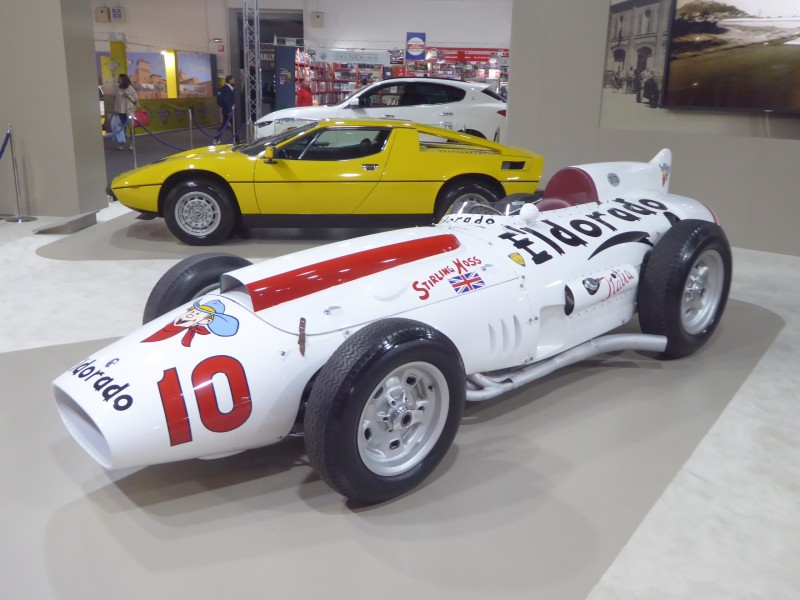
.jpg?width=180&height=120&fit=bounds)
.jpg?width=180&height=120&fit=bounds)
.jpg?width=180&height=120&fit=bounds)
.jpg?width=180&height=120&fit=bounds)
.jpg?width=180&height=120&fit=bounds)
.jpg?width=180&height=120&fit=bounds)
.jpg?width=180&height=120&fit=bounds)
.jpg?width=180&height=120&fit=bounds)
.jpg?width=180&height=120&fit=bounds)
.jpg?width=180&height=120&fit=bounds)
.jpg?width=180&height=120&fit=bounds)
.jpg?width=180&height=120&fit=bounds)
.jpg?width=180&height=120&fit=bounds)

.jpg?width=180&height=160&fit=bounds)
.jpg?width=180&height=120&fit=bounds)
.jpg?width=180&height=120&fit=bounds)
.jpg?width=180&height=120&fit=bounds)
.jpg?width=180&height=120&fit=bounds)
.jpg?width=180&height=120&fit=bounds)
.jpg?width=180&height=160&fit=bounds)
.jpg?width=180&height=120&fit=bounds)
.jpg?width=180&height=120&fit=bounds)
.jpg?width=180&height=160&fit=bounds)
.jpg?width=180&height=120&fit=bounds)
.jpg?width=180&height=160&fit=bounds)
.jpg?width=180&height=120&fit=bounds)
.jpg?width=180&height=120&fit=bounds)
.jpg?width=180&height=120&fit=bounds)
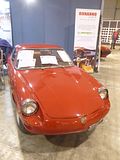
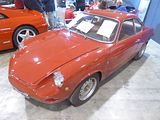
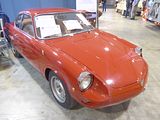
.jpg?width=180&height=120&fit=bounds)
.jpg?width=180&height=120&fit=bounds)
.jpg?width=180&height=120&fit=bounds)
.jpg?width=180&height=120&fit=bounds)
.jpg?width=180&height=120&fit=bounds)
.jpg?width=180&height=120&fit=bounds)
.jpg?width=180&height=120&fit=bounds)
.jpg?width=180&height=120&fit=bounds)
.jpg?width=180&height=120&fit=bounds)
.jpg?width=180&height=120&fit=bounds)
.jpg?width=180&height=120&fit=bounds)
.jpg?width=180&height=120&fit=bounds)
.jpg?width=180&height=120&fit=bounds)
.jpg?width=180&height=120&fit=bounds)
.jpg?width=180&height=120&fit=bounds)
.jpg?width=180&height=120&fit=bounds)
.jpg?width=180&height=120&fit=bounds)
.jpg?width=180&height=120&fit=bounds)
.jpg?width=180&height=120&fit=bounds)
.jpg?width=180&height=120&fit=bounds)
.jpg?width=180&height=120&fit=bounds)
.jpg?width=180&height=120&fit=bounds)
.jpg?width=180&height=120&fit=bounds)
.jpg?width=180&height=120&fit=bounds)
.jpg?width=180&height=120&fit=bounds)
.jpg?width=180&height=120&fit=bounds)
.jpg?width=180&height=120&fit=bounds)
.jpg?width=180&height=120&fit=bounds)
.jpg?width=180&height=120&fit=bounds)
.jpg?width=180&height=120&fit=bounds)
.jpg?width=180&height=120&fit=bounds)
.jpg?width=180&height=160&fit=bounds)
.jpg?width=180&height=120&fit=bounds)
.jpg?width=180&height=120&fit=bounds)
.jpg?width=180&height=120&fit=bounds)
.jpg?width=180&height=120&fit=bounds)
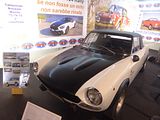


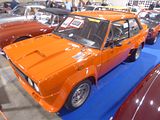
.jpg?width=180&height=160&fit=bounds)
.jpg?width=180&height=120&fit=bounds)
.jpg?width=180&height=120&fit=bounds)
.jpg?width=180&height=120&fit=bounds)
.jpg?width=180&height=120&fit=bounds)
.jpg?width=180&height=120&fit=bounds)
.jpg?width=180&height=120&fit=bounds)
.jpg?width=180&height=120&fit=bounds)
.jpg?width=180&height=120&fit=bounds)
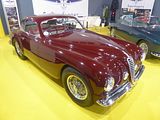

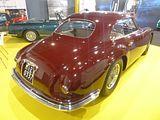
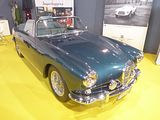

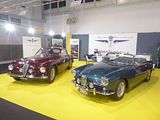
.jpg?width=180&height=120&fit=bounds)
.jpg?width=180&height=120&fit=bounds)
.jpg?width=180&height=120&fit=bounds)
.jpg?width=180&height=120&fit=bounds)
.jpg?width=180&height=120&fit=bounds)
.jpg?width=180&height=120&fit=bounds)
.jpg?width=180&height=120&fit=bounds)
.jpg?width=180&height=120&fit=bounds)
.jpg?width=180&height=120&fit=bounds)
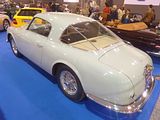
.jpg?width=180&height=160&fit=bounds)
.jpg?width=180&height=160&fit=bounds)
.jpg?width=180&height=120&fit=bounds)
.jpg?width=180&height=120&fit=bounds)
.jpg?width=180&height=120&fit=bounds)
.jpg?width=180&height=120&fit=bounds)
.jpg?width=180&height=120&fit=bounds)


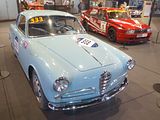
.jpg?width=180&height=120&fit=bounds)
.jpg?width=180&height=120&fit=bounds)
.jpg?width=180&height=120&fit=bounds)
.jpg?width=180&height=120&fit=bounds)
.jpg?width=180&height=120&fit=bounds)
.jpg?width=180&height=160&fit=bounds)
.jpg?width=180&height=120&fit=bounds)
.jpg?width=180&height=120&fit=bounds)
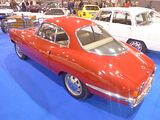
.jpg?width=180&height=160&fit=bounds)
.jpg?width=180&height=120&fit=bounds)
.jpg?width=180&height=160&fit=bounds)
.jpg?width=180&height=120&fit=bounds)
.jpg?width=180&height=120&fit=bounds)
.jpg?width=180&height=120&fit=bounds)
.jpg?width=180&height=120&fit=bounds)
.jpg?width=180&height=120&fit=bounds)
.jpg?width=180&height=120&fit=bounds)
.jpg?width=180&height=120&fit=bounds)
.jpg?width=180&height=120&fit=bounds)
.jpg?width=180&height=120&fit=bounds)
.jpg?width=180&height=120&fit=bounds)
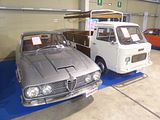
.jpg?width=180&height=160&fit=bounds)
.jpg?width=180&height=120&fit=bounds)
.jpg?width=180&height=120&fit=bounds)
.jpg?width=180&height=120&fit=bounds)
.jpg?width=180&height=120&fit=bounds)
.jpg?width=180&height=120&fit=bounds)
.jpg?width=180&height=120&fit=bounds)
.jpg?width=180&height=120&fit=bounds)
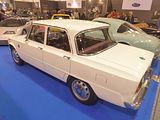
.jpg?width=180&height=120&fit=bounds)
.jpg?width=180&height=120&fit=bounds)
.jpg?width=180&height=120&fit=bounds)
.jpg?width=180&height=120&fit=bounds)
.jpg?width=180&height=160&fit=bounds)
.jpg?width=180&height=160&fit=bounds)
.jpg?width=180&height=120&fit=bounds)
.jpg?width=180&height=120&fit=bounds)
.jpg?width=180&height=120&fit=bounds)
.jpg?width=180&height=120&fit=bounds)
.jpg?width=180&height=120&fit=bounds)
.jpg?width=180&height=120&fit=bounds)
.jpg?width=180&height=120&fit=bounds)
.jpg?width=180&height=120&fit=bounds)
.jpg?width=180&height=120&fit=bounds)
.jpg?width=180&height=120&fit=bounds)
.jpg?width=180&height=120&fit=bounds)
.jpg?width=180&height=120&fit=bounds)
.jpg?width=180&height=120&fit=bounds)
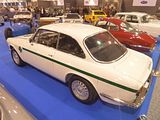
.jpg?width=180&height=120&fit=bounds)
.jpg?width=180&height=120&fit=bounds)
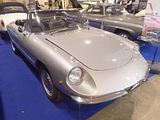
.jpg?width=180&height=120&fit=bounds)
.jpg?width=180&height=120&fit=bounds)
.jpg?width=180&height=120&fit=bounds)
.jpg?width=180&height=120&fit=bounds)
.jpg?width=180&height=120&fit=bounds)
.jpg?width=180&height=120&fit=bounds)
.jpg?width=180&height=120&fit=bounds)
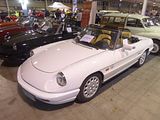
.jpg?width=180&height=120&fit=bounds)
.jpg?width=180&height=120&fit=bounds)
.jpg?width=180&height=120&fit=bounds)
.jpg?width=180&height=120&fit=bounds)
.jpg?width=180&height=120&fit=bounds)
.jpg?width=180&height=120&fit=bounds)
.jpg?width=180&height=120&fit=bounds)
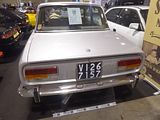
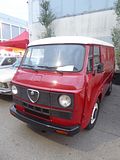
.jpg?width=180&height=160&fit=bounds)
.jpg?width=180&height=120&fit=bounds)
.jpg?width=180&height=120&fit=bounds)
.jpg?width=180&height=120&fit=bounds)
.jpg?width=180&height=120&fit=bounds)
.jpg?width=180&height=120&fit=bounds)

.jpg?width=180&height=160&fit=bounds)
.jpg?width=180&height=120&fit=bounds)
.jpg?width=180&height=120&fit=bounds)
.jpg?width=180&height=120&fit=bounds)
.jpg?width=180&height=120&fit=bounds)
.jpg?width=180&height=120&fit=bounds)
.jpg?width=180&height=120&fit=bounds)
.jpg?width=180&height=120&fit=bounds)
.jpg?width=180&height=120&fit=bounds)
.jpg?width=180&height=120&fit=bounds)
.jpg?width=180&height=120&fit=bounds)
.jpg?width=180&height=120&fit=bounds)
.jpg?width=180&height=120&fit=bounds)
.jpg?width=180&height=120&fit=bounds)
.jpg?width=180&height=120&fit=bounds)
.jpg?width=180&height=120&fit=bounds)
.jpg?width=180&height=120&fit=bounds)
.jpg?width=180&height=120&fit=bounds)
.jpg?width=180&height=120&fit=bounds)
.jpg?width=180&height=120&fit=bounds)
.jpg?width=180&height=120&fit=bounds)
.jpg?width=180&height=120&fit=bounds)
.jpg?width=180&height=120&fit=bounds)
.jpg?width=180&height=120&fit=bounds)

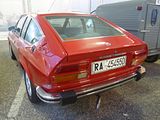
.jpg?width=180&height=120&fit=bounds)
.jpg?width=180&height=120&fit=bounds)
.jpg?width=180&height=160&fit=bounds)
.jpg?width=180&height=120&fit=bounds)
.jpg?width=180&height=120&fit=bounds)
.jpg?width=180&height=120&fit=bounds)
.jpg?width=180&height=120&fit=bounds)
.jpg?width=180&height=120&fit=bounds)
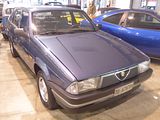
.jpg?width=180&height=120&fit=bounds)
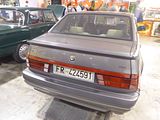
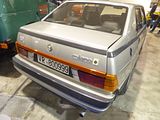
.jpg?width=180&height=120&fit=bounds)
.jpg?width=180&height=120&fit=bounds)
.jpg?width=180&height=120&fit=bounds)
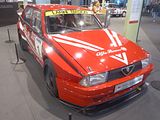
.jpg?width=180&height=120&fit=bounds)
.jpg?width=180&height=120&fit=bounds)
.jpg?width=180&height=120&fit=bounds)
.jpg?width=180&height=120&fit=bounds)
.jpg?width=180&height=120&fit=bounds)
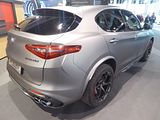
.jpg?width=180&height=120&fit=bounds)
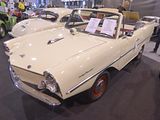
.jpg?width=180&height=120&fit=bounds)
.jpg?width=180&height=160&fit=bounds)
.jpg?width=180&height=160&fit=bounds)
.jpg?width=180&height=120&fit=bounds)
.jpg?width=180&height=120&fit=bounds)
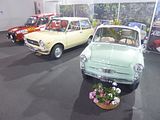
.jpg?width=180&height=120&fit=bounds)
.jpg?width=180&height=120&fit=bounds)
.jpg?width=180&height=120&fit=bounds)
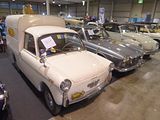
.jpg?width=180&height=120&fit=bounds)
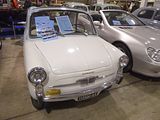
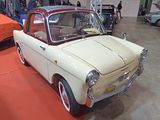
.jpg?width=180&height=160&fit=bounds)
.jpg?width=180&height=120&fit=bounds)
.jpg?width=180&height=120&fit=bounds)
.jpg?width=180&height=120&fit=bounds)
.jpg?width=180&height=120&fit=bounds)
.jpg?width=180&height=120&fit=bounds)
.jpg?width=180&height=120&fit=bounds)
.jpg?width=180&height=120&fit=bounds)
.jpg?width=180&height=120&fit=bounds)
.jpg?width=180&height=160&fit=bounds)
.jpg?width=180&height=160&fit=bounds)
.jpg?width=180&height=120&fit=bounds)
.jpg?width=180&height=160&fit=bounds)
.jpg?width=180&height=120&fit=bounds)
.jpg?width=180&height=120&fit=bounds)
.jpg?width=180&height=120&fit=bounds)
.jpg?width=180&height=120&fit=bounds)
.jpg?width=180&height=120&fit=bounds)
.jpg?width=180&height=120&fit=bounds)
.jpg?width=180&height=120&fit=bounds)
.jpg?width=180&height=120&fit=bounds)

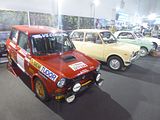
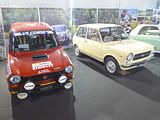
.jpg?width=180&height=120&fit=bounds)
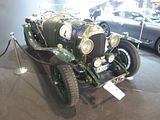
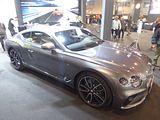
.jpg?width=180&height=120&fit=bounds)
.jpg?width=180&height=160&fit=bounds)
.jpg?width=180&height=120&fit=bounds)
.jpg?width=180&height=120&fit=bounds)
.jpg?width=180&height=120&fit=bounds)
.jpg?width=180&height=120&fit=bounds)
.jpg?width=180&height=120&fit=bounds)
.jpg?width=180&height=120&fit=bounds)
.jpg?width=180&height=120&fit=bounds)
.jpg?width=180&height=120&fit=bounds)
.jpg?width=180&height=120&fit=bounds)
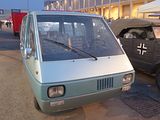
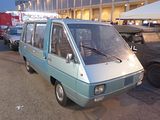
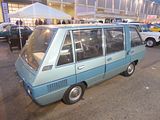
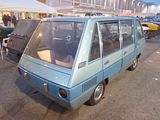

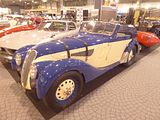
.jpg?width=180&height=120&fit=bounds)
.jpg?width=180&height=120&fit=bounds)
.jpg?width=180&height=120&fit=bounds)
.jpg?width=180&height=120&fit=bounds)
.jpg?width=180&height=120&fit=bounds)
.jpg?width=180&height=120&fit=bounds)
.jpg?width=180&height=120&fit=bounds)
.jpg?width=180&height=120&fit=bounds)
.jpg?width=180&height=120&fit=bounds)
.jpg?width=180&height=120&fit=bounds)
.jpg?width=180&height=120&fit=bounds)
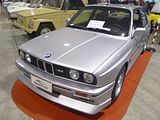
.jpg?width=180&height=120&fit=bounds)
.jpg?width=180&height=120&fit=bounds)
.jpg?width=180&height=120&fit=bounds)
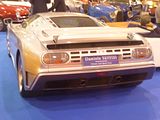

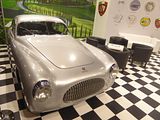
.jpg?width=180&height=120&fit=bounds)
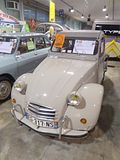
.jpg?width=180&height=160&fit=bounds)
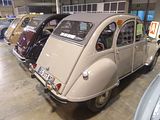

.jpg?width=180&height=120&fit=bounds)
.jpg?width=180&height=120&fit=bounds)
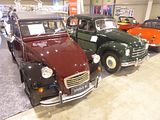

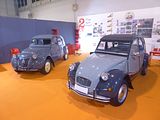
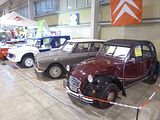

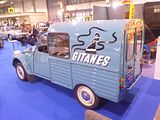
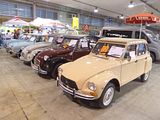
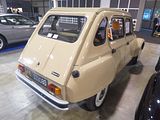
.jpg?width=180&height=120&fit=bounds)

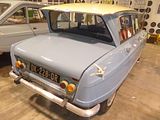
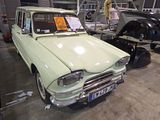

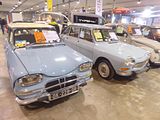
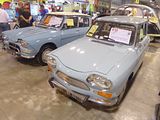
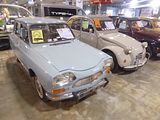
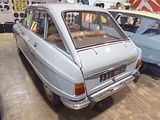

.jpg?width=180&height=120&fit=bounds)
.jpg?width=180&height=120&fit=bounds)
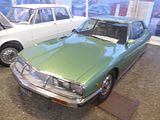
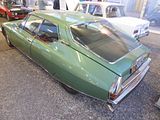
.jpg?width=180&height=160&fit=bounds)
.jpg?width=180&height=120&fit=bounds)
.jpg?width=180&height=120&fit=bounds)
.jpg?width=180&height=120&fit=bounds)
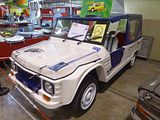

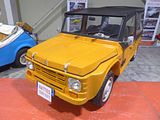
.jpg?width=180&height=120&fit=bounds)
.jpg?width=180&height=120&fit=bounds)
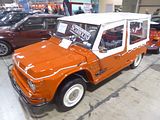
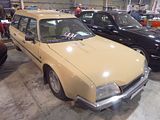
.jpg?width=180&height=120&fit=bounds)
.jpg?width=180&height=120&fit=bounds)
.jpg?width=180&height=120&fit=bounds)
.jpg?width=180&height=120&fit=bounds)
.jpg?width=180&height=120&fit=bounds)
.jpg?width=180&height=120&fit=bounds)
.jpg?width=180&height=120&fit=bounds)
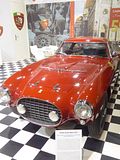
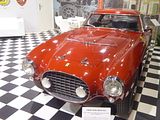
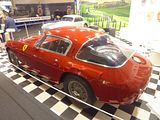
.jpg?width=180&height=120&fit=bounds)
.jpg?width=180&height=120&fit=bounds)
.jpg?width=180&height=120&fit=bounds)
.jpg?width=180&height=120&fit=bounds)
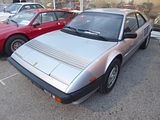
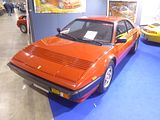
.jpg?width=180&height=120&fit=bounds)
.jpg?width=180&height=120&fit=bounds)
.jpg?width=180&height=120&fit=bounds)
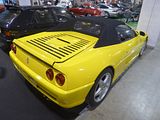

.jpg?width=180&height=120&fit=bounds)
.jpg?width=180&height=120&fit=bounds)
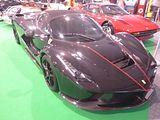
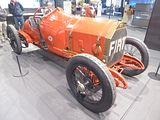
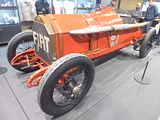
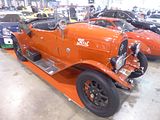
.jpg?width=180&height=120&fit=bounds)
.jpg?width=180&height=160&fit=bounds)
.jpg?width=180&height=120&fit=bounds)
.jpg?width=180&height=120&fit=bounds)
.jpg?width=180&height=120&fit=bounds)
.jpg?width=180&height=120&fit=bounds)
.jpg?width=180&height=120&fit=bounds)
.jpg?width=180&height=120&fit=bounds)
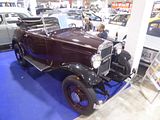
.jpg?width=180&height=120&fit=bounds)
.jpg?width=180&height=120&fit=bounds)
.jpg?width=180&height=120&fit=bounds)
.jpg?width=180&height=120&fit=bounds)
.jpg?width=180&height=120&fit=bounds)
.jpg?width=180&height=120&fit=bounds)
.jpg?width=180&height=160&fit=bounds)
.jpg?width=180&height=120&fit=bounds)
.jpg?width=180&height=120&fit=bounds)
.jpg?width=180&height=120&fit=bounds)
.jpg?width=180&height=120&fit=bounds)
.jpg?width=180&height=160&fit=bounds)
.jpg?width=180&height=120&fit=bounds)
.jpg?width=180&height=120&fit=bounds)
.jpg?width=180&height=120&fit=bounds)
.jpg?width=180&height=120&fit=bounds)

.jpg?width=180&height=120&fit=bounds)
.jpg?width=180&height=160&fit=bounds)
.jpg?width=180&height=120&fit=bounds)
.jpg?width=180&height=160&fit=bounds)
.jpg?width=180&height=160&fit=bounds)
.jpg?width=180&height=120&fit=bounds)
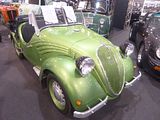
.jpg?width=180&height=160&fit=bounds)
.jpg?width=180&height=160&fit=bounds)
.jpg?width=180&height=160&fit=bounds)
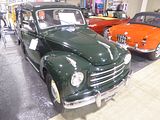
.jpg?width=180&height=120&fit=bounds)
.jpg?width=180&height=120&fit=bounds)
.jpg?width=180&height=120&fit=bounds)
.jpg?width=180&height=120&fit=bounds)
.jpg?width=180&height=120&fit=bounds)
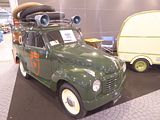
.jpg?width=180&height=120&fit=bounds)
.jpg?width=180&height=120&fit=bounds)
.jpg?width=180&height=120&fit=bounds)
.jpg?width=180&height=160&fit=bounds)
.jpg?width=180&height=120&fit=bounds)
.jpg?width=180&height=120&fit=bounds)
.jpg?width=180&height=120&fit=bounds)
.jpg?width=180&height=120&fit=bounds)
.jpg?width=180&height=120&fit=bounds)
.jpg?width=180&height=120&fit=bounds)
.jpg?width=180&height=120&fit=bounds)
.jpg?width=180&height=120&fit=bounds)
.jpg?width=180&height=120&fit=bounds)
.jpg?width=180&height=120&fit=bounds)
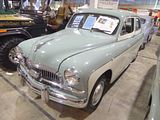
.jpg?width=180&height=120&fit=bounds)
.jpg?width=180&height=120&fit=bounds)
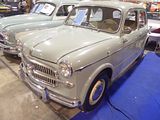

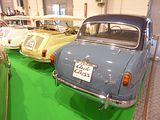
.jpg?width=180&height=120&fit=bounds)
.jpg?width=180&height=120&fit=bounds)
.jpg?width=180&height=120&fit=bounds)
.jpg?width=180&height=120&fit=bounds)
.jpg?width=180&height=120&fit=bounds)
.jpg?width=180&height=120&fit=bounds)
.jpg?width=180&height=120&fit=bounds)
.jpg?width=180&height=120&fit=bounds)
.jpg?width=180&height=120&fit=bounds)
.jpg?width=180&height=120&fit=bounds)
.jpg?width=180&height=120&fit=bounds)
.jpg?width=180&height=120&fit=bounds)
.jpg?width=180&height=160&fit=bounds)
.jpg?width=180&height=160&fit=bounds)
.jpg?width=180&height=120&fit=bounds)
.jpg?width=180&height=120&fit=bounds)
.jpg?width=180&height=120&fit=bounds)
.jpg?width=180&height=120&fit=bounds)
.jpg?width=180&height=120&fit=bounds)
.jpg?width=180&height=120&fit=bounds)
.jpg?width=180&height=120&fit=bounds)
.jpg?width=180&height=120&fit=bounds)
.jpg?width=180&height=120&fit=bounds)
.jpg?width=180&height=120&fit=bounds)

.jpg?width=180&height=120&fit=bounds)
.jpg?width=180&height=120&fit=bounds)
.jpg?width=180&height=120&fit=bounds)
.jpg?width=180&height=120&fit=bounds)
.jpg?width=180&height=120&fit=bounds)
.jpg?width=180&height=120&fit=bounds)
.jpg?width=180&height=120&fit=bounds)
.jpg?width=180&height=120&fit=bounds)
.jpg?width=180&height=120&fit=bounds)
.jpg?width=180&height=120&fit=bounds)
.jpg?width=180&height=120&fit=bounds)
.jpg?width=180&height=120&fit=bounds)
.jpg?width=180&height=120&fit=bounds)
.jpg?width=180&height=120&fit=bounds)
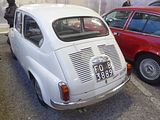
.jpg?width=180&height=160&fit=bounds)
.jpg?width=180&height=160&fit=bounds)
.jpg?width=180&height=120&fit=bounds)
.jpg?width=180&height=120&fit=bounds)
.jpg?width=180&height=120&fit=bounds)
.jpg?width=180&height=120&fit=bounds)
.jpg?width=180&height=120&fit=bounds)
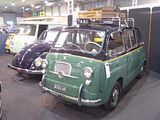
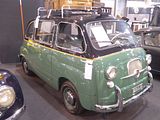
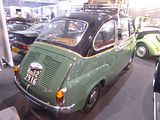
.jpg?width=180&height=120&fit=bounds)
.jpg?width=180&height=120&fit=bounds)
.jpg?width=180&height=120&fit=bounds)
.jpg?width=180&height=120&fit=bounds)
.jpg?width=180&height=120&fit=bounds)
.jpg?width=180&height=120&fit=bounds)
.jpg?width=180&height=120&fit=bounds)
.jpg?width=180&height=120&fit=bounds)
.jpg?width=180&height=120&fit=bounds)
.jpg?width=180&height=120&fit=bounds)
.jpg?width=180&height=120&fit=bounds)
.jpg?width=180&height=120&fit=bounds)
.jpg?width=180&height=120&fit=bounds)
.jpg?width=180&height=120&fit=bounds)
.jpg?width=180&height=120&fit=bounds)
.jpg?width=180&height=120&fit=bounds)
.jpg?width=180&height=120&fit=bounds)
.jpg?width=180&height=120&fit=bounds)
.jpg?width=180&height=120&fit=bounds)
.jpg?width=180&height=120&fit=bounds)
.jpg?width=180&height=120&fit=bounds)
.jpg?width=180&height=120&fit=bounds)
.jpg?width=180&height=120&fit=bounds)

.jpg?width=180&height=120&fit=bounds)
.jpg?width=180&height=120&fit=bounds)
.jpg?width=180&height=120&fit=bounds)
.jpg?width=180&height=120&fit=bounds)
.jpg?width=180&height=120&fit=bounds)
.jpg?width=180&height=120&fit=bounds)
.jpg?width=180&height=120&fit=bounds)
.jpg?width=180&height=120&fit=bounds)
.jpg?width=180&height=120&fit=bounds)
.jpg?width=180&height=120&fit=bounds)
.jpg?width=180&height=120&fit=bounds)
.jpg?width=180&height=160&fit=bounds)
.jpg?width=180&height=120&fit=bounds)
.jpg?width=180&height=120&fit=bounds)
.jpg?width=180&height=120&fit=bounds)
.jpg?width=180&height=120&fit=bounds)
.jpg?width=180&height=120&fit=bounds)
.jpg?width=180&height=120&fit=bounds)
.jpg?width=180&height=120&fit=bounds)
.jpg?width=180&height=120&fit=bounds)
.jpg?width=180&height=120&fit=bounds)
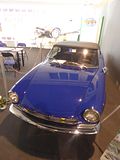
.jpg?width=180&height=120&fit=bounds)
.jpg?width=180&height=120&fit=bounds)
.jpg?width=180&height=120&fit=bounds)
.jpg?width=180&height=120&fit=bounds)
.jpg?width=180&height=120&fit=bounds)
.jpg?width=180&height=120&fit=bounds)
.jpg?width=180&height=120&fit=bounds)
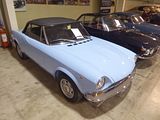
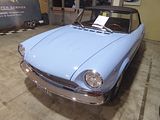
.jpg?width=180&height=120&fit=bounds)
.jpg?width=180&height=120&fit=bounds)
.jpg?width=180&height=120&fit=bounds)
.jpg?width=180&height=120&fit=bounds)
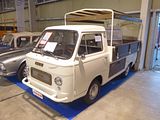
.jpg?width=180&height=120&fit=bounds)
.jpg?width=180&height=120&fit=bounds)
.jpg?width=180&height=120&fit=bounds)
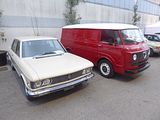
.jpg?width=180&height=120&fit=bounds)
.jpg?width=180&height=120&fit=bounds)
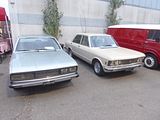
.jpg?width=180&height=160&fit=bounds)
.jpg?width=180&height=120&fit=bounds)
.jpg?width=180&height=120&fit=bounds)
.jpg?width=180&height=120&fit=bounds)
.jpg?width=180&height=120&fit=bounds)
.jpg?width=180&height=120&fit=bounds)
.jpg?width=180&height=120&fit=bounds)
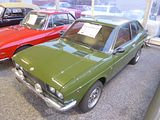
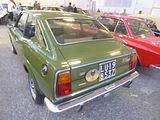
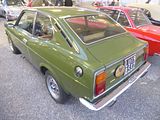
.jpg?width=180&height=160&fit=bounds)
.jpg?width=180&height=120&fit=bounds)
.jpg?width=180&height=120&fit=bounds)
.jpg?width=180&height=120&fit=bounds)
.jpg?width=180&height=120&fit=bounds)
.jpg?width=180&height=160&fit=bounds)
.jpg?width=180&height=160&fit=bounds)
.jpg?width=180&height=160&fit=bounds)
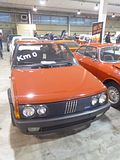
.jpg?width=180&height=120&fit=bounds)
.jpg?width=180&height=120&fit=bounds)
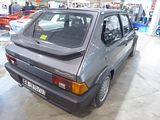
.jpg?width=180&height=120&fit=bounds)
.jpg?width=180&height=120&fit=bounds)
.jpg?width=180&height=120&fit=bounds)
.jpg?width=180&height=120&fit=bounds)
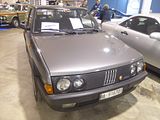

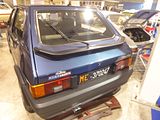

.jpg?width=180&height=120&fit=bounds)
.jpg?width=180&height=120&fit=bounds)
.jpg?width=180&height=120&fit=bounds)
.jpg?width=180&height=120&fit=bounds)
.jpg?width=180&height=120&fit=bounds)
.jpg?width=180&height=120&fit=bounds)
.jpg?width=180&height=120&fit=bounds)
.jpg?width=180&height=120&fit=bounds)
.jpg?width=180&height=120&fit=bounds)
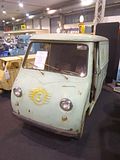
.jpg?width=180&height=120&fit=bounds)
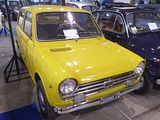
.jpg?width=180&height=160&fit=bounds)
.jpg?width=180&height=120&fit=bounds)
.jpg?width=180&height=120&fit=bounds)

.jpg?width=180&height=120&fit=bounds)
.jpg?width=180&height=120&fit=bounds)
.jpg?width=180&height=120&fit=bounds)
.jpg?width=180&height=120&fit=bounds)
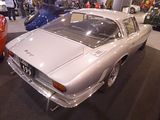
.jpg?width=180&height=120&fit=bounds)
.jpg?width=180&height=120&fit=bounds)
.jpg?width=180&height=120&fit=bounds)
.jpg?width=180&height=120&fit=bounds)
.jpg?width=180&height=120&fit=bounds)
.jpg?width=180&height=120&fit=bounds)
.jpg?width=180&height=120&fit=bounds)
.jpg?width=180&height=120&fit=bounds)

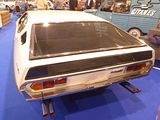

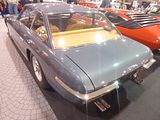
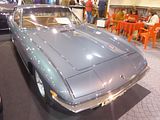
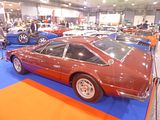

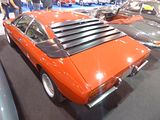
.jpg?width=180&height=120&fit=bounds)
.jpg?width=180&height=120&fit=bounds)
.jpg?width=180&height=120&fit=bounds)
.jpg?width=180&height=120&fit=bounds)
.jpg?width=180&height=160&fit=bounds)
.jpg?width=180&height=120&fit=bounds)
.jpg?width=180&height=160&fit=bounds)
.jpg?width=180&height=120&fit=bounds)
.jpg?width=180&height=120&fit=bounds)
.jpg?width=180&height=120&fit=bounds)
.jpg?width=180&height=120&fit=bounds)
.jpg?width=180&height=120&fit=bounds)
.jpg?width=180&height=120&fit=bounds)
.jpg?width=180&height=120&fit=bounds)
.jpg?width=180&height=120&fit=bounds)
.jpg?width=180&height=120&fit=bounds)
.jpg?width=180&height=120&fit=bounds)
.jpg?width=180&height=120&fit=bounds)
.jpg?width=180&height=120&fit=bounds)
.jpg?width=180&height=120&fit=bounds)
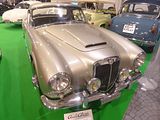
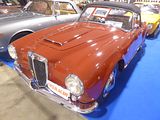
.jpg?width=180&height=160&fit=bounds)
.jpg?width=180&height=120&fit=bounds)
.jpg?width=180&height=120&fit=bounds)
.jpg?width=180&height=120&fit=bounds)
.jpg?width=180&height=120&fit=bounds)
.jpg?width=180&height=120&fit=bounds)
.jpg?width=180&height=120&fit=bounds)
.jpg?width=180&height=120&fit=bounds)
.jpg?width=180&height=120&fit=bounds)
.jpg?width=180&height=160&fit=bounds)
.jpg?width=180&height=160&fit=bounds)
.jpg?width=180&height=120&fit=bounds)
.jpg?width=180&height=120&fit=bounds)
.jpg?width=180&height=120&fit=bounds)
.jpg?width=180&height=120&fit=bounds)
.jpg?width=180&height=120&fit=bounds)
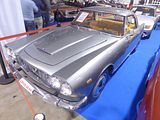
.jpg?width=180&height=120&fit=bounds)
.jpg?width=180&height=120&fit=bounds)
.jpg?width=180&height=120&fit=bounds)
.jpg?width=180&height=120&fit=bounds)
.jpg?width=180&height=120&fit=bounds)
.jpg?width=180&height=120&fit=bounds)
.jpg?width=180&height=120&fit=bounds)
.jpg?width=180&height=120&fit=bounds)
.jpg?width=180&height=160&fit=bounds)
.jpg?width=180&height=120&fit=bounds)
.jpg?width=180&height=120&fit=bounds)
.jpg?width=180&height=120&fit=bounds)
.jpg?width=180&height=120&fit=bounds)
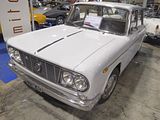
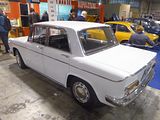
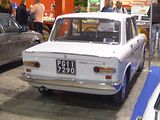
.jpg?width=180&height=120&fit=bounds)
.jpg?width=180&height=120&fit=bounds)
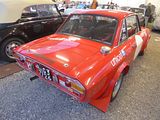
.jpg?width=180&height=120&fit=bounds)
.jpg?width=180&height=120&fit=bounds)
.jpg?width=180&height=120&fit=bounds)
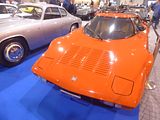
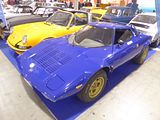
.jpg?width=180&height=120&fit=bounds)
.jpg?width=180&height=120&fit=bounds)
.jpg?width=180&height=120&fit=bounds)
.jpg?width=180&height=120&fit=bounds)
.jpg?width=180&height=120&fit=bounds)
.jpg?width=180&height=120&fit=bounds)
.jpg?width=180&height=120&fit=bounds)
.jpg?width=180&height=120&fit=bounds)
.jpg?width=180&height=120&fit=bounds)
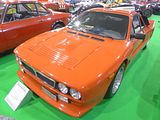
.jpg?width=180&height=160&fit=bounds)
.jpg?width=180&height=160&fit=bounds)
.jpg?width=180&height=120&fit=bounds)
.jpg?width=180&height=120&fit=bounds)
.jpg?width=180&height=120&fit=bounds)
.jpg?width=180&height=120&fit=bounds)
.jpg?width=180&height=120&fit=bounds)
.jpg?width=180&height=120&fit=bounds)
.jpg?width=180&height=120&fit=bounds)
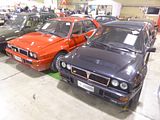

.jpg?width=180&height=120&fit=bounds)
.jpg?width=180&height=120&fit=bounds)
.jpg?width=180&height=120&fit=bounds)
.jpg?width=180&height=120&fit=bounds)
.jpg?width=180&height=120&fit=bounds)
.jpg?width=180&height=120&fit=bounds)
.jpg?width=180&height=120&fit=bounds)
.jpg?width=180&height=120&fit=bounds)
.jpg?width=180&height=120&fit=bounds)
.jpg?width=180&height=120&fit=bounds)
.jpg?width=180&height=120&fit=bounds)
.jpg?width=180&height=120&fit=bounds)
.jpg?width=180&height=120&fit=bounds)
.jpg?width=180&height=120&fit=bounds)
.jpg?width=180&height=120&fit=bounds)
.jpg?width=180&height=160&fit=bounds)
.jpg?width=180&height=120&fit=bounds)
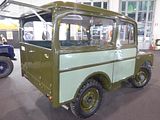
.jpg?width=180&height=120&fit=bounds)
.jpg?width=180&height=120&fit=bounds)
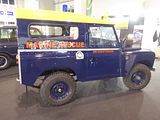
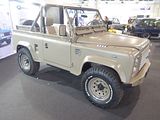
.jpg?width=180&height=160&fit=bounds)
.jpg?width=180&height=160&fit=bounds)
.jpg?width=180&height=120&fit=bounds)
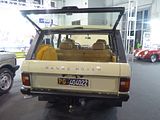

.jpg?width=180&height=120&fit=bounds)
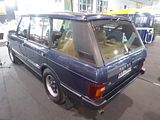
.jpg?width=180&height=160&fit=bounds)
.jpg?width=180&height=120&fit=bounds)
.jpg?width=180&height=160&fit=bounds)
.jpg?width=180&height=160&fit=bounds)
.jpg?width=180&height=120&fit=bounds)
.jpg?width=180&height=120&fit=bounds)

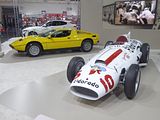
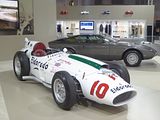
.jpg?width=180&height=160&fit=bounds)
.jpg?width=180&height=120&fit=bounds)
.jpg?width=180&height=120&fit=bounds)
.jpg?width=180&height=120&fit=bounds)
.jpg?width=180&height=160&fit=bounds)
.jpg?width=180&height=120&fit=bounds)
.jpg?width=180&height=120&fit=bounds)
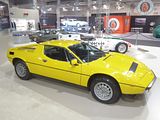
.jpg?width=180&height=120&fit=bounds)
.jpg?width=180&height=120&fit=bounds)
.jpg?width=180&height=120&fit=bounds)
.jpg?width=180&height=120&fit=bounds)
.jpg?width=180&height=120&fit=bounds)
.jpg?width=180&height=120&fit=bounds)
.jpg?width=180&height=160&fit=bounds)
.jpg?width=180&height=120&fit=bounds)
.jpg?width=180&height=120&fit=bounds)
.jpg?width=180&height=120&fit=bounds)
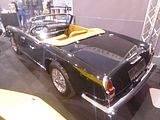
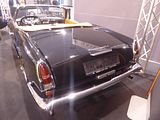

.jpg?width=180&height=120&fit=bounds)
.jpg?width=180&height=120&fit=bounds)
.jpg?width=180&height=120&fit=bounds)
.jpg?width=180&height=120&fit=bounds)
.jpg?width=180&height=120&fit=bounds)
.jpg?width=180&height=120&fit=bounds)
.jpg?width=180&height=120&fit=bounds)
.jpg?width=180&height=120&fit=bounds)
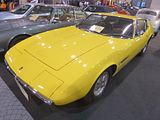
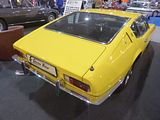
.jpg?width=180&height=120&fit=bounds)
.jpg?width=180&height=120&fit=bounds)
.jpg?width=180&height=120&fit=bounds)
.jpg?width=180&height=120&fit=bounds)
.jpg?width=180&height=120&fit=bounds)
.jpg?width=180&height=120&fit=bounds)
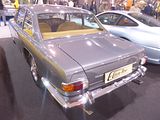
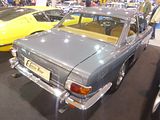
.jpg?width=180&height=120&fit=bounds)
.jpg?width=180&height=120&fit=bounds)
.jpg?width=180&height=120&fit=bounds)
.jpg?width=180&height=120&fit=bounds)
.jpg?width=180&height=120&fit=bounds)
.jpg?width=180&height=120&fit=bounds)
.jpg?width=180&height=120&fit=bounds)
.jpg?width=180&height=120&fit=bounds)


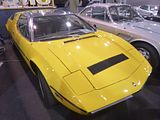
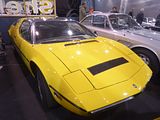
.jpg?width=180&height=120&fit=bounds)
.jpg?width=180&height=120&fit=bounds)
.jpg?width=180&height=120&fit=bounds)
.jpg?width=180&height=120&fit=bounds)
.jpg?width=180&height=120&fit=bounds)
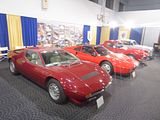
.jpg?width=180&height=120&fit=bounds)
.jpg?width=180&height=120&fit=bounds)
.jpg?width=180&height=120&fit=bounds)
.jpg?width=180&height=120&fit=bounds)
.jpg?width=180&height=120&fit=bounds)
.jpg?width=180&height=120&fit=bounds)
.jpg?width=180&height=120&fit=bounds)
.jpg?width=180&height=120&fit=bounds)
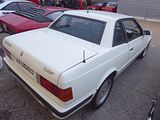
.jpg?width=180&height=160&fit=bounds)
.jpg?width=180&height=120&fit=bounds)
.jpg?width=180&height=160&fit=bounds)
.jpg?width=180&height=120&fit=bounds)
.jpg?width=180&height=120&fit=bounds)
.jpg?width=180&height=120&fit=bounds)
.jpg?width=180&height=120&fit=bounds)
.jpg?width=180&height=120&fit=bounds)
.jpg?width=180&height=120&fit=bounds)
.jpg?width=180&height=160&fit=bounds)
.jpg?width=180&height=120&fit=bounds)
.jpg?width=180&height=120&fit=bounds)
.jpg?width=180&height=120&fit=bounds)
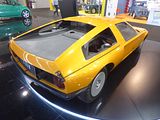
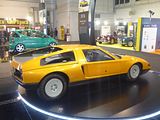
.jpg?width=180&height=160&fit=bounds)
.jpg?width=180&height=120&fit=bounds)
.jpg?width=180&height=120&fit=bounds)
.jpg?width=180&height=120&fit=bounds)
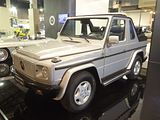
.jpg?width=180&height=160&fit=bounds)
.jpg?width=180&height=120&fit=bounds)
.jpg?width=180&height=120&fit=bounds)
.jpg?width=180&height=120&fit=bounds)
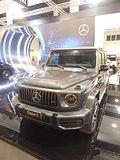
.jpg?width=180&height=120&fit=bounds)
.jpg?width=180&height=120&fit=bounds)
.jpg?width=180&height=120&fit=bounds)
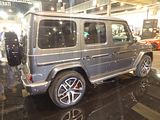
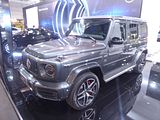
.jpg?width=180&height=120&fit=bounds)
.jpg?width=180&height=120&fit=bounds)
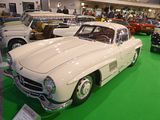
.jpg?width=180&height=120&fit=bounds)
.jpg?width=180&height=120&fit=bounds)
.jpg?width=180&height=120&fit=bounds)
.jpg?width=180&height=120&fit=bounds)
.jpg?width=180&height=120&fit=bounds)
.jpg?width=180&height=120&fit=bounds)
.jpg?width=180&height=120&fit=bounds)
.jpg?width=180&height=120&fit=bounds)
.jpg?width=180&height=120&fit=bounds)
.jpg?width=180&height=120&fit=bounds)
.jpg?width=180&height=120&fit=bounds)
.jpg?width=180&height=120&fit=bounds)
.jpg?width=180&height=120&fit=bounds)
.jpg?width=180&height=120&fit=bounds)
.jpg?width=180&height=120&fit=bounds)
.jpg?width=180&height=120&fit=bounds)
.jpg?width=180&height=120&fit=bounds)
.jpg?width=180&height=160&fit=bounds)
.jpg?width=180&height=120&fit=bounds)
.jpg?width=180&height=120&fit=bounds)
.jpg?width=180&height=120&fit=bounds)
.jpg?width=180&height=120&fit=bounds)
.jpg?width=180&height=160&fit=bounds)
.jpg?width=180&height=120&fit=bounds)
.jpg?width=180&height=120&fit=bounds)
.jpg?width=180&height=120&fit=bounds)
.jpg?width=180&height=120&fit=bounds)
.jpg?width=180&height=120&fit=bounds)
.jpg?width=180&height=120&fit=bounds)
.jpg?width=180&height=120&fit=bounds)
.jpg?width=180&height=120&fit=bounds)
.jpg?width=180&height=120&fit=bounds)
.jpg?width=180&height=120&fit=bounds)
.jpg?width=180&height=120&fit=bounds)
.jpg?width=180&height=120&fit=bounds)
.jpg?width=180&height=160&fit=bounds)
.jpg?width=180&height=120&fit=bounds)
.jpg?width=180&height=160&fit=bounds)
.jpg?width=180&height=160&fit=bounds)
.jpg?width=180&height=160&fit=bounds)
.jpg?width=180&height=160&fit=bounds)
.jpg?width=180&height=120&fit=bounds)
.jpg?width=180&height=120&fit=bounds)
.jpg?width=180&height=120&fit=bounds)
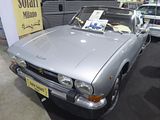
.jpg?width=180&height=160&fit=bounds)
.jpg?width=180&height=120&fit=bounds)
.jpg?width=180&height=120&fit=bounds)
.jpg?width=180&height=120&fit=bounds)
.jpg?width=180&height=120&fit=bounds)
.jpg?width=180&height=120&fit=bounds)
.jpg?width=180&height=120&fit=bounds)
.jpg?width=180&height=120&fit=bounds)
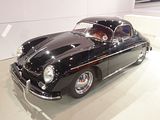
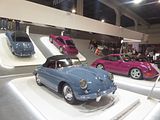
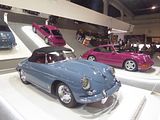
.jpg?width=180&height=120&fit=bounds)
.jpg?width=180&height=160&fit=bounds)
.jpg?width=180&height=160&fit=bounds)
.jpg?width=180&height=160&fit=bounds)
.jpg?width=180&height=120&fit=bounds)
.jpg?width=180&height=120&fit=bounds)
.jpg?width=180&height=120&fit=bounds)
.jpg?width=180&height=120&fit=bounds)
.jpg?width=180&height=120&fit=bounds)
.jpg?width=180&height=120&fit=bounds)
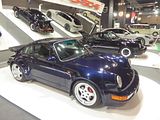

.jpg?width=180&height=120&fit=bounds)
.jpg?width=180&height=120&fit=bounds)
.jpg?width=180&height=120&fit=bounds)
.jpg?width=180&height=120&fit=bounds)
.jpg?width=180&height=120&fit=bounds)
.jpg?width=180&height=120&fit=bounds)
.jpg?width=180&height=120&fit=bounds)
.jpg?width=180&height=120&fit=bounds)
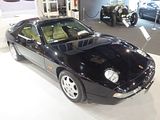

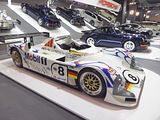
.jpg?width=180&height=120&fit=bounds)
.jpg?width=180&height=120&fit=bounds)
.jpg?width=180&height=120&fit=bounds)
.jpg?width=180&height=120&fit=bounds)
.jpg?width=180&height=160&fit=bounds)
.jpg?width=180&height=120&fit=bounds)
.jpg?width=180&height=120&fit=bounds)
.jpg?width=180&height=120&fit=bounds)
.jpg?width=180&height=120&fit=bounds)
.jpg?width=180&height=160&fit=bounds)
.jpg?width=180&height=120&fit=bounds)
.jpg?width=180&height=120&fit=bounds)
.jpg?width=180&height=120&fit=bounds)
.jpg?width=180&height=160&fit=bounds)
.jpg?width=180&height=120&fit=bounds)
.jpg?width=180&height=120&fit=bounds)
.jpg?width=180&height=120&fit=bounds)
.jpg?width=180&height=120&fit=bounds)
.jpg?width=180&height=160&fit=bounds)
.jpg?width=180&height=160&fit=bounds)
.jpg?width=180&height=120&fit=bounds)
.jpg?width=180&height=120&fit=bounds)
.jpg?width=180&height=120&fit=bounds)
.jpg?width=180&height=120&fit=bounds)
.jpg?width=180&height=120&fit=bounds)
.jpg?width=180&height=120&fit=bounds)
.jpg?width=180&height=120&fit=bounds)
.jpg?width=180&height=120&fit=bounds)
.jpg?width=180&height=120&fit=bounds)
.jpg?width=180&height=160&fit=bounds)
.jpg?width=180&height=120&fit=bounds)
.jpg?width=180&height=160&fit=bounds)
.jpg?width=180&height=160&fit=bounds)
.jpg?width=180&height=120&fit=bounds)
.jpg?width=180&height=120&fit=bounds)
.jpg?width=180&height=120&fit=bounds)
.jpg?width=180&height=120&fit=bounds)
.jpg?width=180&height=120&fit=bounds)
.jpg?width=180&height=120&fit=bounds)
.jpg?width=180&height=120&fit=bounds)
.jpg?width=180&height=120&fit=bounds)
.jpg?width=180&height=120&fit=bounds)
.jpg?width=180&height=120&fit=bounds)
.jpg?width=180&height=120&fit=bounds)
.jpg?width=180&height=120&fit=bounds)
.jpg?width=180&height=120&fit=bounds)
.jpg?width=180&height=120&fit=bounds)
.jpg?width=180&height=120&fit=bounds)
.jpg?width=180&height=120&fit=bounds)
.jpg?width=180&height=120&fit=bounds)
.jpg?width=180&height=120&fit=bounds)
.jpg?width=180&height=120&fit=bounds)
.jpg?width=180&height=120&fit=bounds)
.jpg?width=180&height=160&fit=bounds)
.jpg?width=180&height=120&fit=bounds)
.jpg?width=180&height=120&fit=bounds)
.jpg?width=180&height=120&fit=bounds)
.jpg?width=180&height=120&fit=bounds)
.jpg?width=180&height=160&fit=bounds)
.jpg?width=180&height=120&fit=bounds)
.jpg?width=180&height=160&fit=bounds)
.jpg?width=180&height=120&fit=bounds)
.jpg?width=180&height=120&fit=bounds)
.jpg?width=180&height=120&fit=bounds)
.jpg?width=180&height=120&fit=bounds)
.jpg?width=180&height=160&fit=bounds)
.jpg?width=180&height=160&fit=bounds)
.jpg?width=180&height=120&fit=bounds)
.jpg?width=180&height=120&fit=bounds)
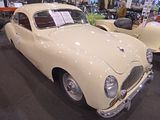
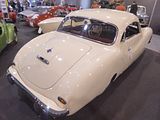
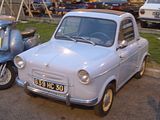
.jpg?width=180&height=120&fit=bounds)
.jpg?width=180&height=120&fit=bounds)
.jpg?width=180&height=160&fit=bounds)
.jpg?width=180&height=120&fit=bounds)
.jpg?width=180&height=120&fit=bounds)
.jpg?width=180&height=120&fit=bounds)
.jpg?width=180&height=120&fit=bounds)
.jpg?width=180&height=120&fit=bounds)
.jpg?width=180&height=120&fit=bounds)
.jpg?width=180&height=120&fit=bounds)
.jpg?width=180&height=120&fit=bounds)
.jpg?width=180&height=120&fit=bounds)
.jpg?width=180&height=120&fit=bounds)
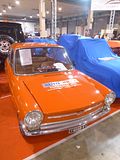
.jpg?width=180&height=160&fit=bounds)
.jpg?width=180&height=120&fit=bounds)
.jpg?width=180&height=120&fit=bounds)
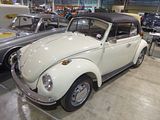
.jpg?width=180&height=120&fit=bounds)
.jpg?width=180&height=120&fit=bounds)
.jpg?width=180&height=120&fit=bounds)
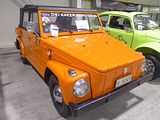
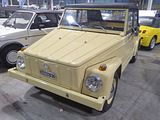
.jpg?width=180&height=120&fit=bounds)
.jpg?width=180&height=120&fit=bounds)
.jpg?width=180&height=120&fit=bounds)
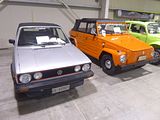
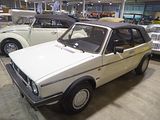
.jpg?width=180&height=120&fit=bounds)
.jpg?width=180&height=120&fit=bounds)
.jpg?width=180&height=120&fit=bounds)
.jpg?width=180&height=120&fit=bounds)
.jpg?width=180&height=160&fit=bounds)
.jpg?width=180&height=120&fit=bounds)
.jpg?width=180&height=120&fit=bounds)
.jpg?width=180&height=120&fit=bounds)
.jpg?width=180&height=120&fit=bounds)
